FLAYING FATHER, 2018 - ongoing
FLAYING FATHER, an ongoing cycle, reappraises the ‘founding’ figures and principles of our nation, specifically the five of our first seven presidents who owned slaves during their presidencies: George Washington, Thomas Jefferson, James Madison, James Monroe and Andrew Jackson. The faults of our typically revered ‘founders’ are often justified or excused as norms of their times. But other founding fathers like John Adams, abolitionists across races, and the enslaved themselves rejected slavery as a barbaric institution. The capitalist ownership of human beings was never acceptable except to those driven by greed, profit and power—and the acquiescent.
These five presidents enslaved hundreds of people, institutionalizing free labor that generated personal profit and fed our unfathomable national prosperity. The constitutional heritage that our founding fathers forged is indeed foundational to today’s injustices. The system that served their interests still promotes political disenfranchisement, racism, property rights over human rights, and hypocritical rhetoric espousing democratic values. Willingly or unwillingly, we are all invested in this legacy.
‘Flaying’ refers to the hubris of the mythological Marsyas, who competes with and offends Apollo by playing his flute and whipping everyone into a frenzy—an apt metaphor for the incitement of demagogues, then and now. Accounts of his penalty vary—between having his flayed skin nailed to a pine tree or converted into a wine sack. His cruel fate warns against the self-congratulatory myths and actual practices of our nation—and their ominous repercussions.
Figures are drawn in dire conditions, suffering dilemmas of their own making or overcoming circumstances of their servitude. They occupy tableaux of reaping and yielding, exacting and extracting, whether in domestic or work spaces, distant fields and hospitals, or factories and classrooms. Subjects meant to yield, and whose yields only enrich others, become reapers of retribution and restitution. Those who insure their own privilege, through exclusive legal rights, become, in turn, subject to unflinching scrutiny.
These works expose a false hagiography, through the viscera of avarice, organs of oppression, cavities of omission, tumors of hubris and sinews of hatred. Multiple operations are necessary to make us whole, with sutures of reparations for an authentic justice.
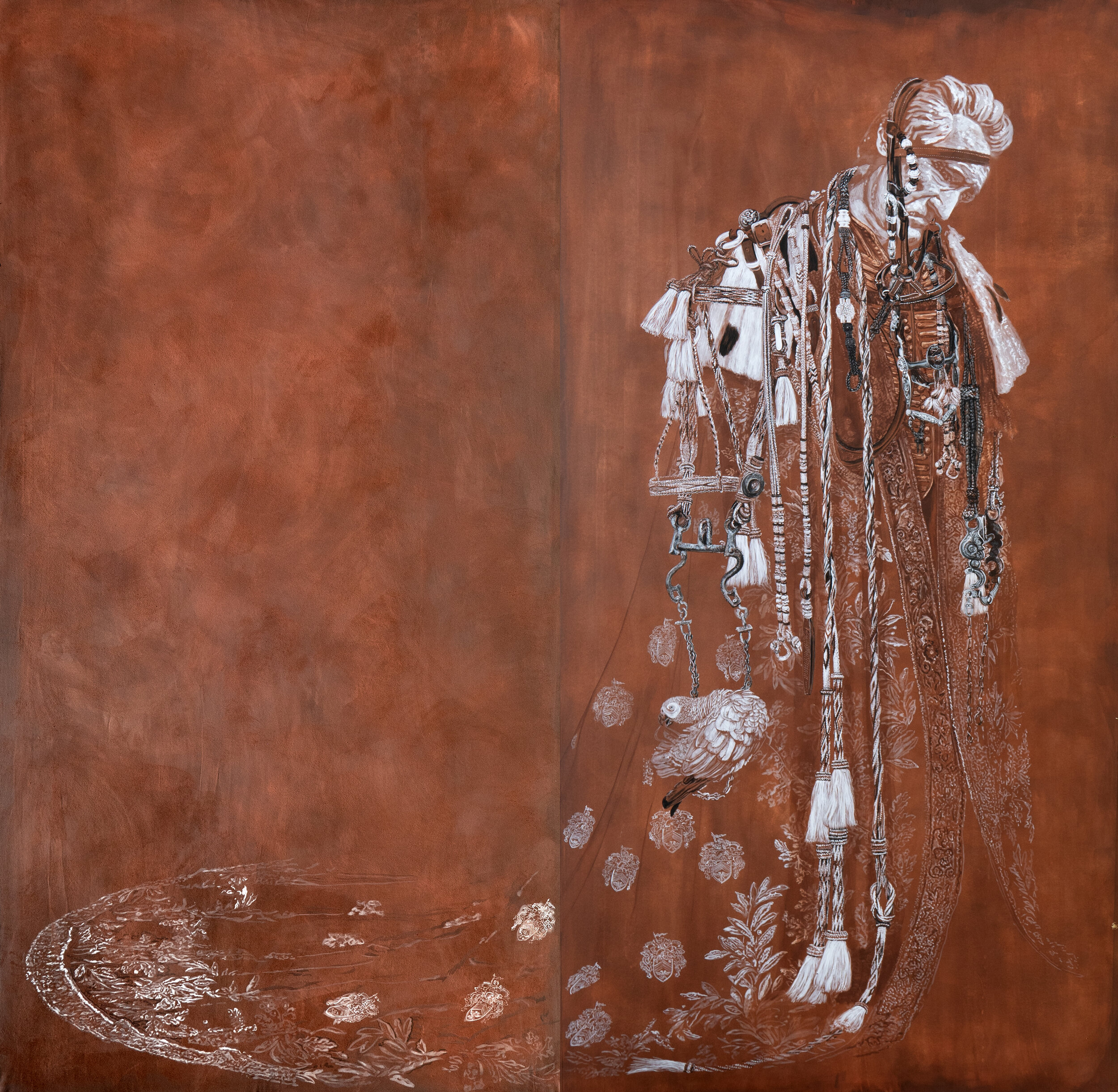
JACKSON REINS 2020
Gouache, dry pigment and gum arabic on two pieces of paper, 114 x 114 inches.
The Indian Removal Act was signed into law on May 28, 1830, by United States President Andrew Jackson.
The Battle of Horseshoe Bend (also known as Tohopeka, Cholocco Litabixbee, or The Horseshoe), was fought during the War of 1812 in the Mississippi Territory, now central Alabama. On March 27, 1814, United States forces and Indian allies under Major General Andrew Jackson defeated the Red Sticks, a part of the Creek Indian tribe who opposed American expansion, effectively ending the Creek War.
After the battle, Jackson's troops made bridle reins from skin taken from Indian corpses, conducted a body count by cutting off the tips of their noses, and sent their clothing as souvenirs to the "ladies of Tennessee." * Jackson was also known as a “would-be-king” for his abuse of presidential powers during his “reign.”
* Ronald Takaki, A Different Mirror, (Little, Brown 1993), p. 85

JACKSON REINS 2020
Detail of bridle. After the Battle of Horseshoe Bend, Jackson's troops made bridle reins from skin taken from Indian corpses.

JACKSON REINS 2020
Detail of nose straps.
Trump has said Jackson, who led the systematic removal of native Americans two centuries ago, is a personal hero.
From June 2020: "Last night we stopped an attack on a great monument of Andrew Jackson and Lafayette Park," Trump told reporters, adding that "numerous people" are already in jail and more are going "today."
Trump and Jackson share punitive and repressive impulses. As the United States expanded, Jackson opposed policies that would have outlawed slavery in western territories. And when abolitionists attempted to send anti-slavery tracts to the South during his presidency, Jackson helped ban their delivery and called the anti-slavery advocates monsters who should “atone for this wicked attempt with their lives.”
Records show that Jackson beat his enslaved workers, including doling out a brutal public whipping to a woman he felt had been “putting on airs.” And when any of them ran away, he pursued them and put them in chains when they were recovered. In an 1804 newspaper advertisement for a 30-year-old runaway named Tom, he offered an extra $10 for every 100 lashes doled out to the escapee.
In response to people protesting against racist monuments, Trump has threatened:"We are looking at long term jail sentences for these vandals, hoodlums, anarchists and agitators. Some people don't like that language, but that's what they are: Bad people. They don't love our country, and they're not taking down our monuments," he said. "I just want that to be clear."
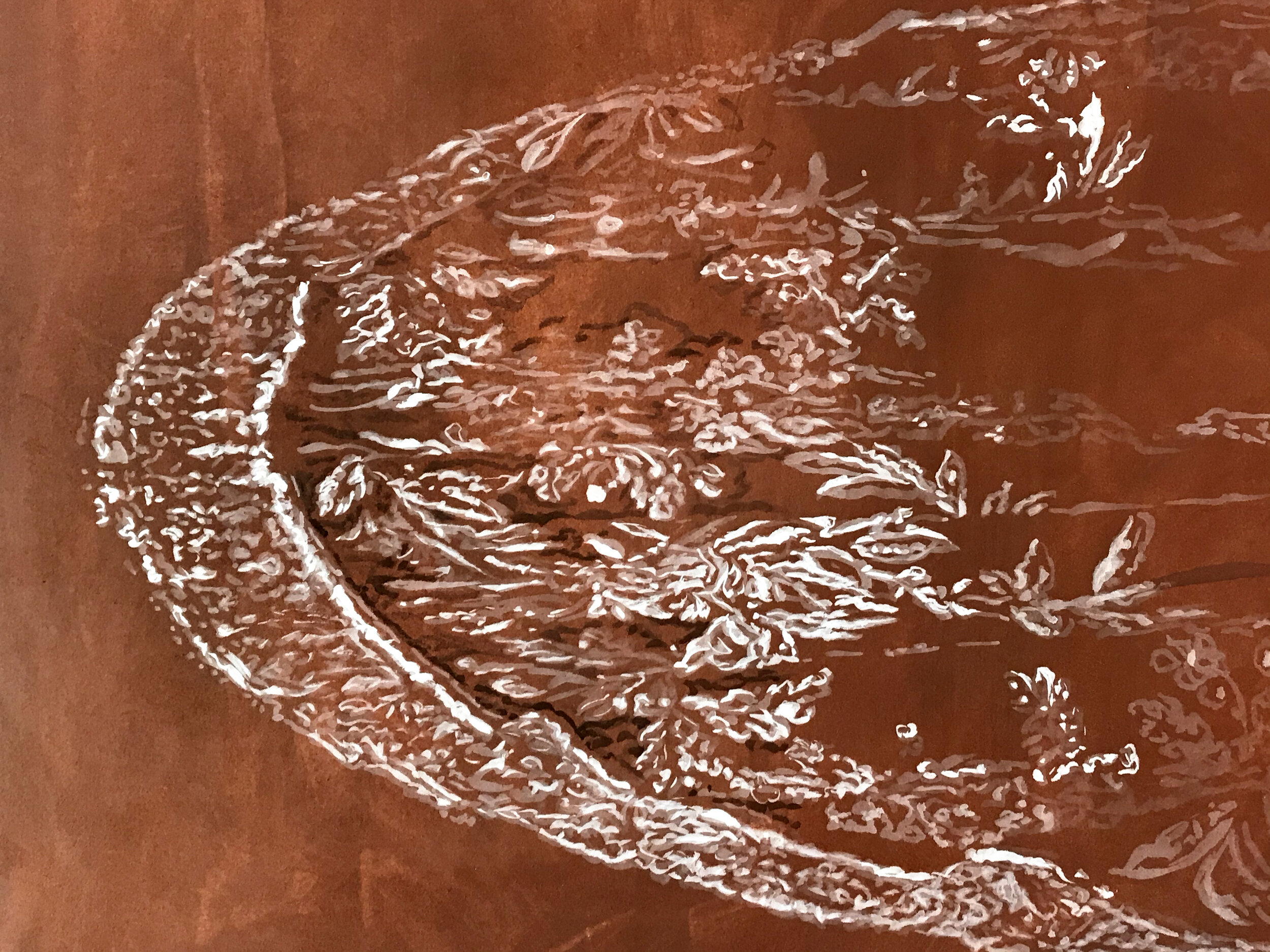
JACKSON REINS 2020
Detail of Jackson’s train…
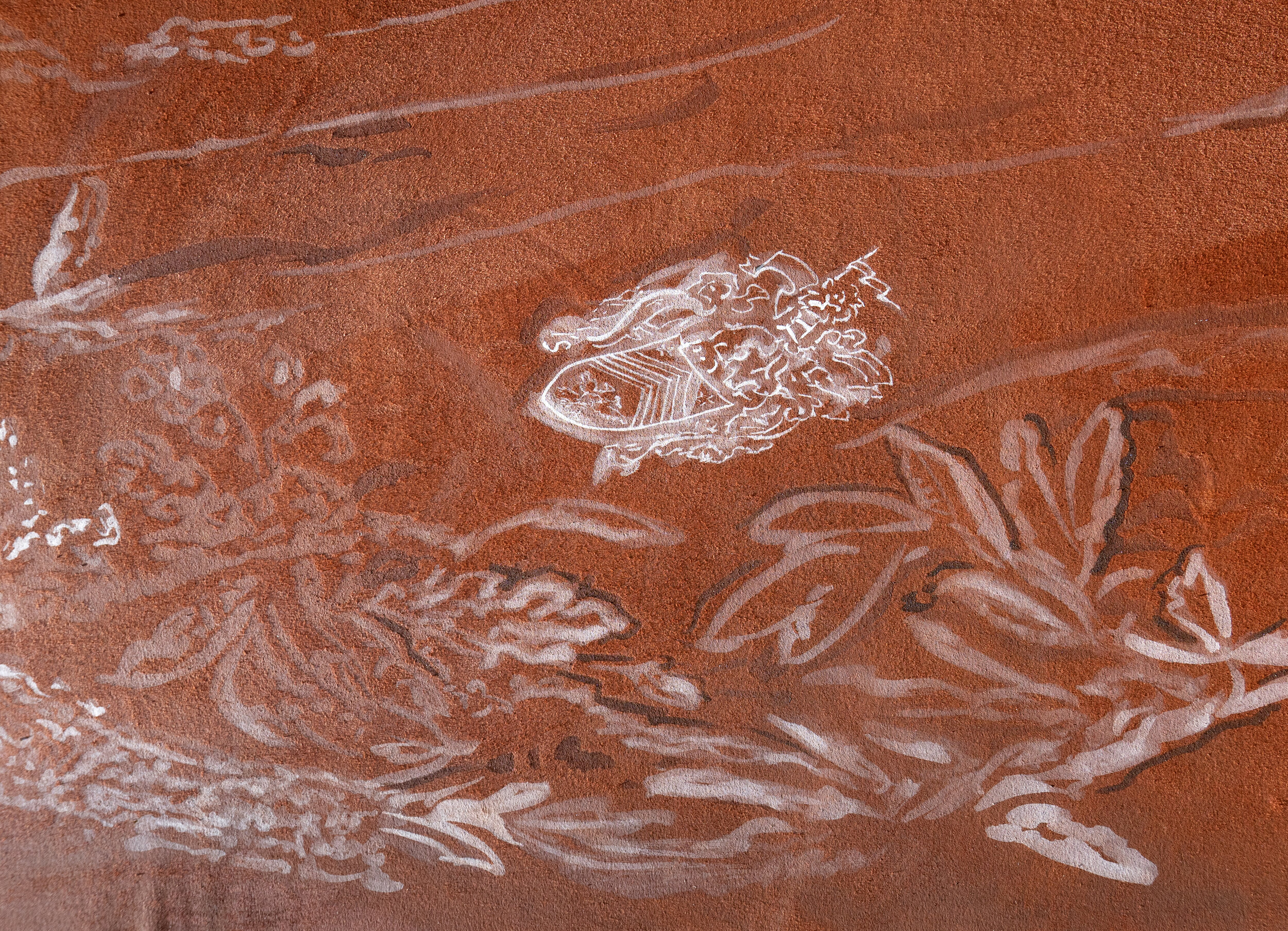
JACKSON REINS 2020
Detail of an invented (and originally unregistered) coat-of-arms used to lend prestige to Trump’s golf resort in Aberdeen, Scotland. It features a shield with an eagle clutching three golf balls and the slogan Numquam concedere, which translates to “never give up” or “never concede.”
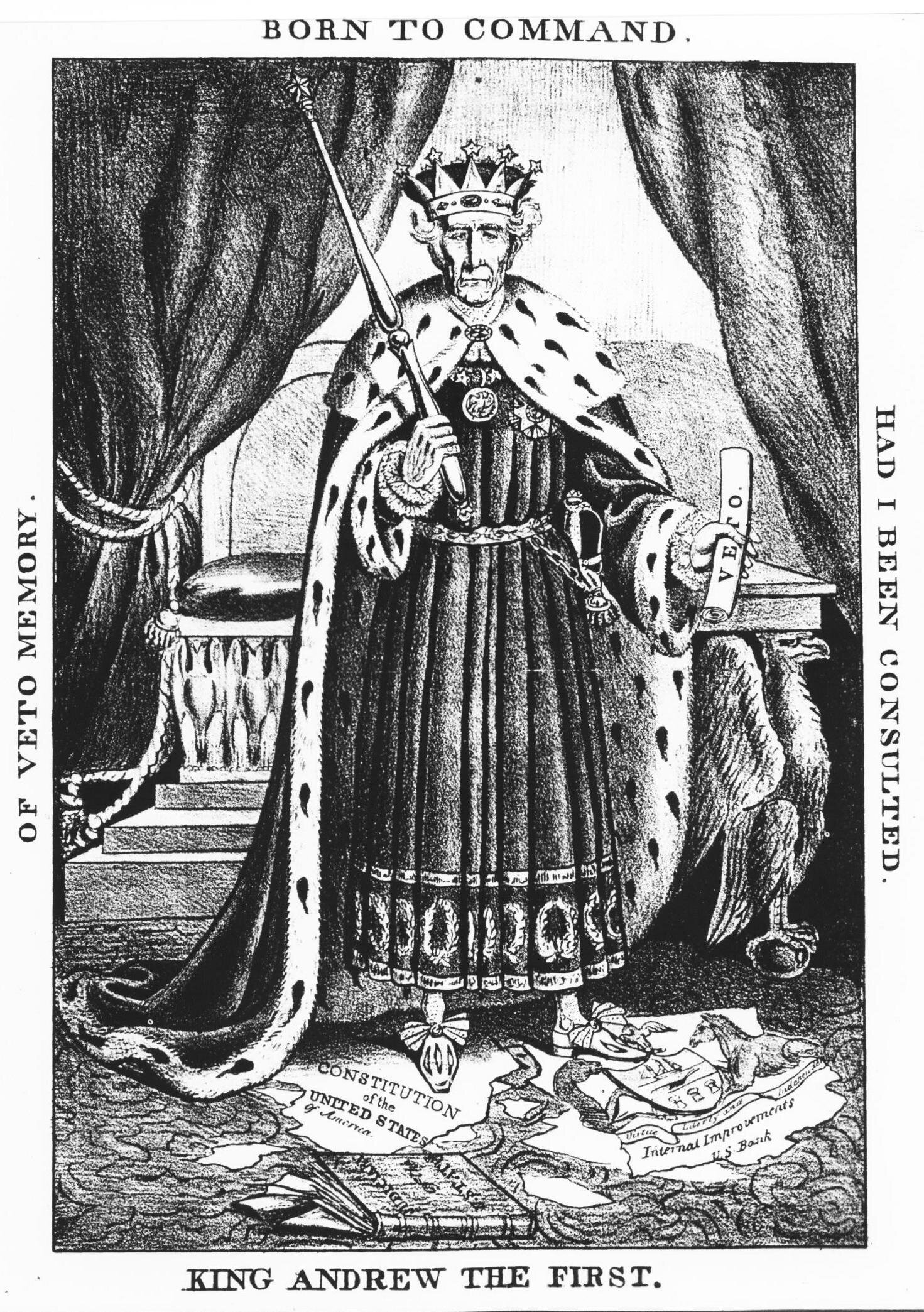
KING ANDREW THE FIRST circa 1832
King Andrew the First is a cartoon depicting Andrew Jackson, the 7th United States president, as a “would-be-king” because opposers often viewed him as an abuser of his presidential powers. The creator of the cartoon is unknown. It was used to support presidential campaigns opposing Jackson.
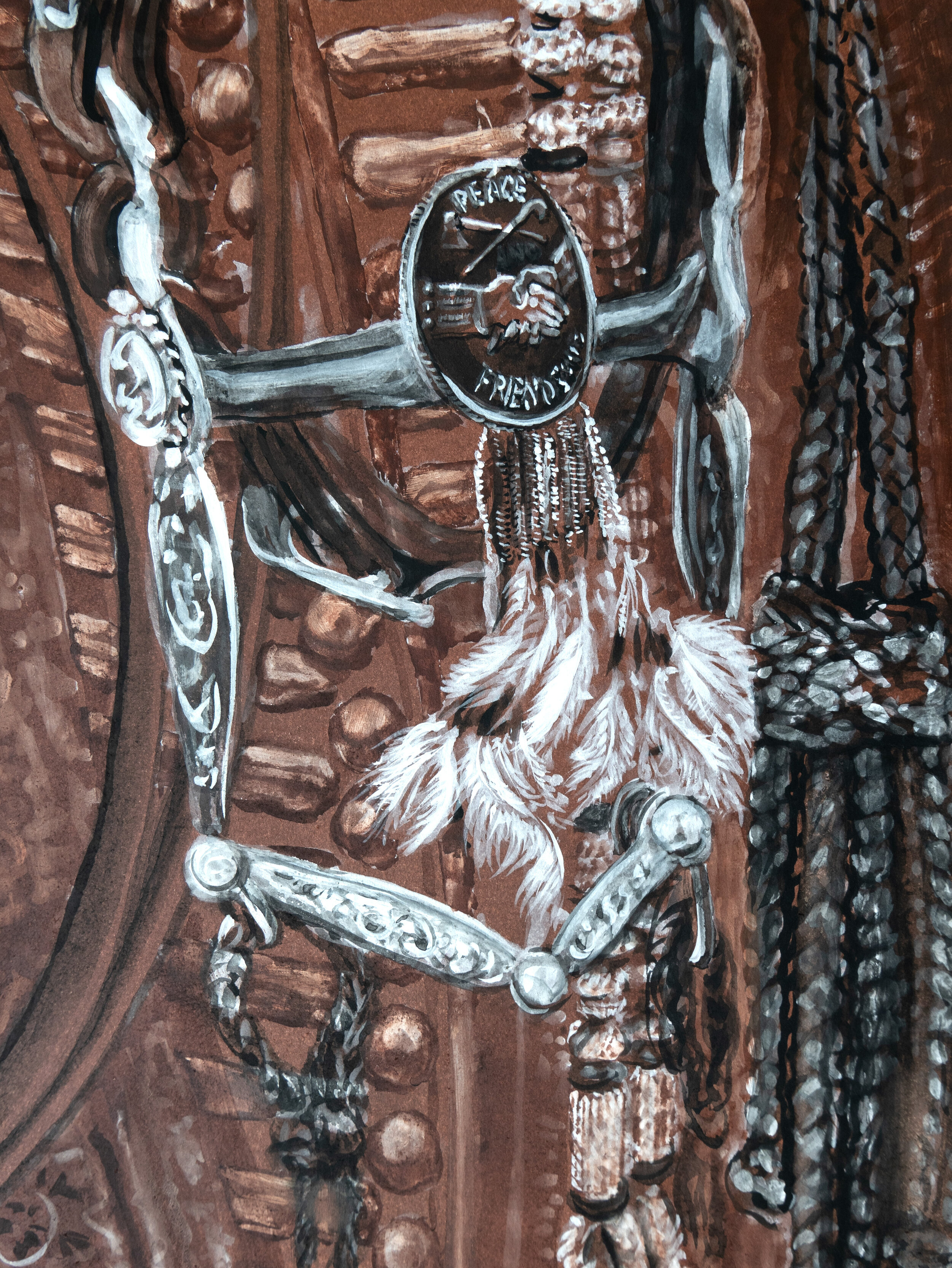
JACKSON REINS
Detail of Peace and Friendship Medallion
“In March 1814, Jackson tracked the Red Sticks to Horseshoe Bend, a peninsula formed by the Tallapoosa River in what is now Alabama, and launched a frontal assault on their breastworks. His troops might have been repulsed had the Cherokees not crossed the river and attacked from the rear. Caught between two attacking forces, the Red Sticks lost nearly 900 warriors in what proved to be the decisive battle of the war.
That day, a Cherokee named Junaluska saved Jackson from an attacker, prompting the Tennessean to declare, “As long as the sun shines and the grass grows, there shall be friendship between us.” But in the peace treaty he negotiated with the Creeks, Jackson confiscated 23 million acres of land in Alabama and Georgia—some of which belonged to the Cherokees.”
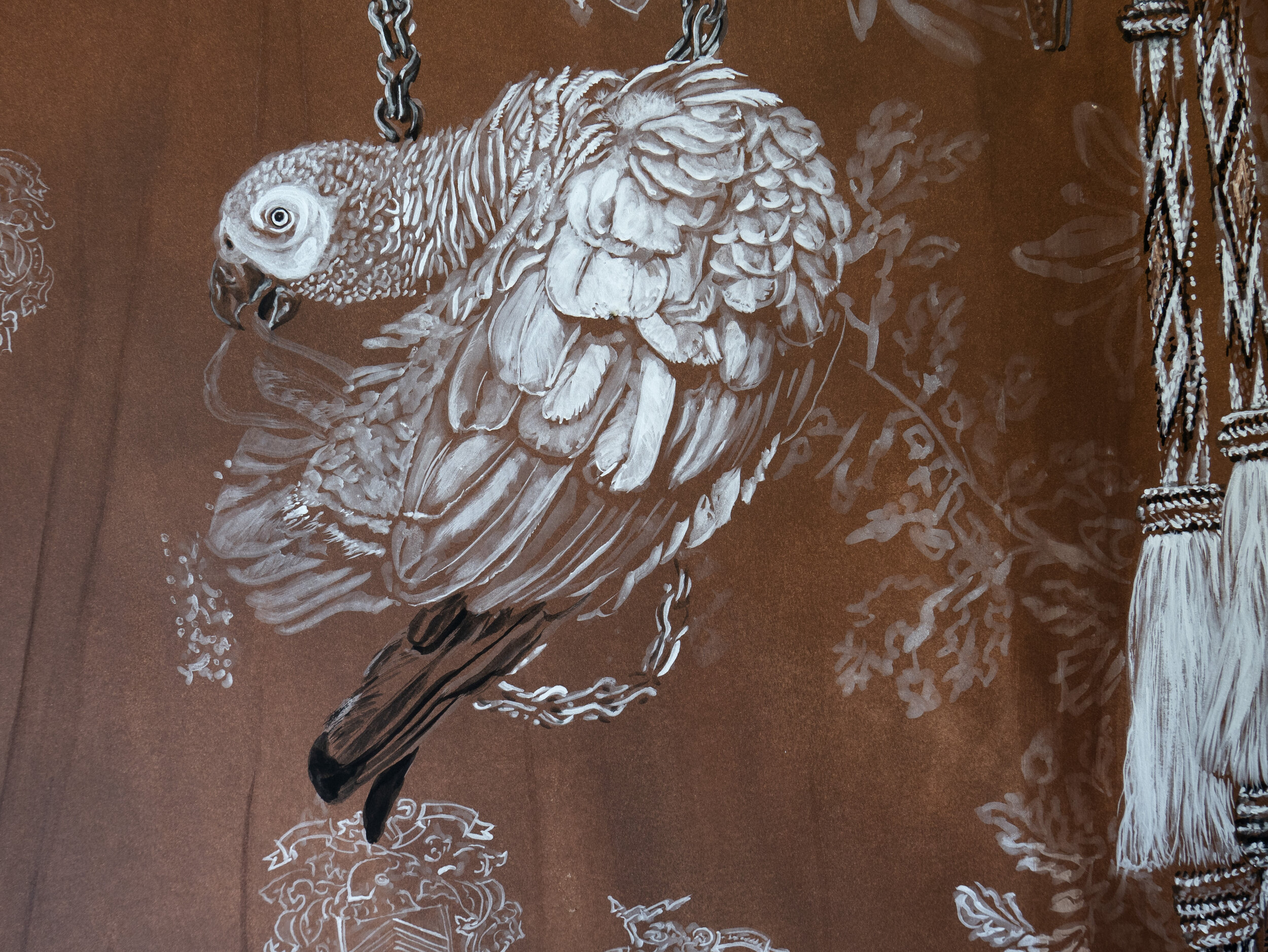
JACKSON REINS 2020
Detail of Poll, an African grey parrot given to Andrew Jackson’s wife Rachel. Jackson became its caretaker after her death. The bird apparently spewed foul language and curses learned from Jackson.
According to Rev. William Menefee Norment, who presided at Jackson’s funeral, “before the sermon and while the crowd was gathering, a wicked parrot that was a household pet got excited and commenced swearing so loud and long as to disturb the people and had to be carried from the house.”*
*Volume 3 of Samuel G. Heiskell’s Andrew Jackson and Early Tennessee History.
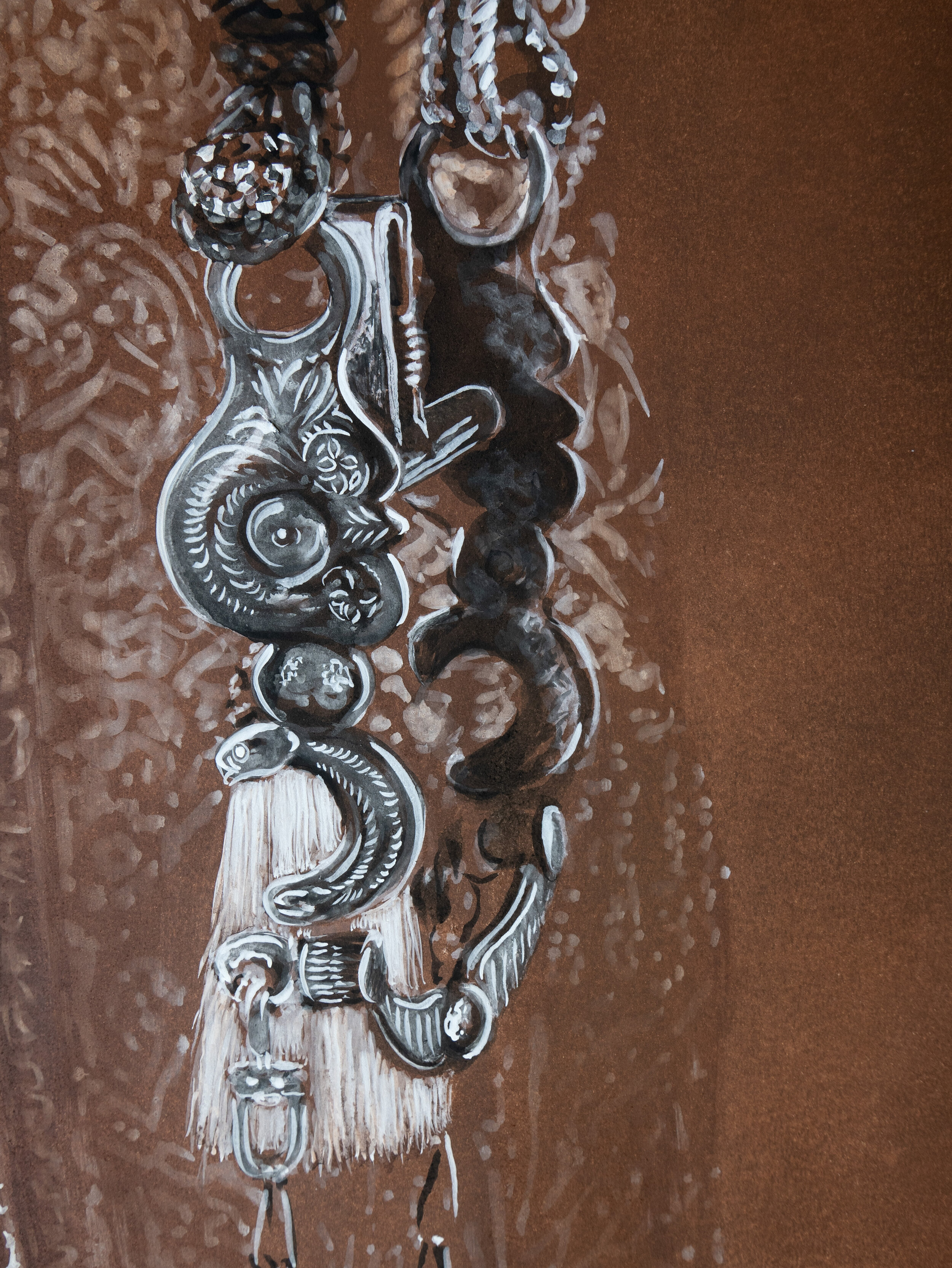
JACKSON REINS 2020
Detail of stirrup with snake motif. Jackson spoke with a forked tongue in his genocidal treatment of Native Americans.
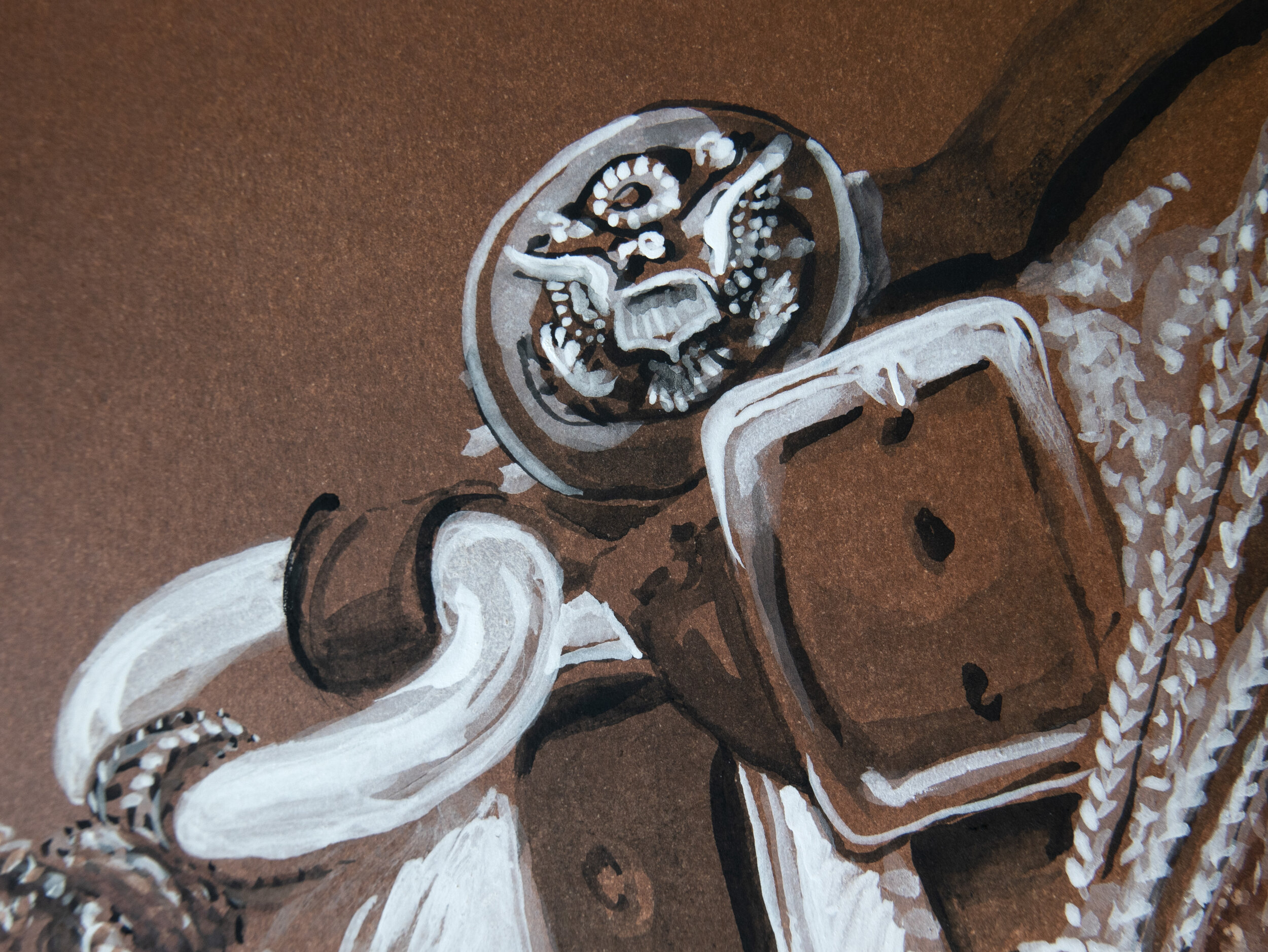
JACKSON REINS 2020
Detail of buckle and embossed button.
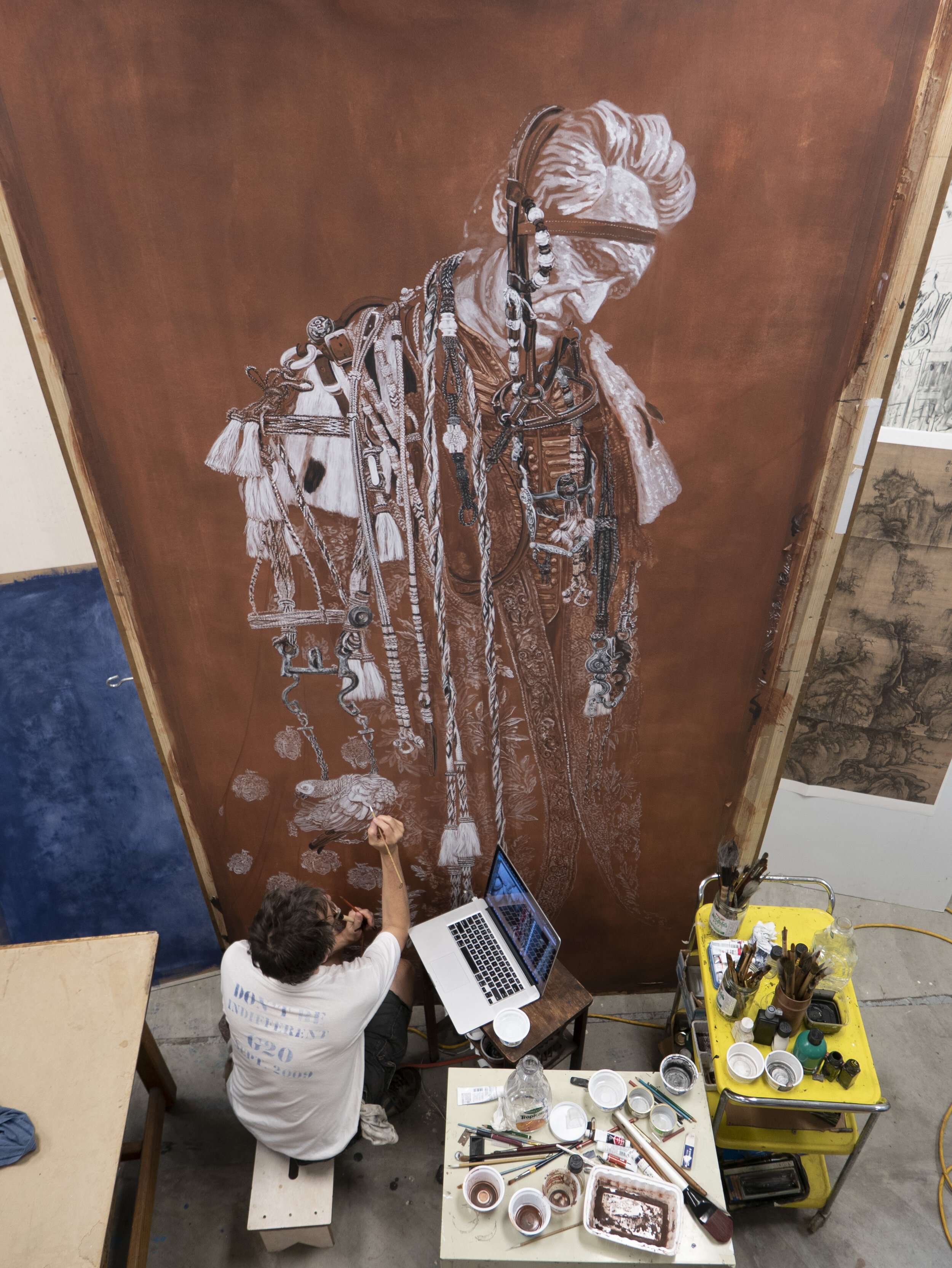
JACKSON REINS 2020
In-progress studio shot.
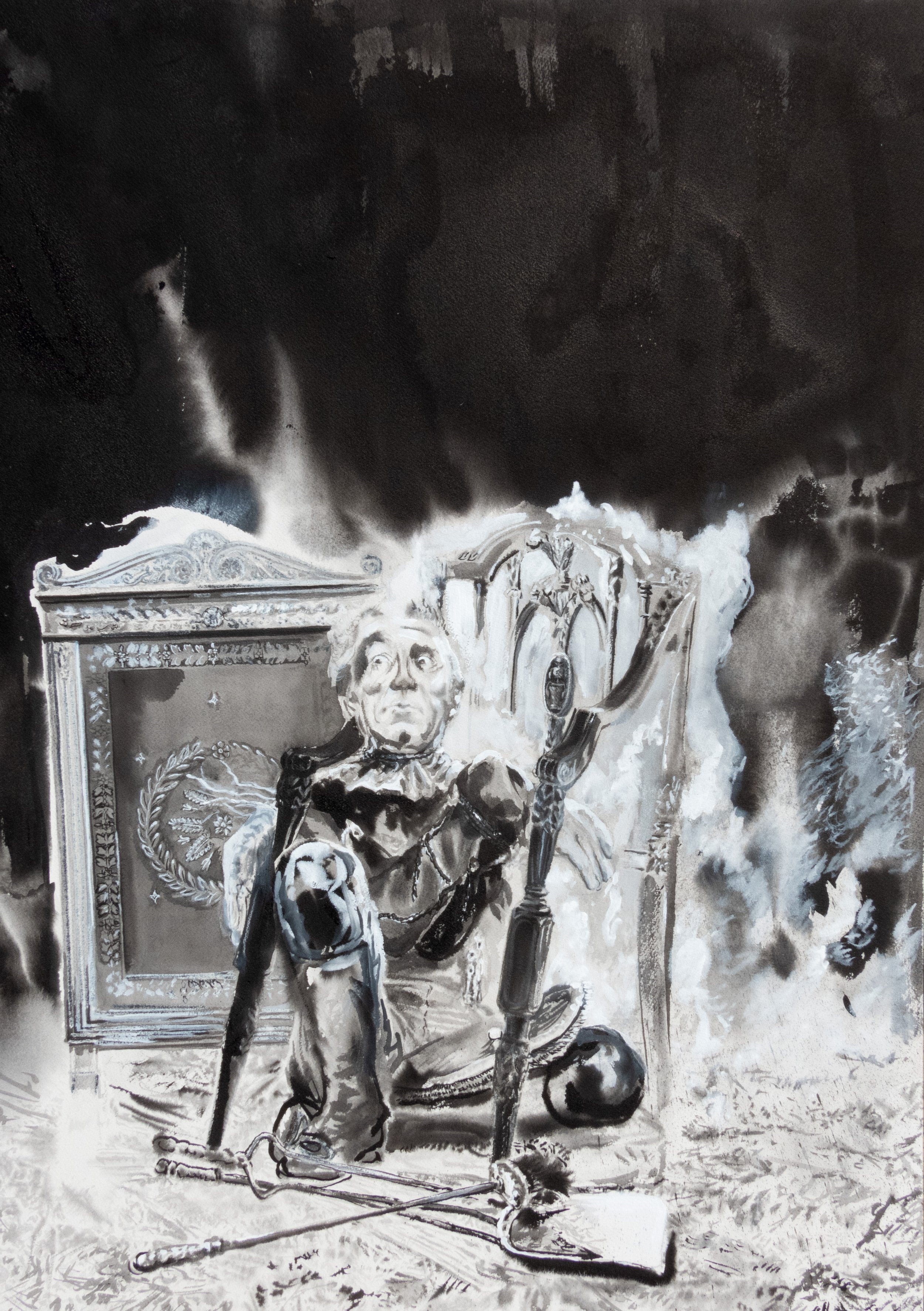
NEWLY ACQUIRED FIRE SCREEN 2023
Ink and gouache on paper, 32 x 23.25 inches
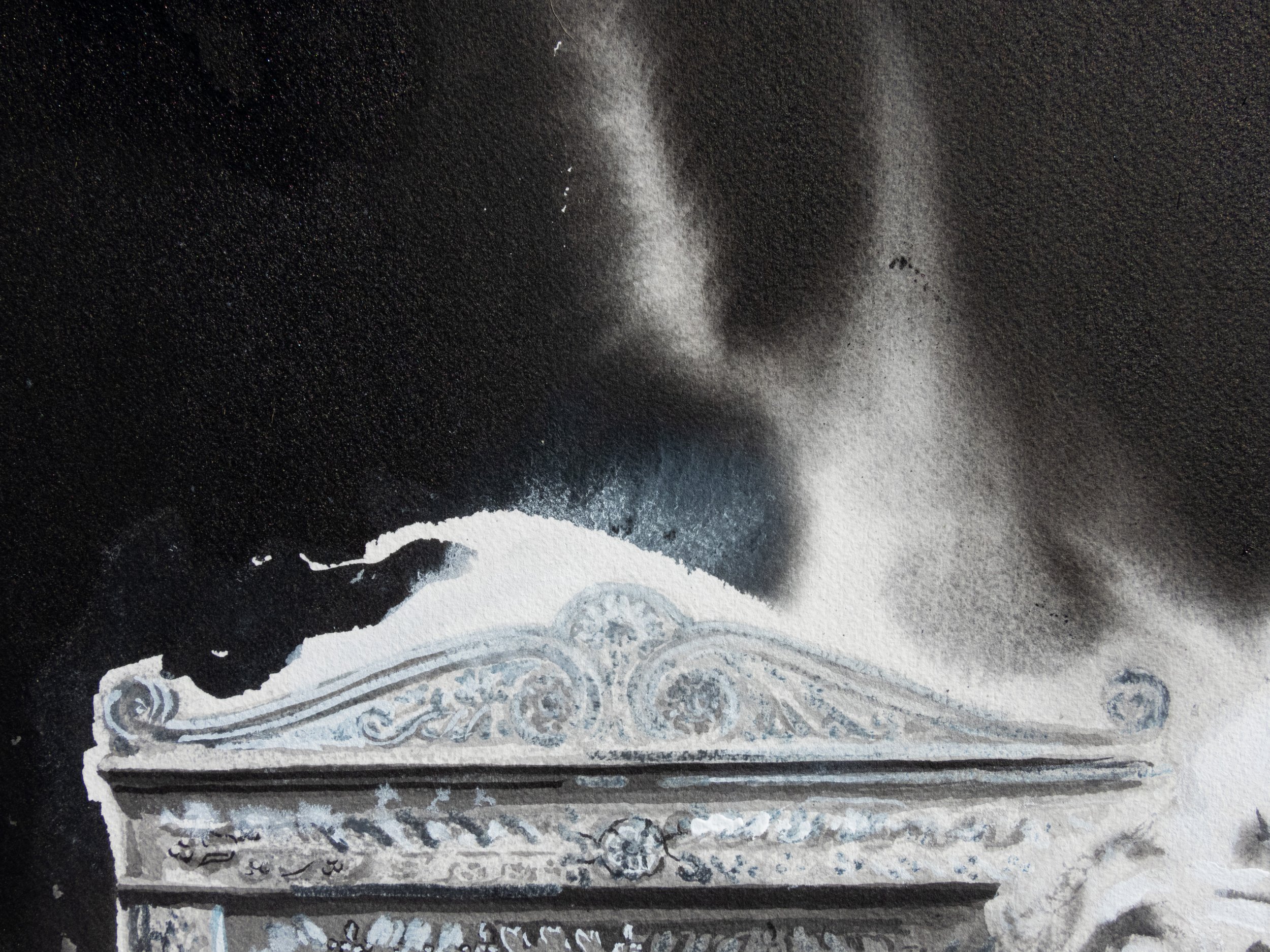
DETAIL: NEWLY ACQUIRED FIRE SCREEN 2023
Screen
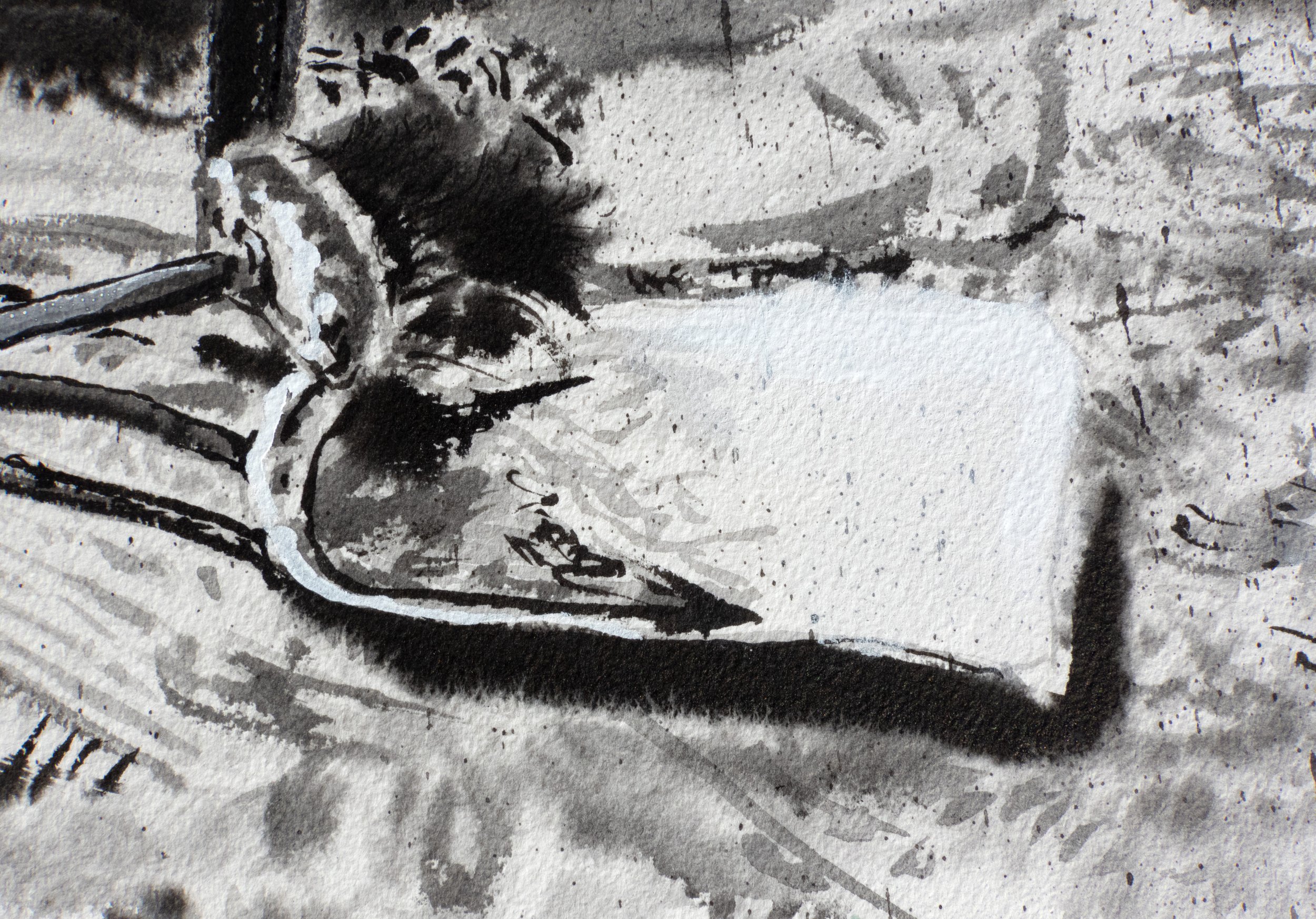
DETAIL: NEWLY ACQUIRED FIRE SCREEN 2023
Fireplace shovel and broom
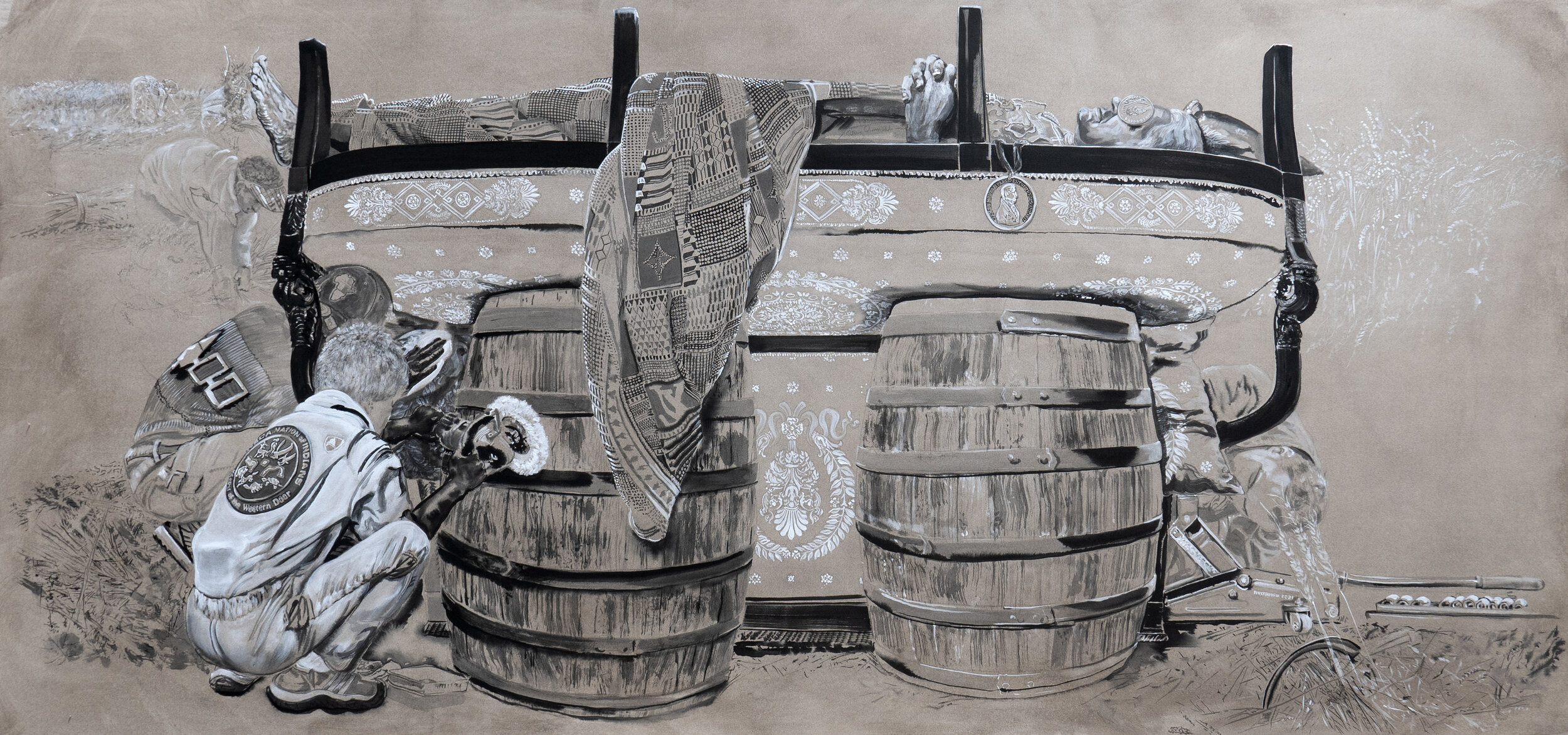
PASSAGE TO LIBERIA 2021
Ink and gouache on paper, 57 x 114 inches
Monrovia, Liberia is named after James Monroe because he favored the region’s colonization, and supported the American Colonization Society, which advocated forced expatriation—the “resettling” of freed blacks to West Africa. The eponymous Monroe Doctrine was an American Imperialist foreign policy position that hypocritically opposed European colonialism in the Western Hemisphere. It was a declaration of hegemony and a right of unilateral intervention over the Americas. Any doctrine is a body of principles, but the body of principals – people whose land, labor and lives were exploited, is the focus here.
Democratic values espoused for a minority have long been justifications to retain oligarchic privilege. By design, the ‘new world’ imported European aspirations for, and the inequities of, empire, along with furniture and jewelry. Monroe, who enslaved up to 250 people in his lifetime, lies in state on a funeral bier improvised from an overturned sofa. It is from the Bellangé collection of furniture he ordered for the White House Oval Room (now the Blue Room). Surrounding him are ‘principals’—boys burnishing and polishing a barrel and the precious furniture. They wear shirts with logos of the Seneca Nation of Indians: Keepers of the Western Door and the Iroquois Nation, a Liberty Bell patch, and a cap with a patch of the African continent.
An incomplete account of Monroe’s presidency can be read here.
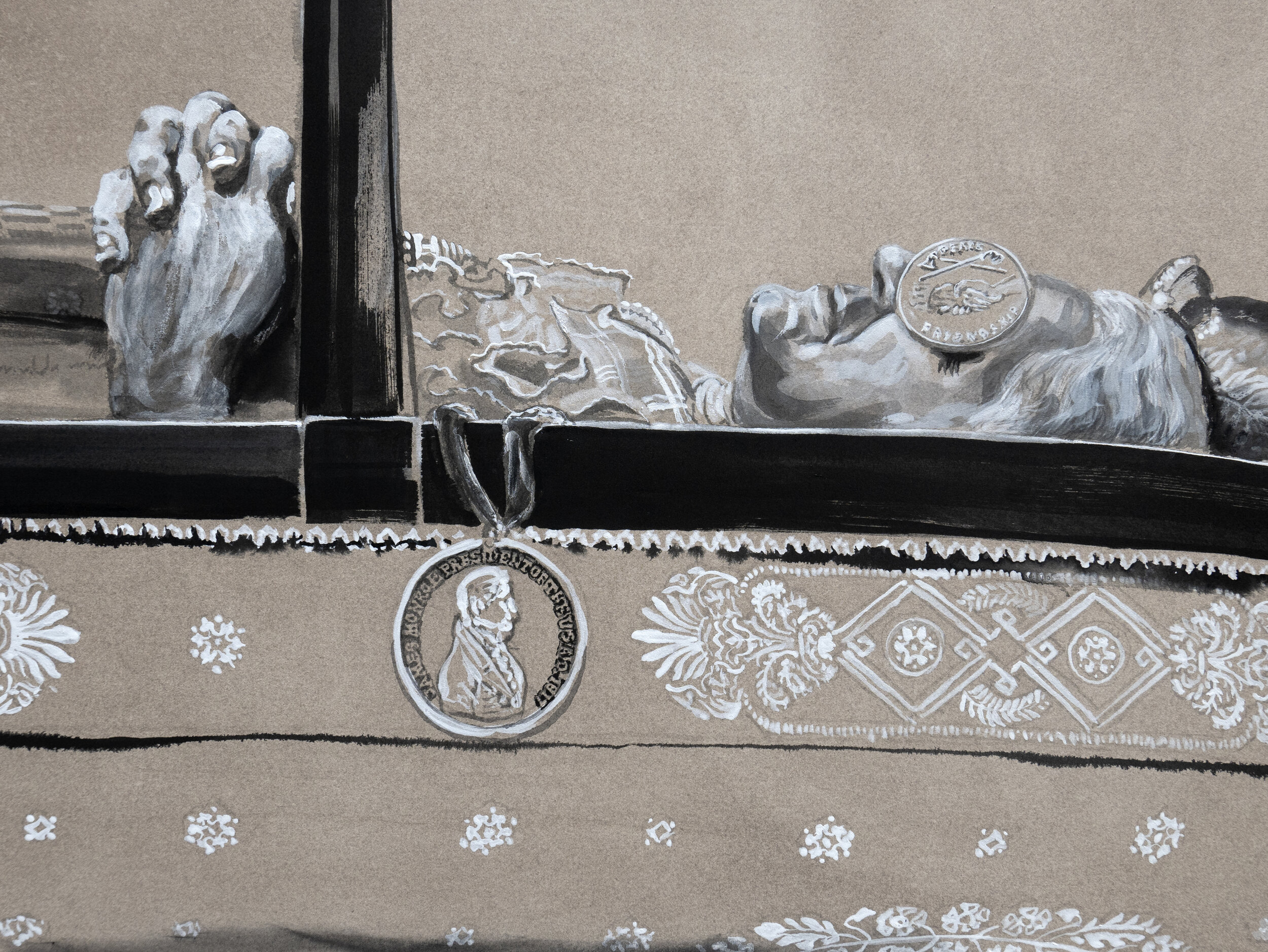
PASSAGE TO LIBERIA 2021
Detail of James Monroe on funerary bier with Peace and Friendship medallions, Ink and gouache on paper, 57 x 114 inches
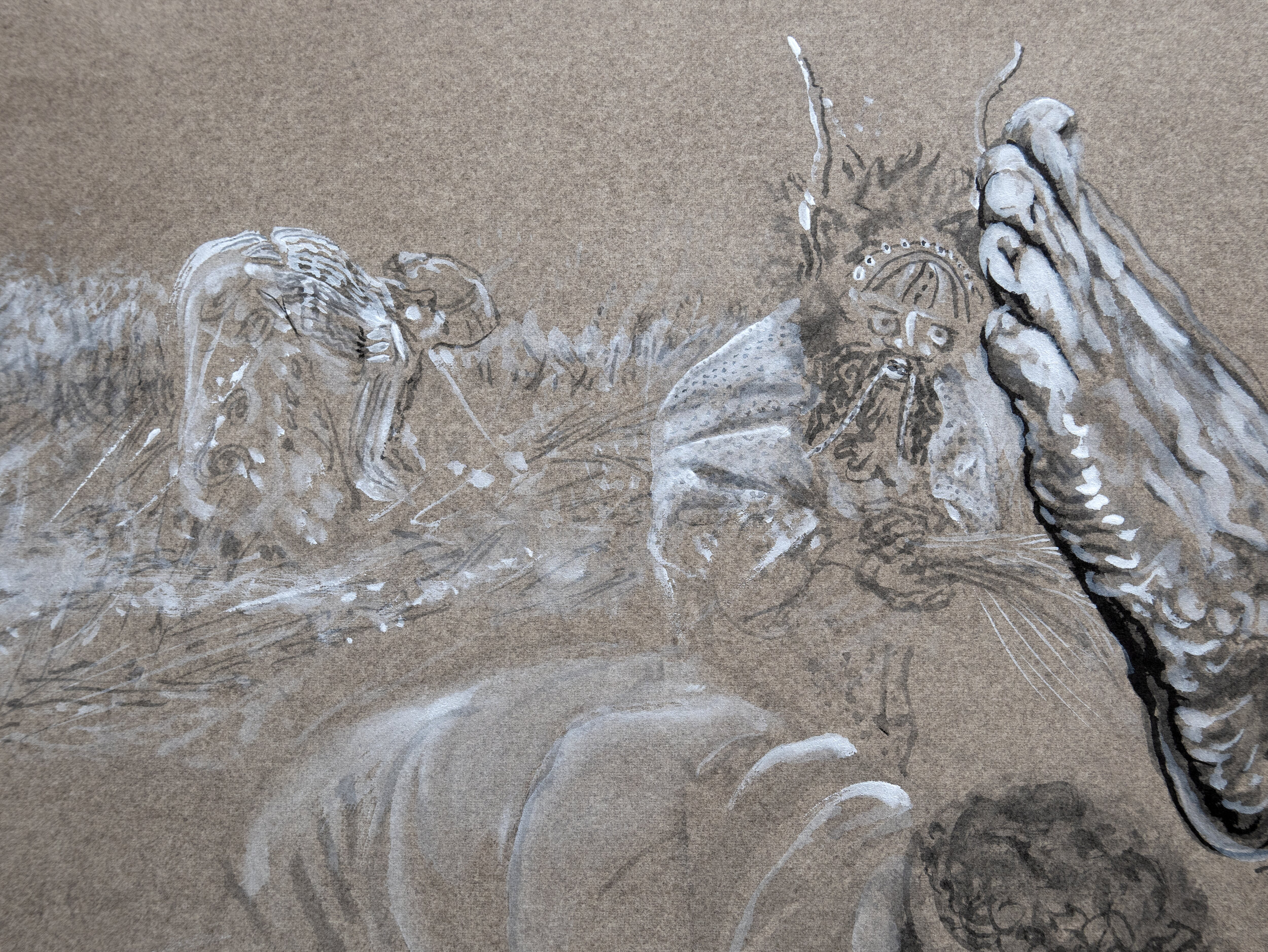
PASSAGE TO LIBERIA 2021
Detail of Fieldworkers with a Harvest God, Ink and gouache on paper, 57 x 114 inches
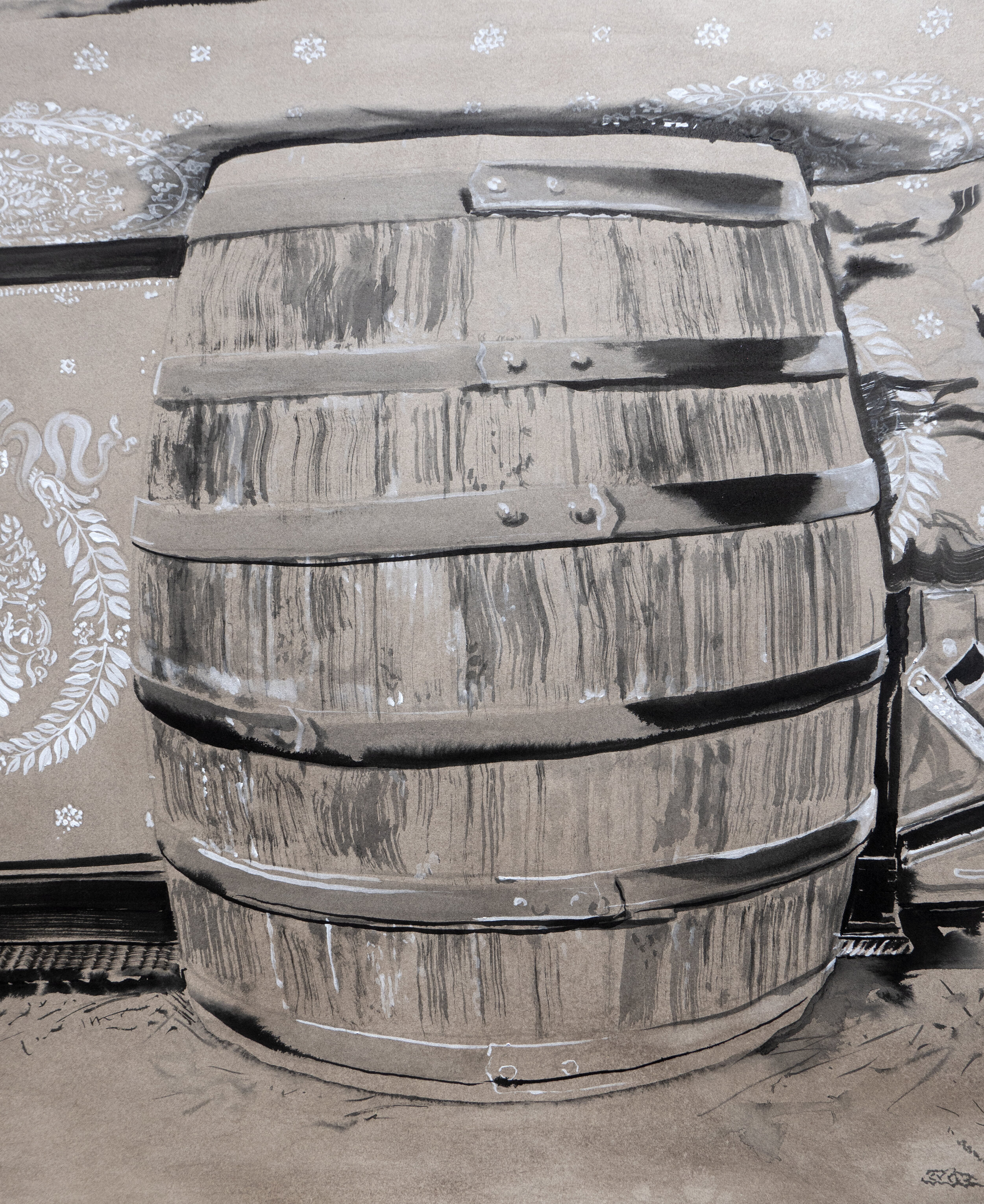
PASSAGE TO LIBERIA 2021
Detail (Foundation of Innocence) Ink and gouache on paper, 57 x 114 inches
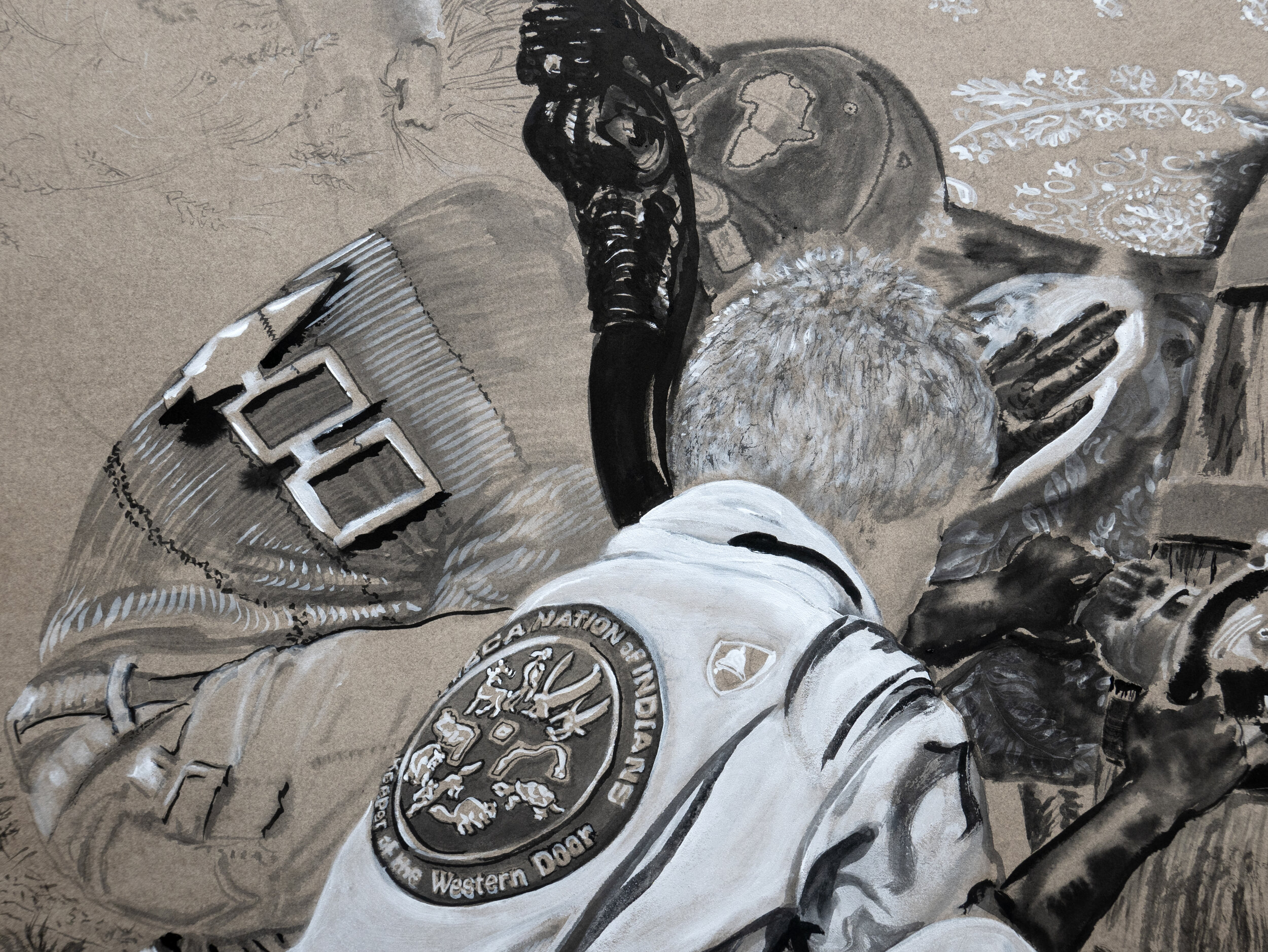
PASSAGE TO LIBERIA 2021
Detail of boys burnishing and polishing barrel and Bellangé furniture, wearing shirts with logos of the Seneca Nation of Indians: Keepers of the Western Door and Iroquois Nation, Liberty Bell patch, and cap with African continent
Ink and gouache on paper, 57 x 114 inches
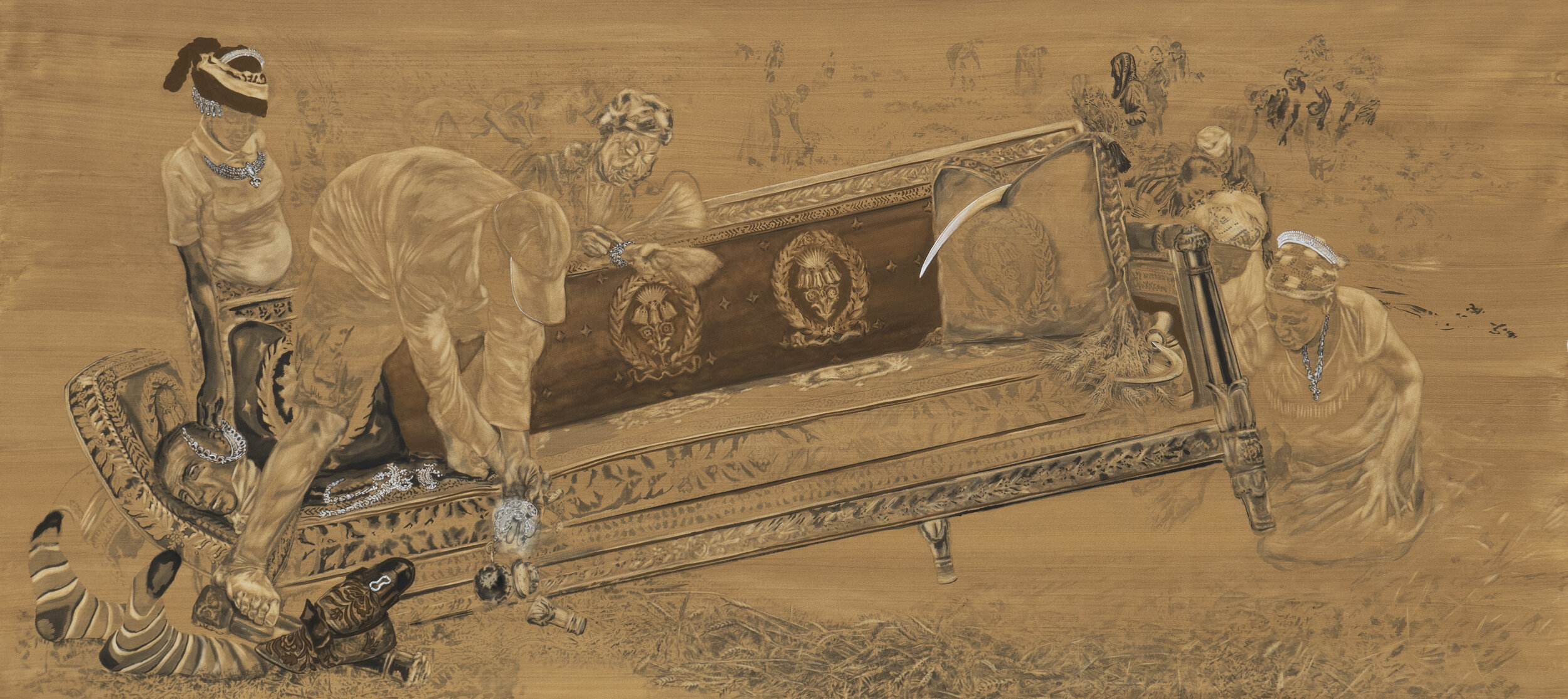
BODY OF PRINCIPLES 2021
Ink and gouache on paper, 57 x 114 inches
The fifth president James Monroe is decapitated—along with the mind that developed his eponymous doctrine. A doctrine is a body of principles. But the body of principals, people whose land, labor and lives were exploited, is primary. Their expropriated lands grow wheat for domestic and international trade, supplanting tobacco. Timing is everything in this field of reaping and harvesting.
Democratic values espoused for a minority were justifications to retain oligarchic privilege. By design, the ‘new world’ imported European aspirations for, and the inequities of, empire, along with furniture and jewelry. Elizabeth Monroe’s finery and her husband’s Bellangé furniture cascade and crumble, tassels quake, and the glaringly obvious is uncovered. Sheaves are still borne.
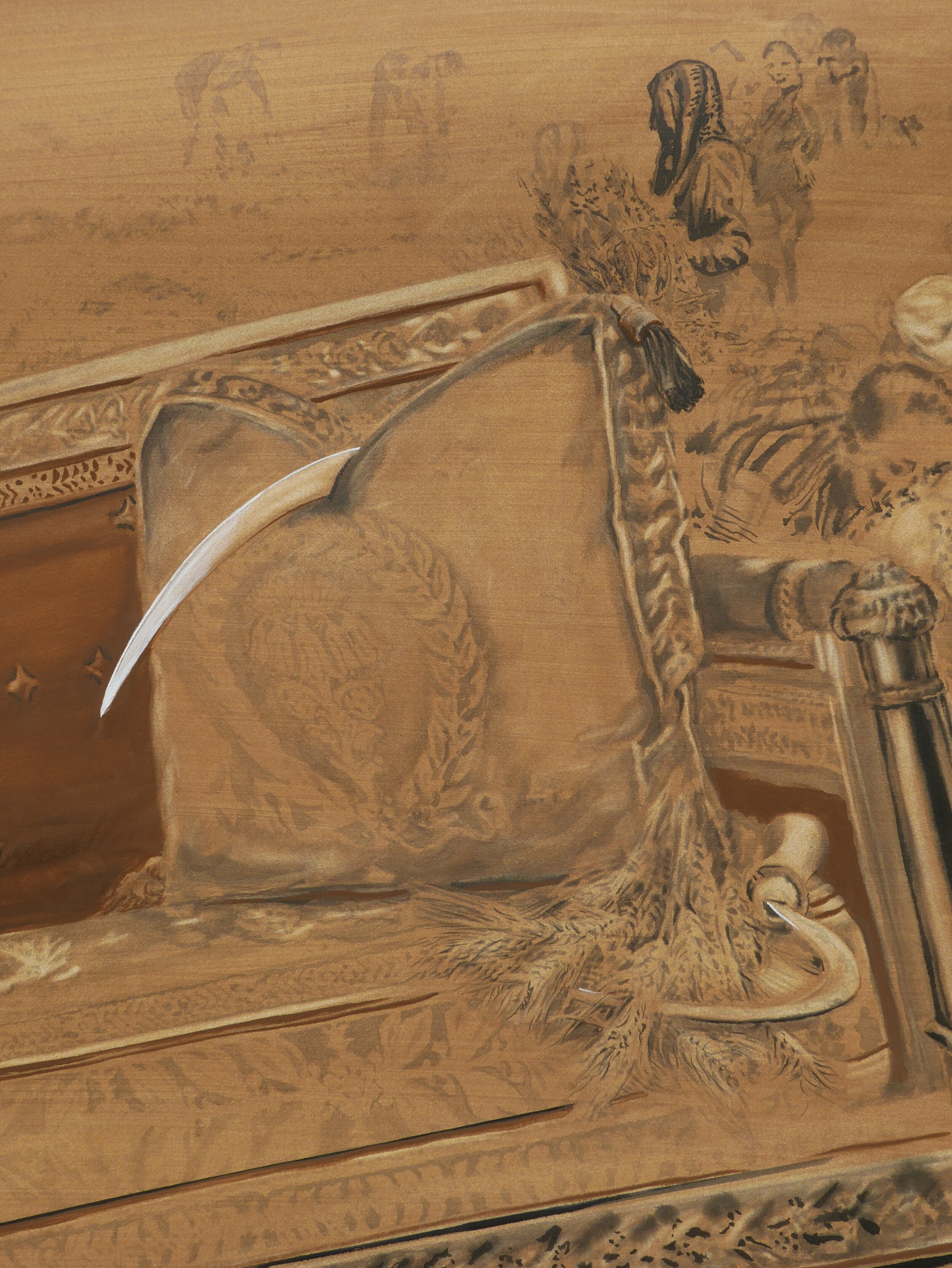
BODY OF PRINCIPLES 2021
Detail of The Thriving
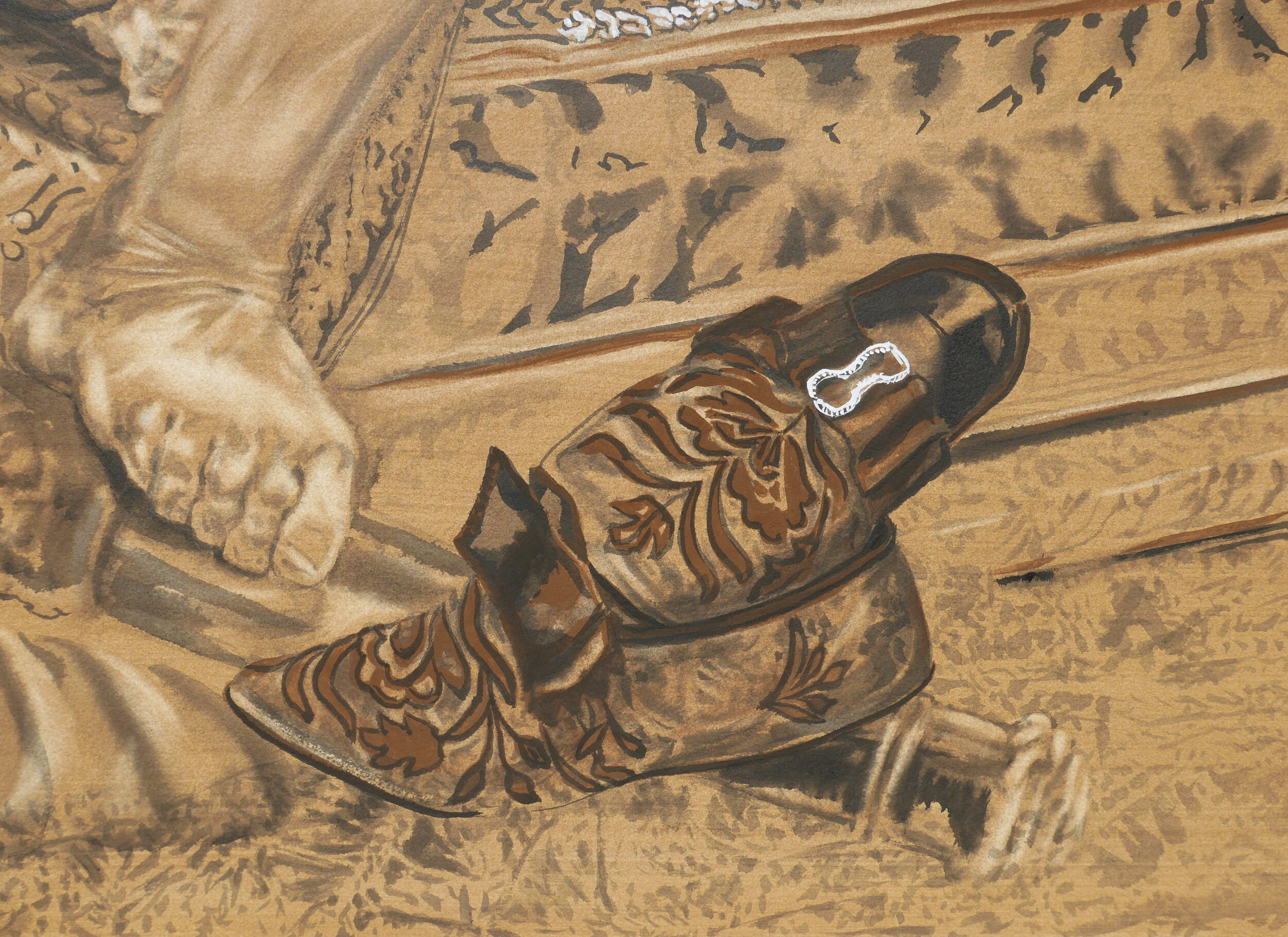
BODY OF PRINCIPLES 2021
Detail: Three clicks to home
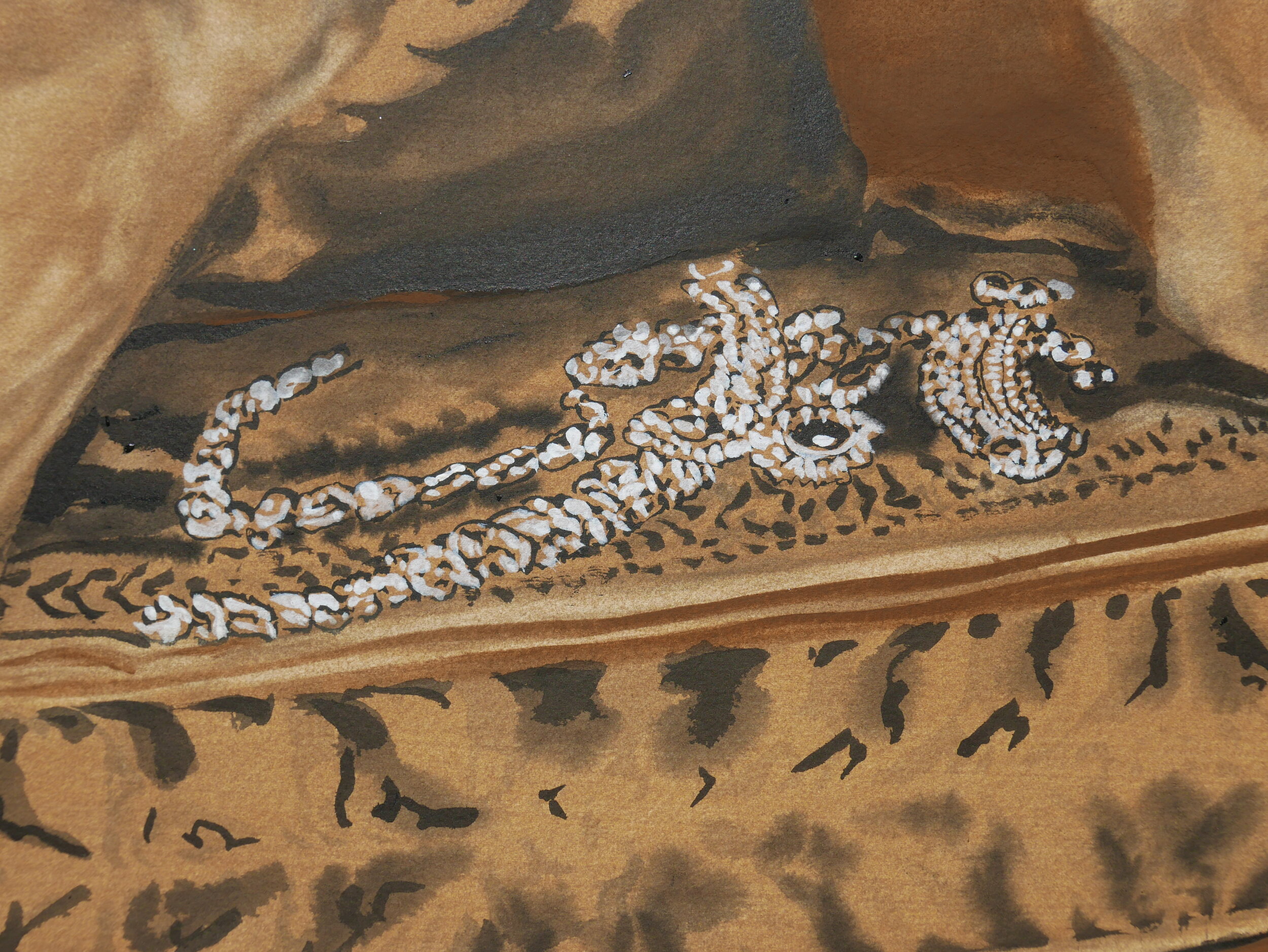
BODY OF PRINCIPLES 2021
Detail: Elizabeth Monroe’s adornments
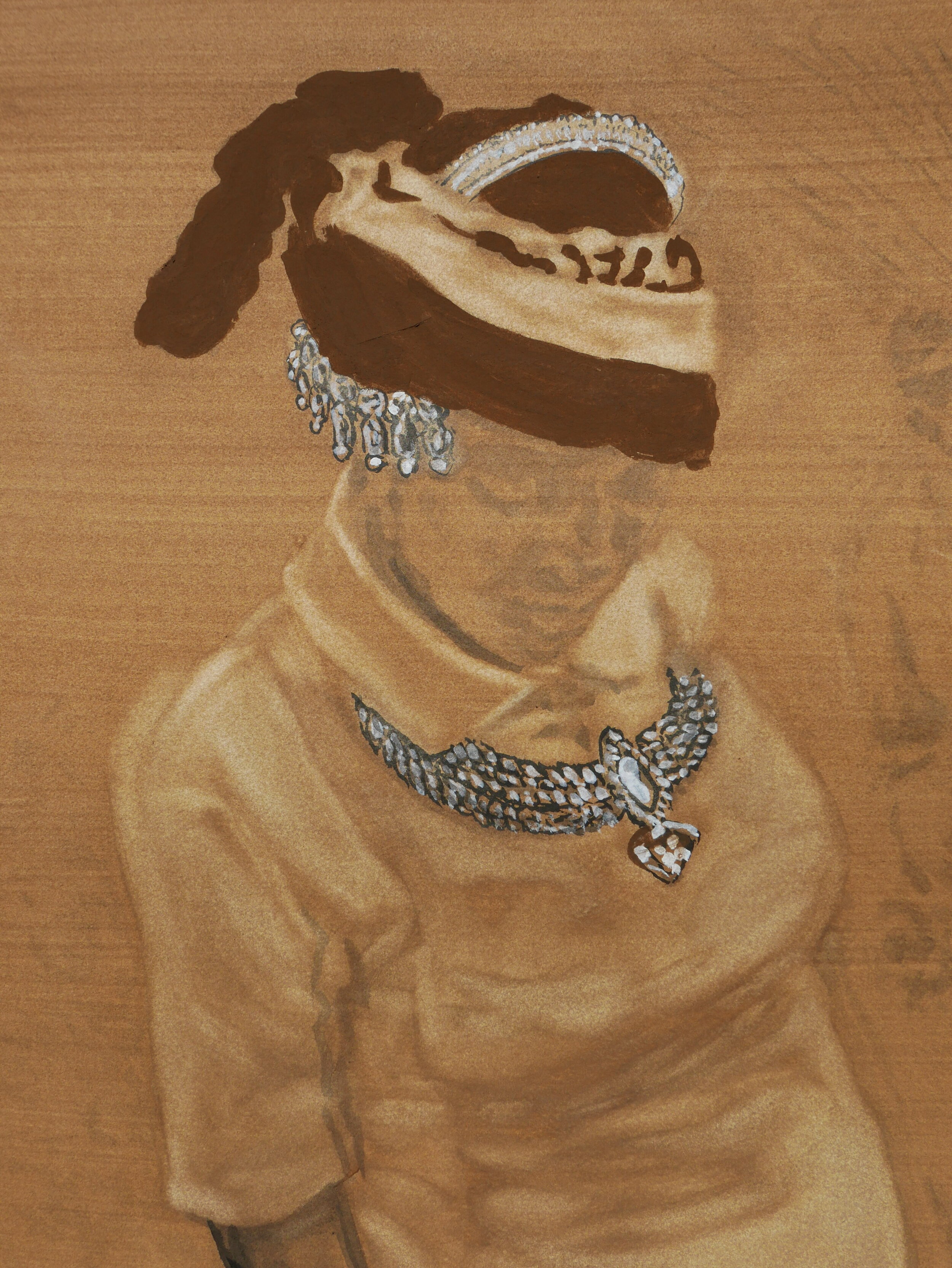
BODY OF PRINCIPLES 2021
Detail: After Visitation
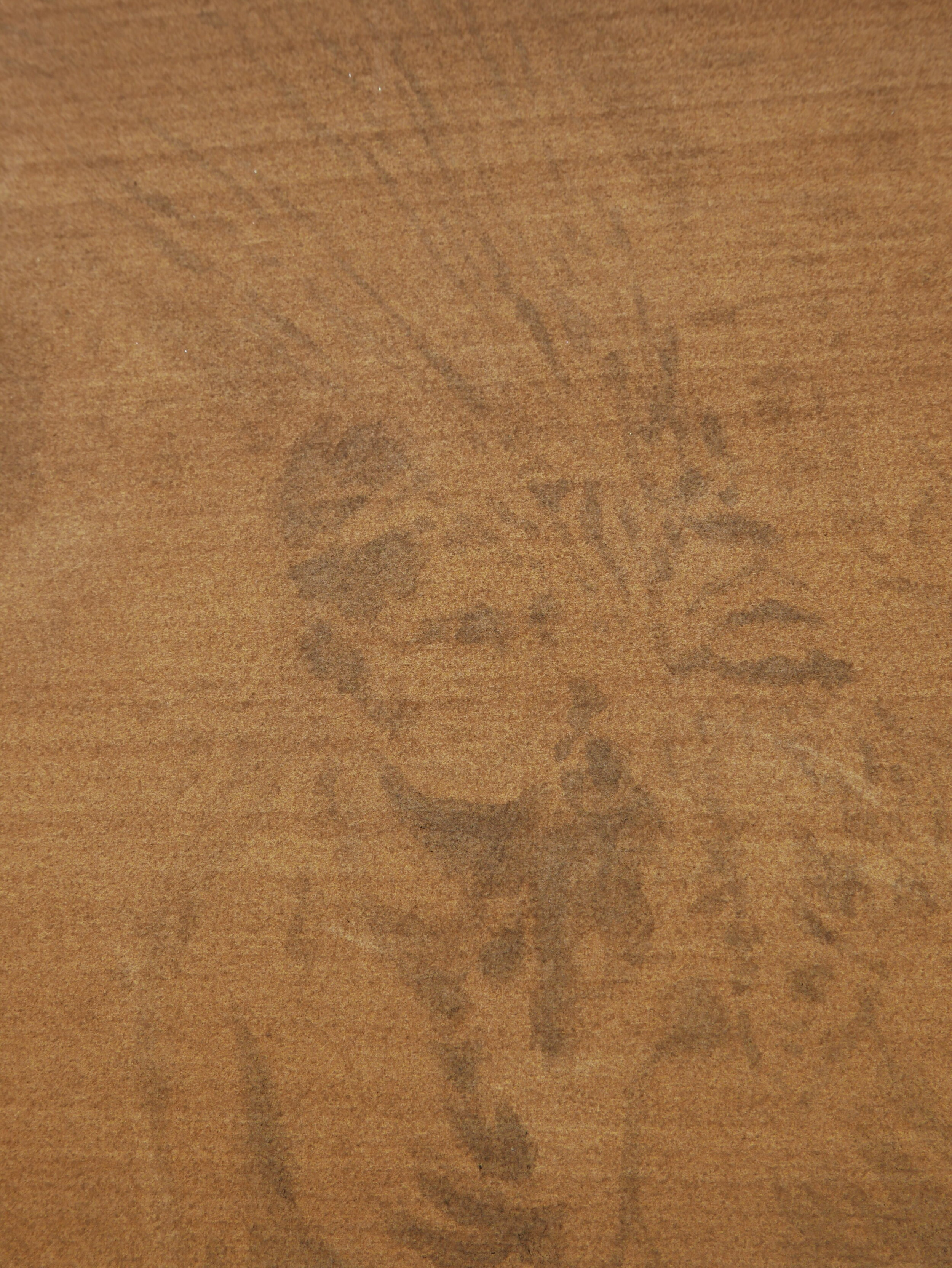
BODY OF PRINCIPLES 2021
Detail: Sheaf mask
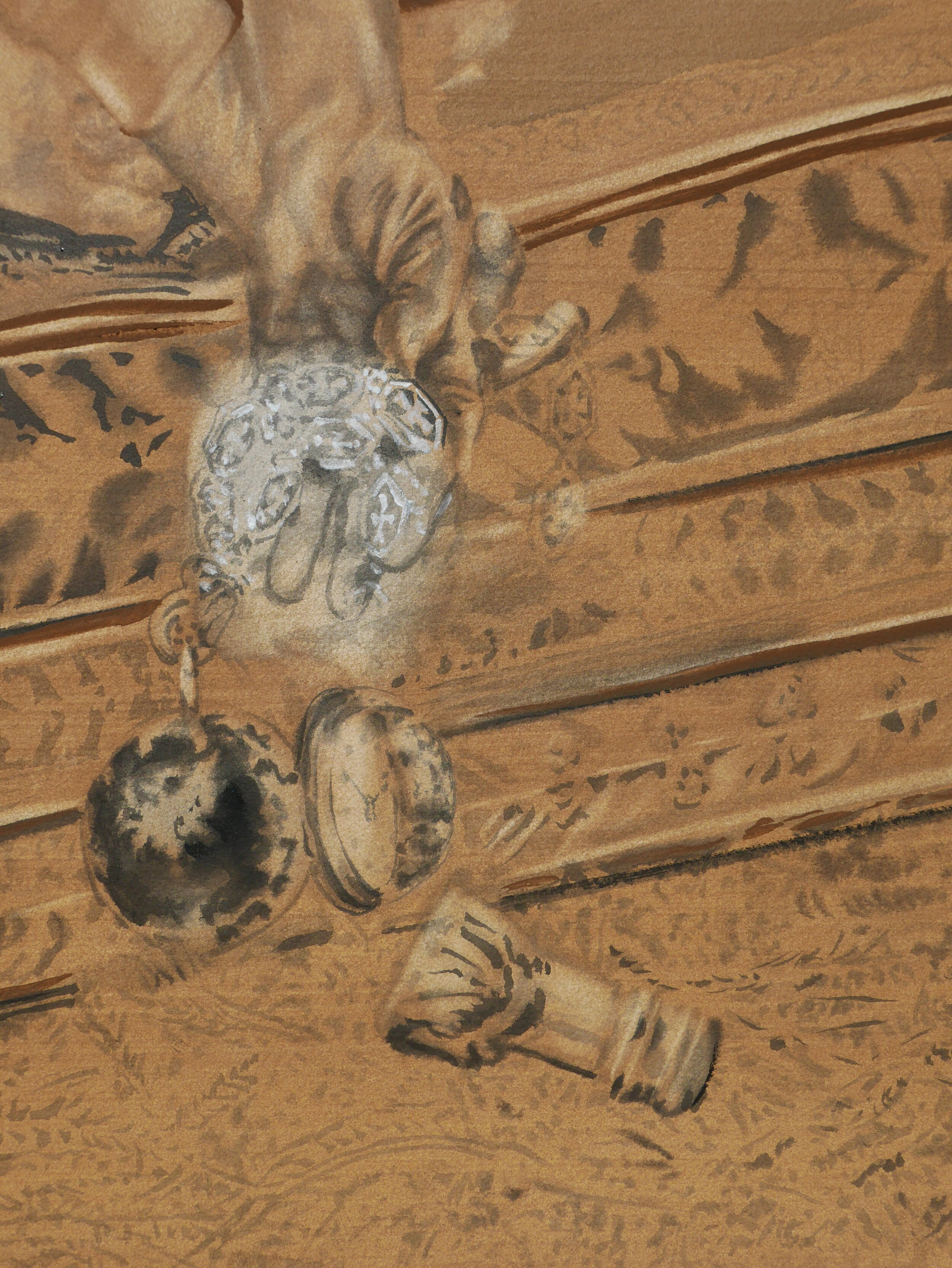
BODY OF PRINCIPLES 2021
Detail: The Time Is Now
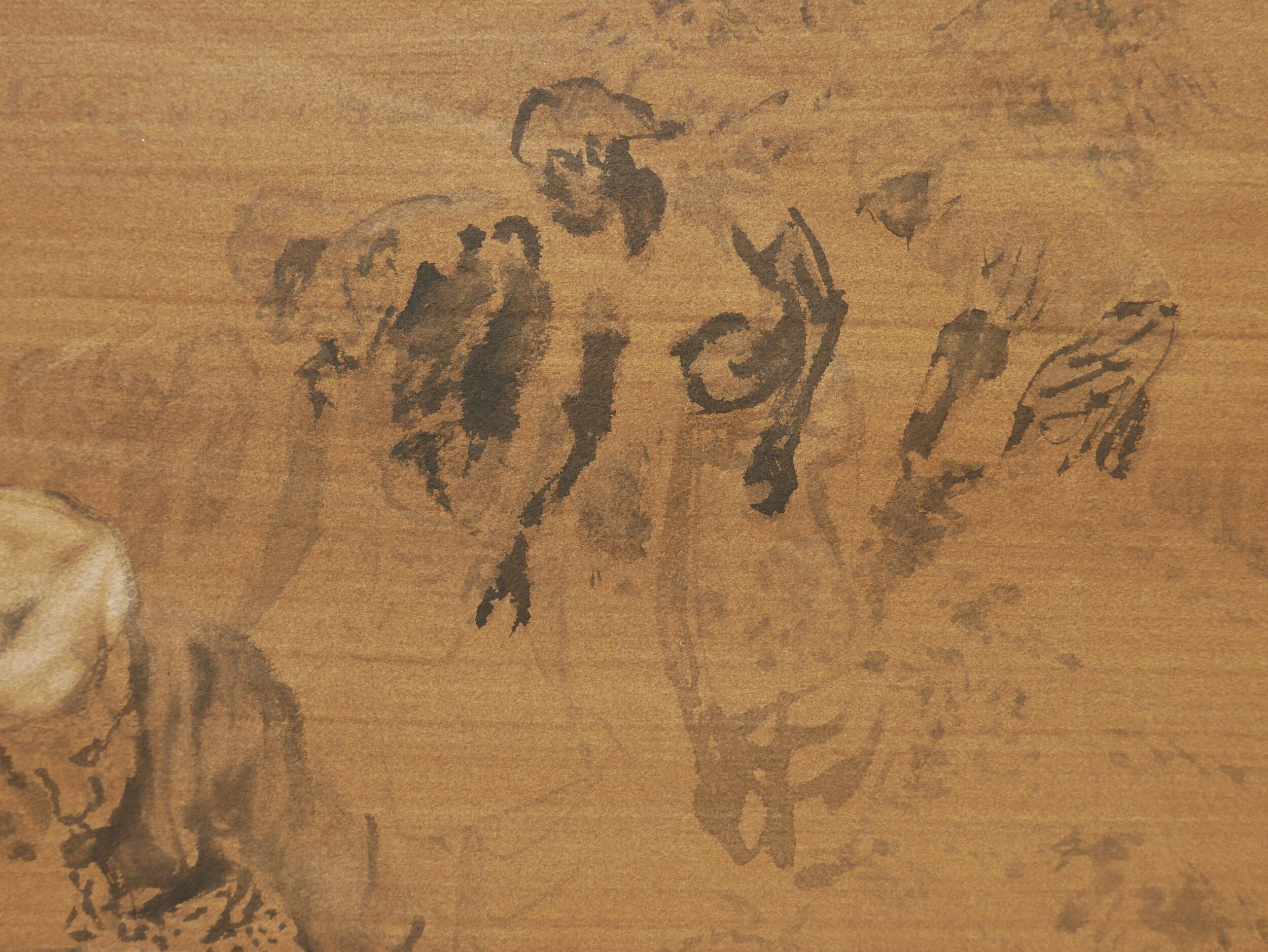
BODY OF PRINCIPLES 2021
Detail: Still Glaring (field hands)
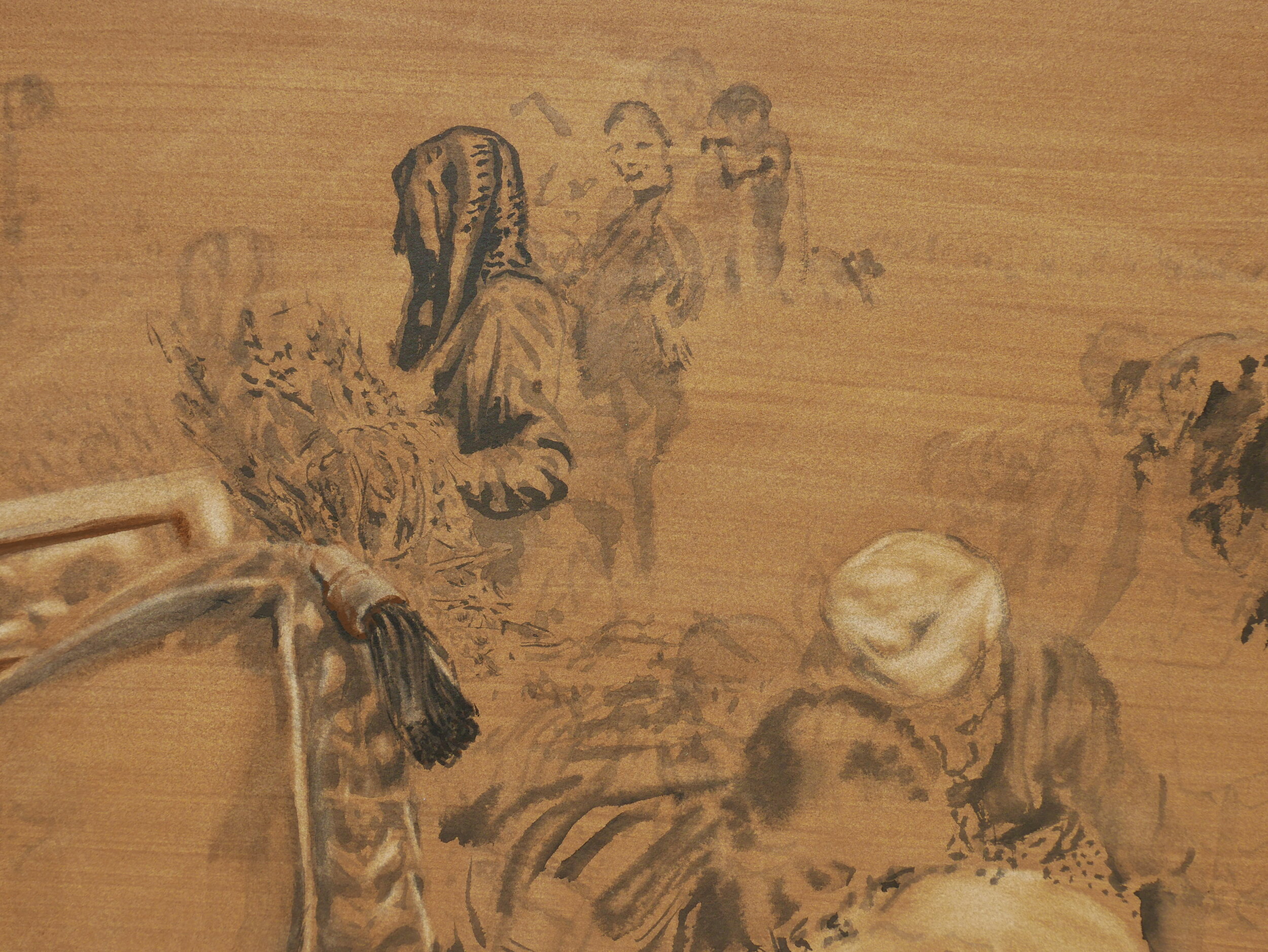
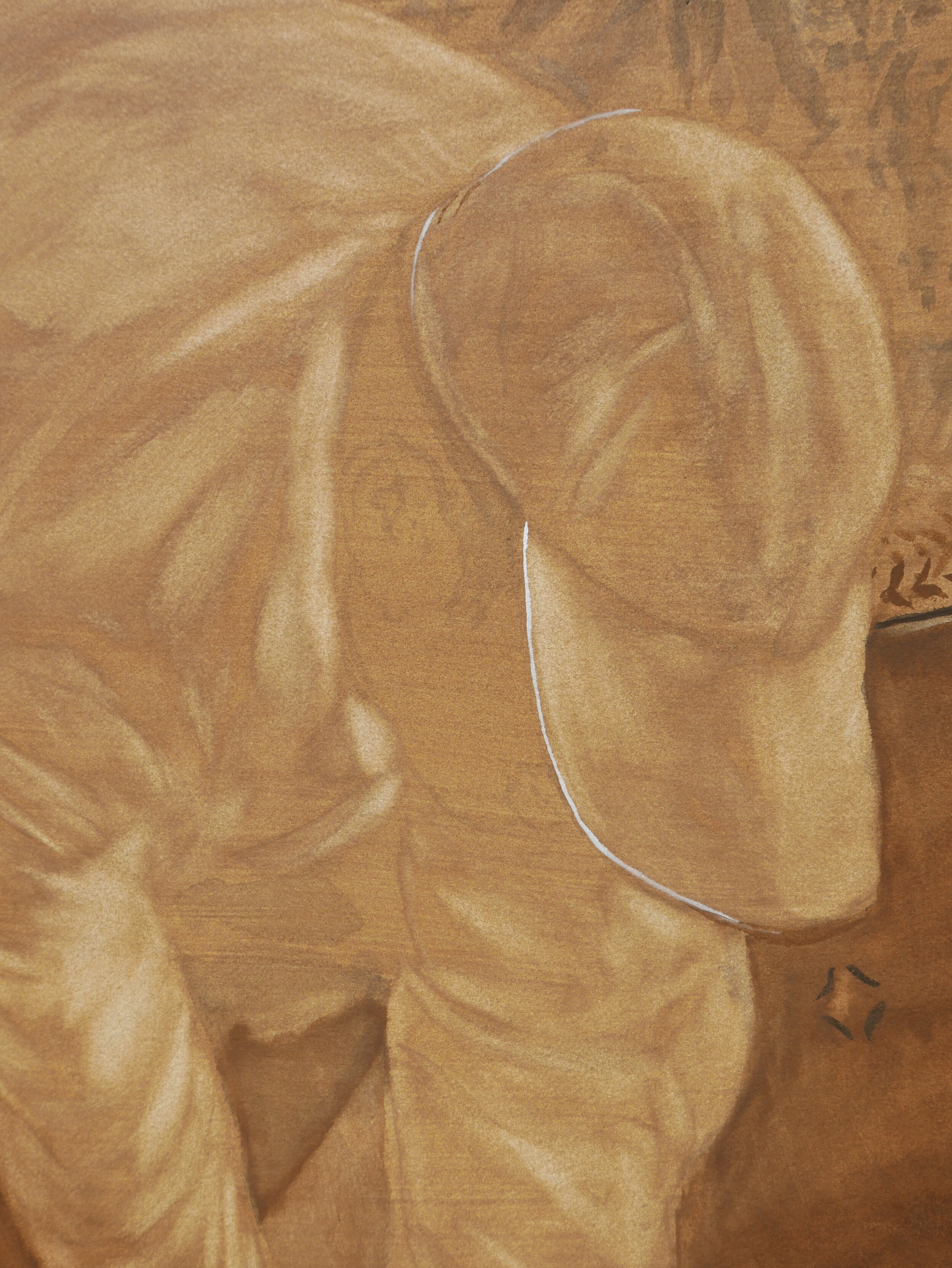
BODY OF PRINCIPLES 2021
Detail: Some shade
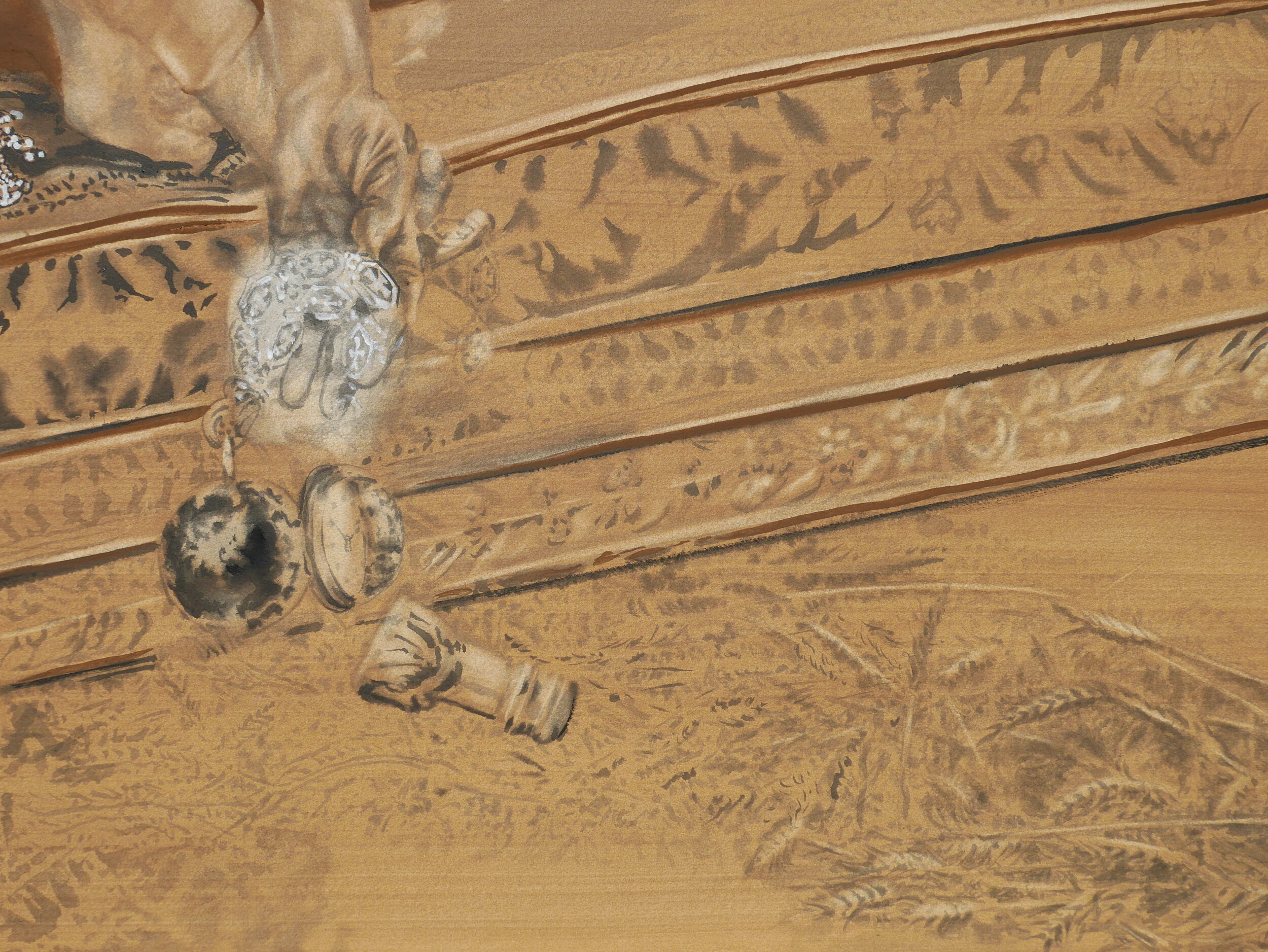

BODY OF PRINCIPLES 2021
Detail: Acts
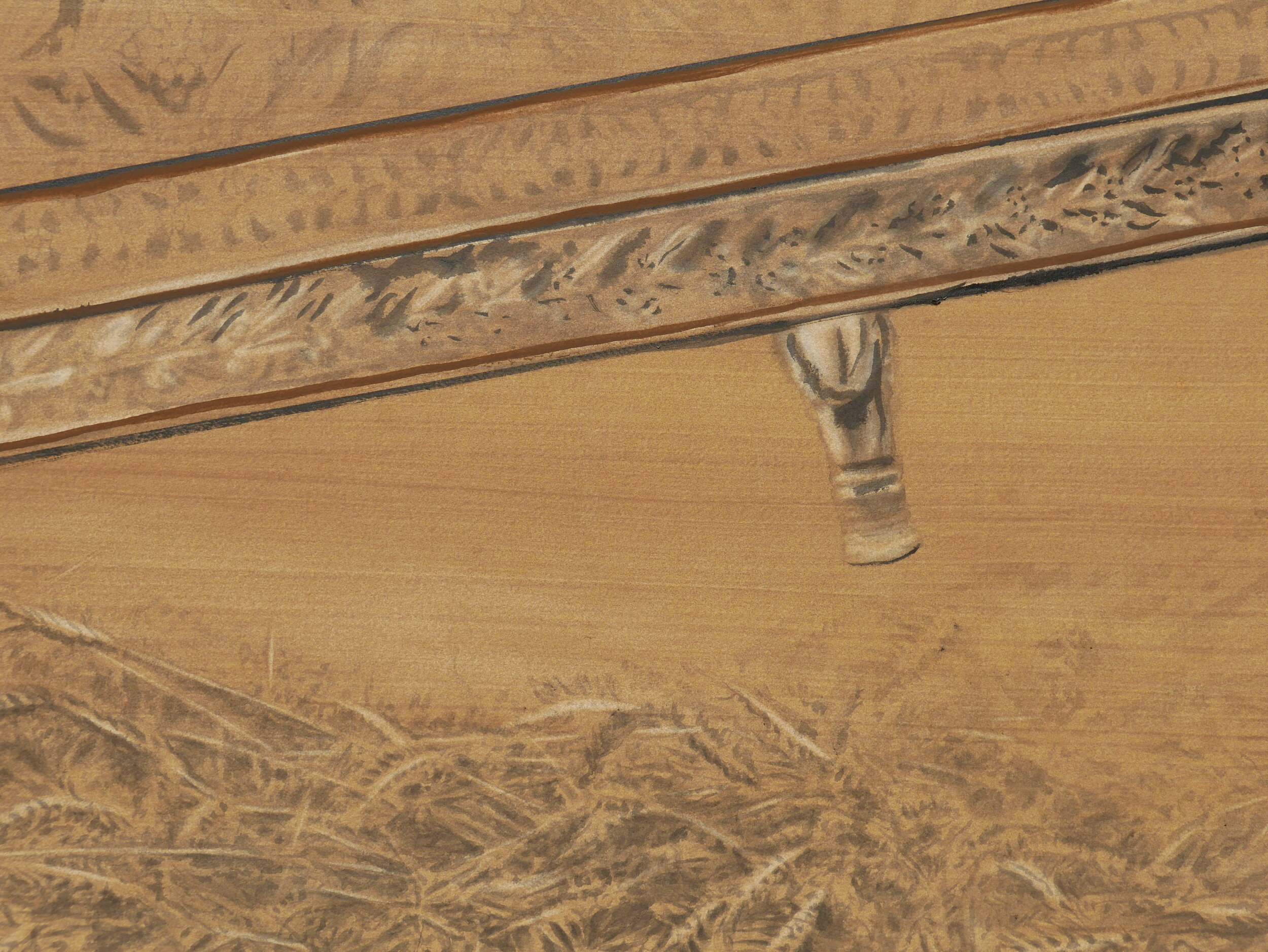
BODY OF PRINCIPLES 2021
Detal: By design
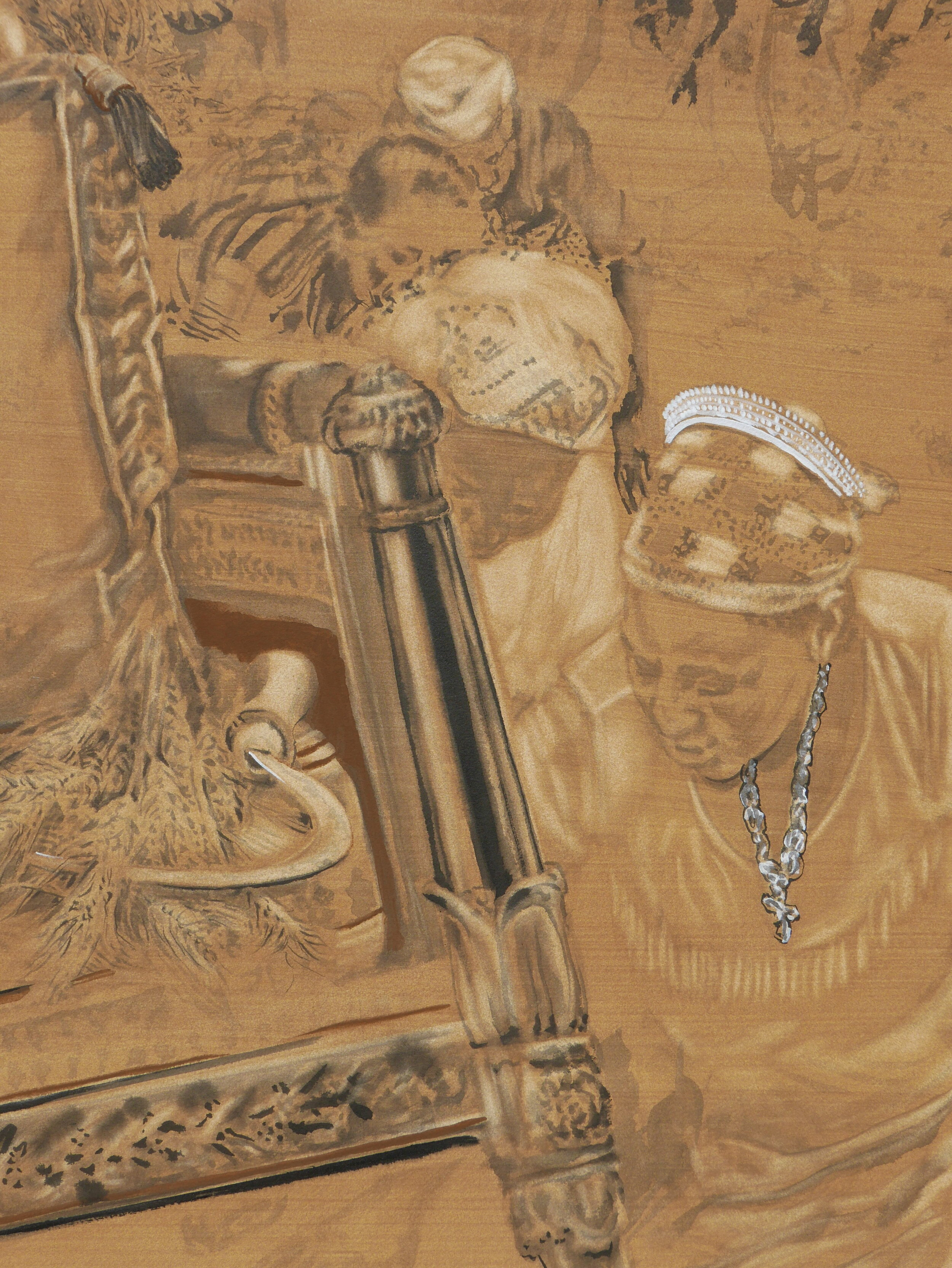
BODY OF PRINCIPLES 2021
Detail: Sheaf to Tassle
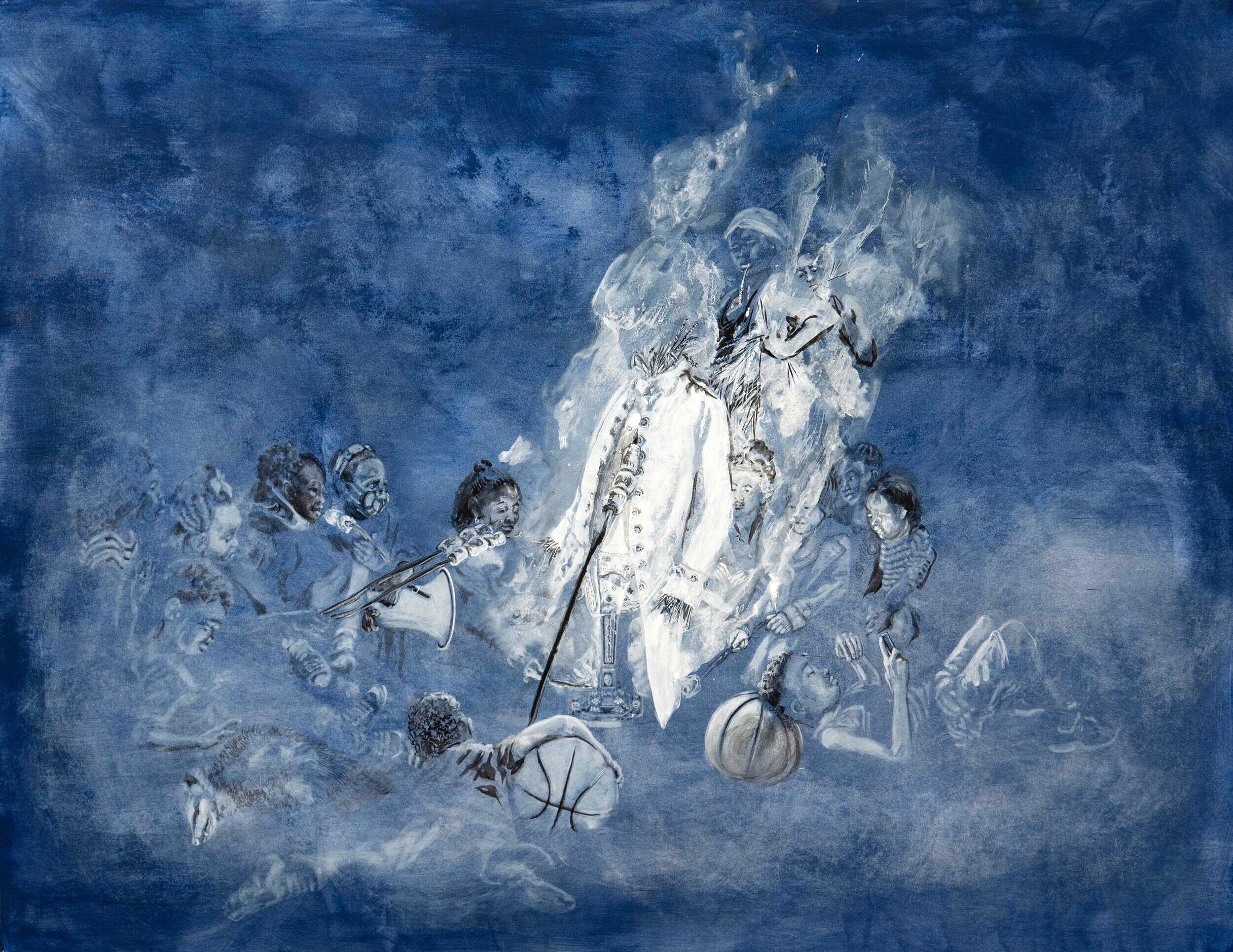
BEFORE 7/4
2021, Ink and gouache on paper, 44 x 58.5 inches
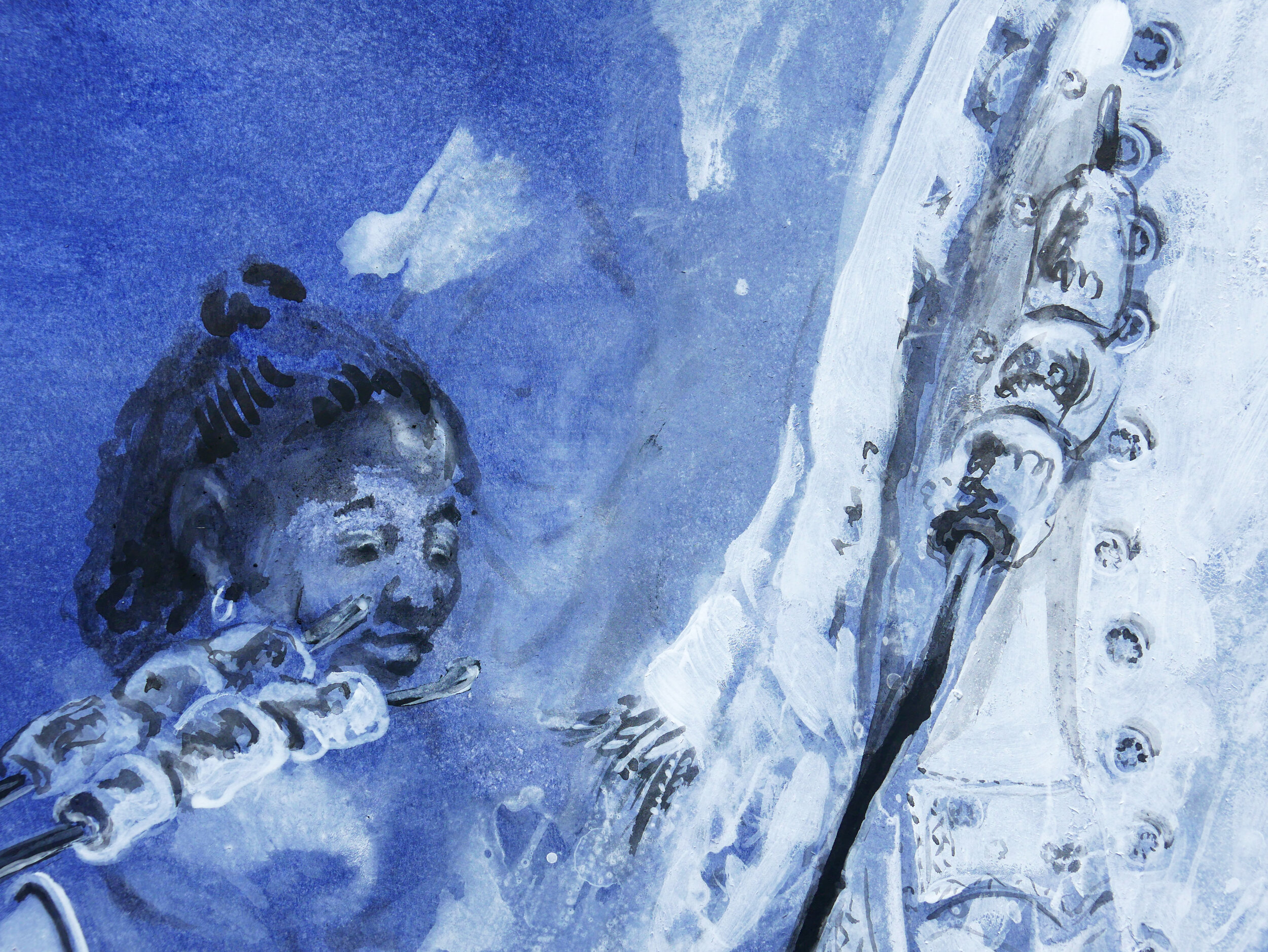
BEFORE 7/4
2021, Ink and gouache on paper, 44 x 58.5 inches
Detail of roasting marshmellows

BEFORE 7/4
2021, Ink and gouache on paper, 44 x 58.5 inches
Detail of possum
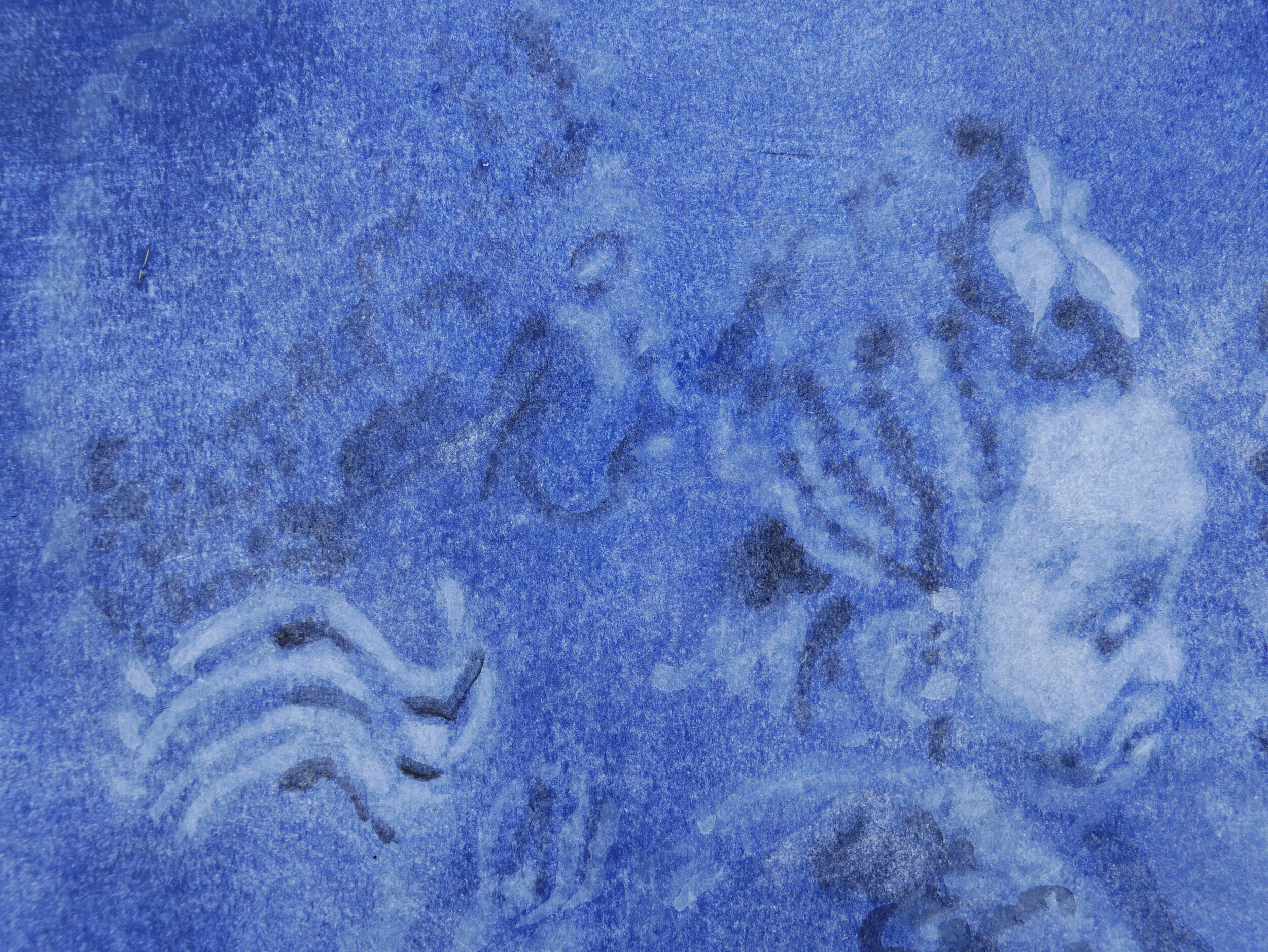
BEFORE 7/4
2021, Ink and gouache on paper, 44 x 58.5 inches
Detail of pair of wishes
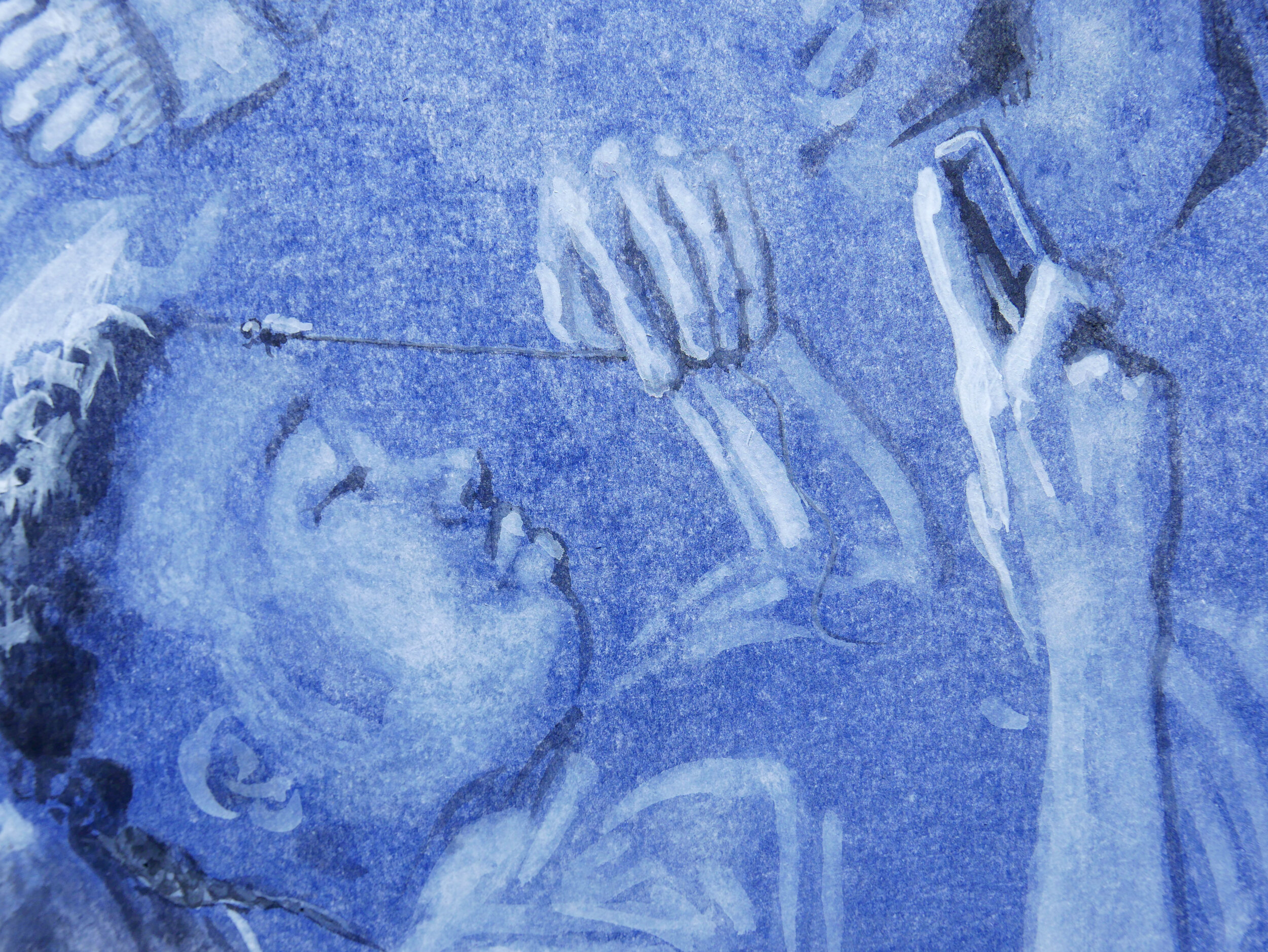
BEFORE 7/4
2021, Ink and gouache on paper, 44 x 58.5 inches
Detail of fly
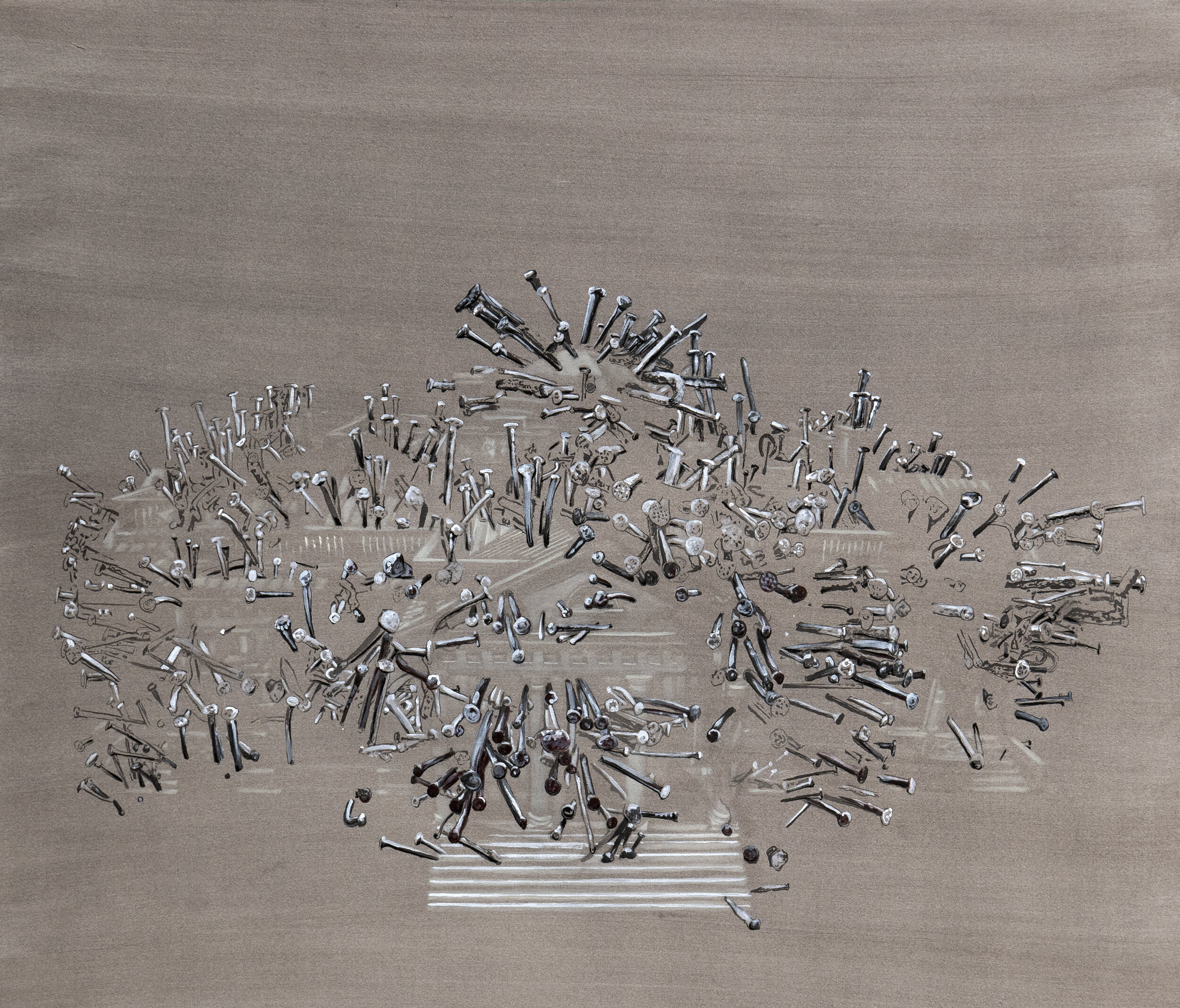
NAILERY (MONTICELLO)
2021, Ink and gouache on paper, 46 x 55 inches
Growing tobacco required child labor (the small stature of children made them ideal workers for the distasteful task of plucking and killing tobacco worms).
When growing wheat, which did not require small hands, Jefferson transferred his surplus of young workers to his nail factory (boys) and spinning and weaving operations (girls). In 1794, he launched a nailery and supervised it personally for three years.
“I now employ a dozen little boys from 10 to 16 years of age, overlooking all the details of their business myself.” He said he spent half the day counting and measuring nails. In the morning he weighed and distributed nail rod to each nailer; at the end of the day he weighed the finished product and noted how much rod had been wasted.
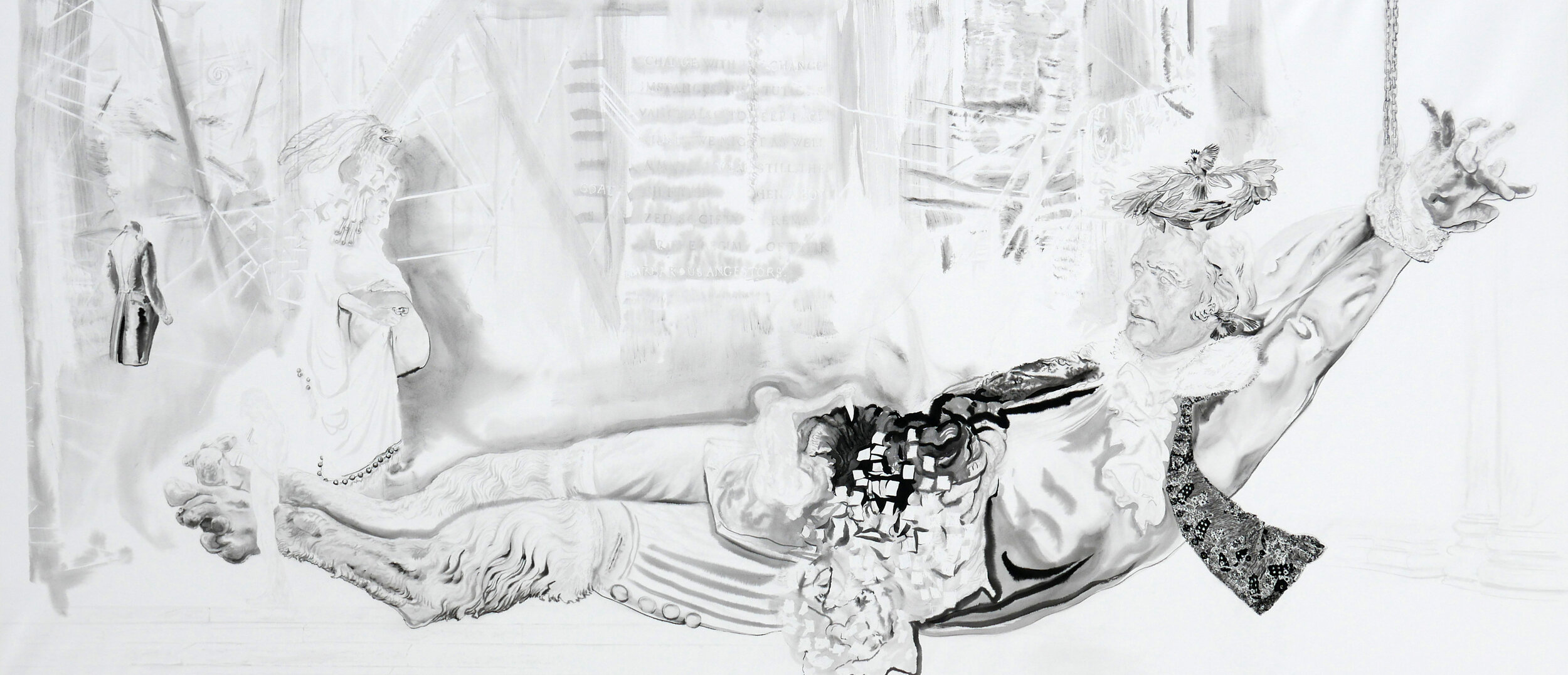
FITTING 2020
Ink on paper, 50 x 114 inches
I am not an advocate for frequent changes in laws and constitutions, but laws and institutions must go hand in hand with the progress of the human mind. As that becomes more developed, more enlightened, as new discoveries are made, new truths discovered and manners and opinions change, with the change of circumstances, institutions must advance also to keep pace with the times. We might as well require a man to wear still the coat which fitted him when a boy as civilized society to remain ever under the regimen of their barbarous ancestors.
Text on Panel Four of the Jefferson Memorial in Washington DC
The words of a dead man
Are modified in the guts of the living
—W. H. Auden
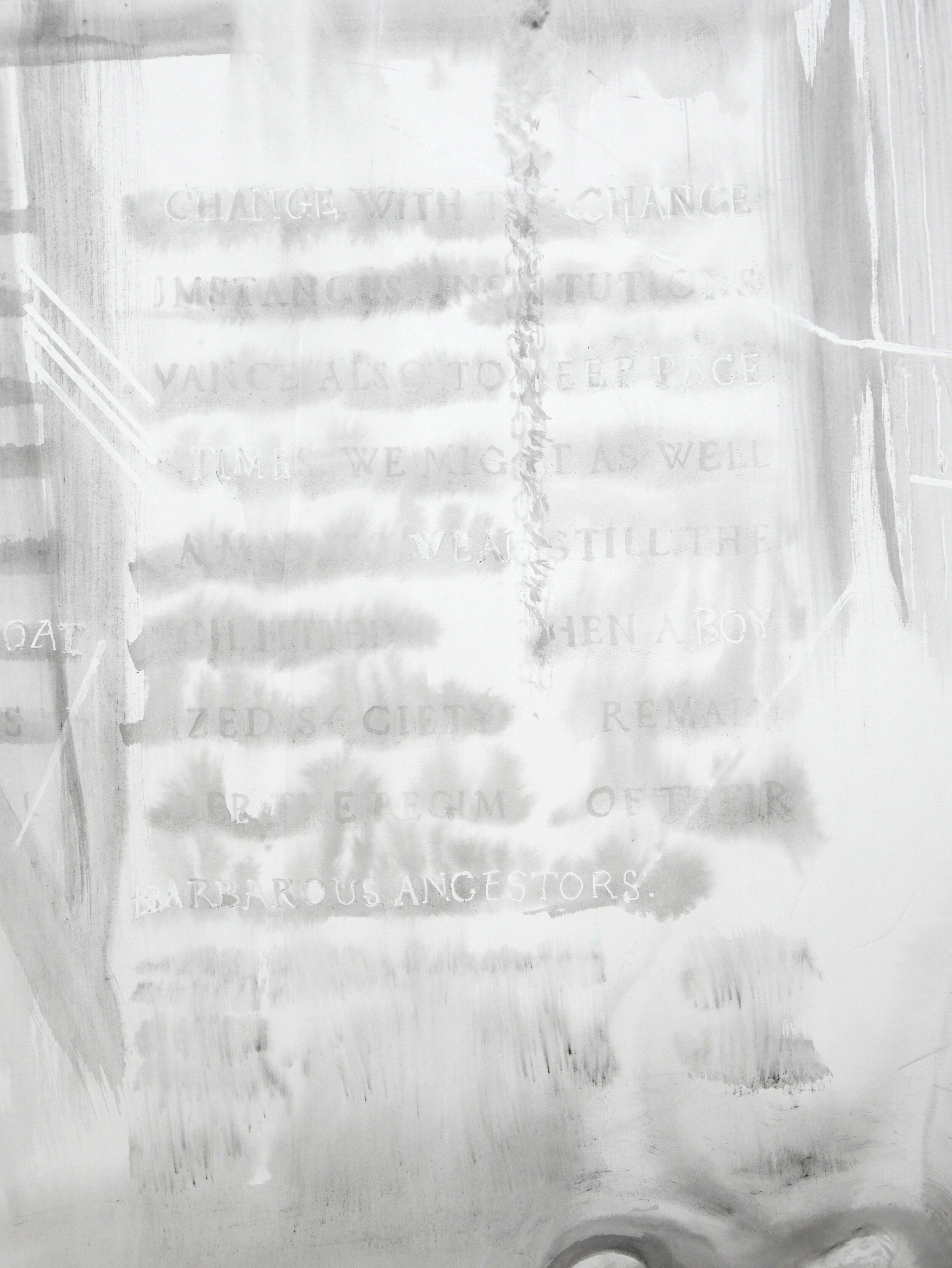
FITTING 2020
Detail of text from Jefferson’s letter to Samuel Kercheval (July 12, 1816) inscribed in the southeast quadrant of the Jefferson Memorial.
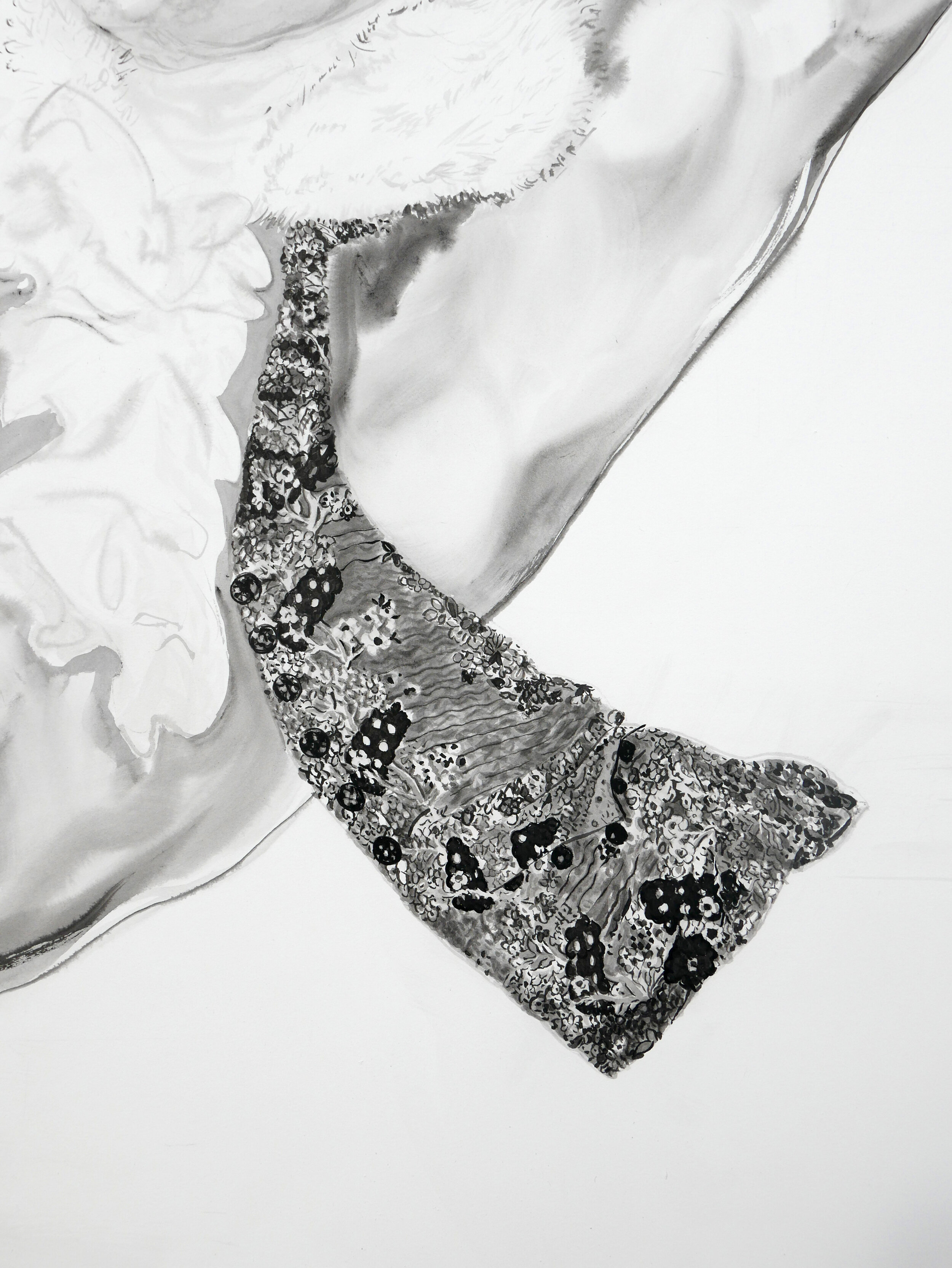
FITTING 2020
Detail of Thomas Jefferson’s vest with tree and flower ornamentation
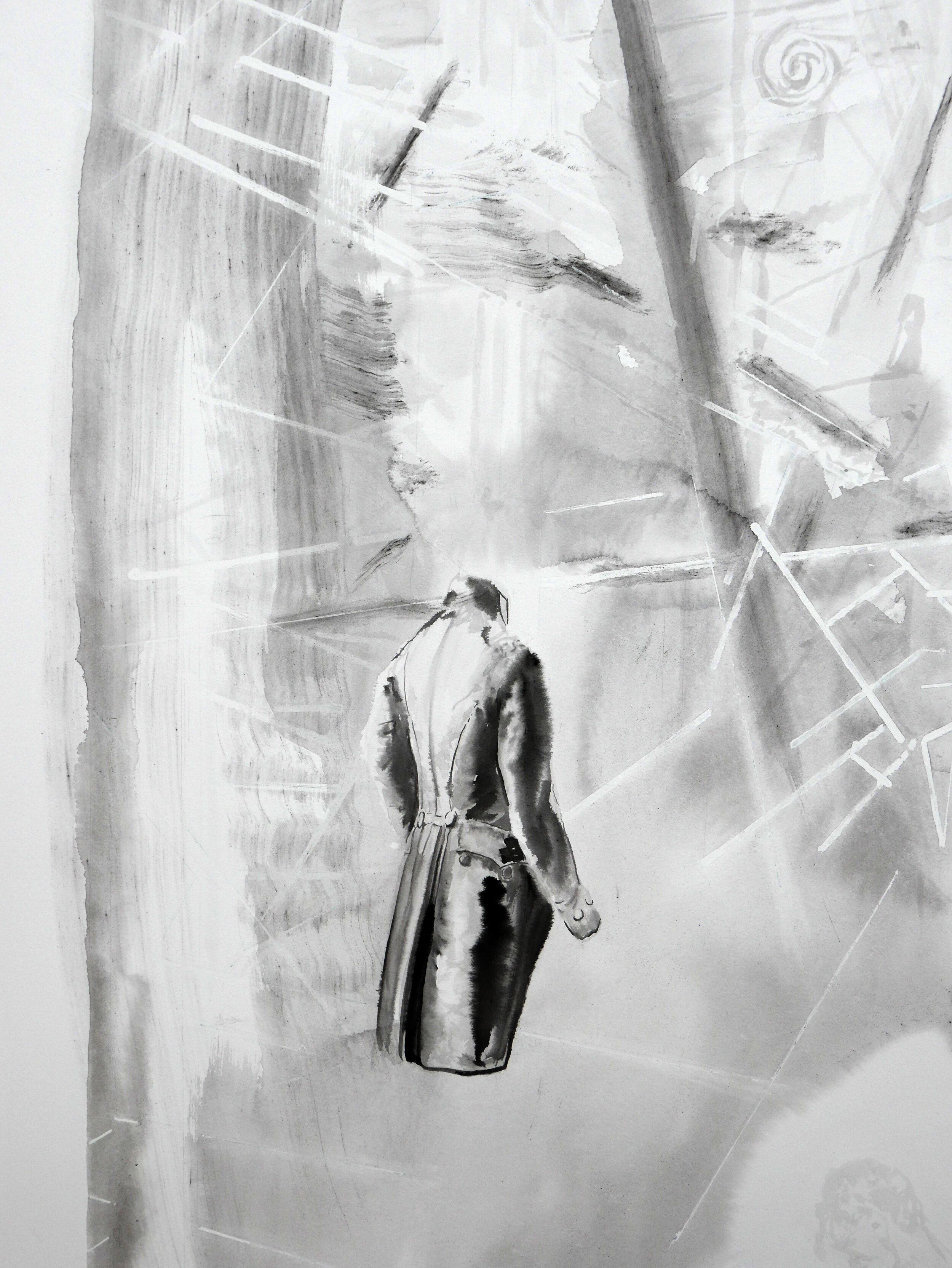
FITTING 2020
Detail of old coat
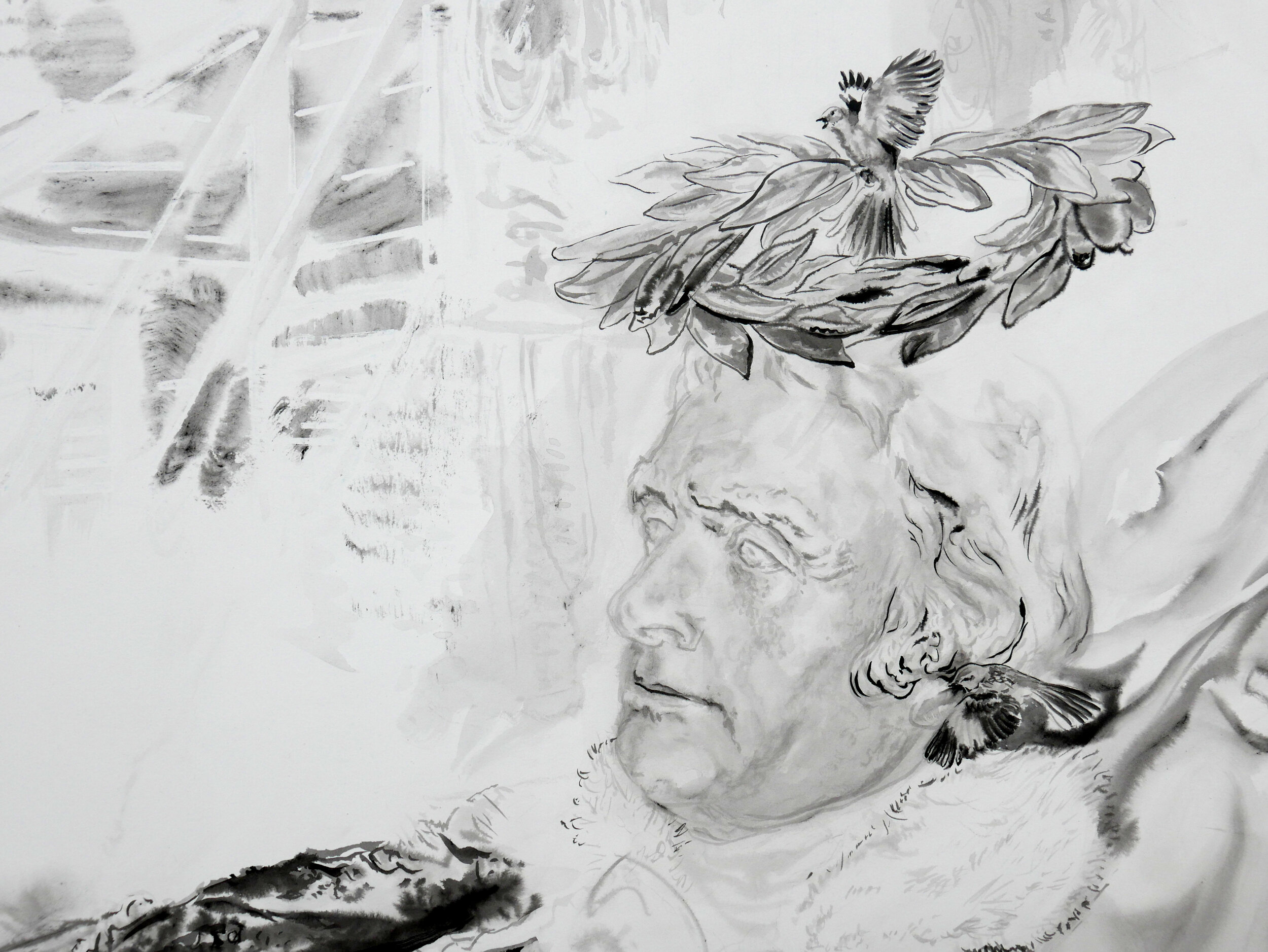
FITTING 2020
Detail of Thomas Jefferson sculpture with laurel wreath
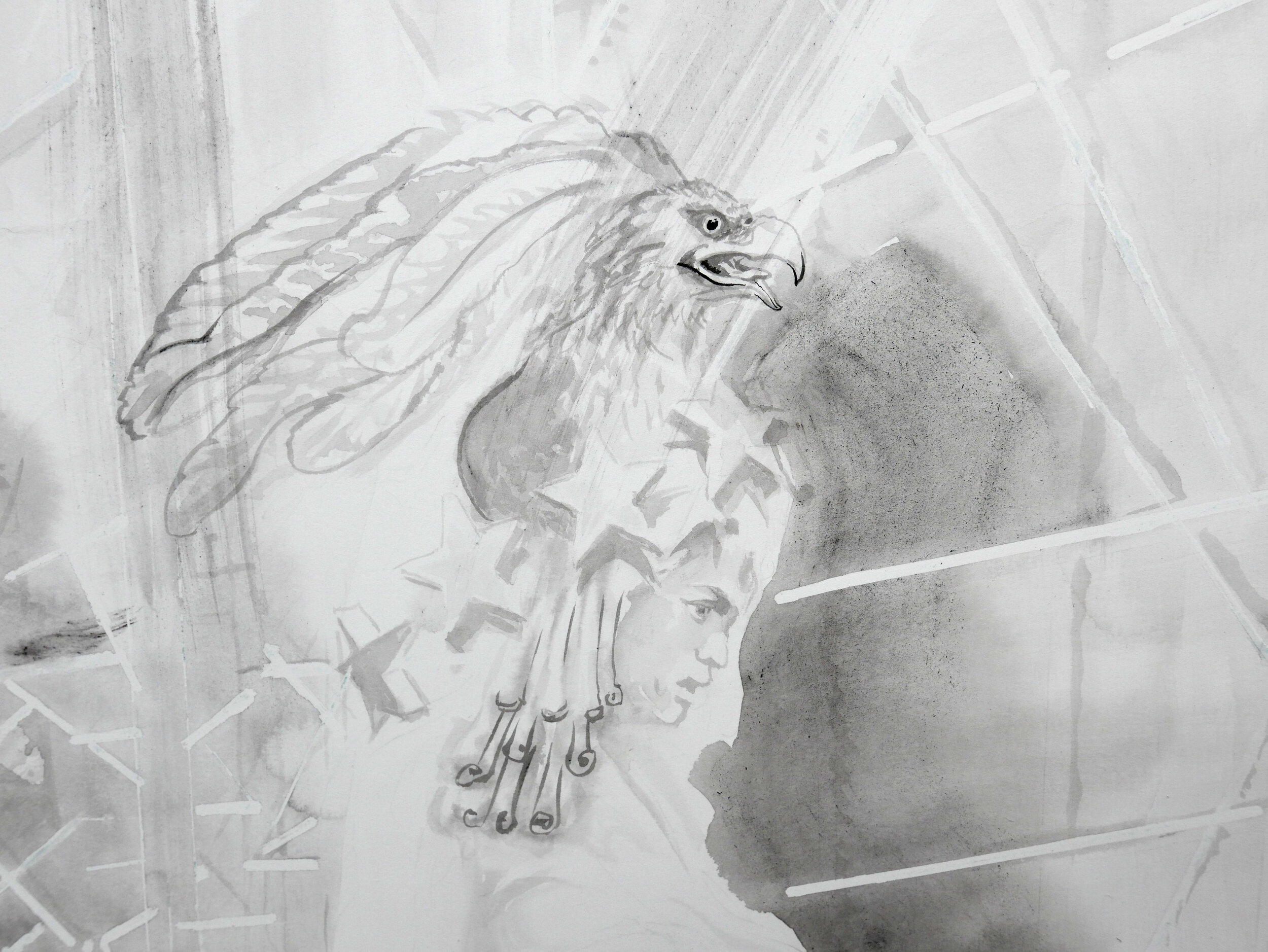
FITTING 2020
Detail of Sally Hemmings (mother of Jefferson’s children) as Columbia (the historical female national personification of the United States of America, and a poetic name for the Americas). The female figure representing Freedom that tops the dome of the U.S. Capitol Building shares many of Columbia’s characteristics.

FITTING 2020
The words of a dead man
Are modified in the guts of the living
—W. H. Auden
Detail of Digger seeking truth in Jeffersonian documents spilling from his intestines
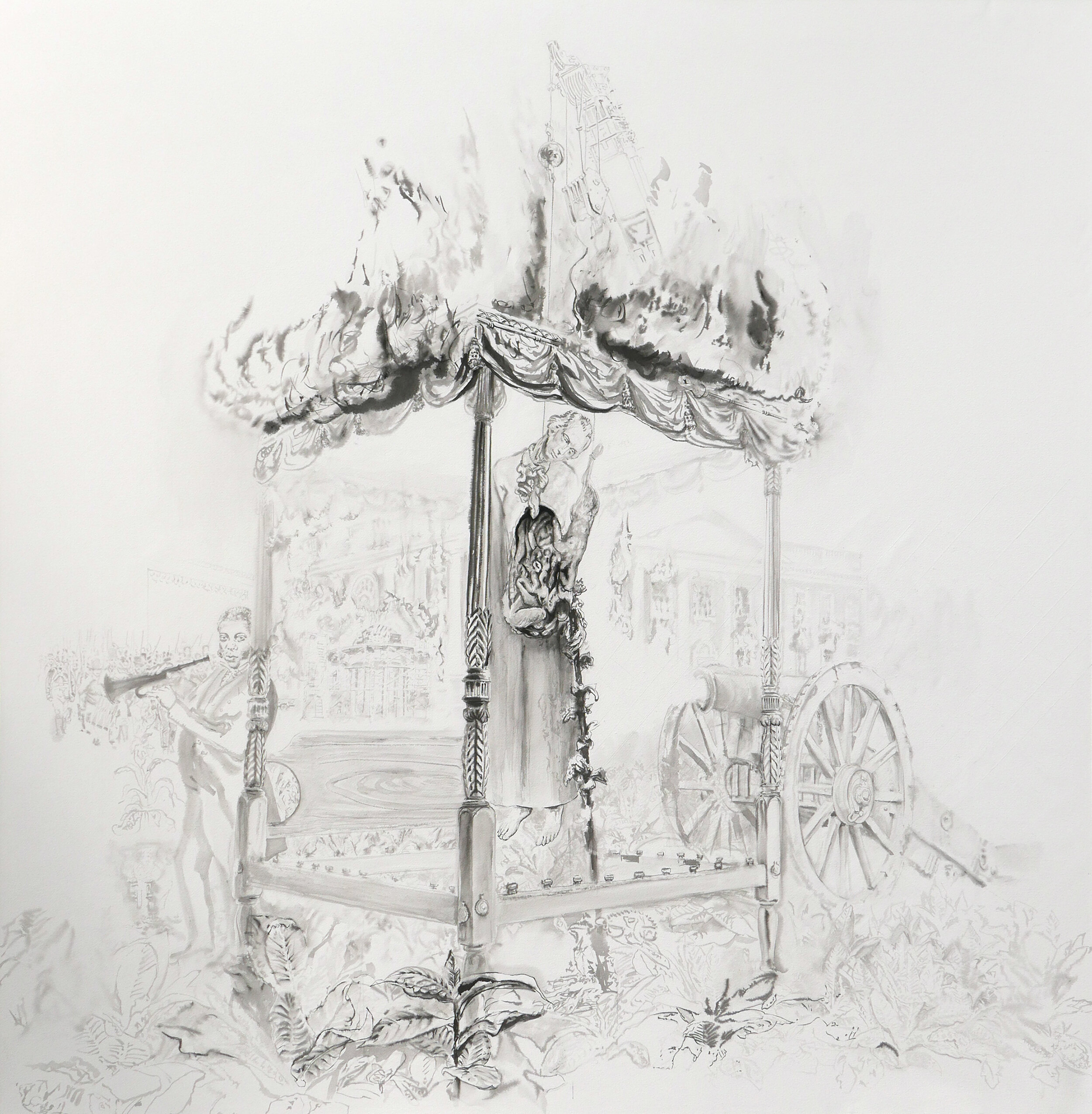
THE EXTRACTION OF MADISON'S SOUL 2019
Ink on paper, 54.5 x 55 inches
Francis (Frank) Johnson, born in 1792, was the first popular black composer and bandleader in the United States. He holds his keyed bugle while leaning on James Madison’s bedpost. In the distance his band marches forth. The bedchamber is absent. The bed frame and canopy, left exposed in a destitute tobacco field, catch fire from embers of the U.S. Capitol and Presidential Mansion blaze. The house was a dreary place in 1814 when the British seized and torched Washington. But still it haunts.
It haunts, too, that Paul Jennings, and the door man, and the gardener secured the Gilbert Stuart portrait of Washington from the British assault (even if it was a copy of Stuart’s own painting – it’s an original isn’t it?).
And it haunts most on Judgment Day when your soul is discovered to be but three fifths of a man’s.
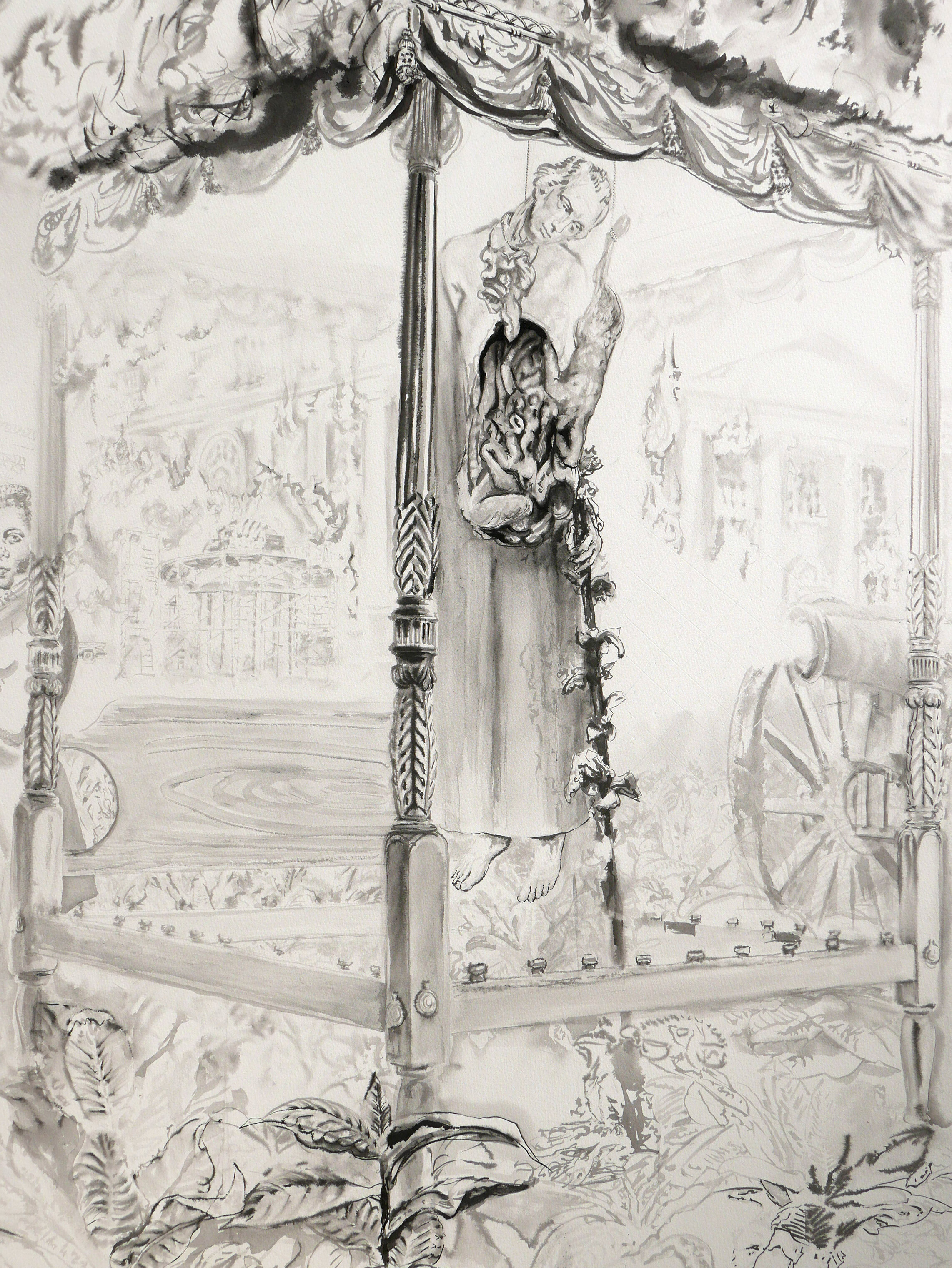
THE EXTRACTION OF MADISON'S SOUL 2019
Detail of James Madison
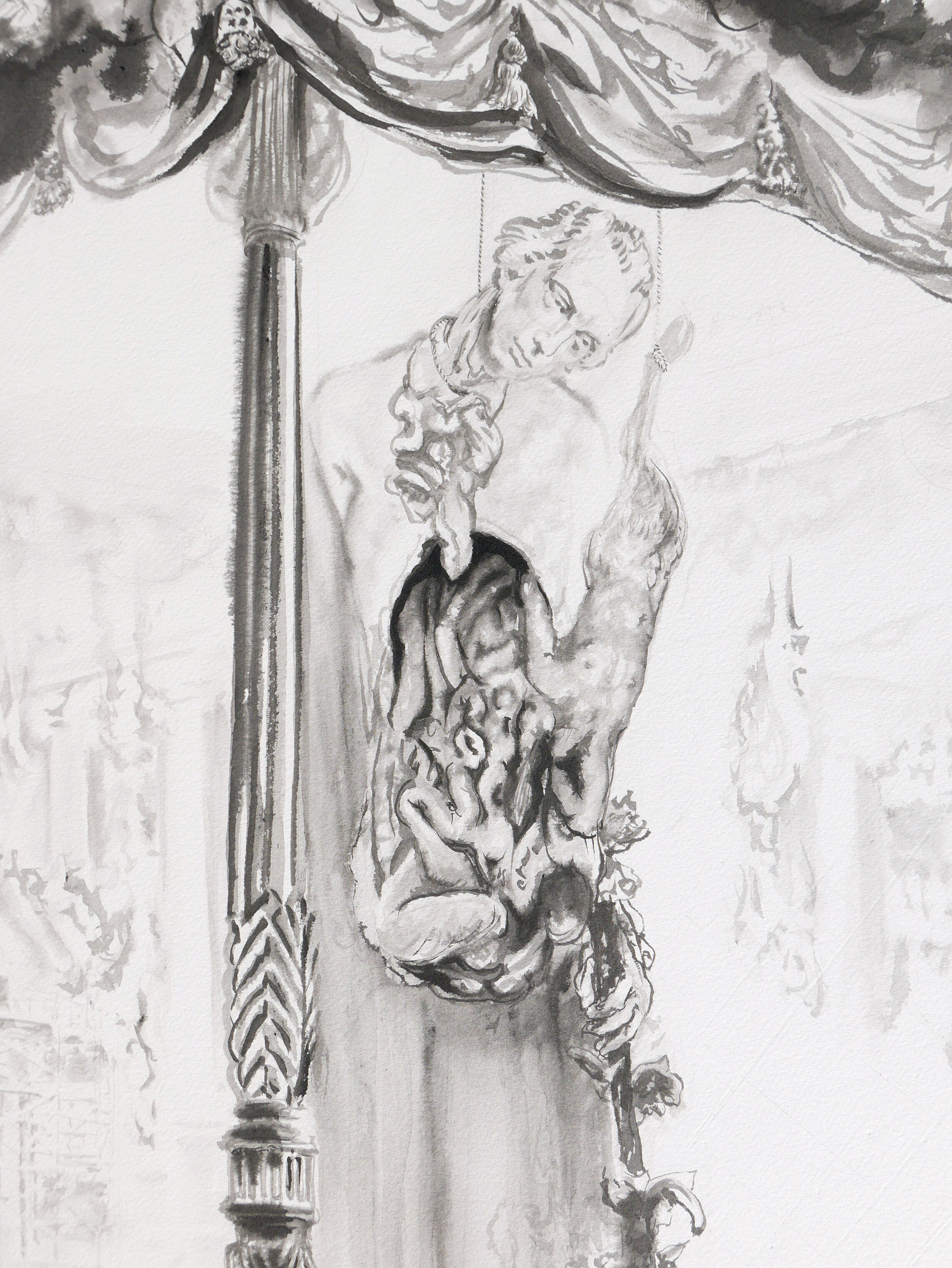
THE EXTRACTION OF MADISON'S SOUL 2019
Detail of James Madison
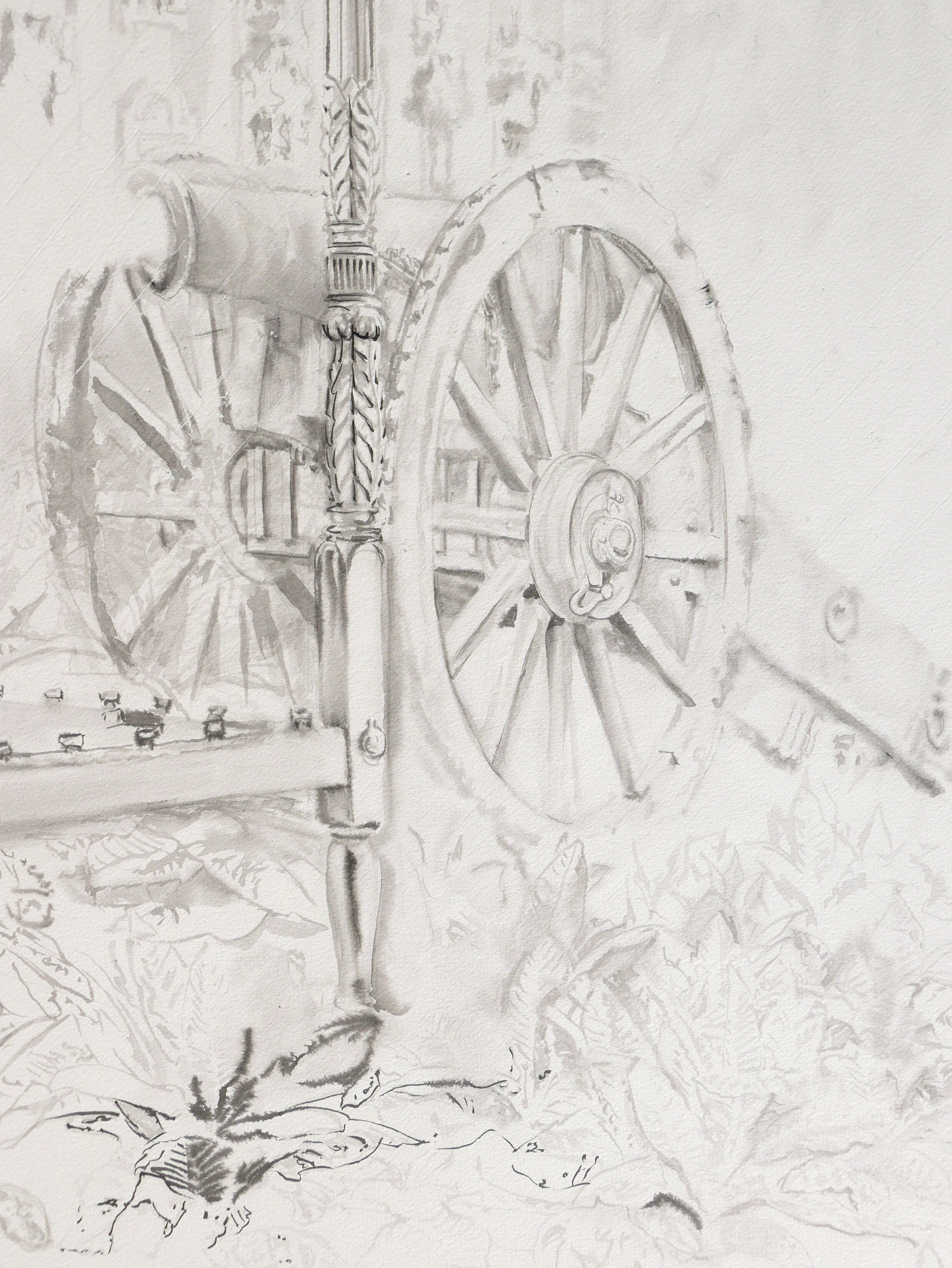
THE EXTRACTION OF MADISON'S SOUL 2019
Detail of British cannon
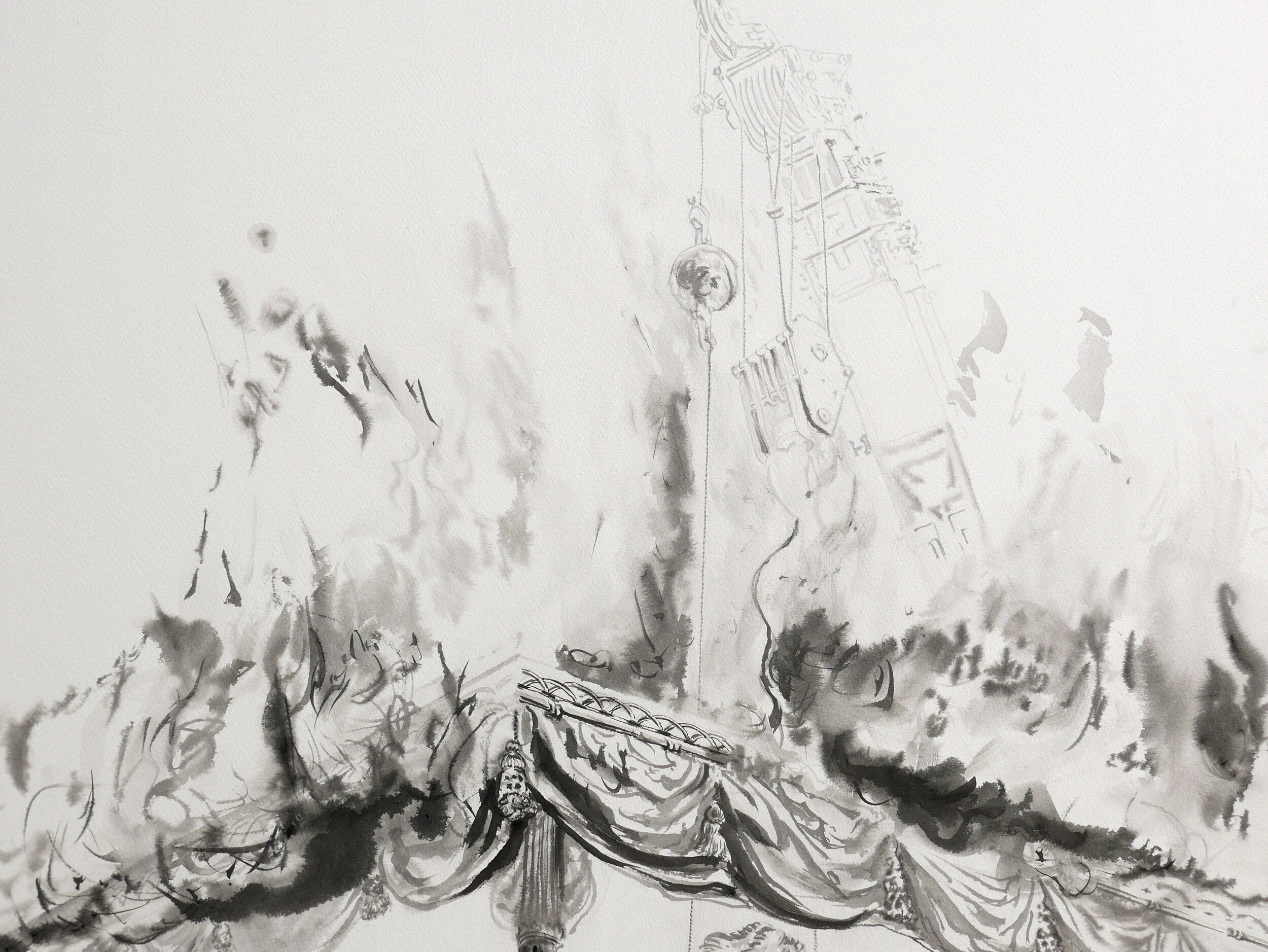
THE EXTRACTION OF MADISON'S SOUL 2019
Detail of bed frame and canopy catching fire from embers of the U.S. Capitol and Presidential Mansion blaze in 1814 during the British assault on Washington.
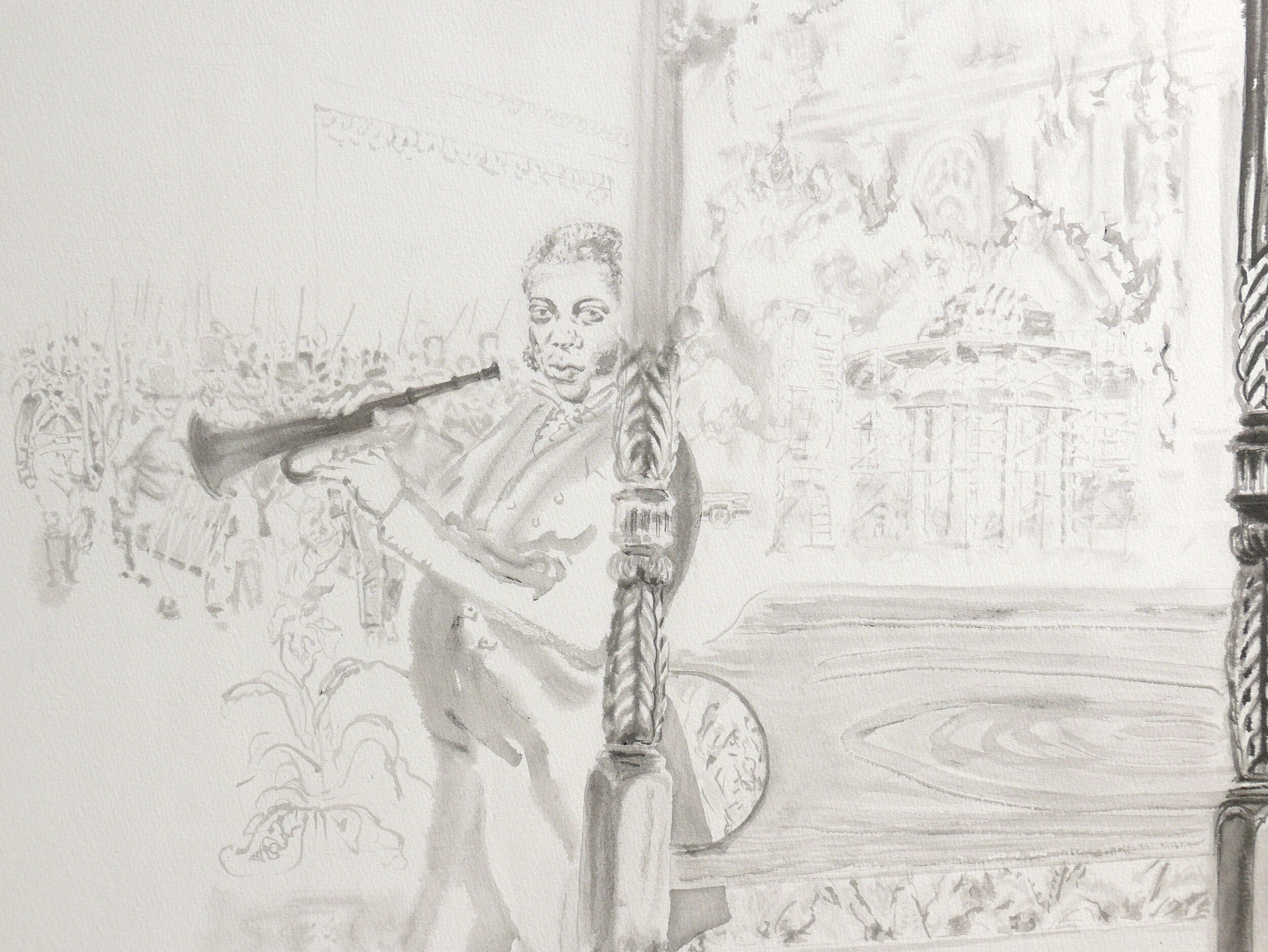
THE EXTRACTION OF MADISON'S SOUL 2019
Detail of Francis (Frank) Johnson, born in 1792—the first popular black composer and bandleader in the United States.
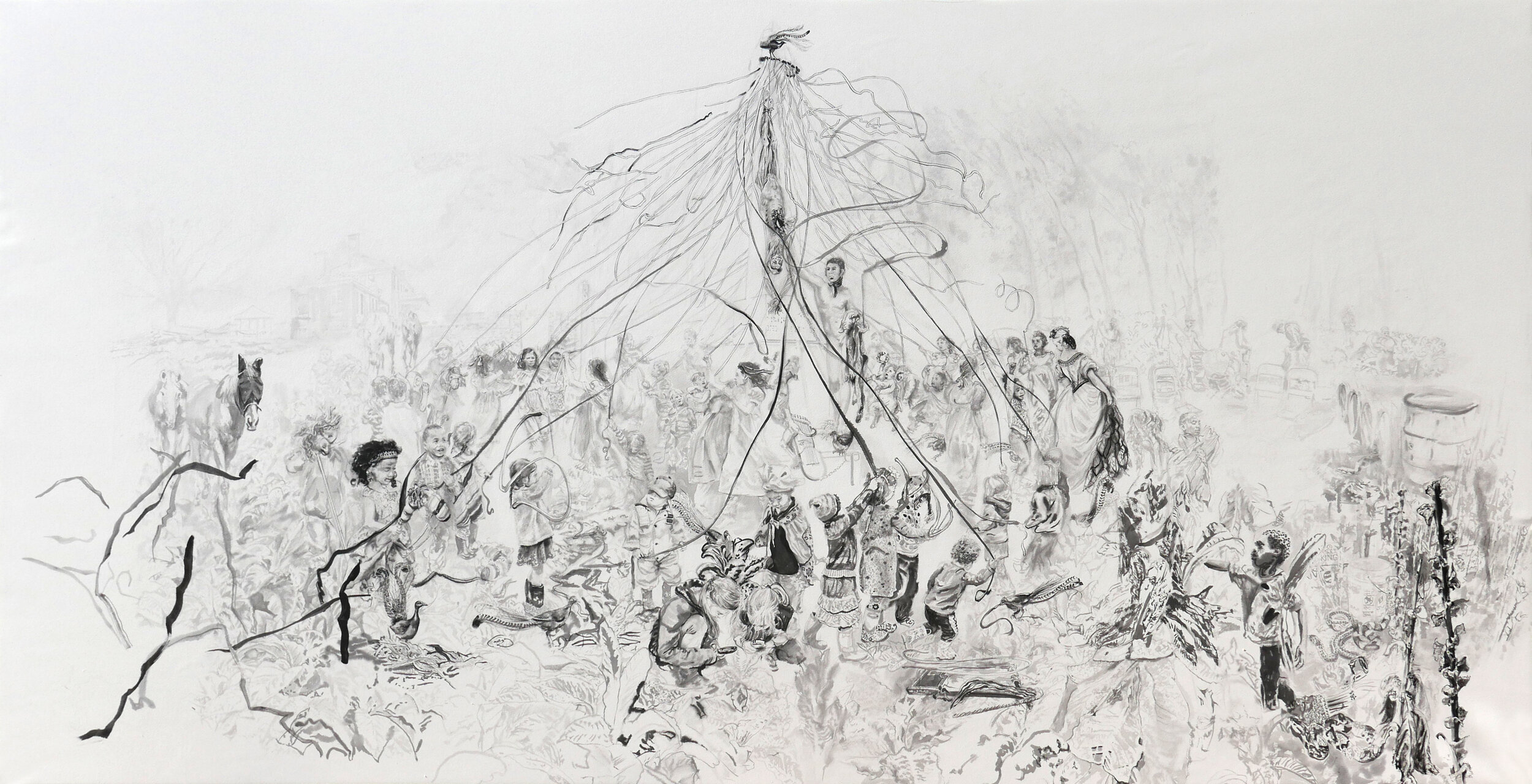
MADISON IN MAY 2019
Ink on paper, 58.5 x 114 inches
Paul Jennings, born into slavery at the concentration camp Montpelier, author of “A Colored Man's Reminiscences of James Madison”, in the guise of Apollo, unsuccessfully requests his freedom at the fourth president’s death.
Jennings’ family (his wife, Fanny, and their children Felix, Frances, John, Franklin, and William), with whom he was never allowed to live, circle around the childless Madison. Young John, Franklin and William play ‘abolitionist’ before their entry into the Union army during the Civil War. Jennings’ extended family rehearses around the Maypole for their future reunion. They wave ribbons, weave streamers and frolic on hobbyhorses.
Panpipes are set aside by Satyrs and lyres are laid to rest at the obelisk’s steps. Lyrebirds from the New England Highlands strut, perch and sing their ‘flute dialect’ on the green. Amidst confetti, different species of Lyrebird chicks listen and learn new vocalizations of democratic protest.
Dolley Todd Madison, the ‘country’s first lady’, who continued to enslave Paul Jennings after her husband’s death, lifts her gown skirts and drags tobacco leaves. She thanks Jennings for his generous financial assistance as she spins into financial hardship.
Representatives of the largest attempted escape of the enslaved in US history, that Jennings helped plan, are seen again on the plantation after their resale and continued bondage. Athenian vessels, a pitcher (Oinochoe) and a high-handled drinking cup (Kantharos), in the form of “Aithiopian” heads (circa 500 BC), lie beneath snakes and denuded stalks. Neither we nor Madison (though steeped in Greek and Latin philosophy and prose in their original languages) are certain of what these serving vessels connote regarding race or hierarchical relationships.
In the upper right, canonical interpreters of lost causes fold their chairs.
Exeunt stage left.
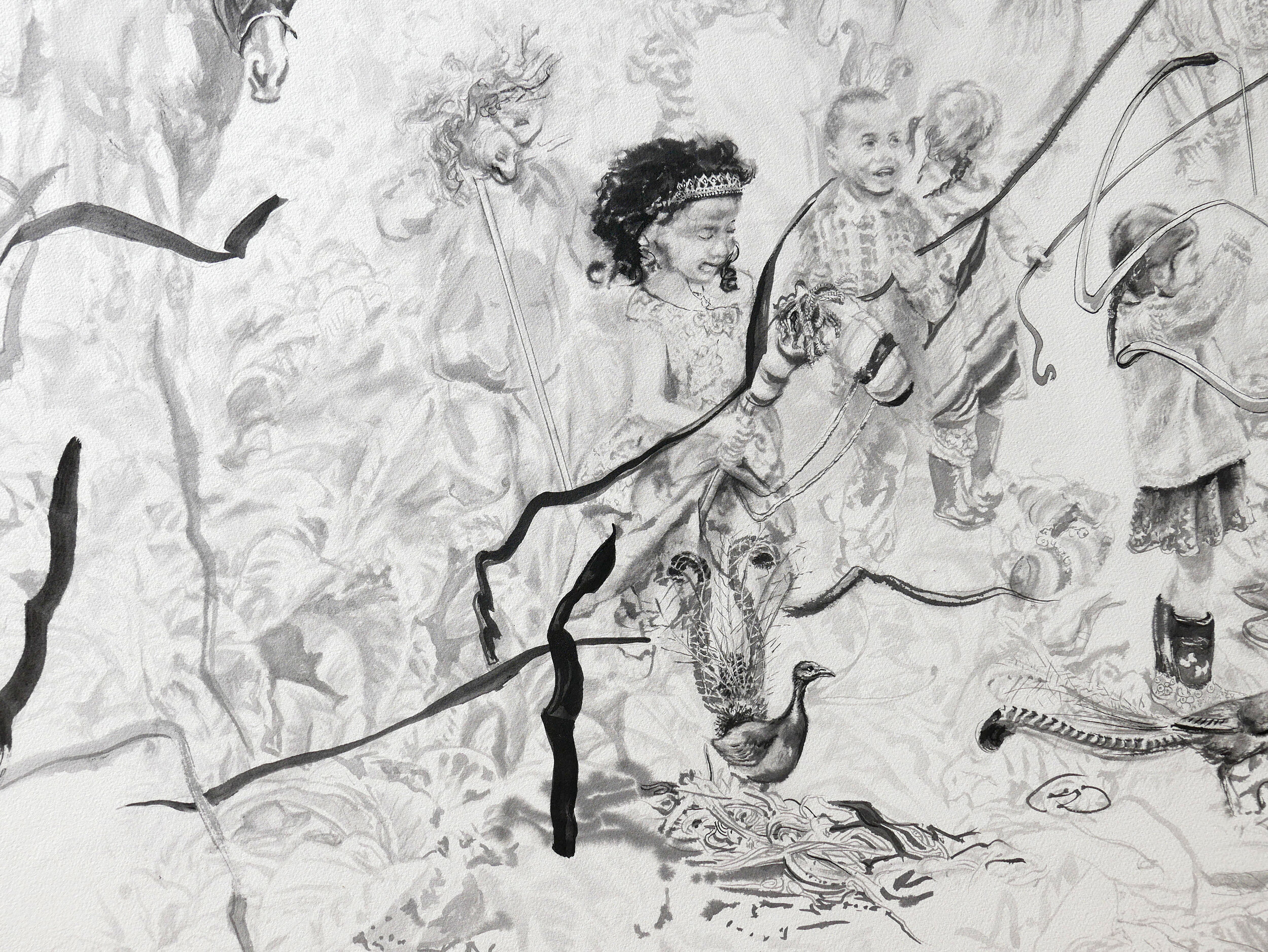
MADISON IN MAY 2019
Detail of Maypole streamers
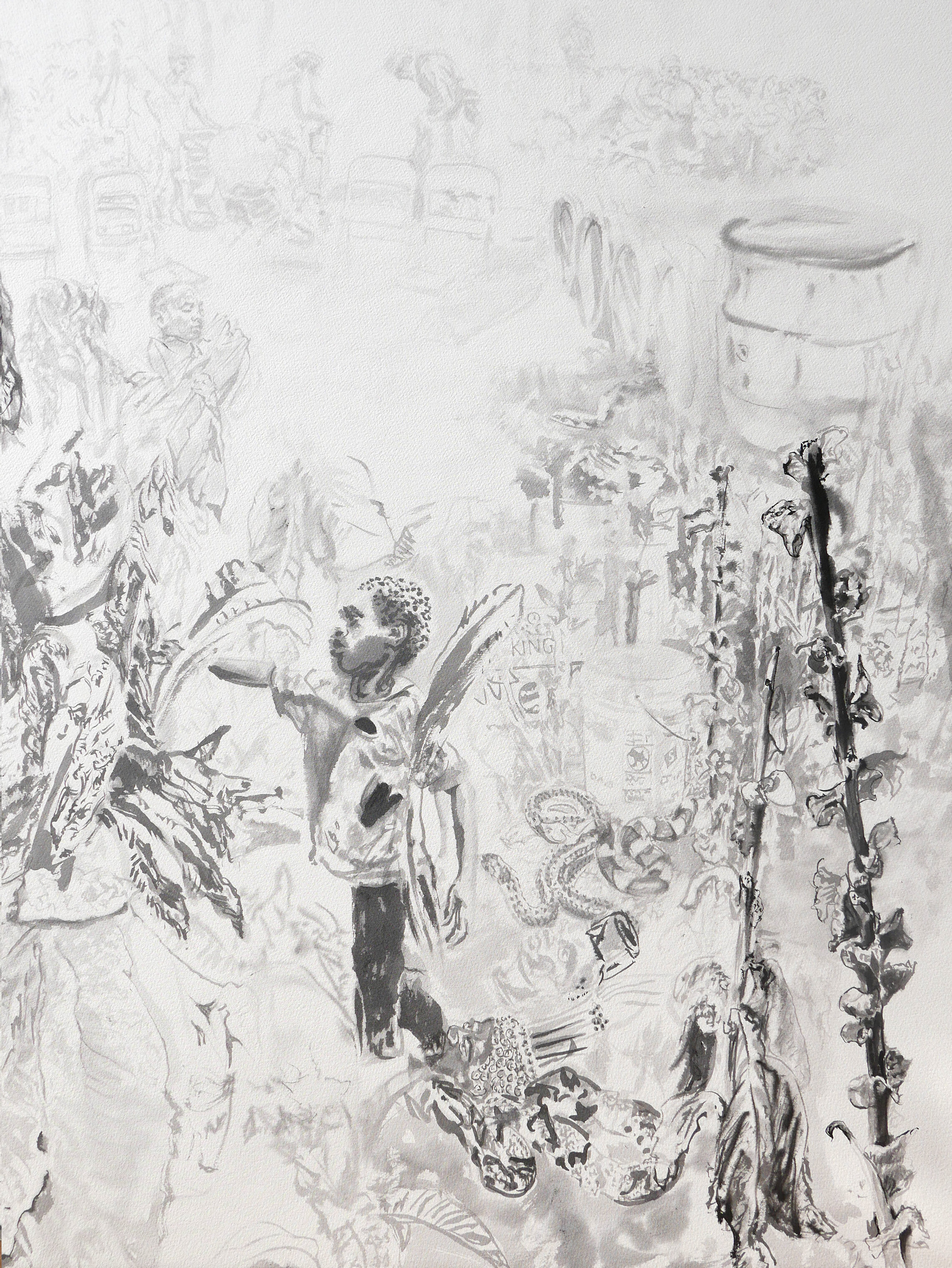
MADISON IN MAY 2019
Detail of boy in tobacco
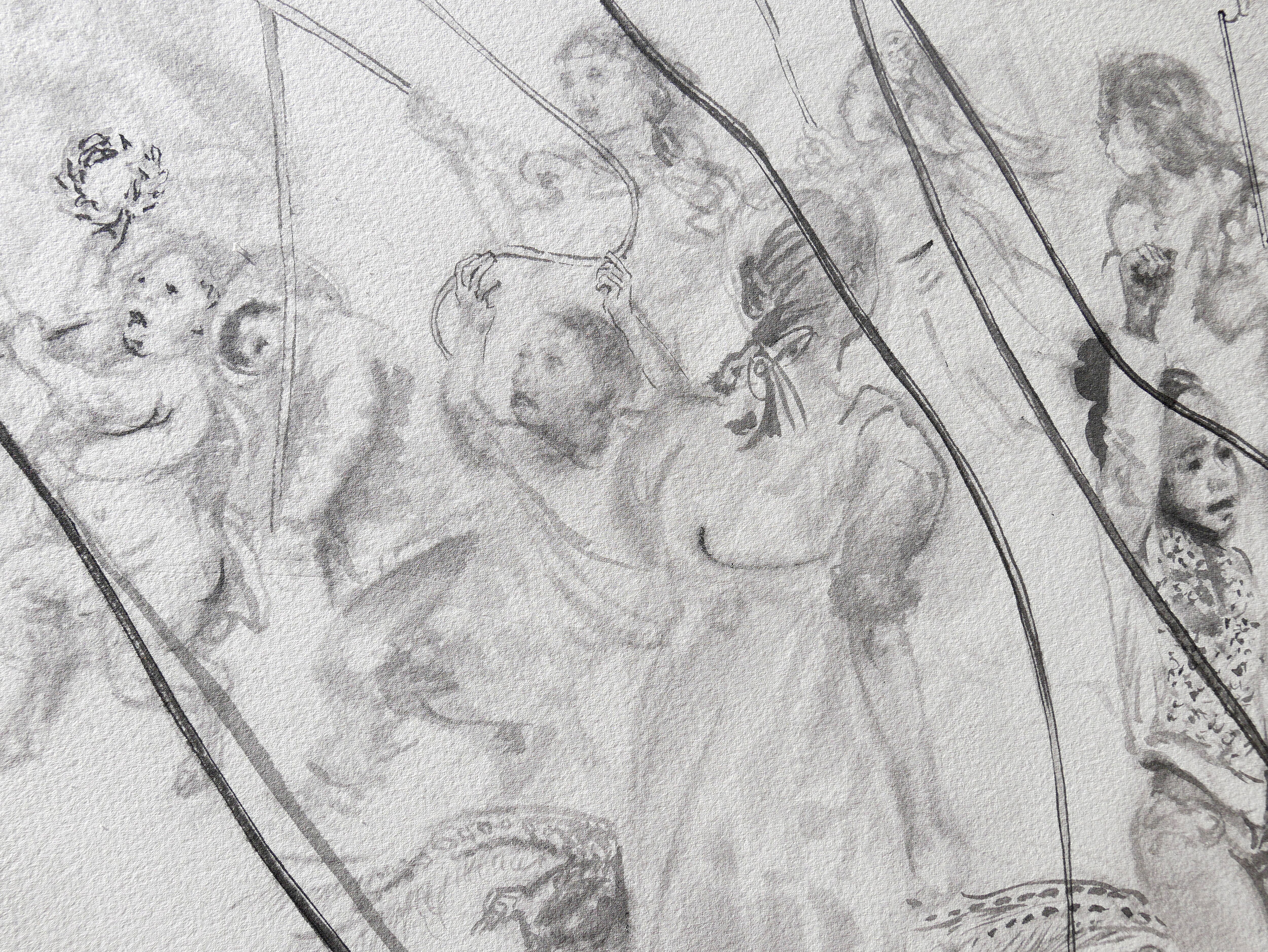
MADISON IN MAY 2019
detail
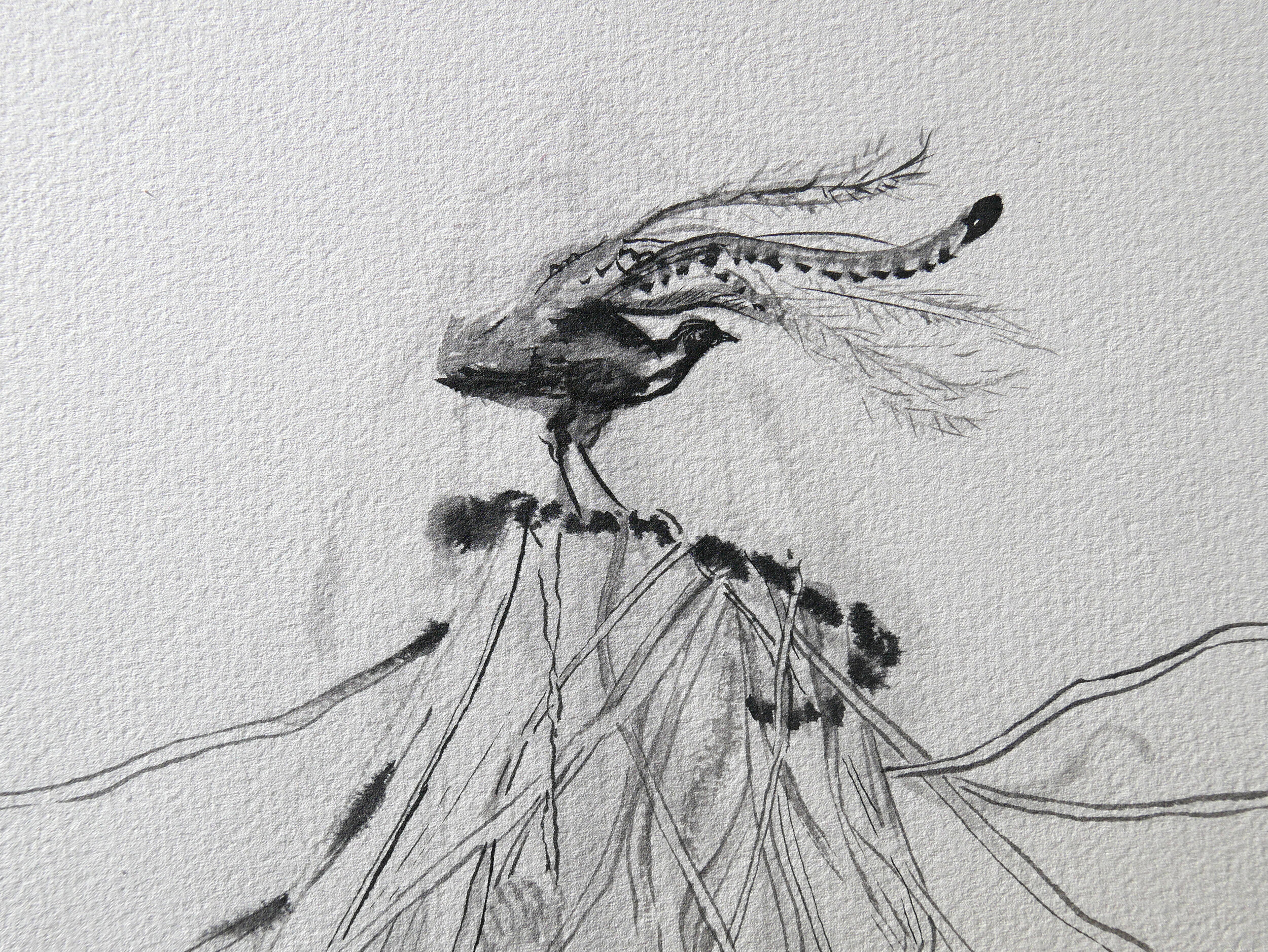
MADISON IN MAY 2019
Detail of bird
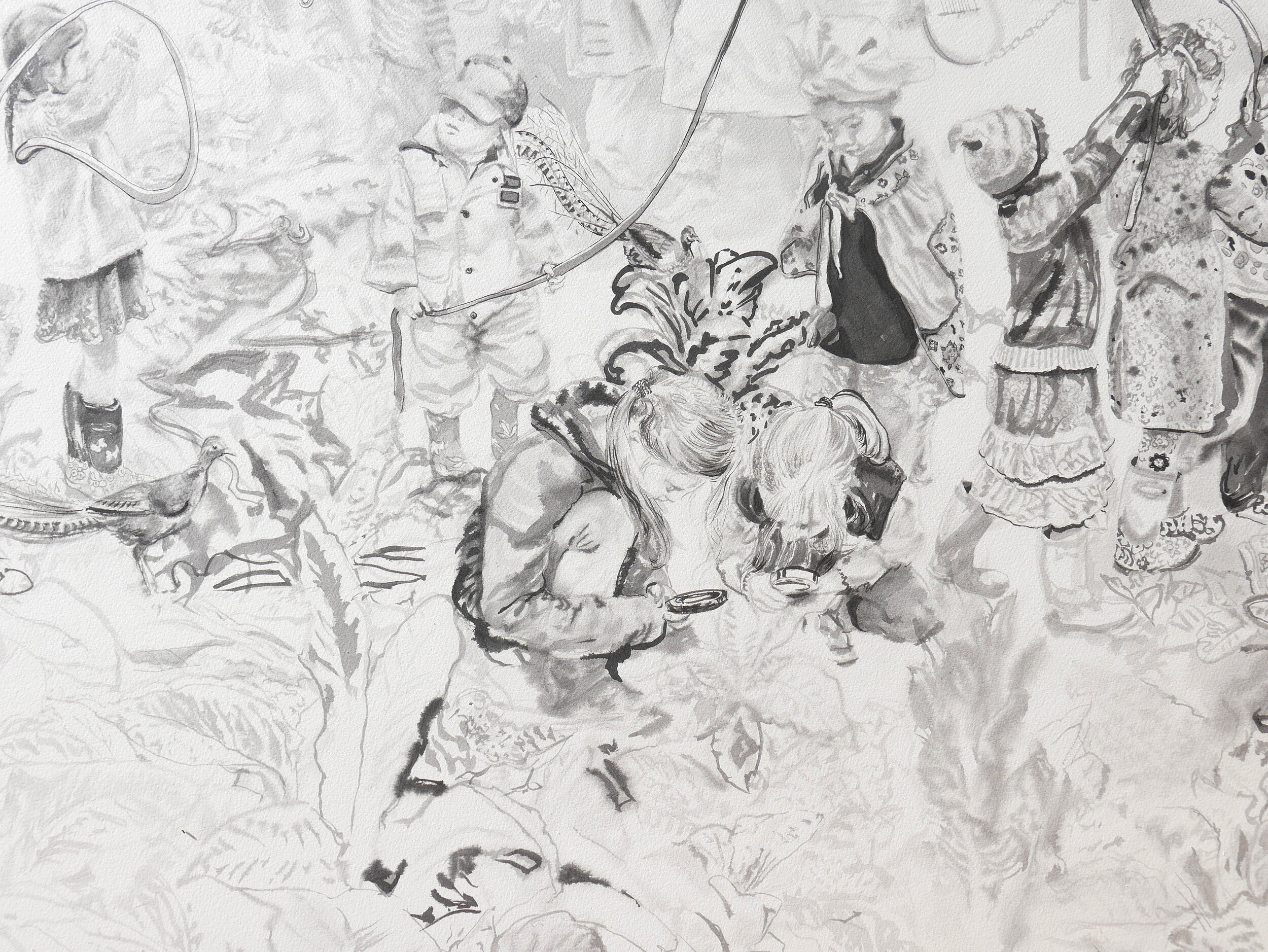
MADISON IN MAY 2019
Detail of girls with magnifying glasses
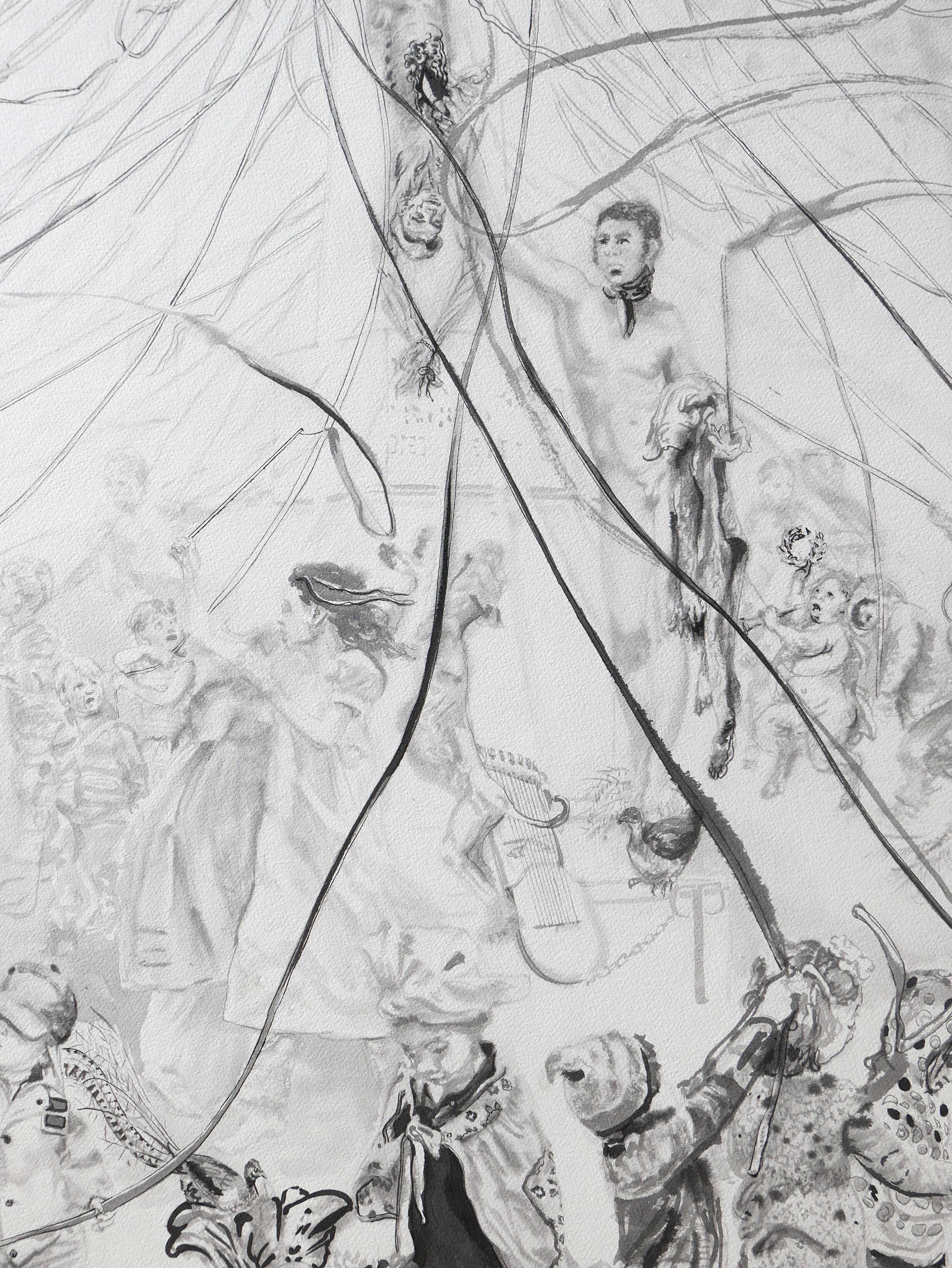
MADISON IN MAY 2019
Detail of flayed Madison and lyre
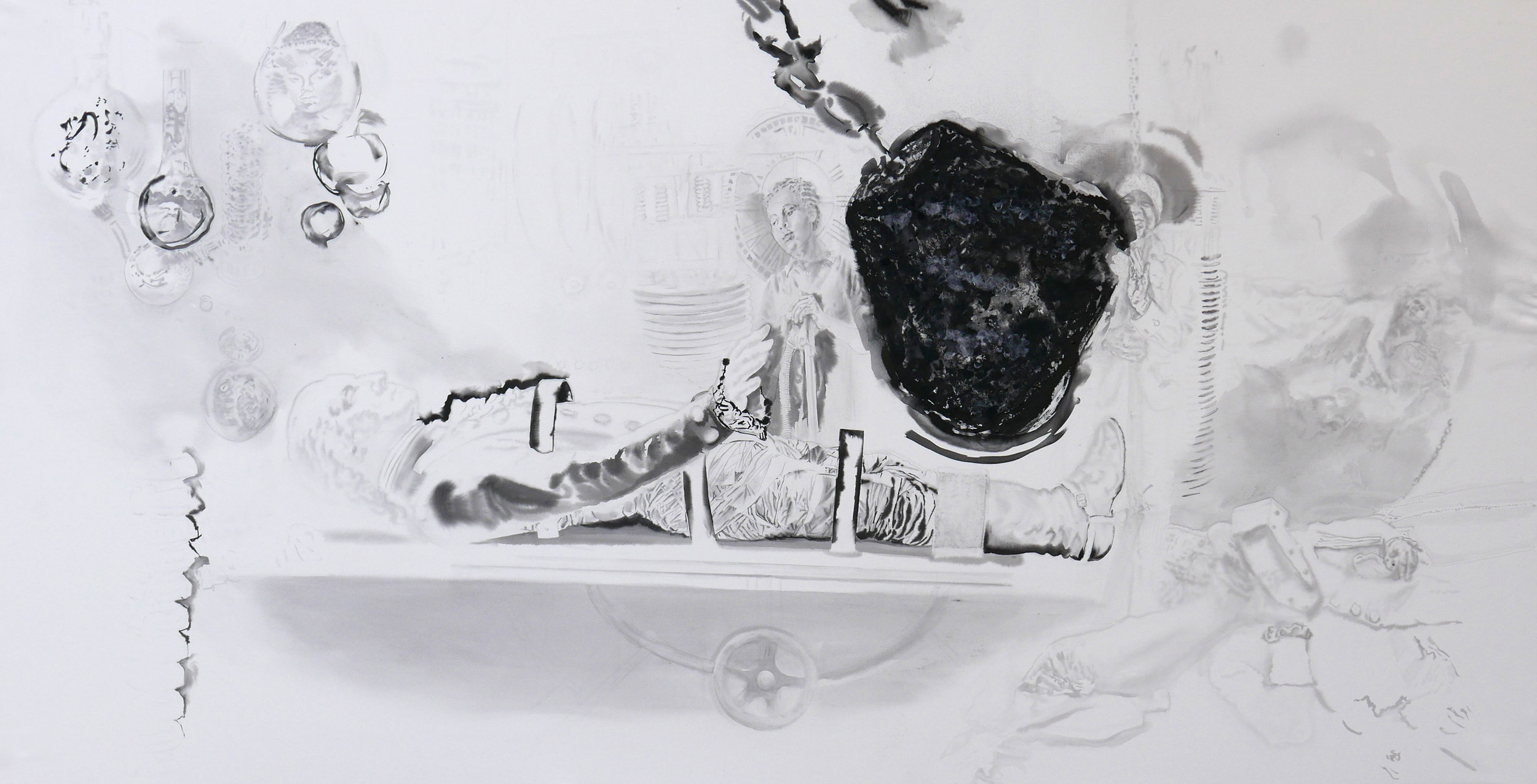
THE CREATION OF G. W. 2018
Ink and wax on paper, 58 x 108 inches
The first of our presidents who enslaved people, George Washington is shown reclining in a mythical laboratory from the 1931 Frankenstein film.
A typical defense of slavery was that it was practiced by ‘men trapped by their own time’. These men embraced this trap, benefitting from the largest slave economy in the Americas, a 400-year old economy still indebted to this fact.
The glass bubbles in the children’s mobile floating above Washington’s head resemble the test tube vessels of the supposed Enlightenment. They contain the ghosts of abolitionists who led many others who knew slavery was wrong. Were they also trapped in their time? They include: the influential Benjamin Lay; Olaudah Equiano (who was kidnapped from his Nigerian village, sold into slavery, survived the horrors of the Middle Passage, served several masters, purchased his freedom in 1766, moved to England, and became an abolitionist activist and one of the earliest proponents for interracial marriage); and Mum Bett, aka Elizabeth Freeman (who survived being hit and burned by her master with a hot shovel, and, based on Massachusett’s new constitution proclaiming all residents were “born free and equal,” sued the state and won her freedom, laying the groundwork for the state’s abolition of slavery in 1783).
At the operating table’s fulcrum, Washington’s bandaged arm extends in a magnanimous gesture. Chronos, as a custodian, appraises his appeal.
Barely visible supporting Washington’s boot, as a visual pun, is the musket of an African American soldier.
Washington knew whoever armed Black men the fastest would win the Revolutionary War; but he suggested executing any who would seek freedom by joining the British.
New England also promised freedom to enslaved blacks if they served in the Continental Army. Over the course of the war, about one-fifth of that army was Black.[16] Washington ordered re-enlisting freed Black men who had already served, worrying that some might cross over to the British. An estimated 20,000 African Americans joined the British cause while 9000 became Black Patriots fighting against the British.
Waiting in the wings of this drawing, fallen statues try to escape the demolition site with their dreams of world domination.
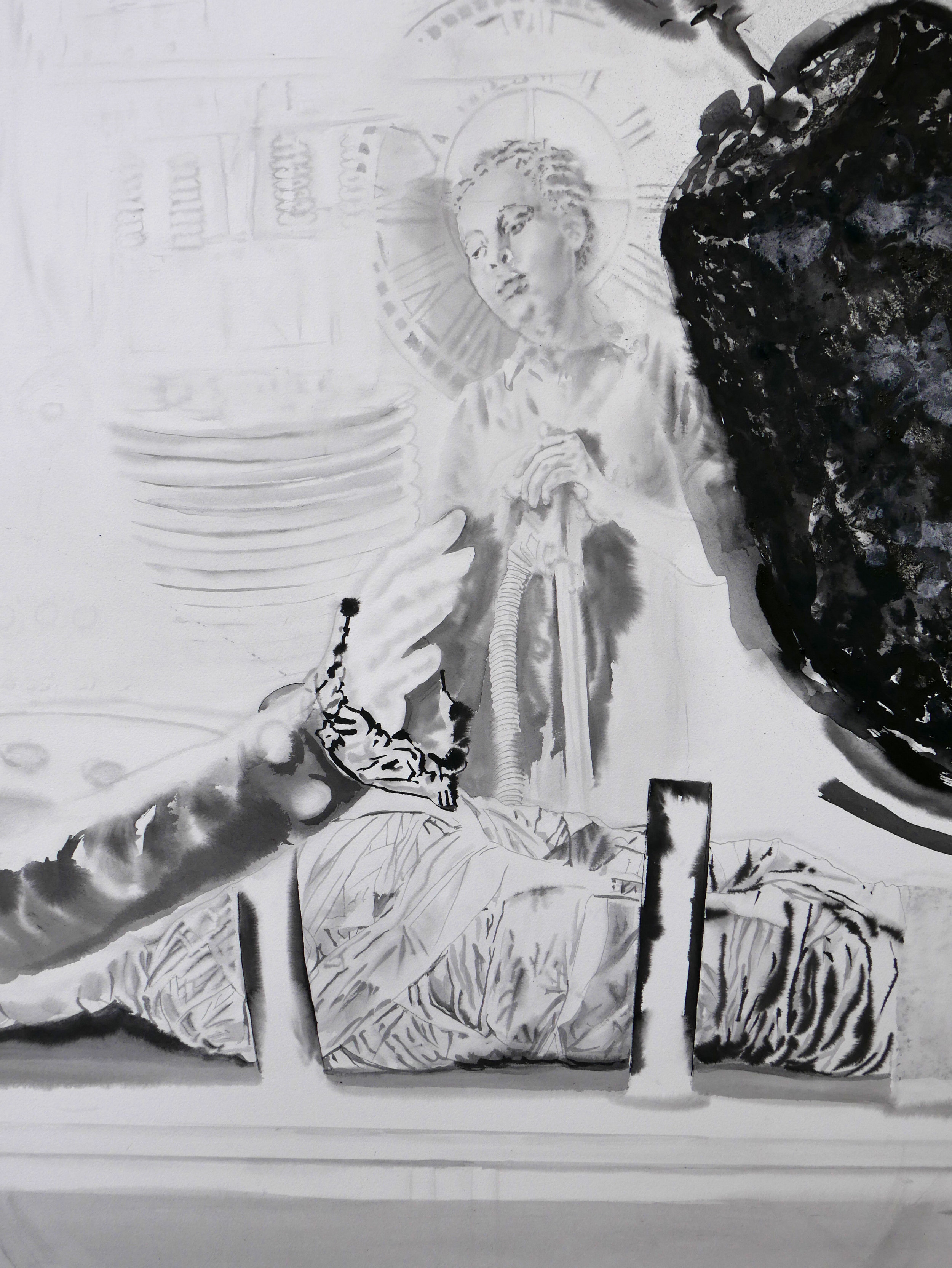
Detail of THE CREATION OF GEORGE WASHINGTON, 2018
At the operating table’s fulcrum, Washington’s bandaged arm extends in a magnanimous gesture. Chronos, as a custodian, appraises his appeal.
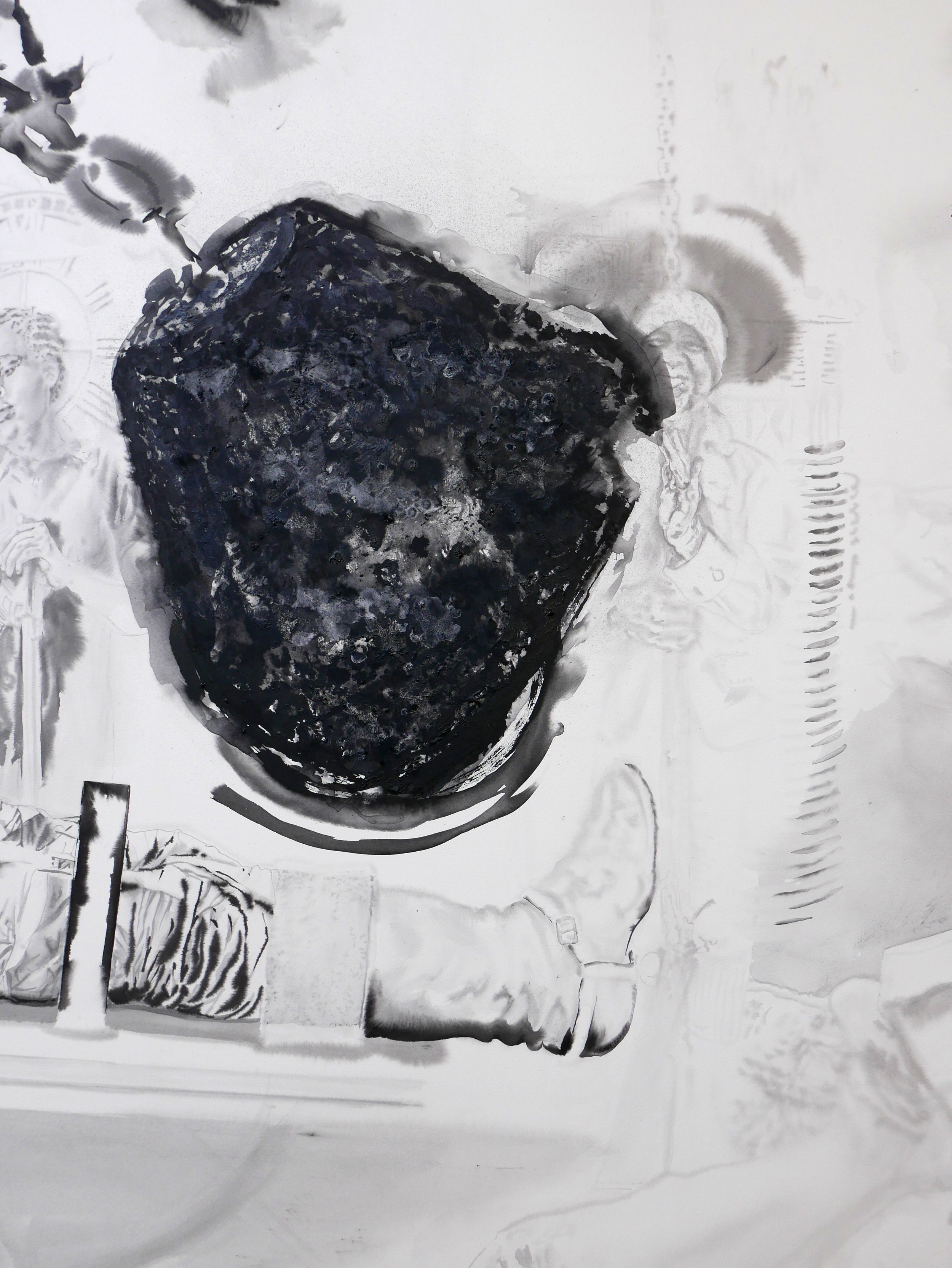
Detail of THE CREATION OF GEORGE WASHINGTON, 2018
Detail of Mum Bett, aka Elizabeth Freeman, who survived being hit and burned by her master with a hot shovel. Based on Massachusett’s new constitution proclaiming all residents were “born free and equal,” she sued the state and won her freedom, laying the groundwork for the state’s abolition of slavery in 1783.
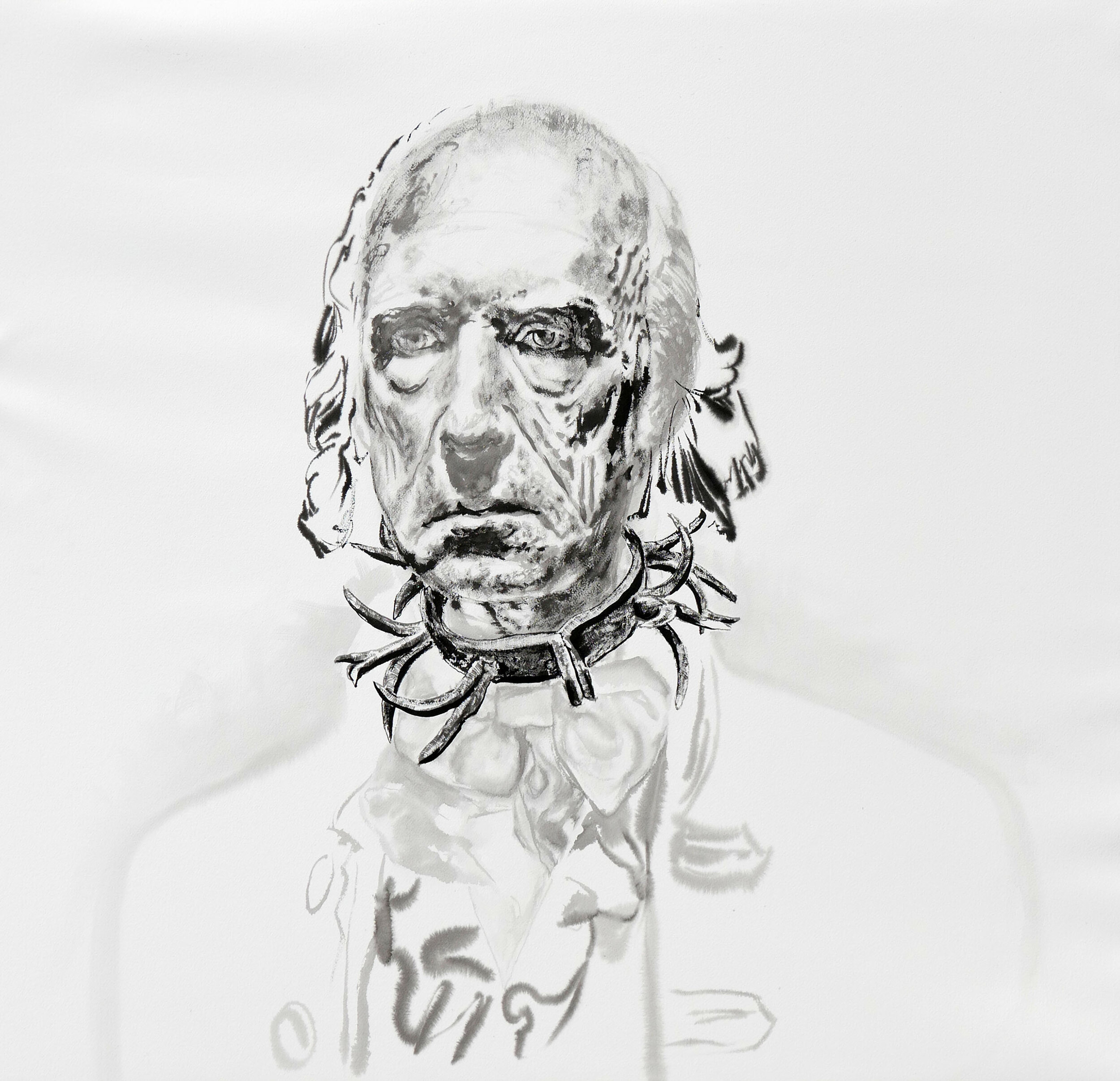
5' 4", 88; Responds to "Master", 2019
Ink on paper, 40 x 43 inches
In a form of revenge fantasy, James Madison, who freed none of his 100 enslaved workers, bears an iron collar. It is just one sampling of the cruel hardware that controlled and punished the enslaved.
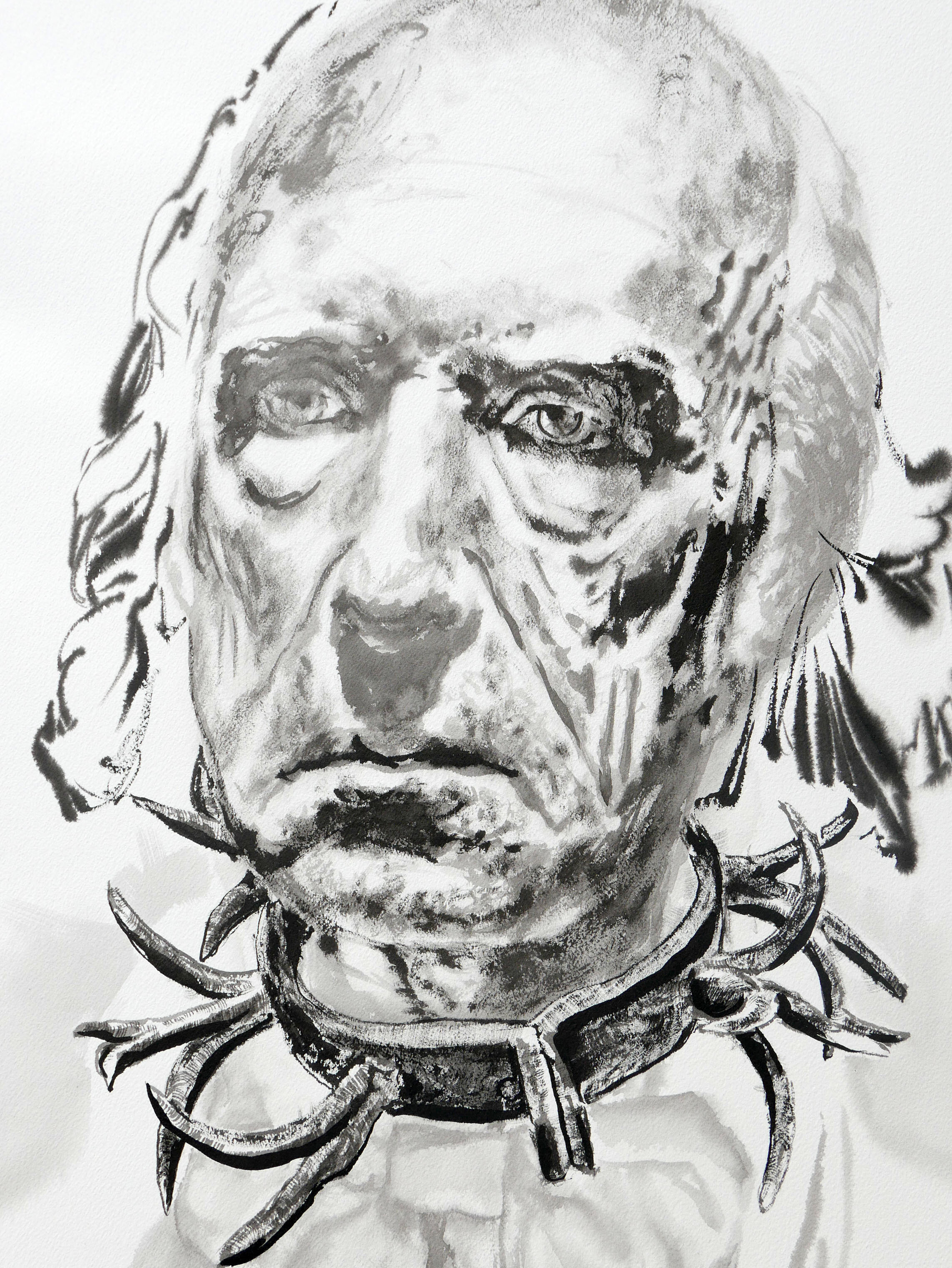
5' 4", 88; Responds to "Master", 2019
Detail
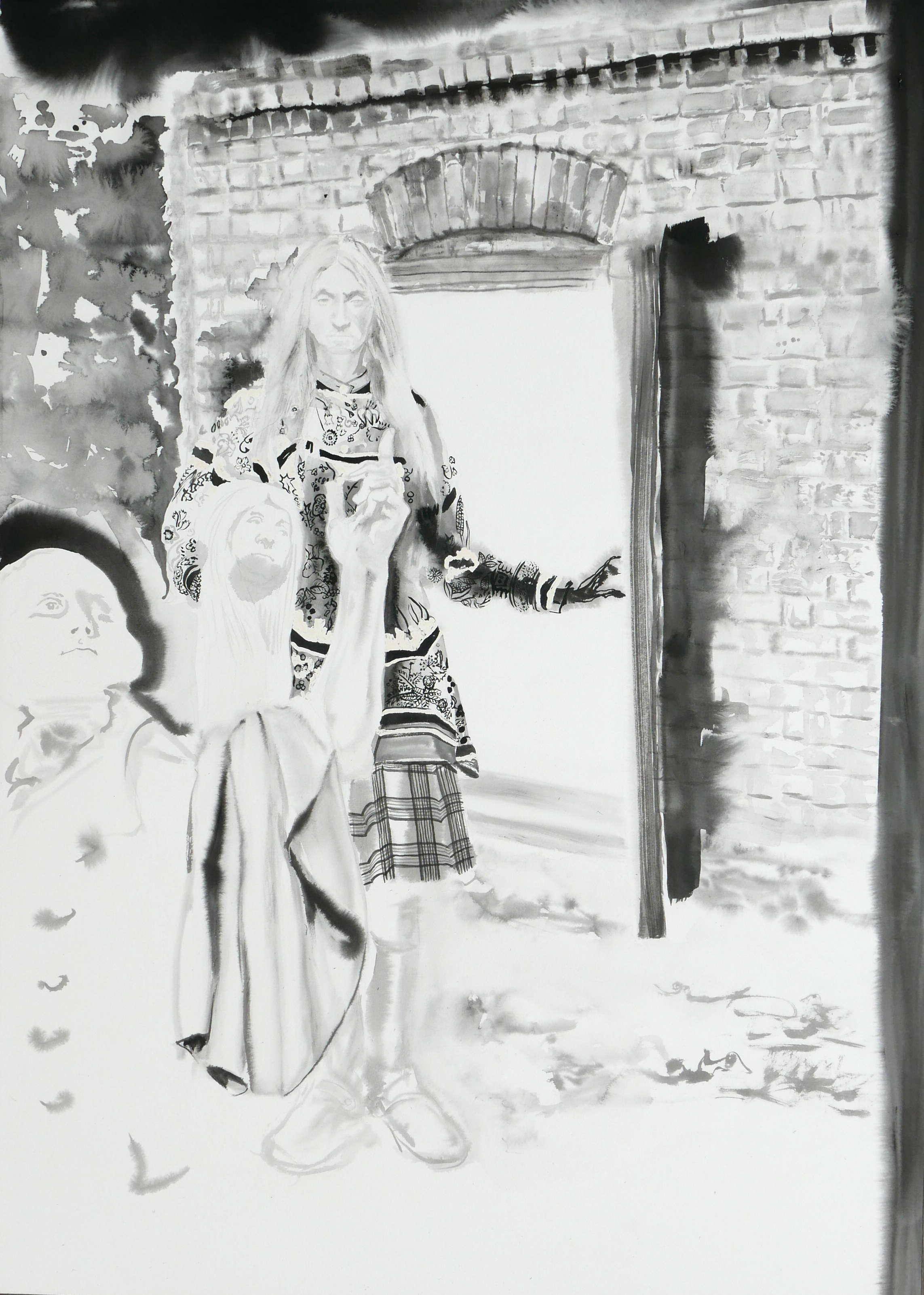
TOMB OF USHER 2018
Ink on paper, 44 x 30.5 inches
Preparatory drawing for Flaying Father: George Washington Cardiff
This triple portrait presents an idealized George Washington as a white supremacist gesturing heavenward, and as a Gucci garbed spirit-usher holding his own death mask with his wig hair let down. The usher beacons toward a white void—a white supremacist nether world.
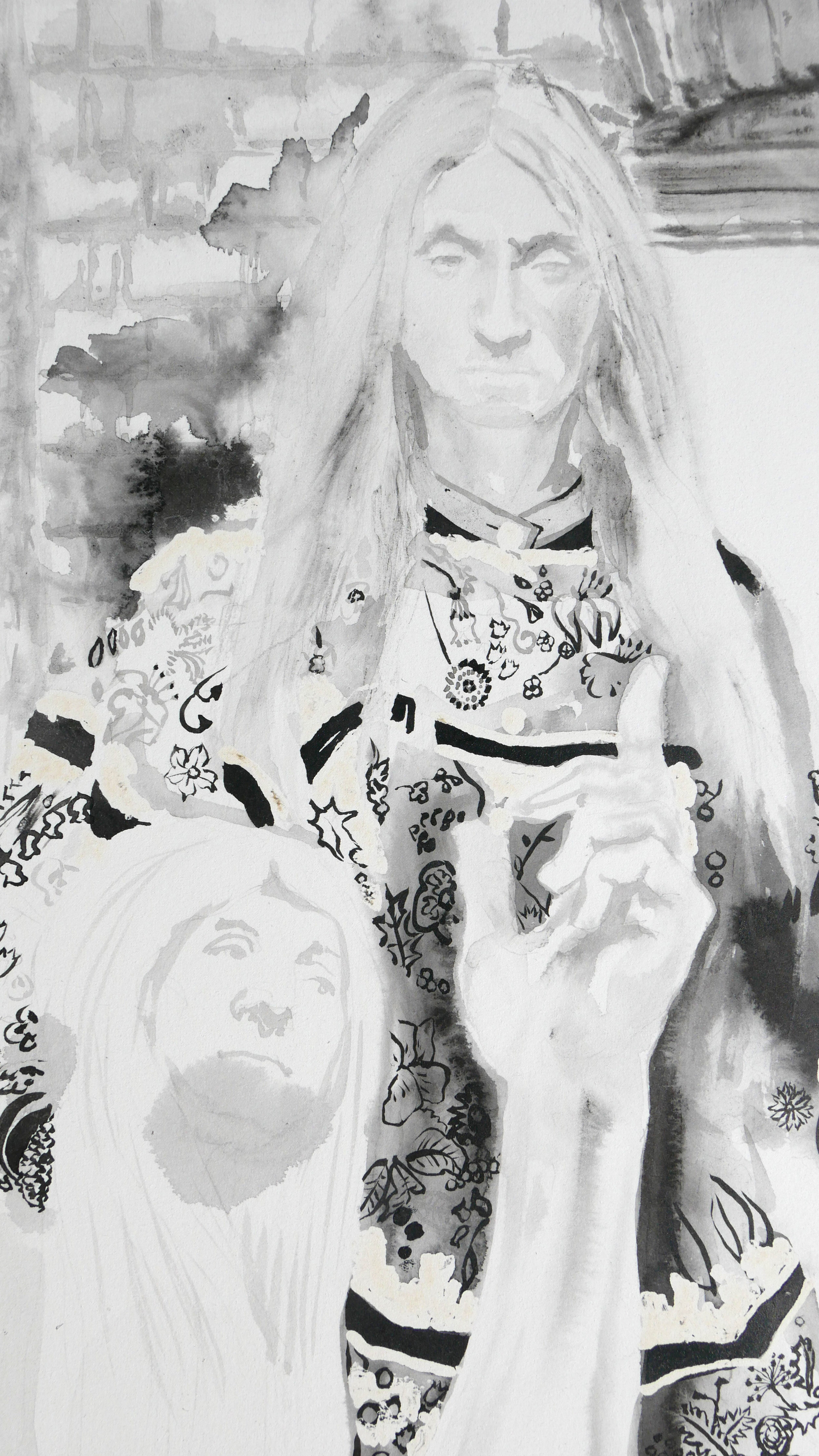
Detail of TOB OF USHER 2018
Detail of preparatory drawing for Flaying Father: George Washington Cardiff
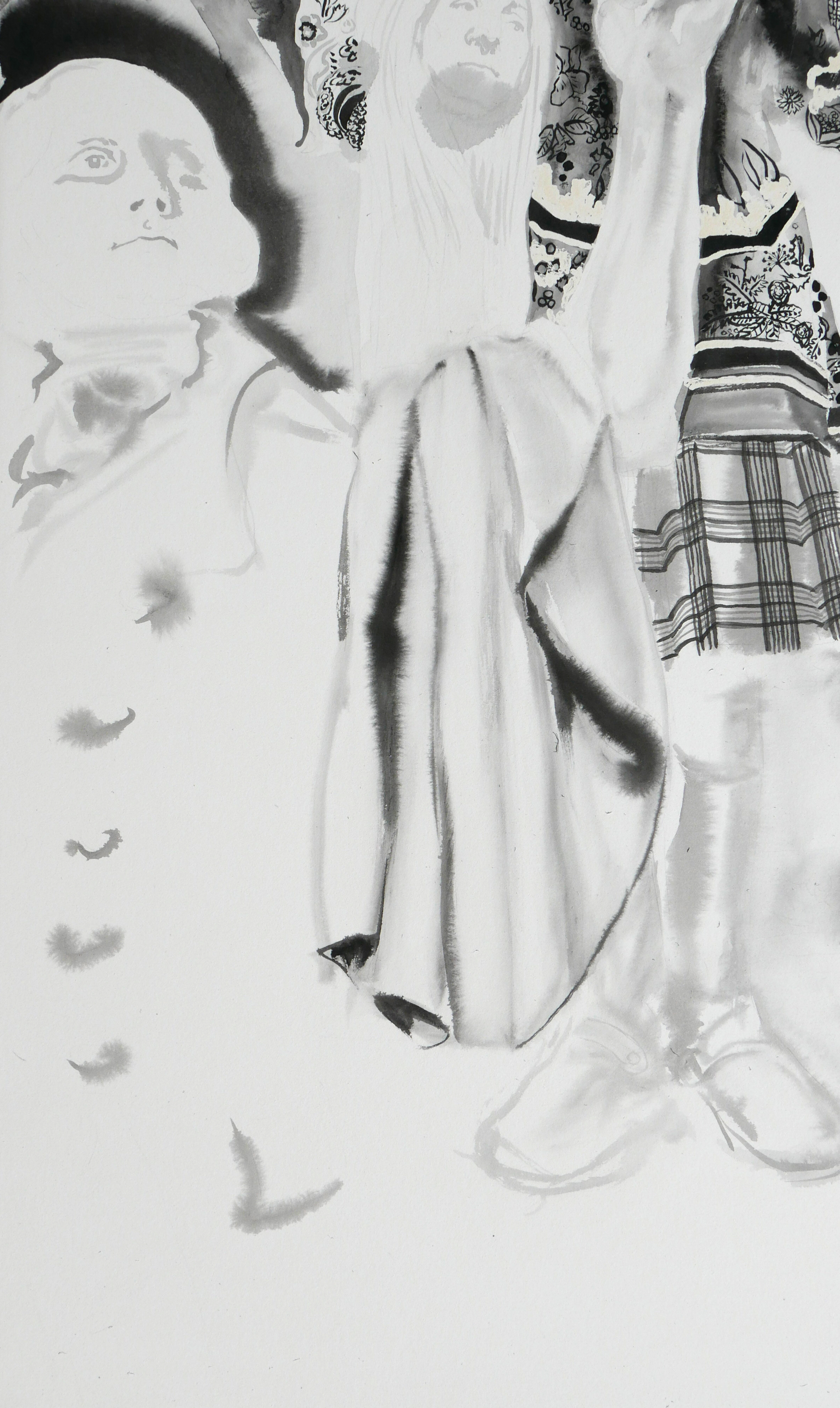
Detail of TOMB OF USHER 2018
Detail of preparatory drawing for Flaying Father: George Washington Cardiff
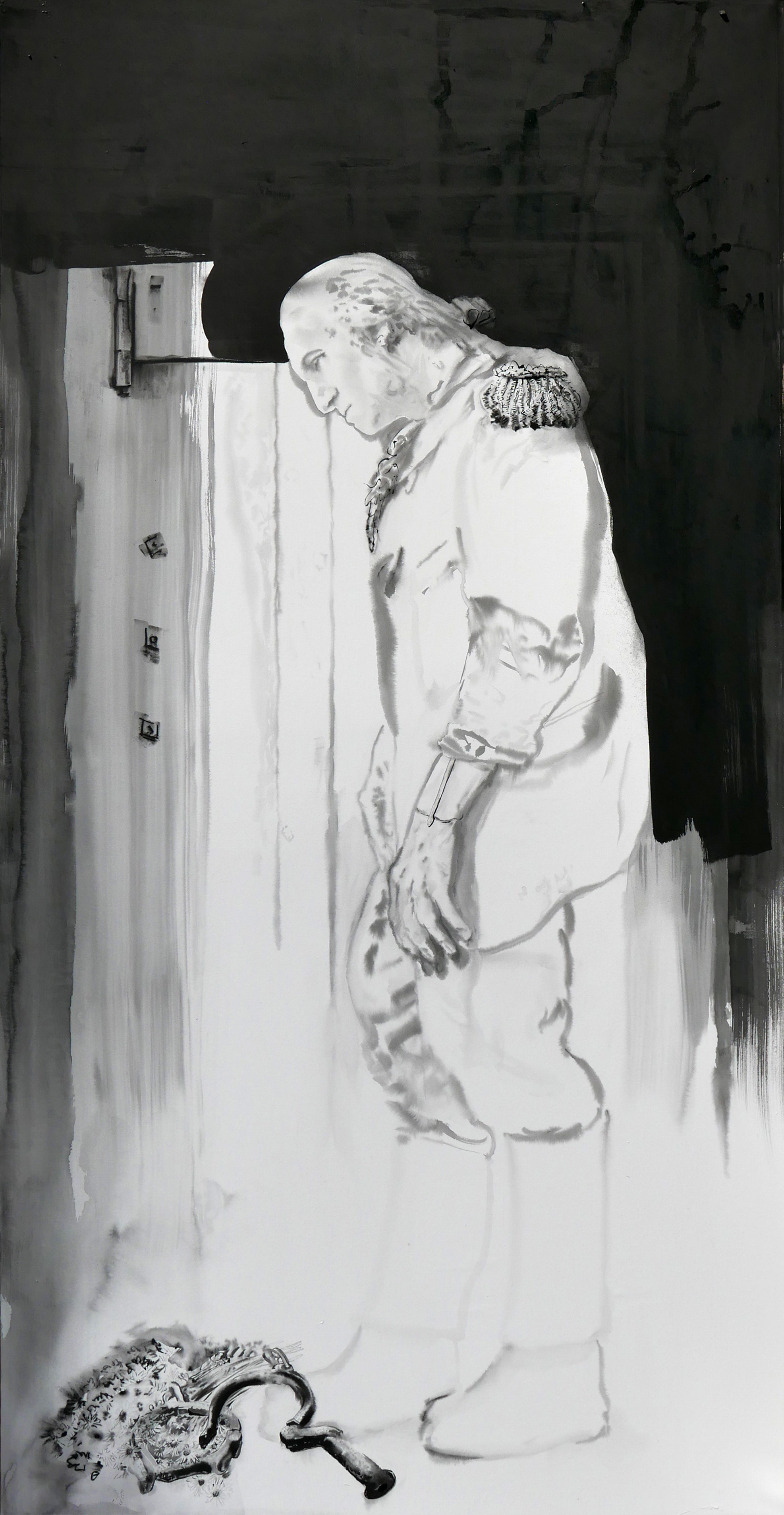
INNOCENCE 2018
Ink on paper, 90.5 x 43.25 inches
George Washington was the first of five presidents of the United States who imposed slavery on people while in office. At the age of eleven, he took possession of ten people. He continued to enslave people for the next 56 years. He resorted to slave labor to build the White House rather than hire foreign labor. To retain his slaves, he evaded the Gradual Abolition Act of 1780, by rotating those working for him in bondage so they would not qualify.
His will stipulated that 123 enslaved people were to be kept in bondage until after his wife’s death. While some were emancipated in 1801, many others legally enslaved on Mount Vernon remained in bondage.
In this and other works, Washington is presented as a giant Frankenstein, the miraculous image of the new nation.
Like the creature Frankenstein, he is awkwardly pieced together from corpses, constructed from selective memories and myths of American history. Gazing at cut flowers, he wistfully contemplates his legacy.
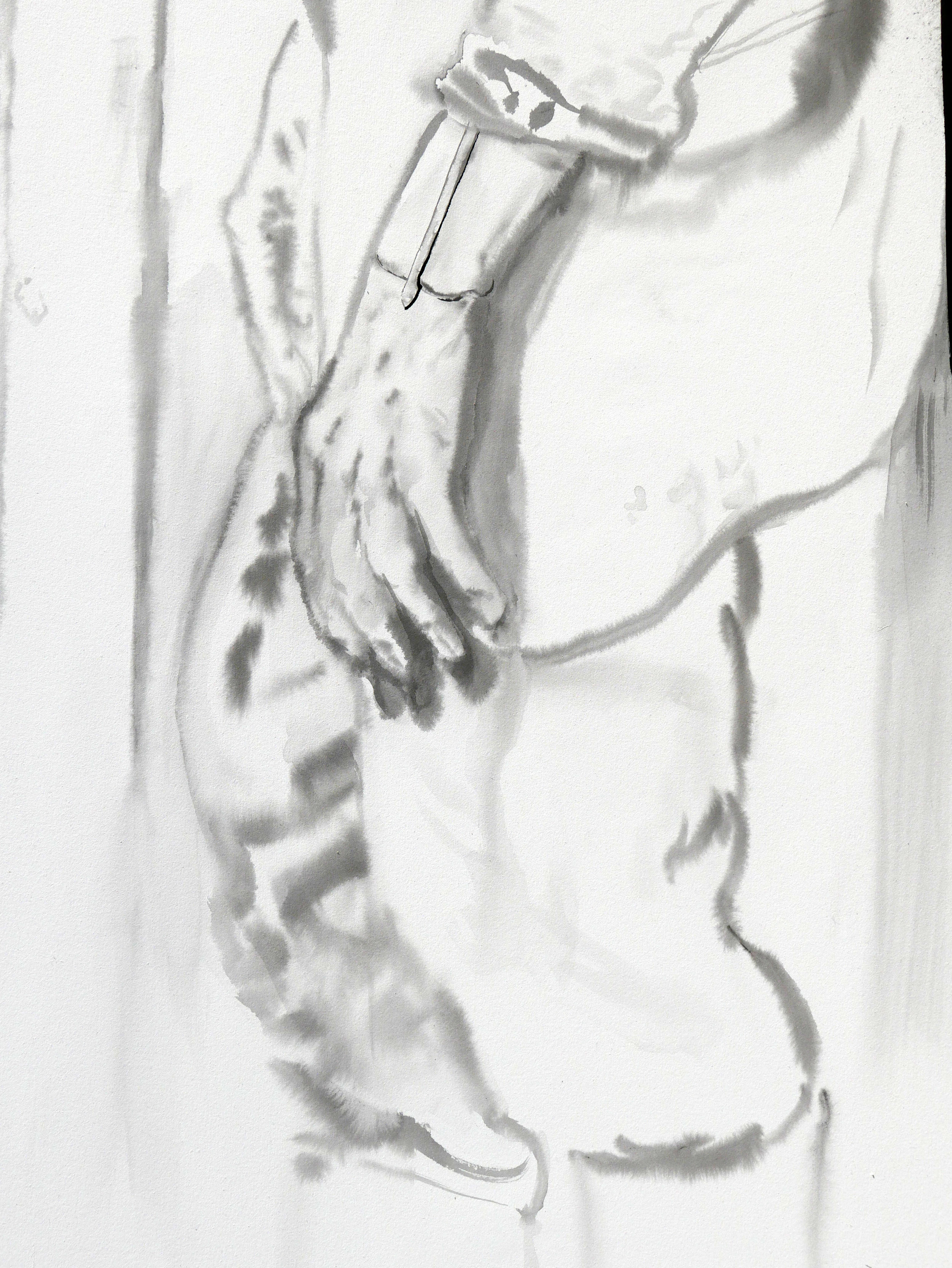
INNOCENCE 2018
Detail of George Washington’s hand
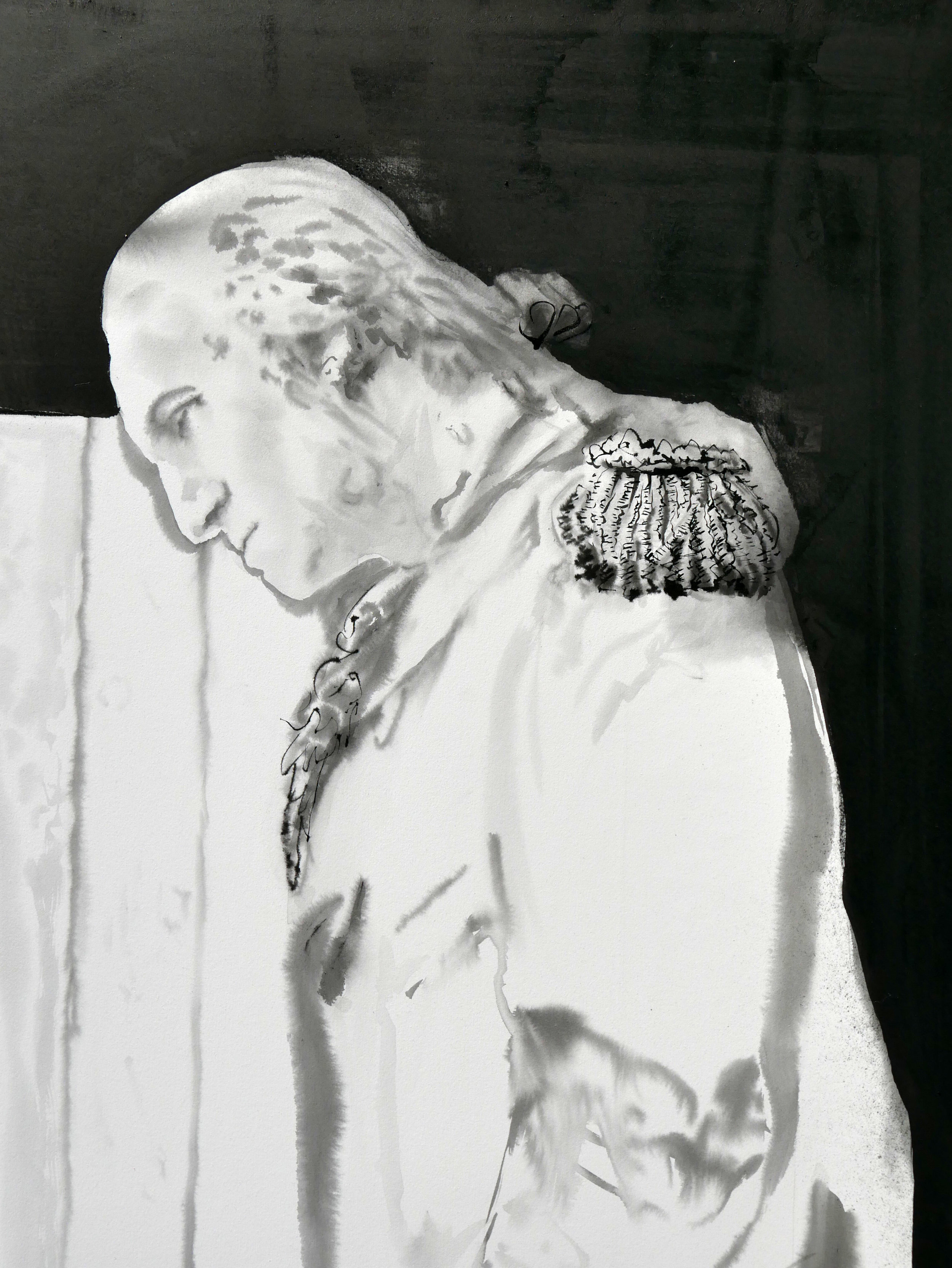
INNOCENCE 2018
Detail of George Washington
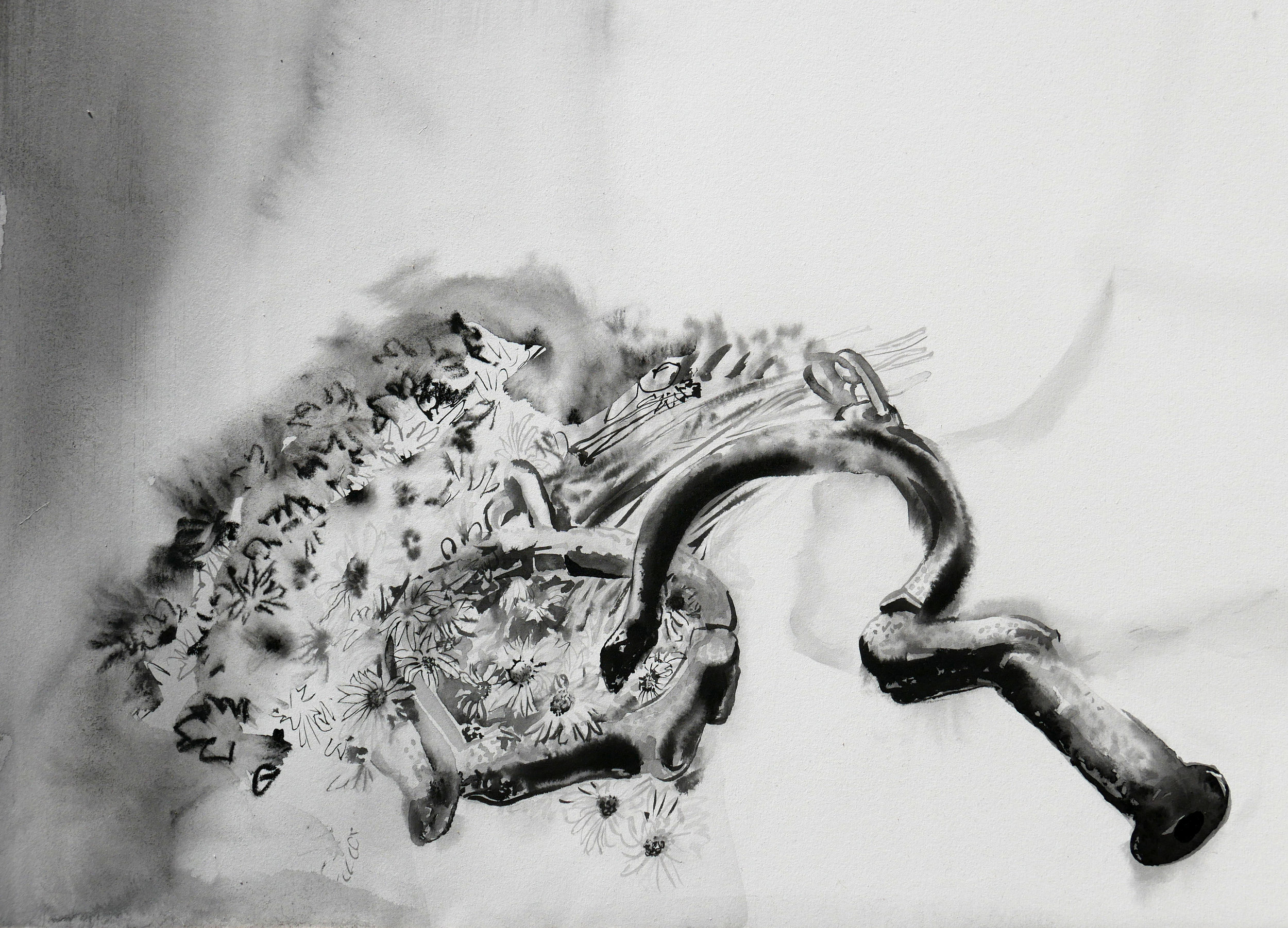
INNOCENCE 2018
Detail of flowers
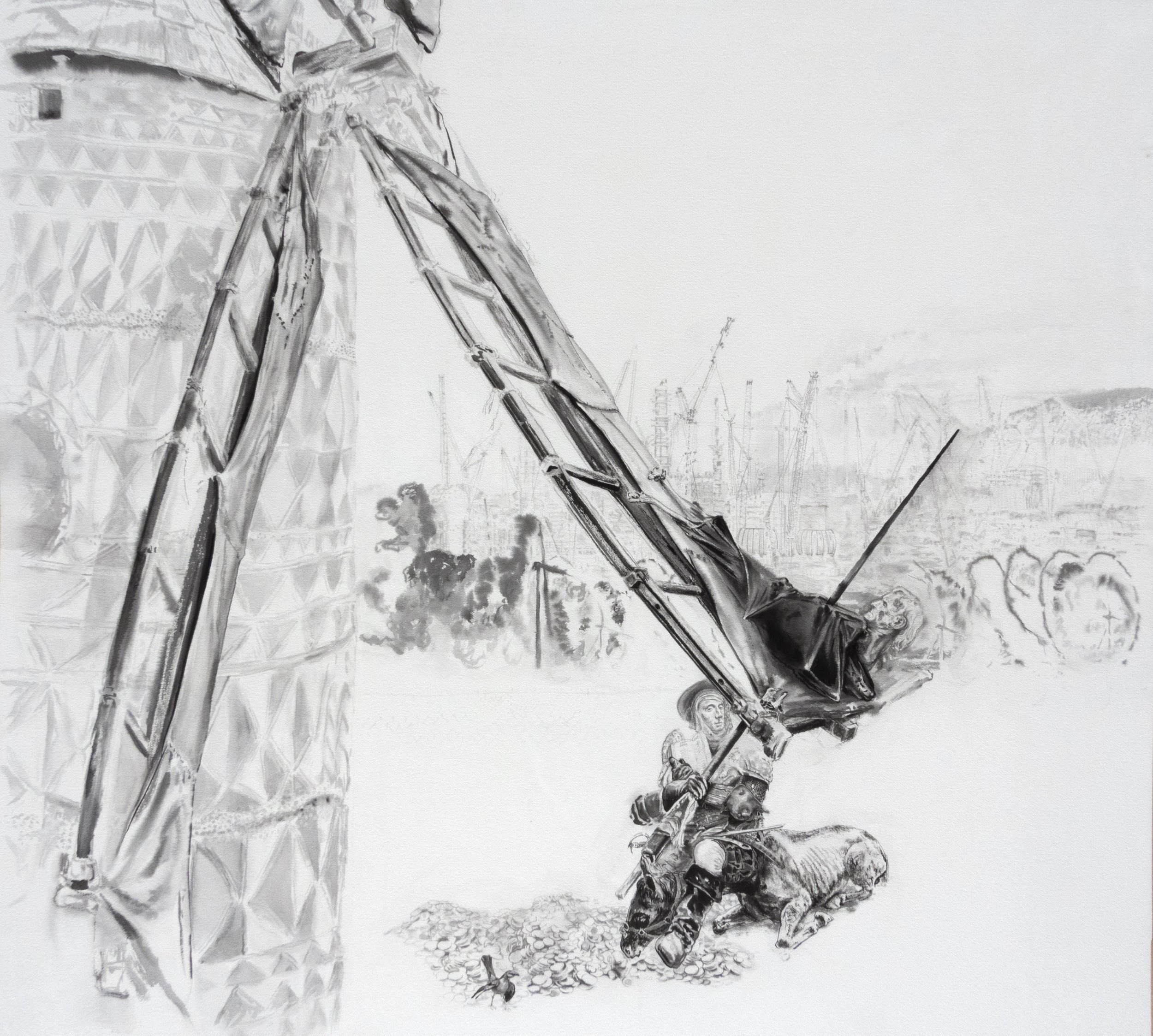
JEFFERSON SAVES SOME FOR THE CHARCOAL KILNS, 2023
Ink and gouache on paper, 50 x 56 inches
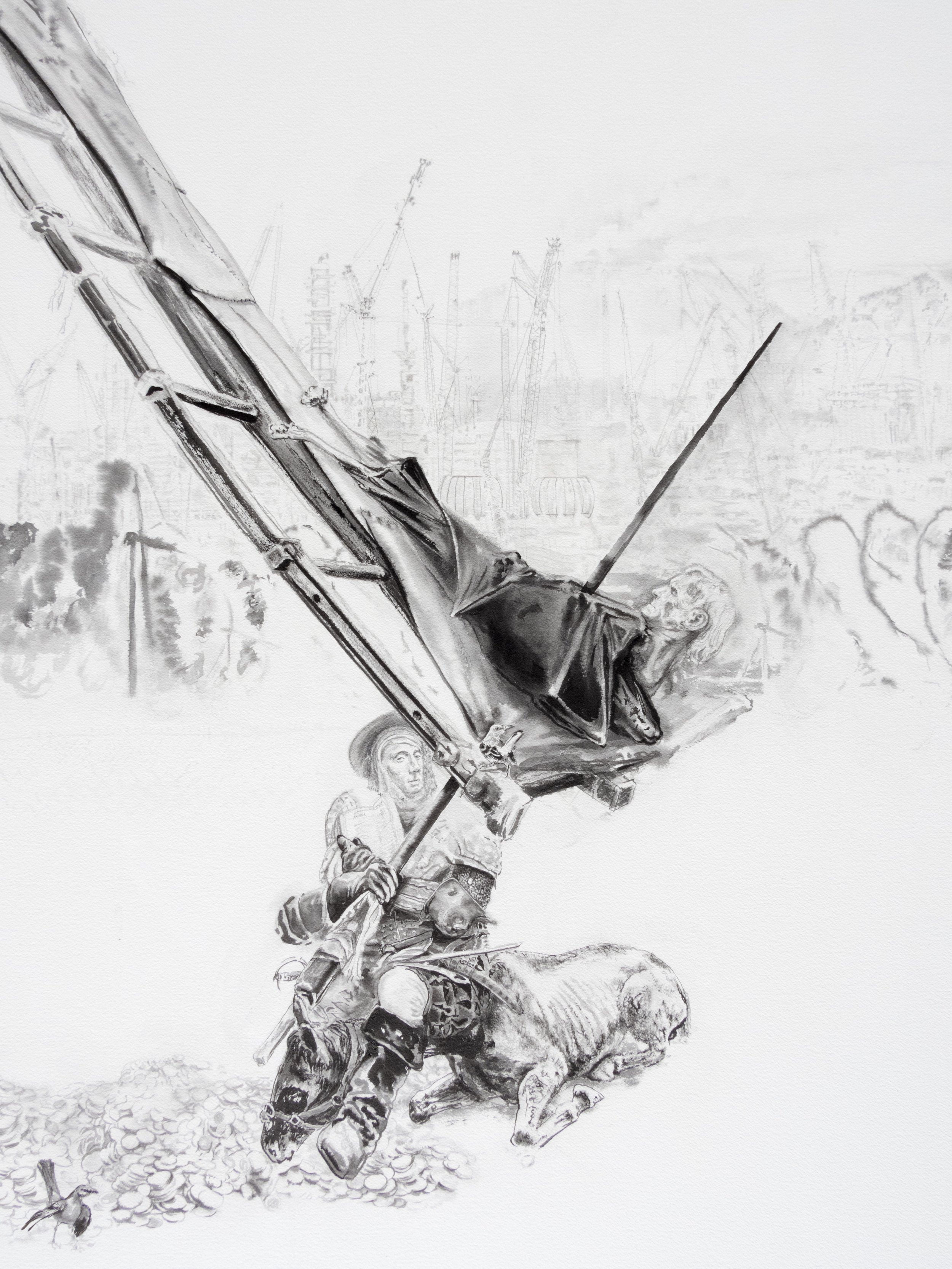
JEFFERSON SAVES SOME FOR THE CHARCOAL MILLS
Detail of Marquis de Lafayette on his quixotic quest to save Jefferson’s soul
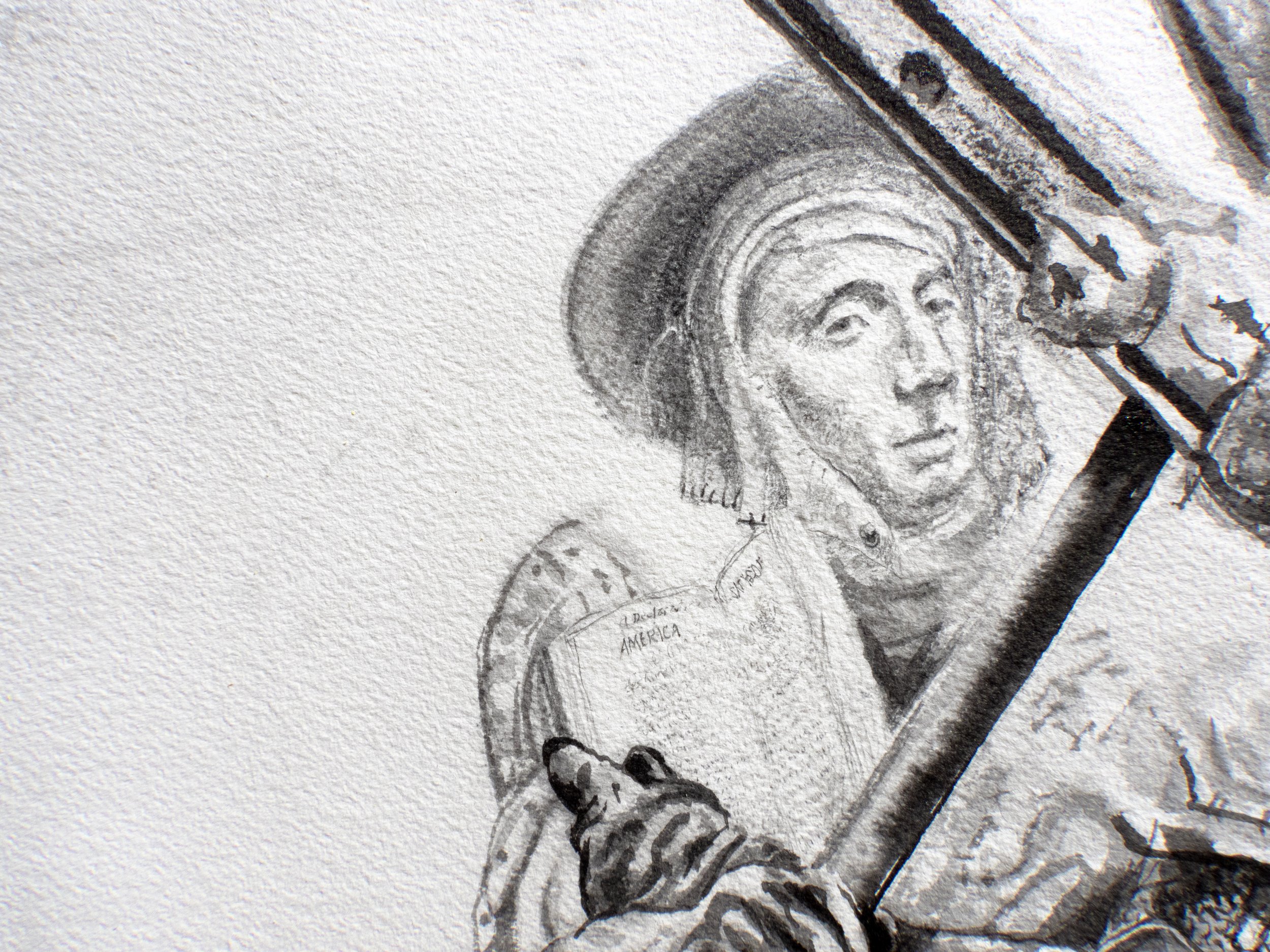
JEFFERSON SAVES SOME FOR THE CHARCOAL MILLS
Detail of Lafayette holding The Declaration of America
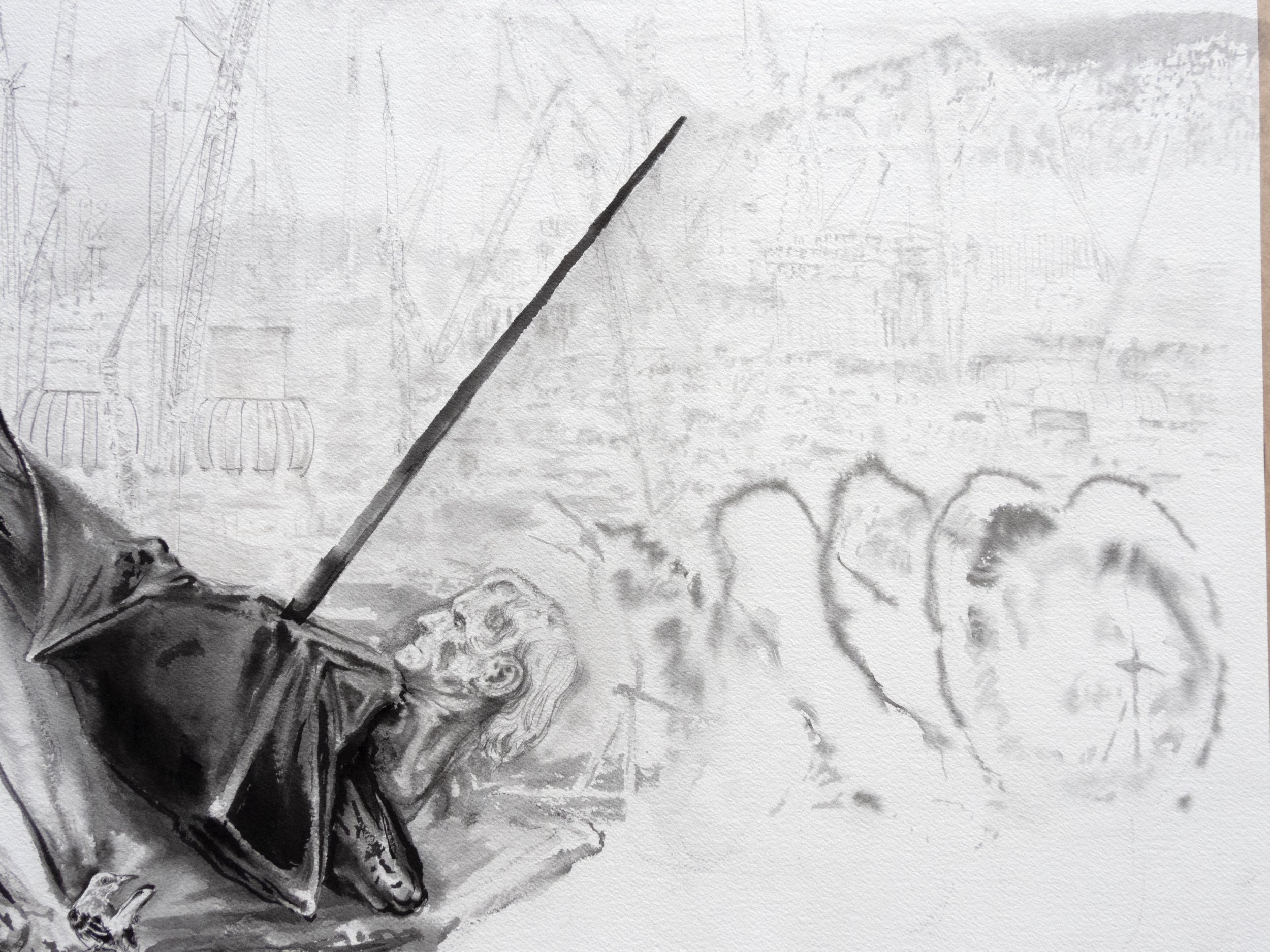
JEFFERSON SAVES SOME FOR THE CHARCOAL MILLS
Detail of Thomas Jefferson as a vampiric Giant, with cracker plants and burning windmills in the background
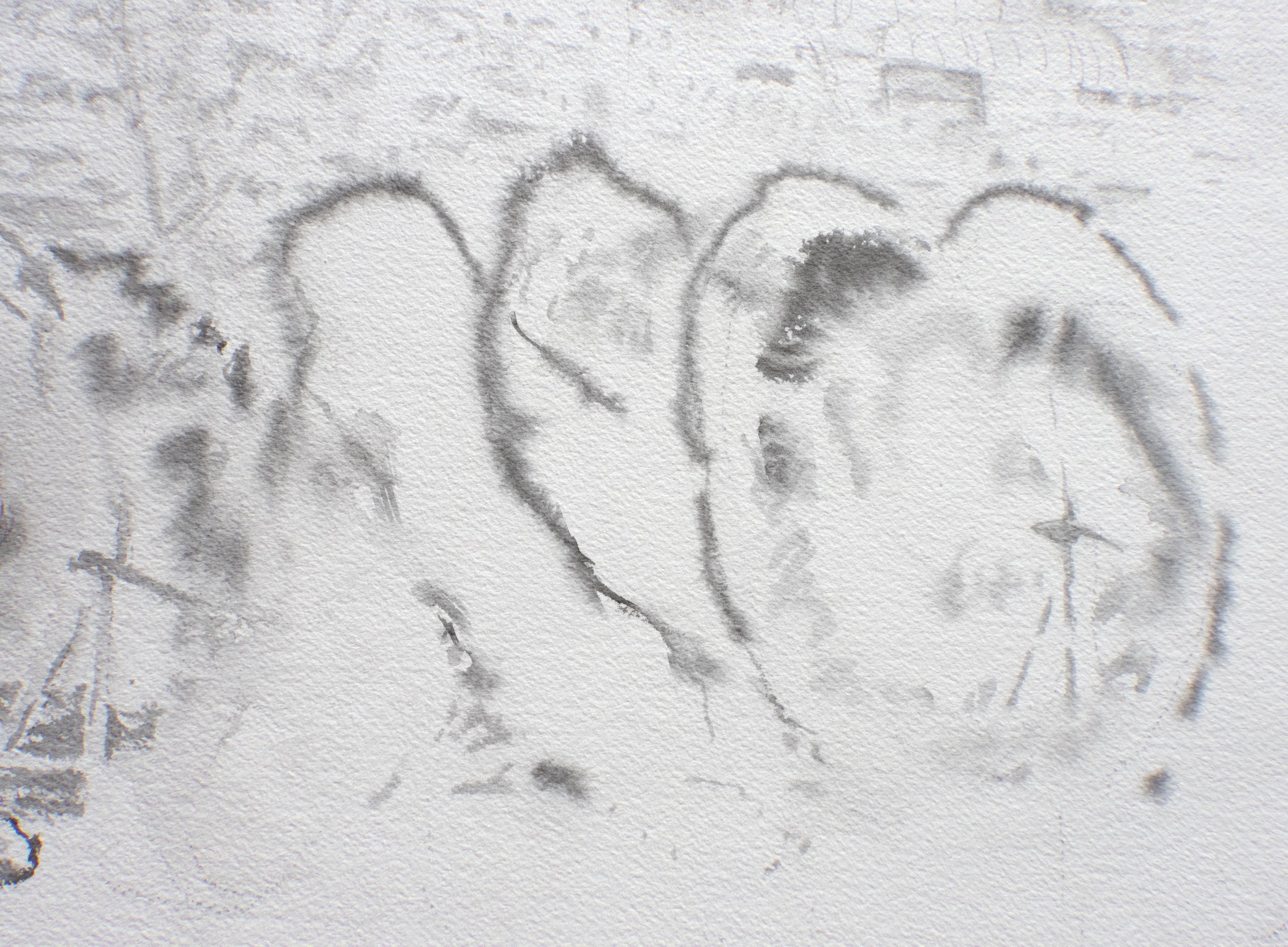
JEFFERSON SAVES SOME FOR THE CHARCOAL MILLS
Detail of burning windmills
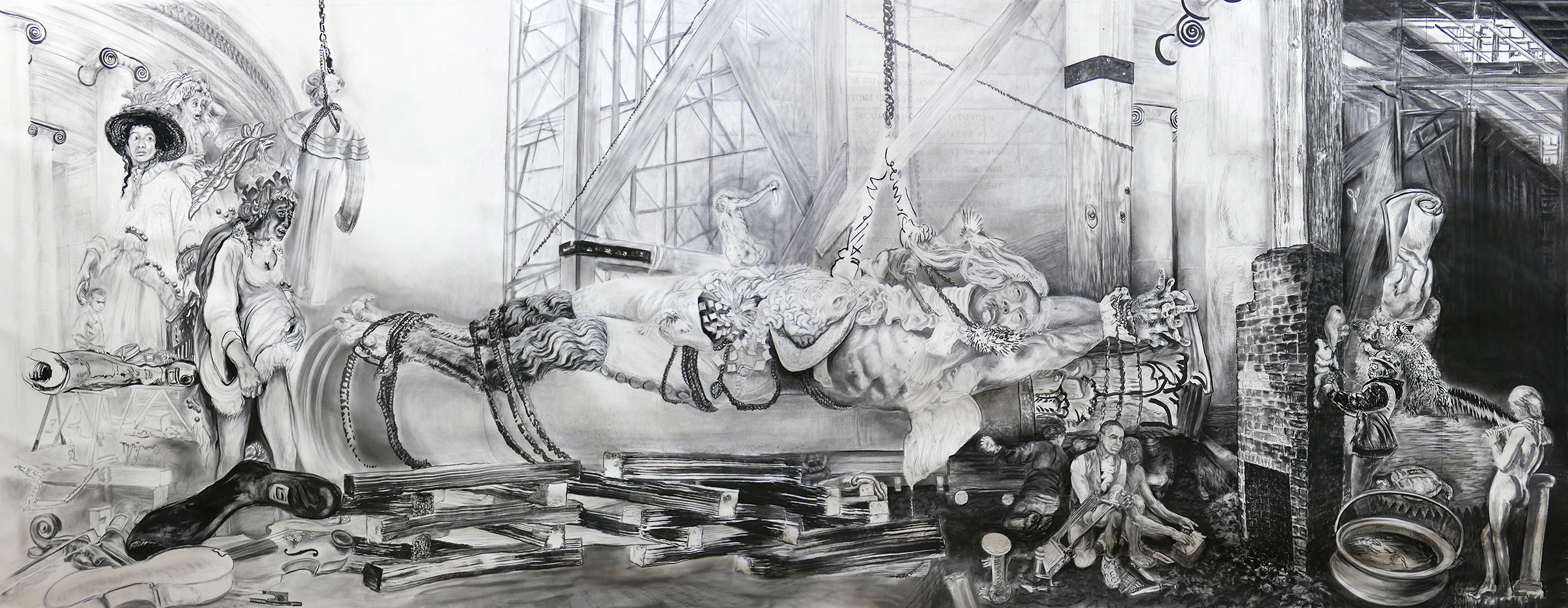
FLAYING FATHER: JEFFERSON MARSYAS, 2018
Charcoal, lumber crayon, ink and graphite on paper, 84 x 216 inches
Thomas Jefferson enslaved over 600 people during his lifetime, institutionalizing free labor that generated personal profit and grew unfathomable national prosperity. The constitutional heritage that our founding fathers forged is indeed foundational to today’s injustices. The system that served their interests still promotes political disenfranchisement, racism, property rights over human rights, and hypocritical rhetoric espousing democratic values. Willingly or unwillingly, we are all invested in this legacy.
‘Flaying’ refers to the hubris of the mythological Marsyas, who competes with and offends Apollo by playing his flute and whipping everyone into a frenzy—an apt metaphor for the incitement of demagogues, then and now. Accounts of his penalty vary—between having his flayed skin nailed to a pine tree or converted into a wine sack. His cruel fate warns against the self-congratulatory myths and actual practices of our nation—and their ominous repercussions.
Many telling details include: Jefferson’s deformed pleading hands and a lacy cravat floating above his flayed intestines, as well as the four mocking birds of Jefferson’s White House. Dick, his favorite bird, purchased from one of his father-in-law’s ‘slaves’, perches on the ropes that bind Jefferson’s satyr fetlocks.
Three portraits of Sally Hemings are grouped: one pregnant with the six known children fathered by Jefferson; another as she’s giving birth to ‘democracy,’ (a child born of what would now be considered statutory rape); and the third as a sixteen-year-old in Paris, where she was free. For all of Jefferson’s words about freedom, he brought her back to Monticello to serve with the “extraordinary privileges” of remaining in bondage for the rest of her life. The children he fathered with her were consigned to decades of enslavement. Over the next 32 years, Sally Hemings raised Beverly, Harriet, Madison, and Eston—and prepared them for their eventual emancipation. She did not negotiate for, or ever receive, legal freedom in Virginia.

Working on FLAYING FATHER: JEFFERSON MARSYAS
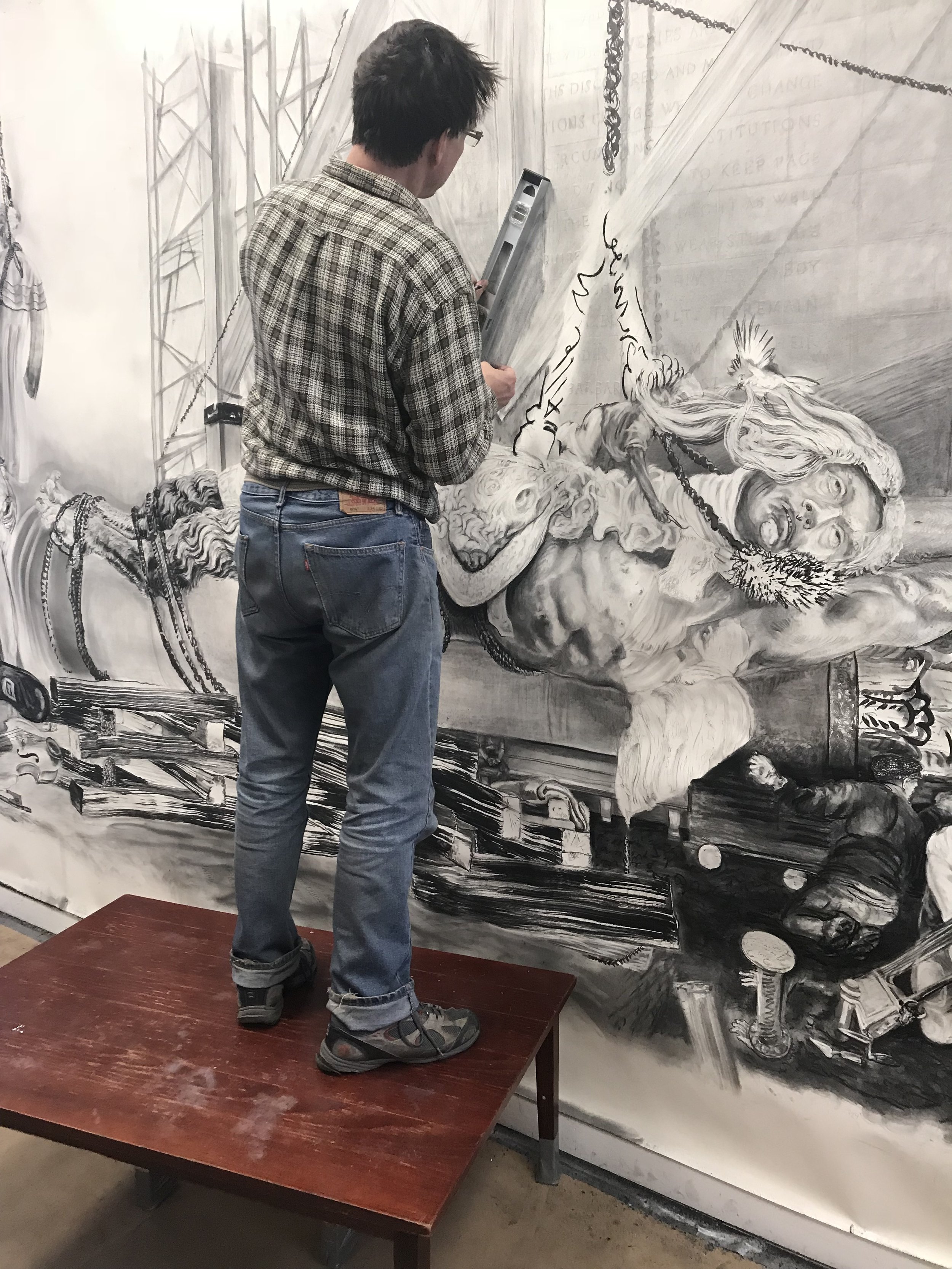
Working on FLAYING FATHER: JEFFERSON MARSYAS
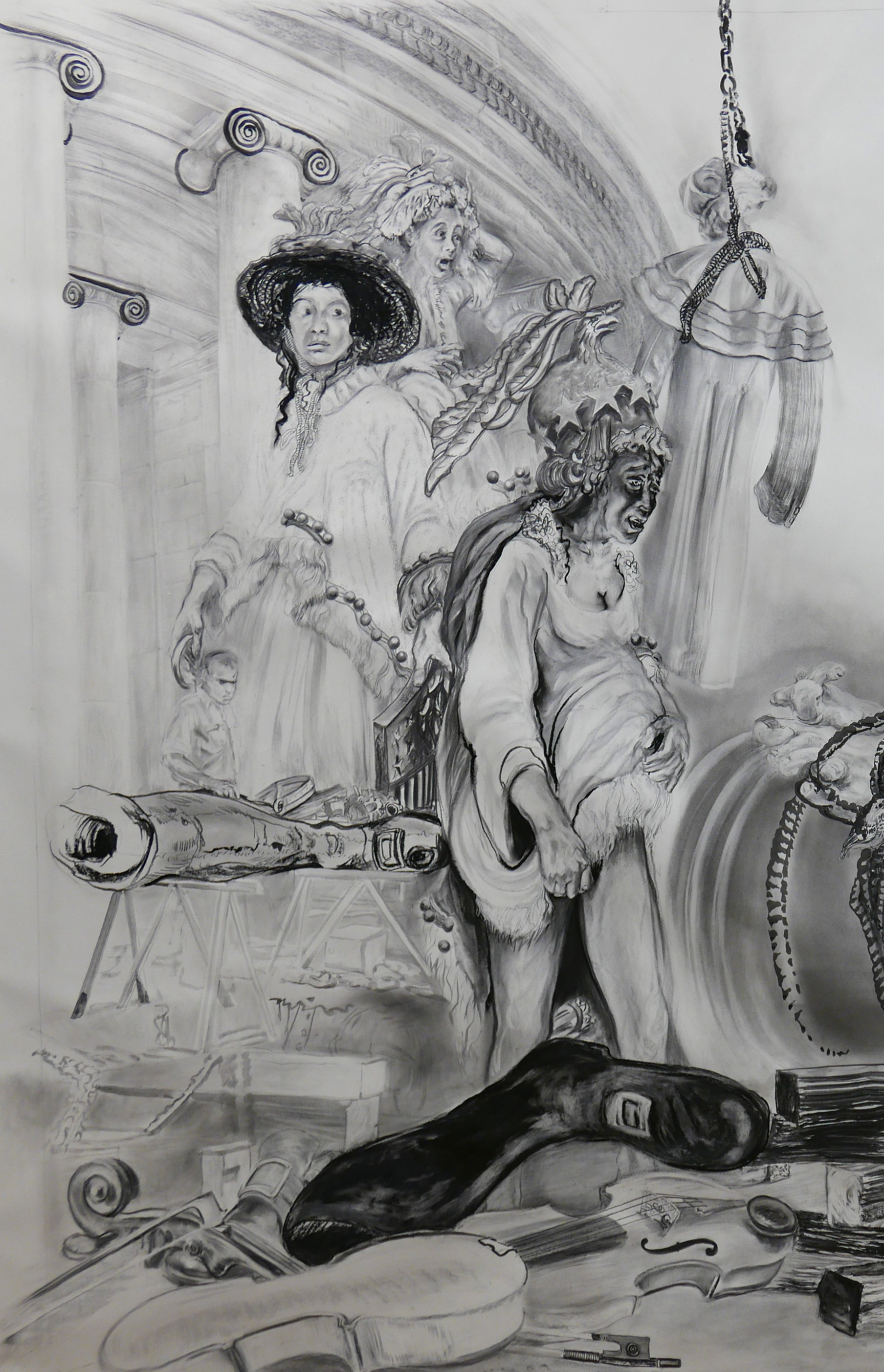
FLAYING FATHER: JEFFERSON MARSYAS, 2018
First quarter of work, left side
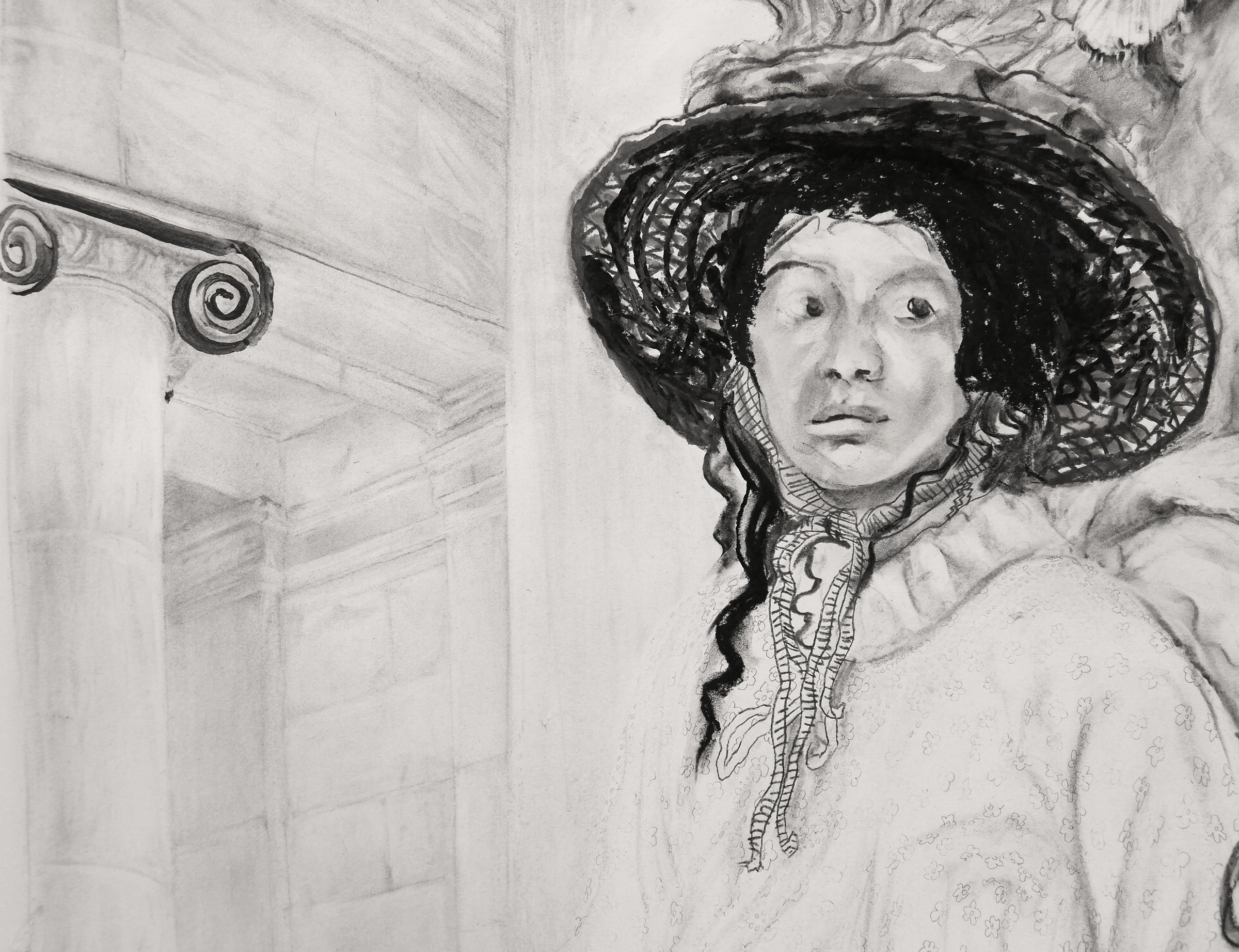
Detail of JEFFERSON MARSYAS
The third portrait of Sally Hemings in this work as a a sixteen-year-old in Paris, where she was free. For all of Jefferson’s words about freedom, he brought her back to Monticello to serve with the “extraordinary privileges” of remaining in bondage for the rest of her life. The children he fathered with her were consigned to decades of enslavement. Over the next 32 years, Sally Hemings raised Beverly, Harriet, Madison, and Eston—and prepared them for their eventual emancipation. She did not negotiate for, or ever receive, legal freedom in Virginia.
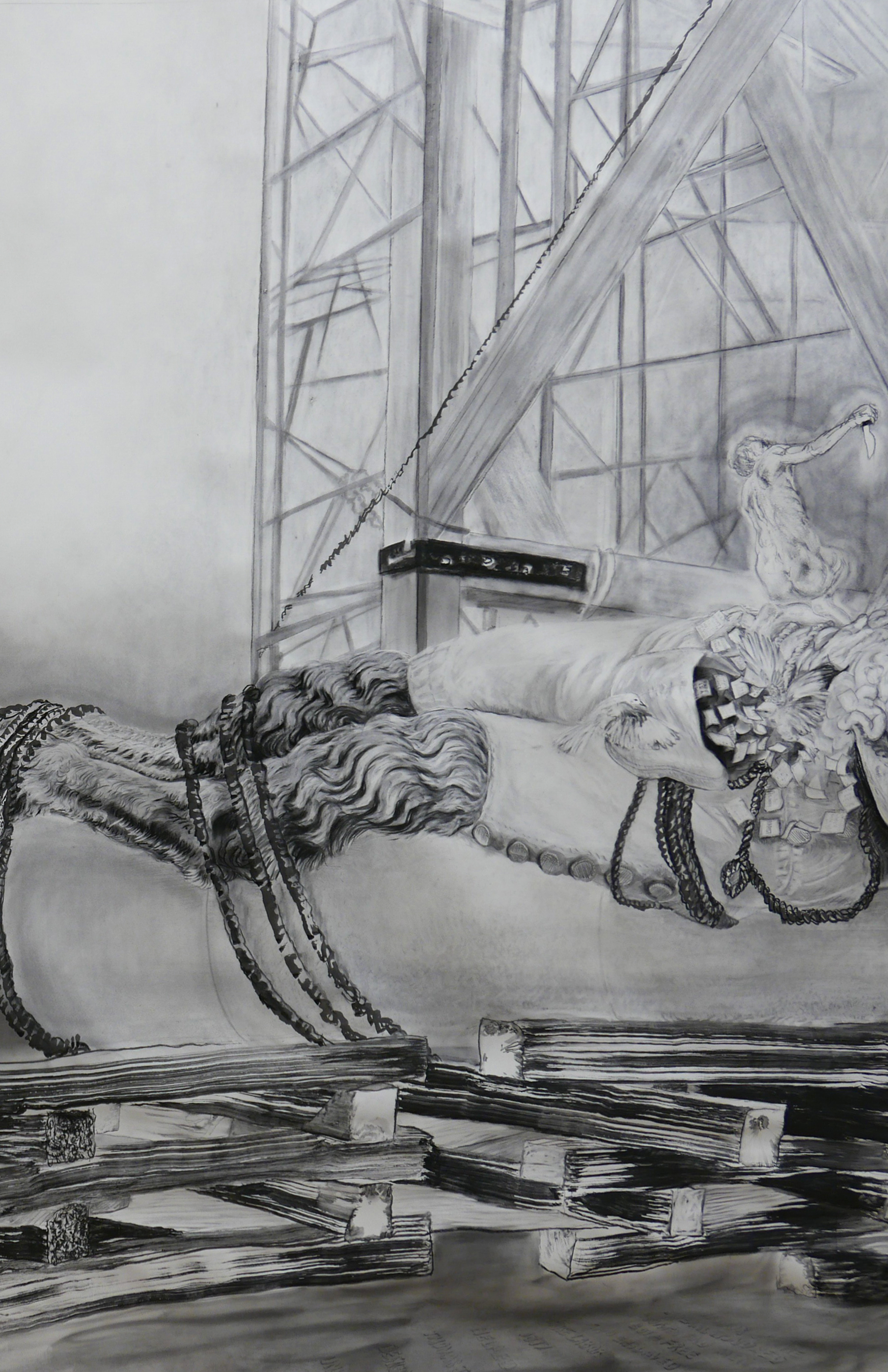
FLAYING FATHER: JEFFERSON MARSYAS, 2018
2nd quarter of work

Detail of JEFFERSON MARSYAS (stacked)
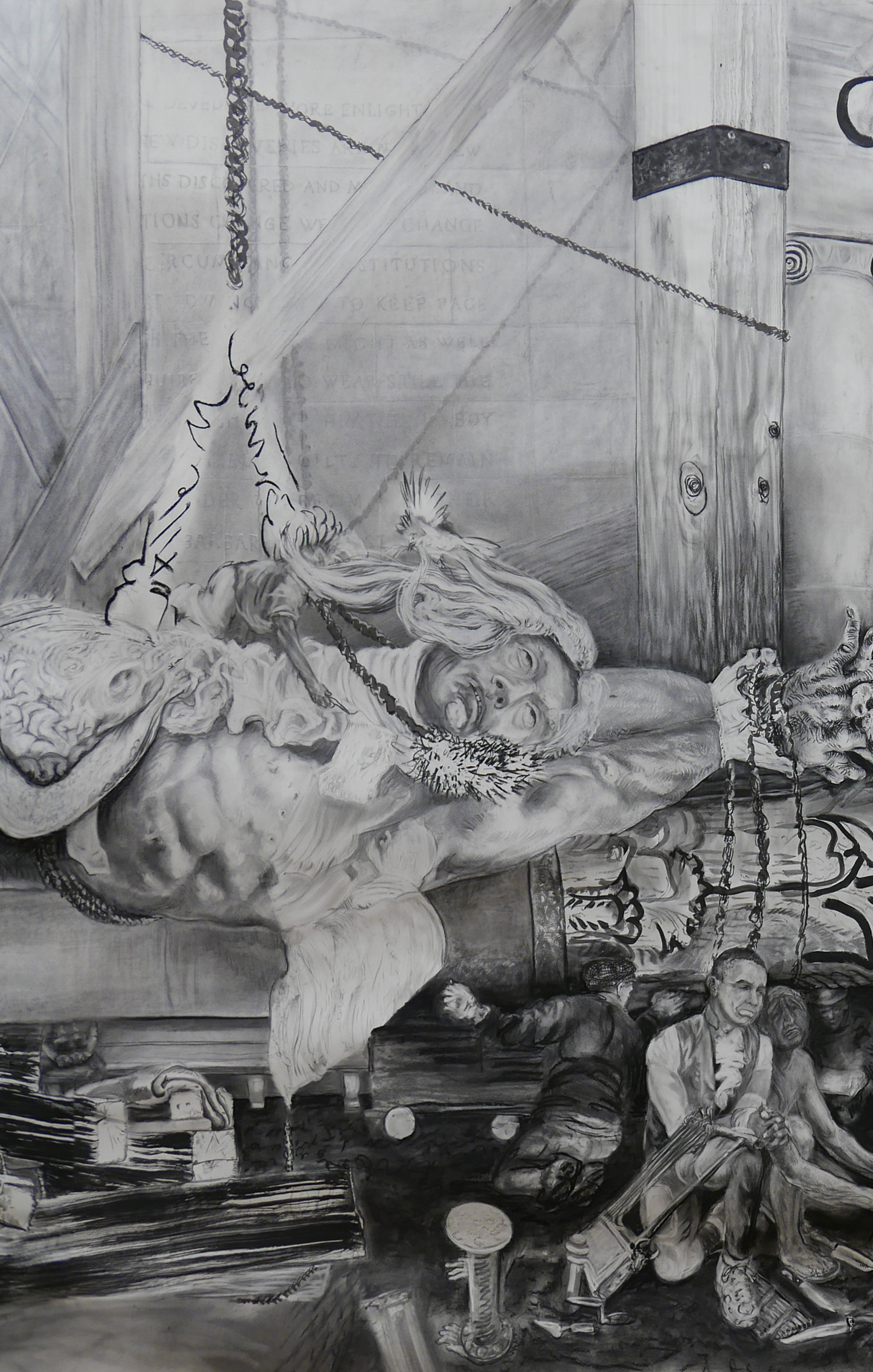
FLAYING FATHER: JEFFERSON MARSYAS, 2018
3rd quarter of work
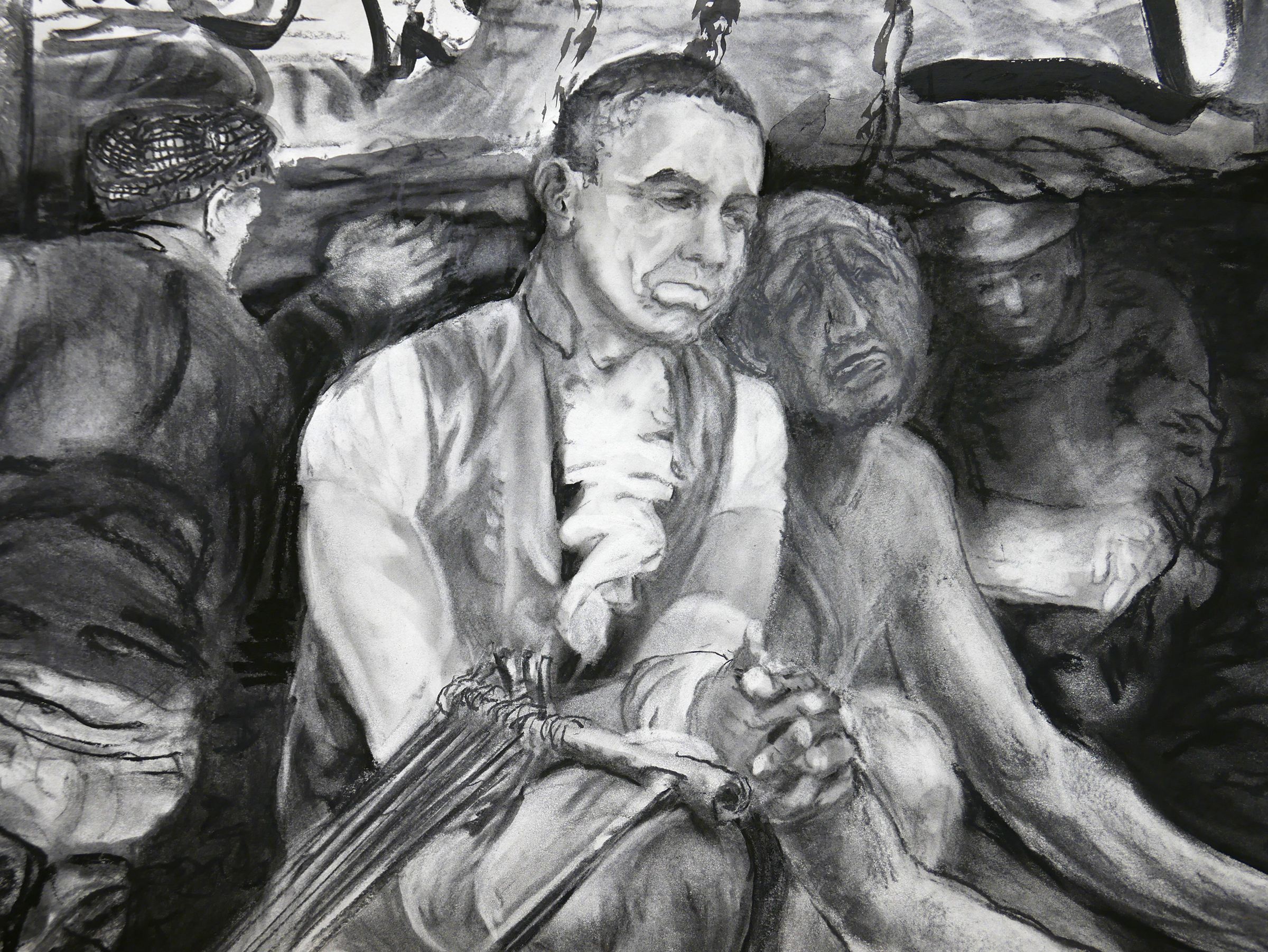
Detail of JEFFERSON MARSYAS (Obama)
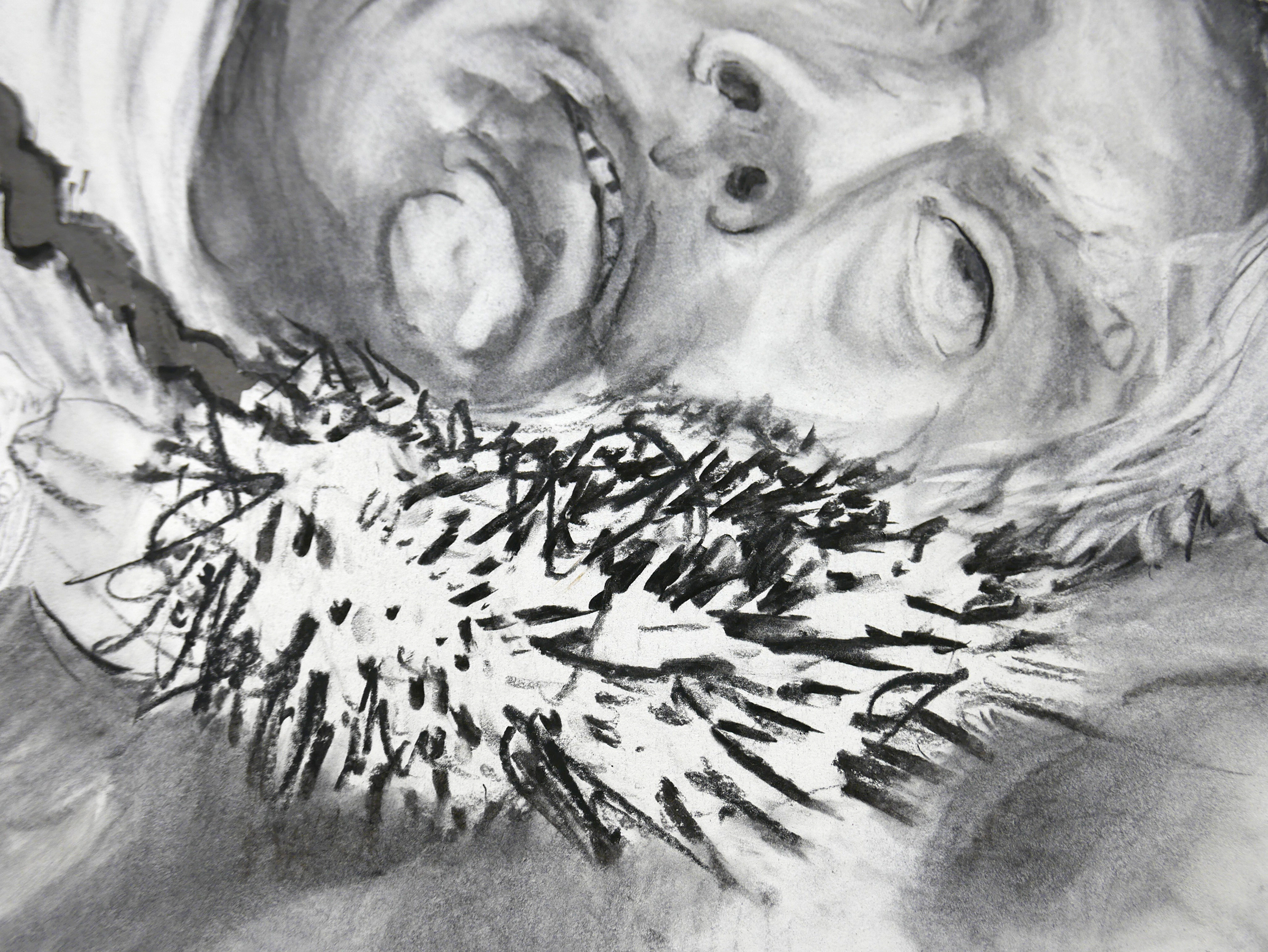
Detail of JEFFERSON MARSYAS (looking up)
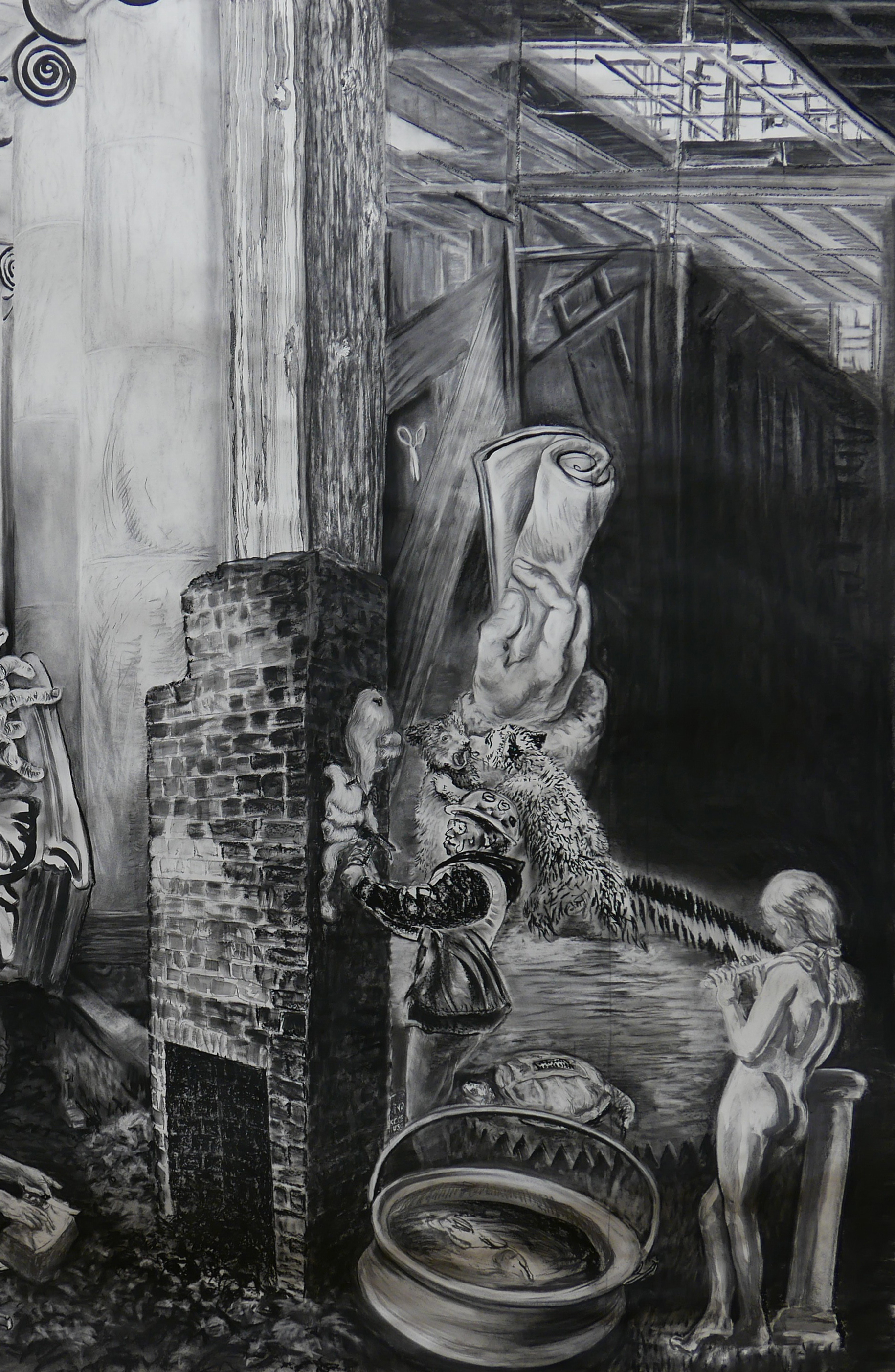
FLAYING FATHER: JEFFERSON MARSYAS, 2018
4th quarter of work (far right side)
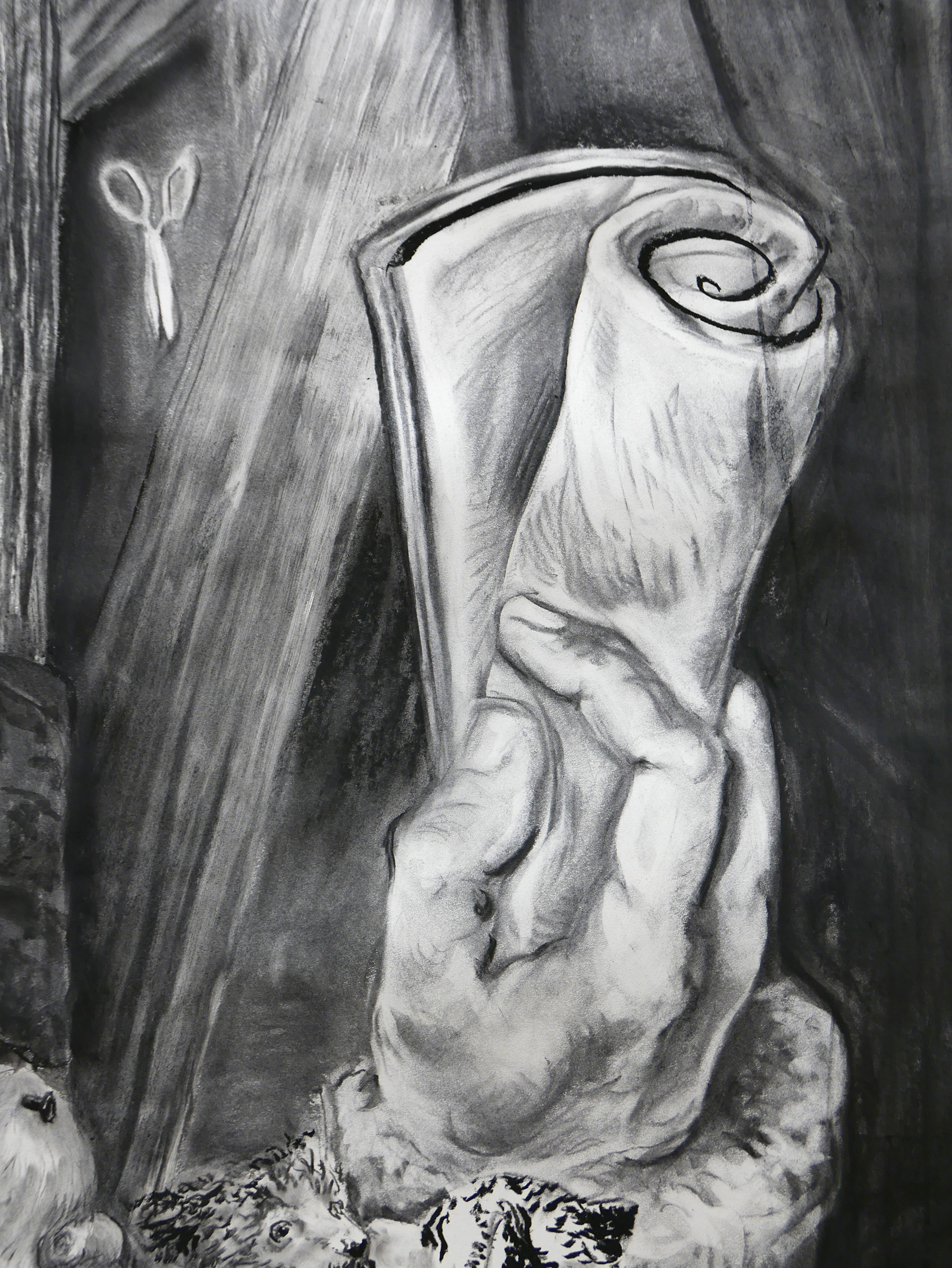
Detail of JEFFERSON MARSYAS

Detail of JEFFERSON MARSYAS (choice)

Detail of JEFFERSON MARSYAS (bear necessities)

Detail of JEFFERSON MARSYAS (gear)
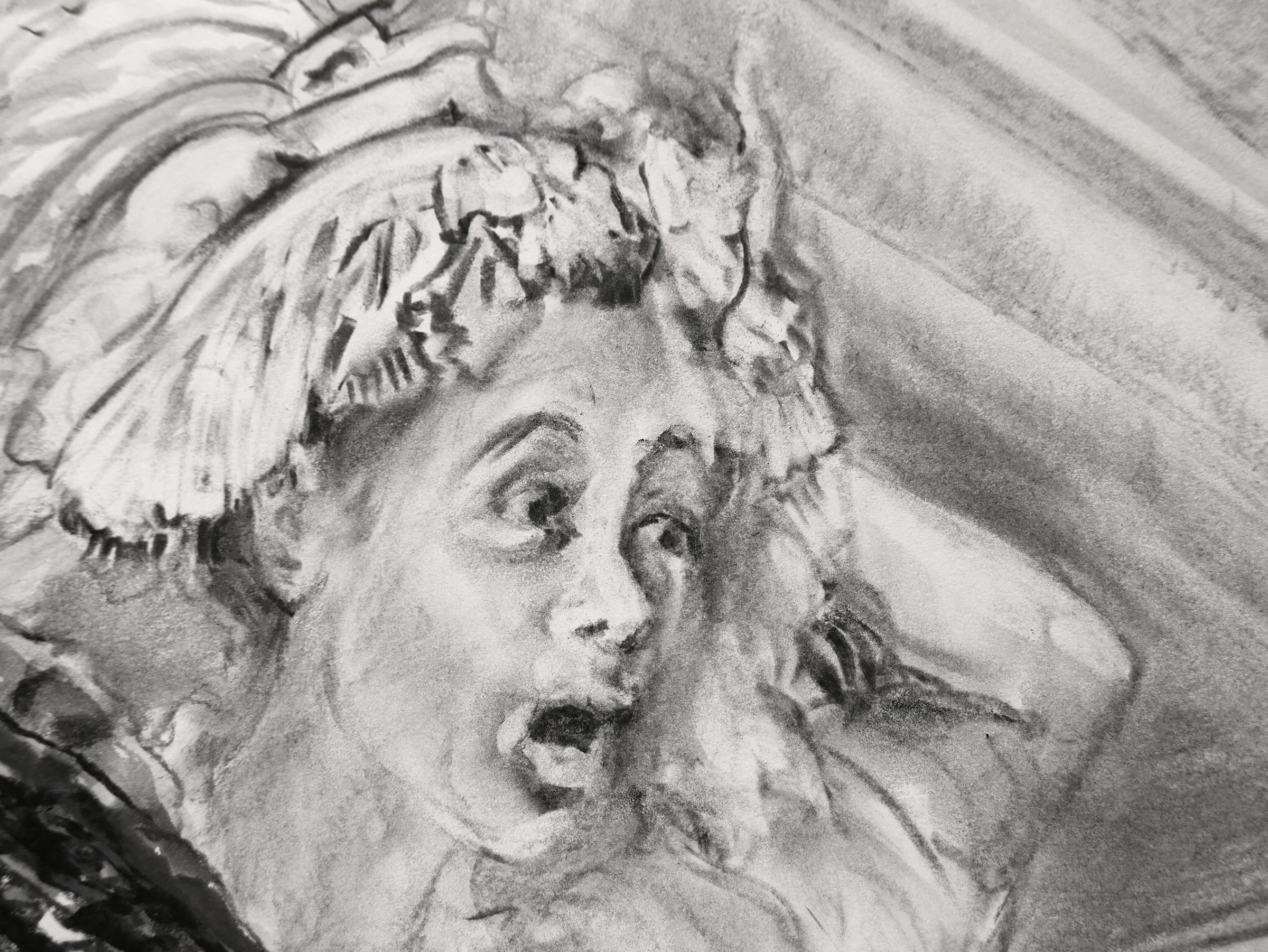
Detail of JEFFERSON MARSYAS (I do declare)

Detail of JEFFERSON MARSYAS (cravat)
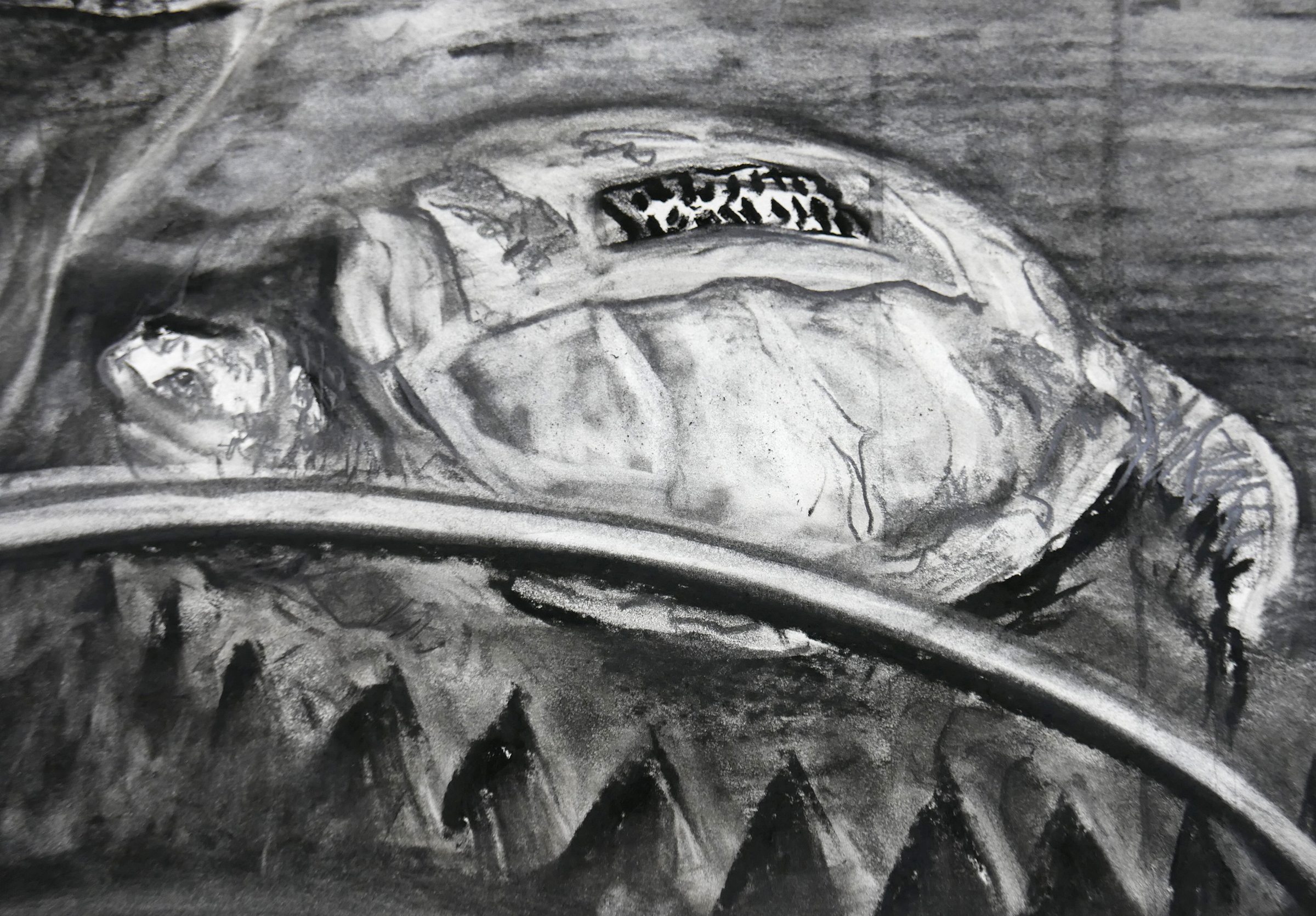
Detail of JEFFERSON MARSYAS (embargo turtle)
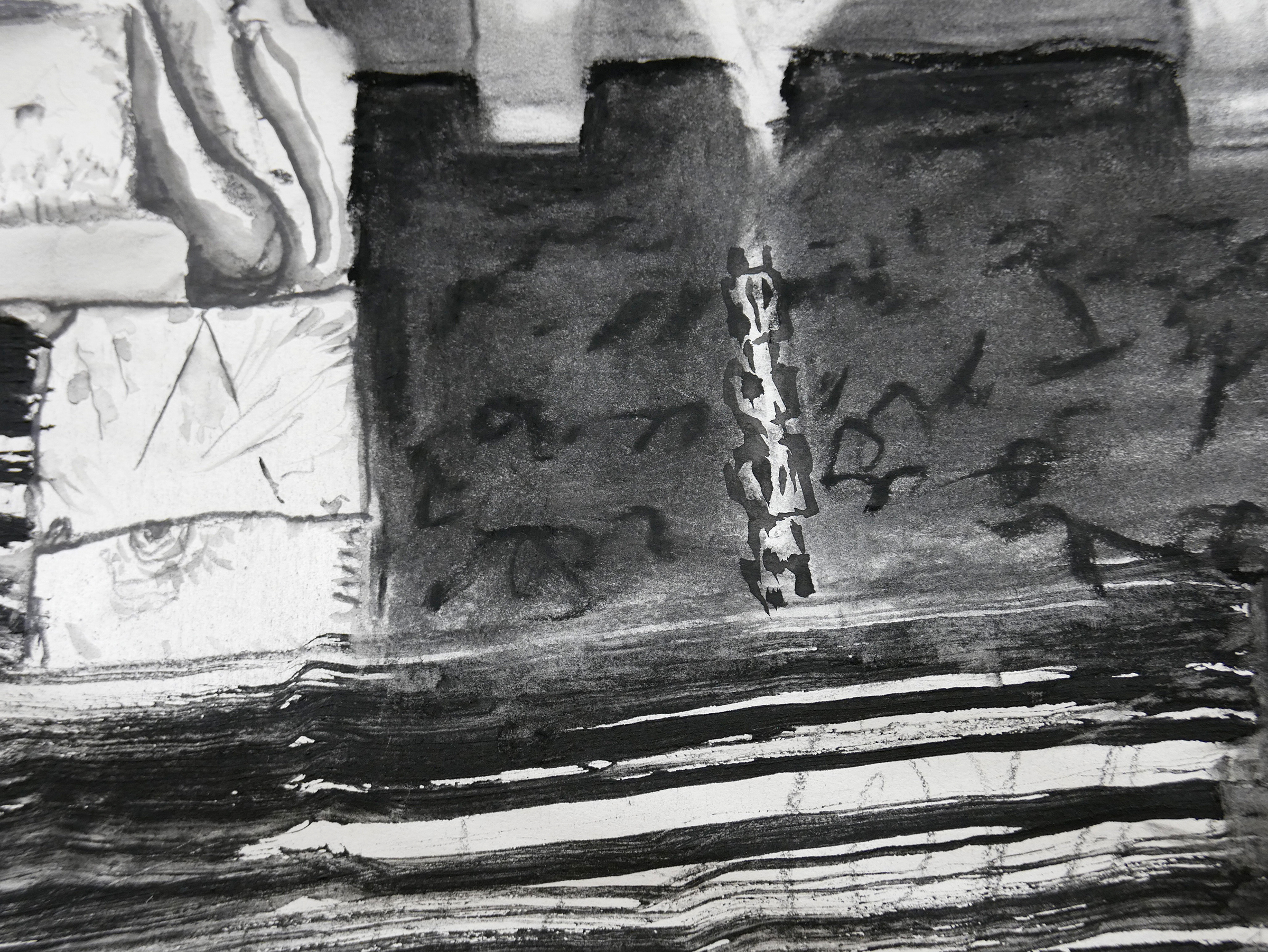
Detail of JEFFERSON MARSYAS (encryption)
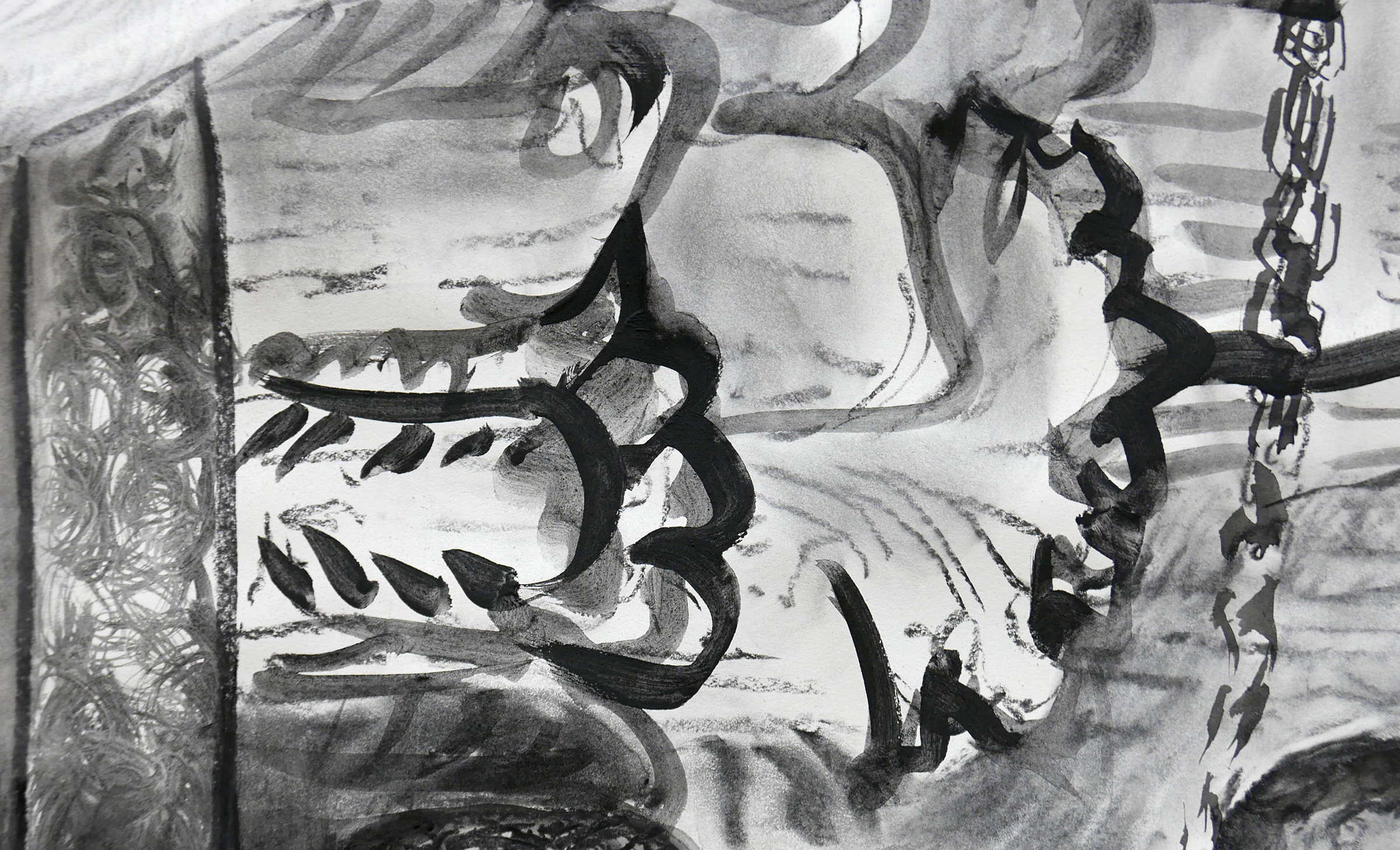
Detail of JEFFERSON MARSYAS (filial)
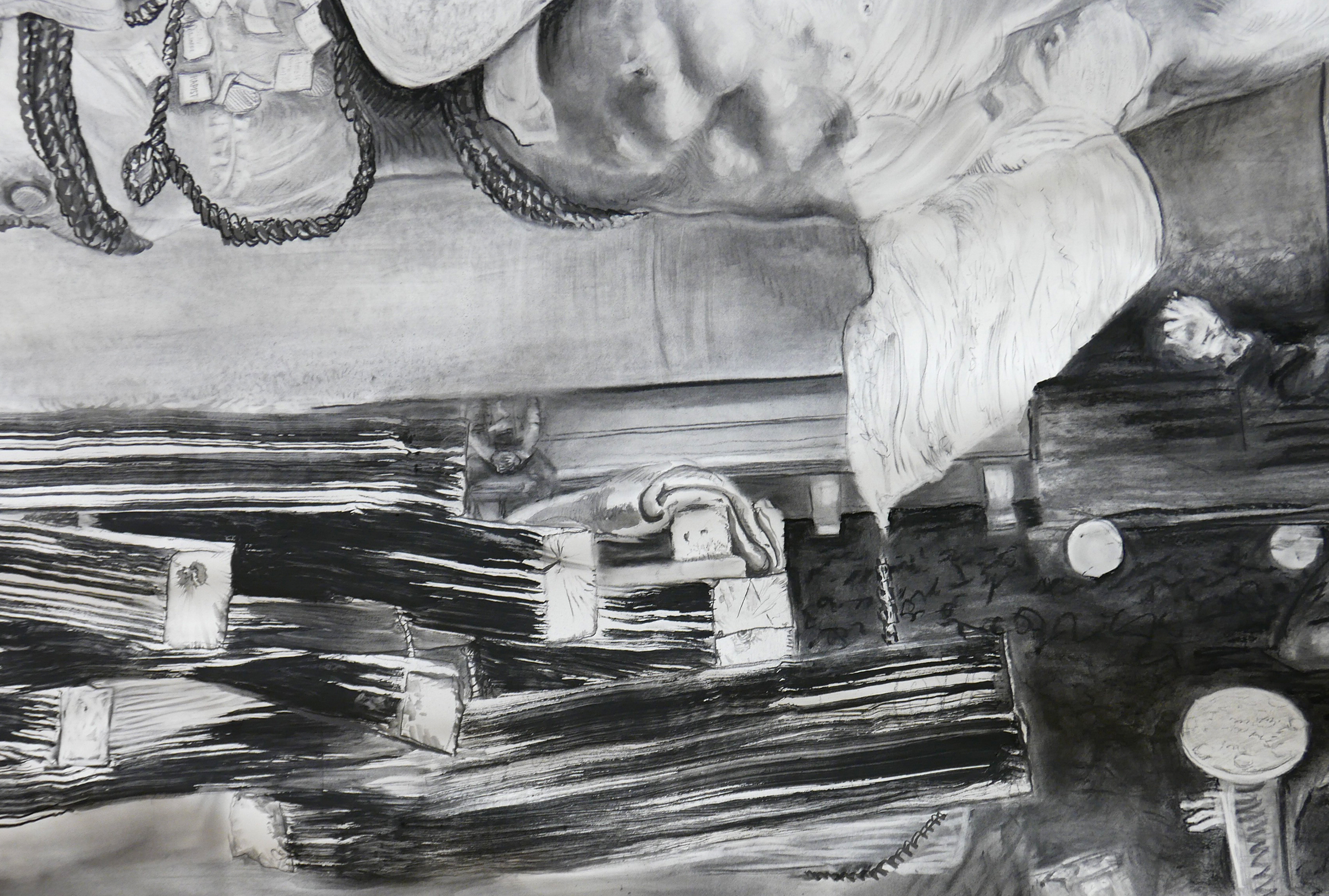
Detail of JEFFERSON MARSYAS (skin flap)
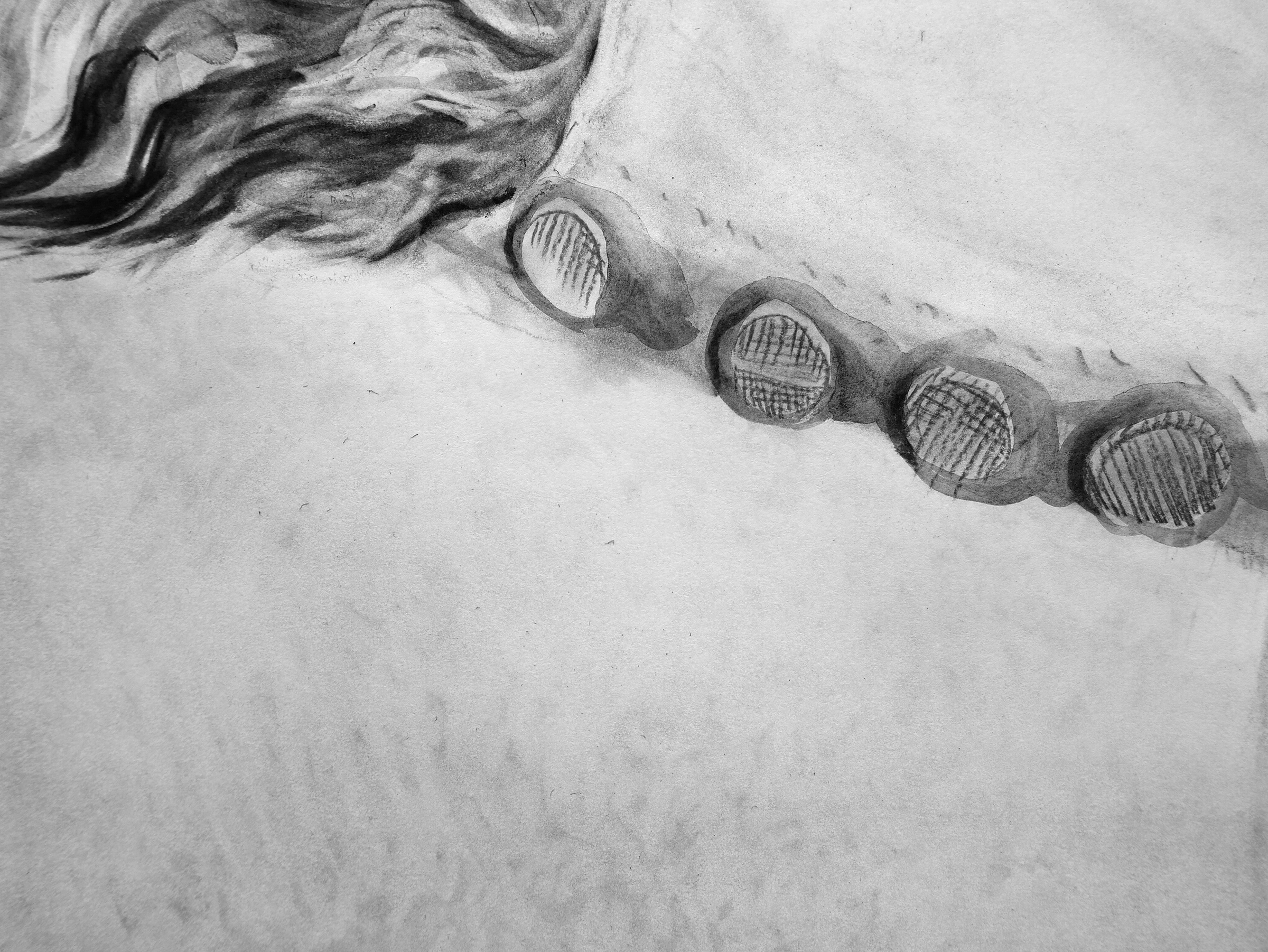
Detail of JEFFERSON MARSYAS (gentleman to scholar)
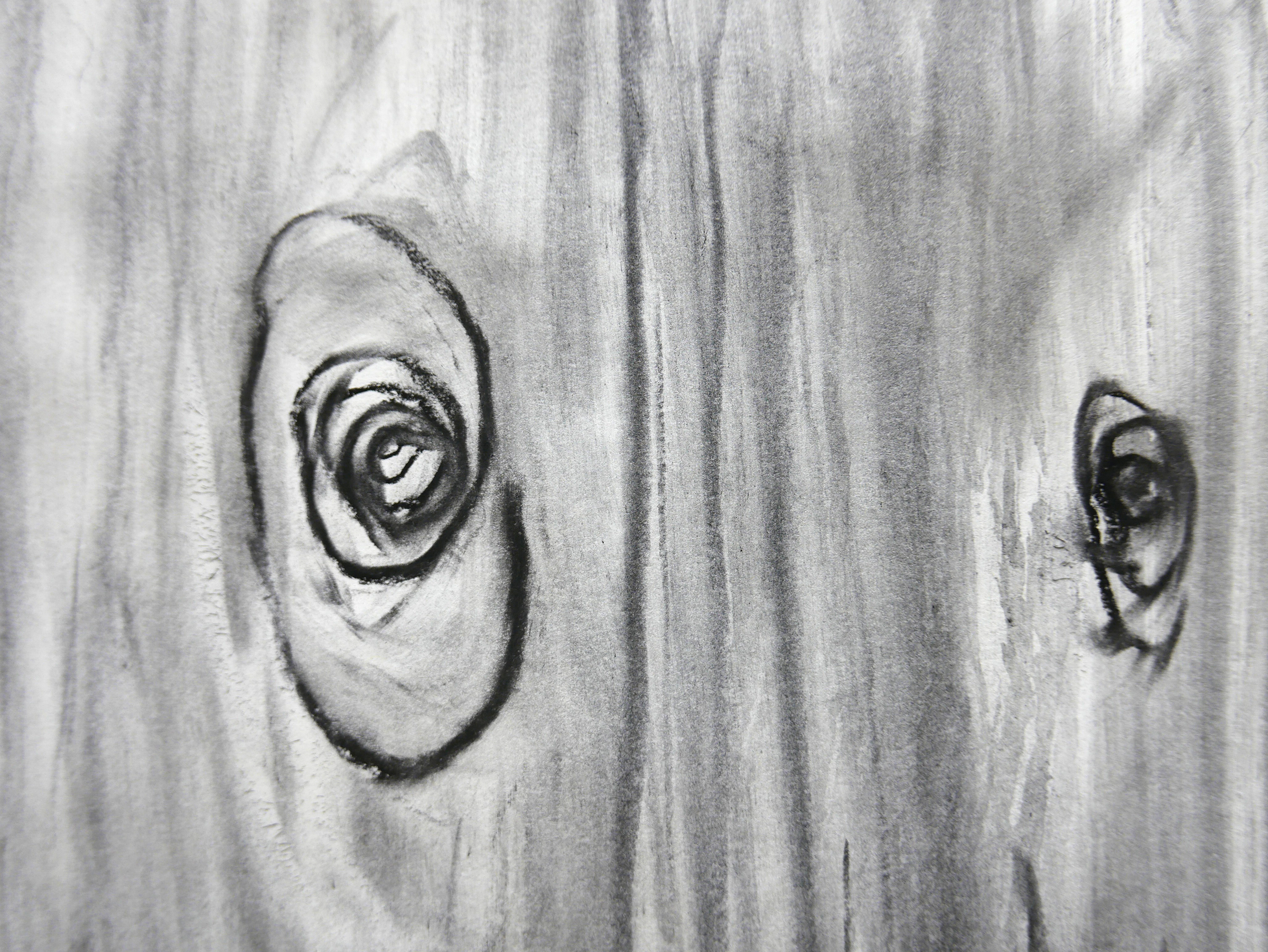
Detail of JEFFERSON MARSYAS (knots of history)
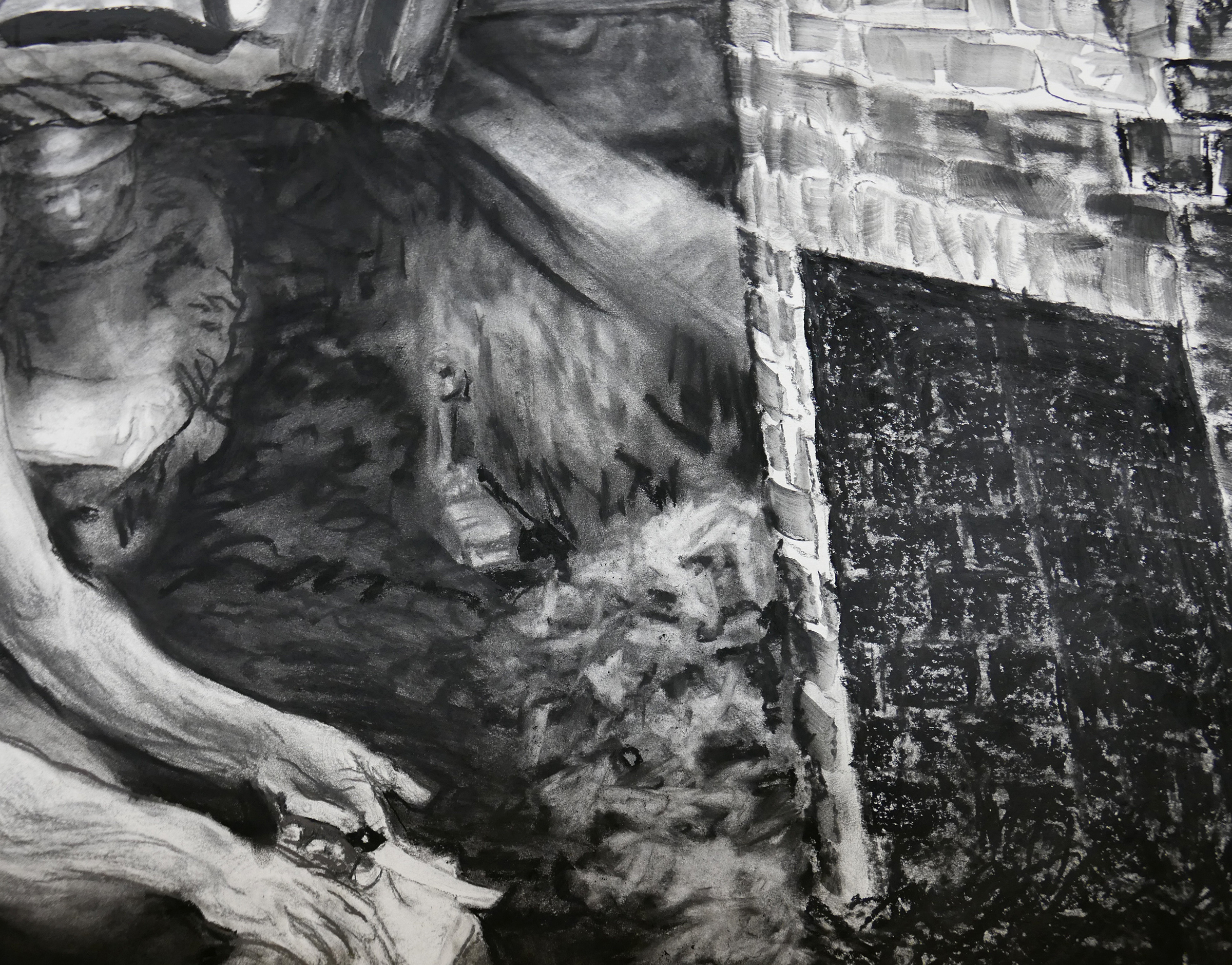
Detail of JEFFERSON MARSYAS (coal miner in Sally Heming's cabin)
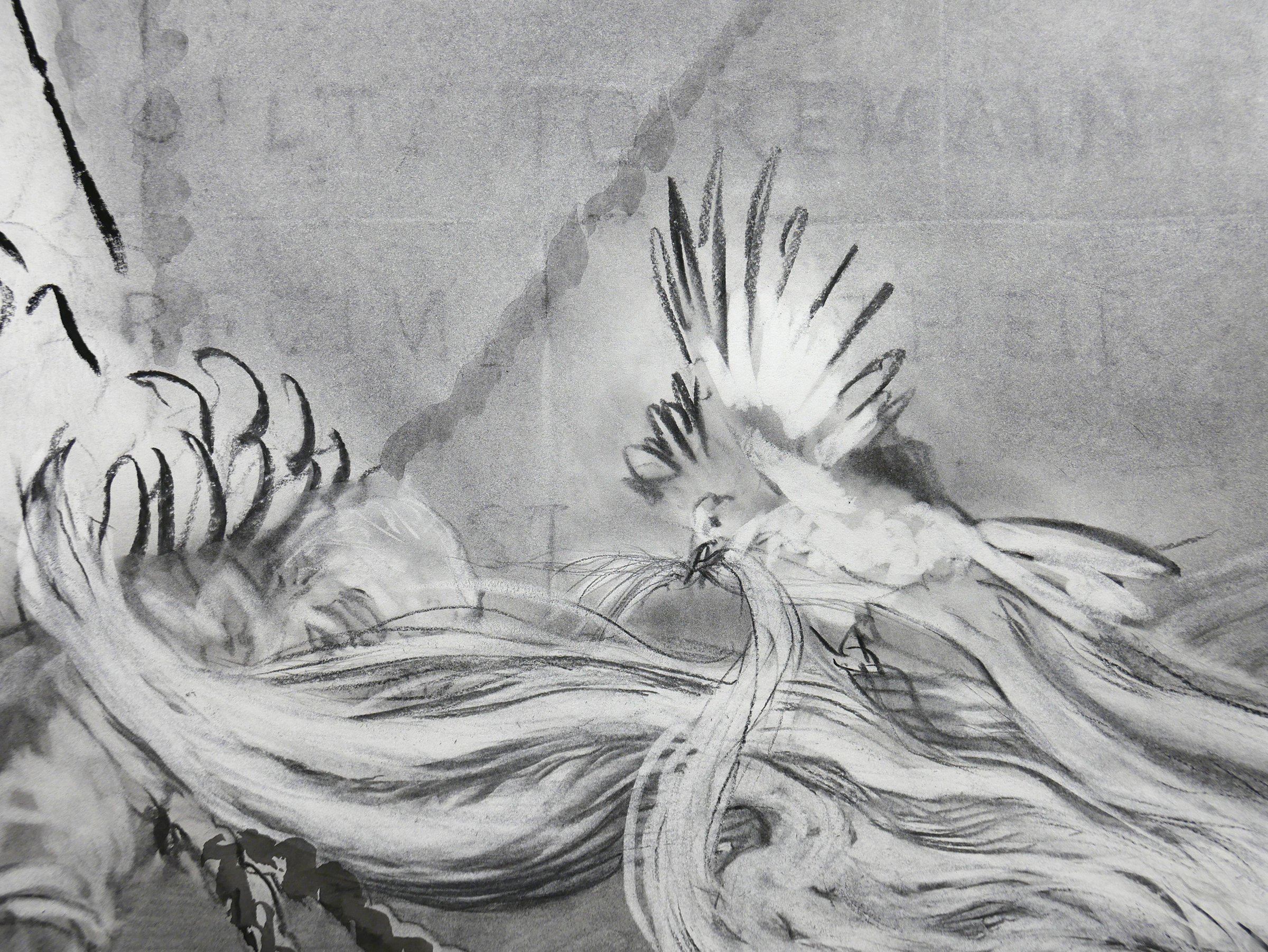
Detail of JEFFERSON MARSYAS
One incarnation of Jefferson’s mocking bird, Dick, nesting on the ropes that bind his satyr’s fetlock
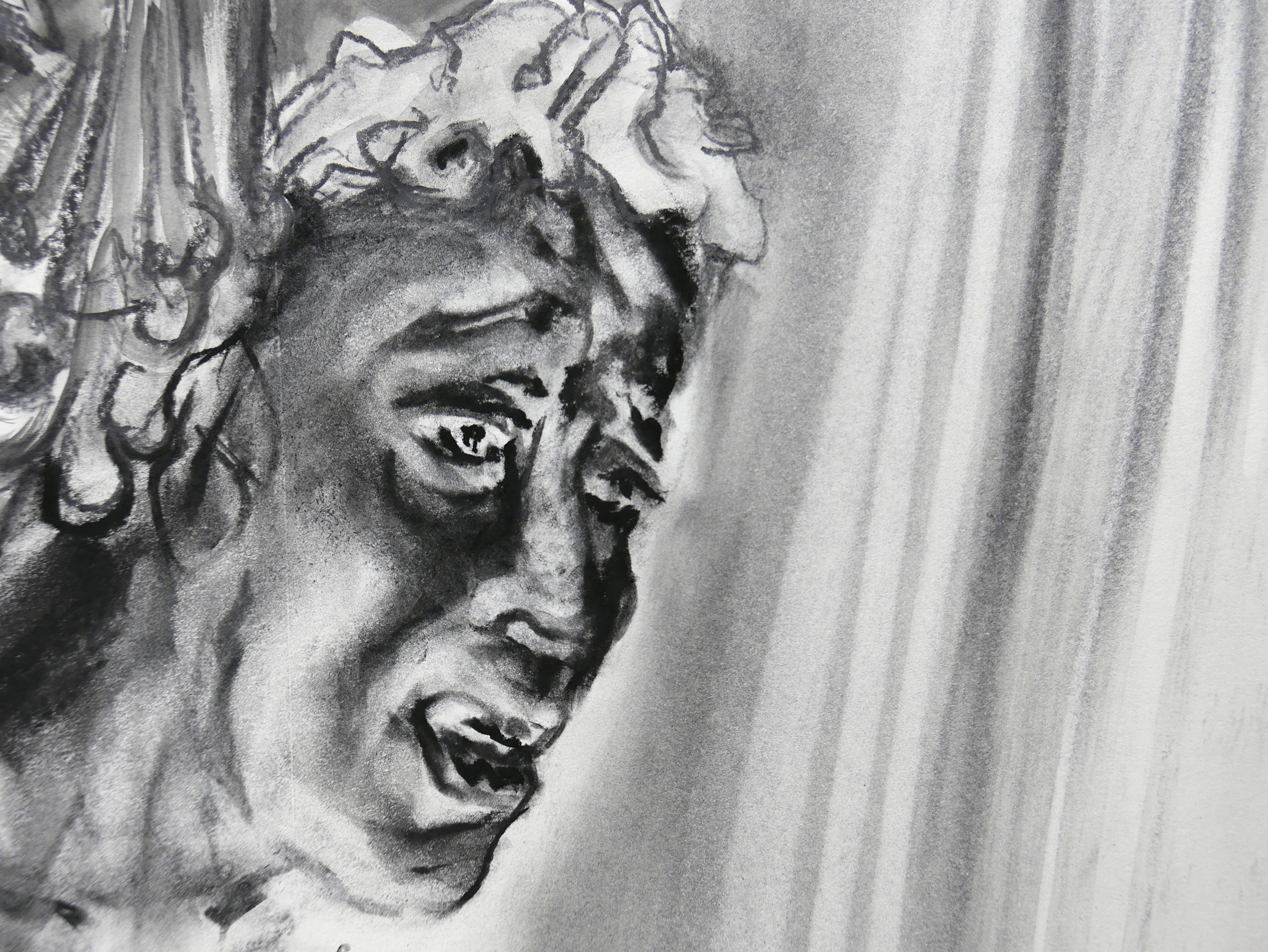
Detail of JEFFERSON MARSYAS (the Enlightenment)
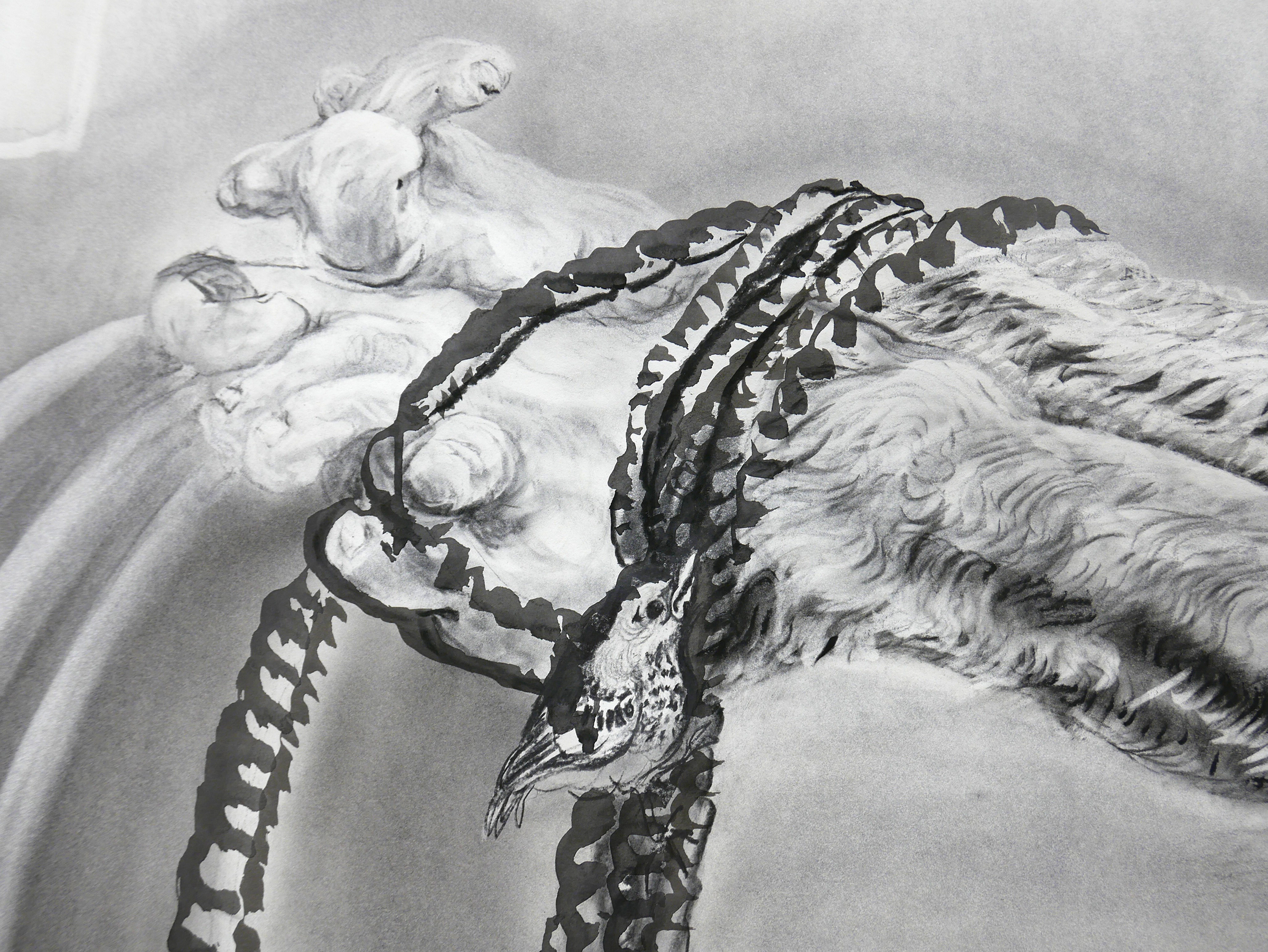
Detail of JEFFERSON MARSYAS (tipping point)
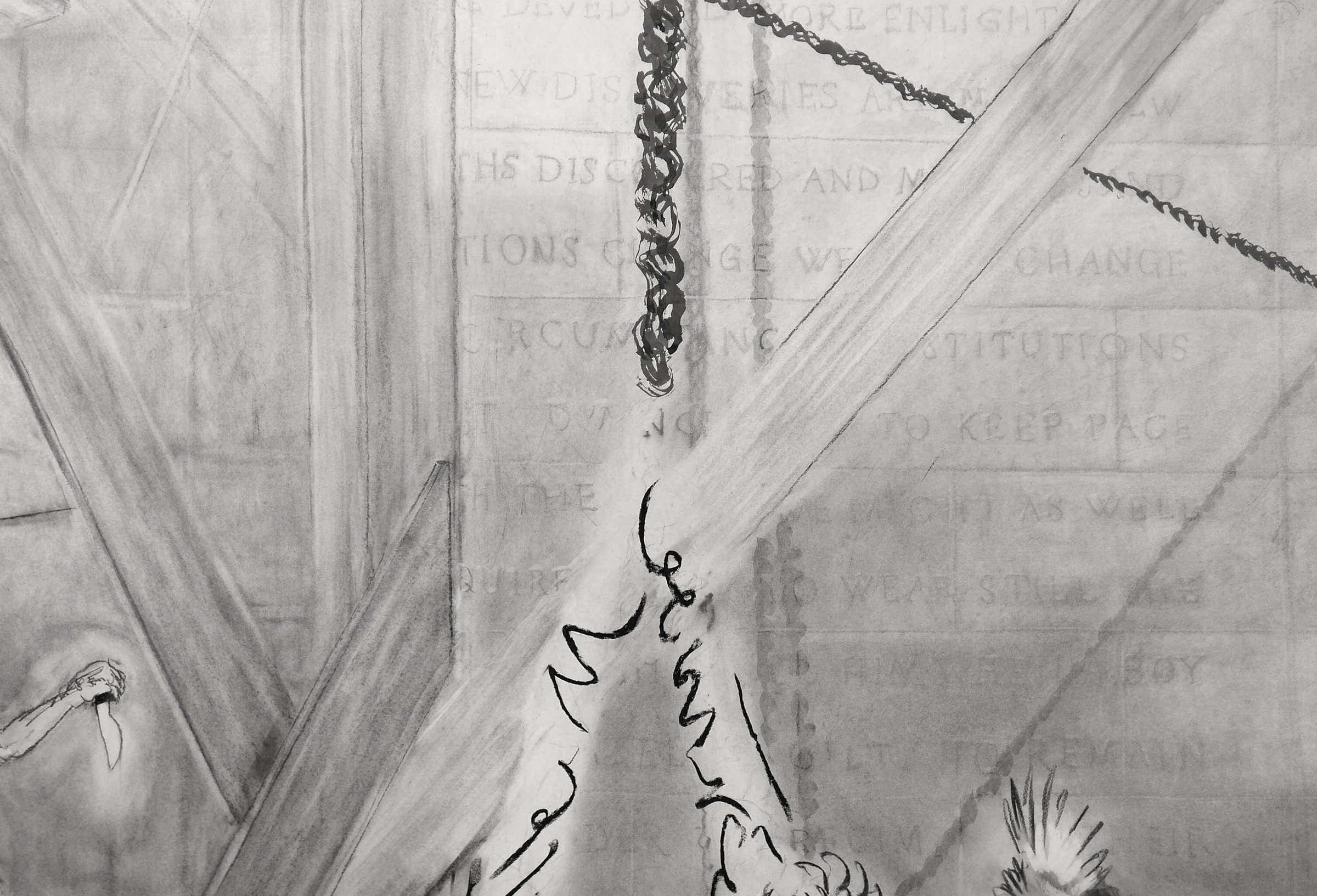
Detail of JEFFERSON MARSYAS (plumb)
The background text on Panel Four of the Jefferson Memorial in Washington DC reads:
I am not an advocate for frequent changes in laws and constitutions, but laws and institutions must go hand in hand with the progress of the human mind.
As that becomes more developed, more enlightened, as new discoveries are made, new truths discovered and manners and opinions change, with the change of circumstances, institutions must advance also to keep pace with the times.
We might as well require a man to wear still the coat which fitted him when a boy as civilized society to remain ever under the regimen of their barbarous ancestors.
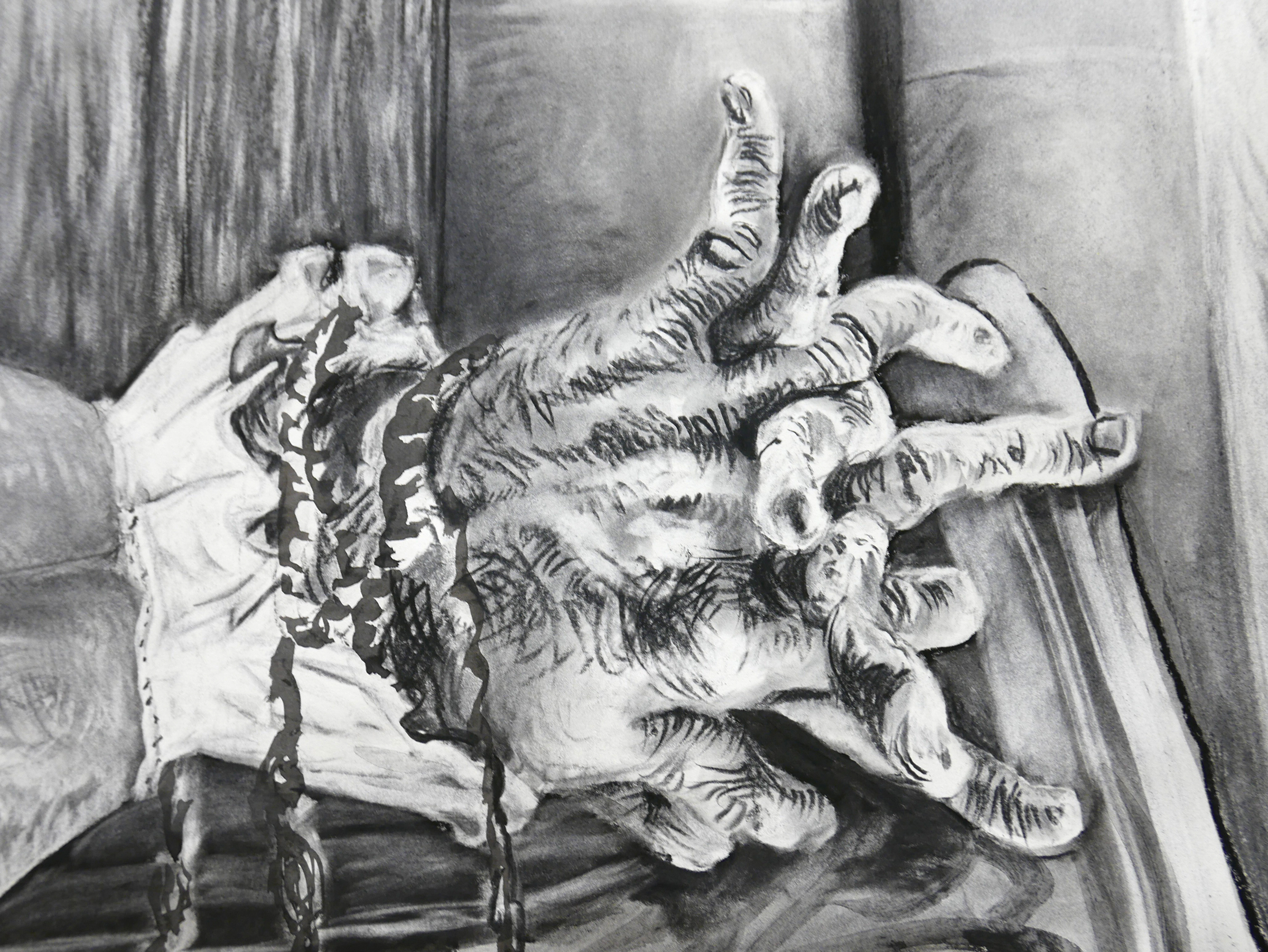
Detail of JEFFERSON MARSYAS (cuffs)
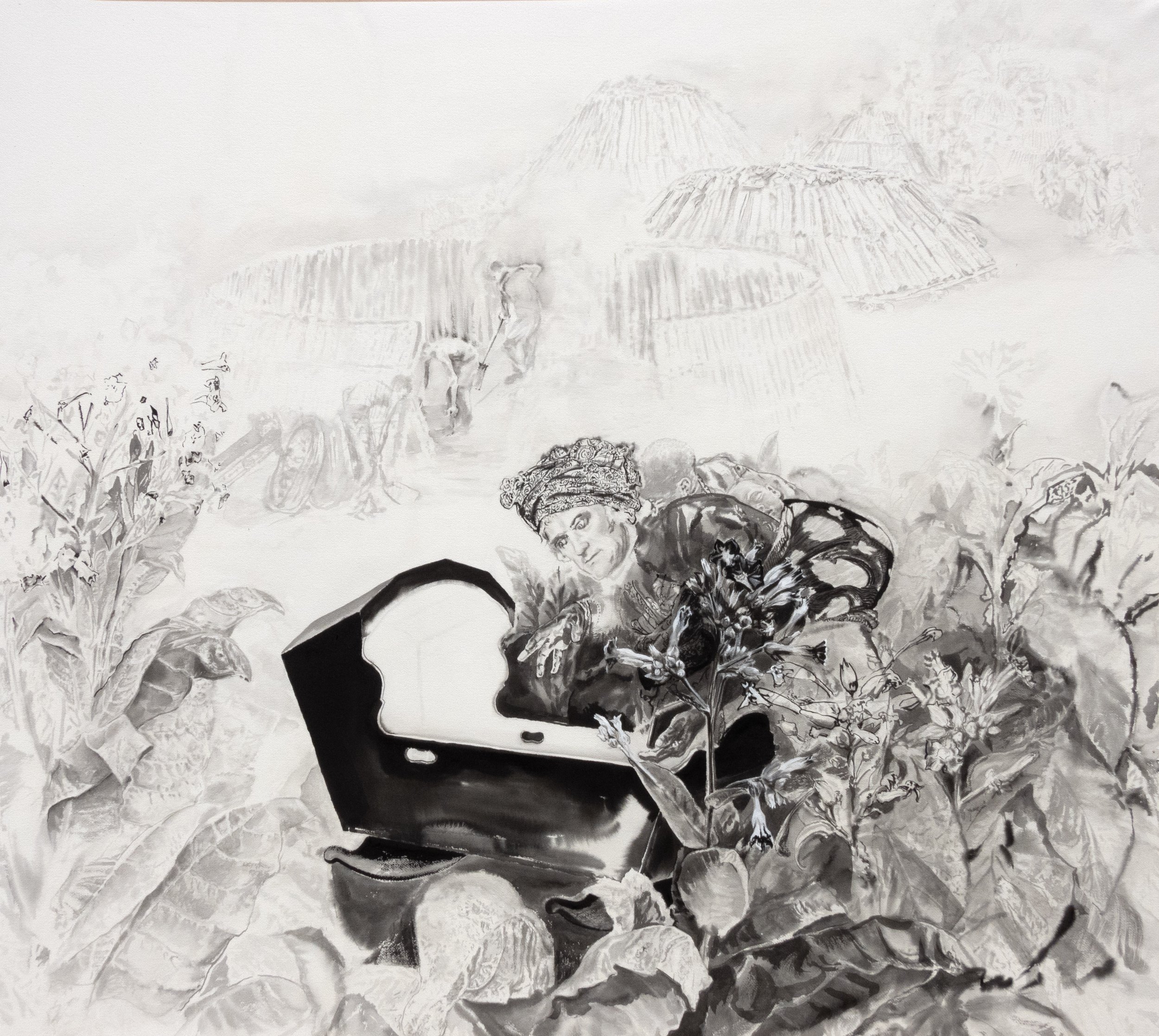
JEFFERSON SAVES SOME FOR THE CHARCOAL KILNS, 2023
Ink and gouache on paper, 50 x 56 inches
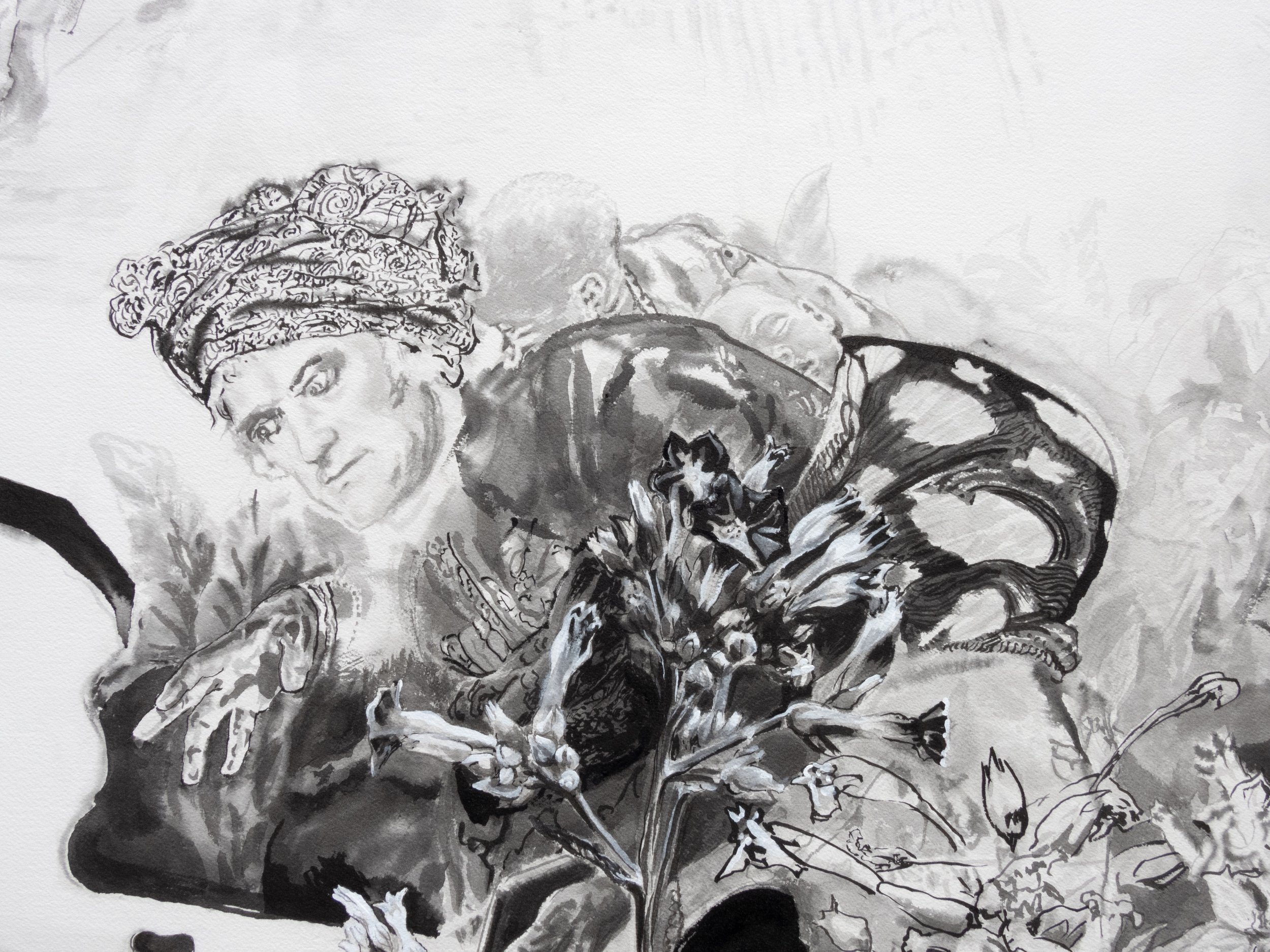
Detail: JEFFERSON SAVES SOME FOR THE CHARCOAL KILNS, 2023
Ink and gouache on paper, 50 x 56 inches
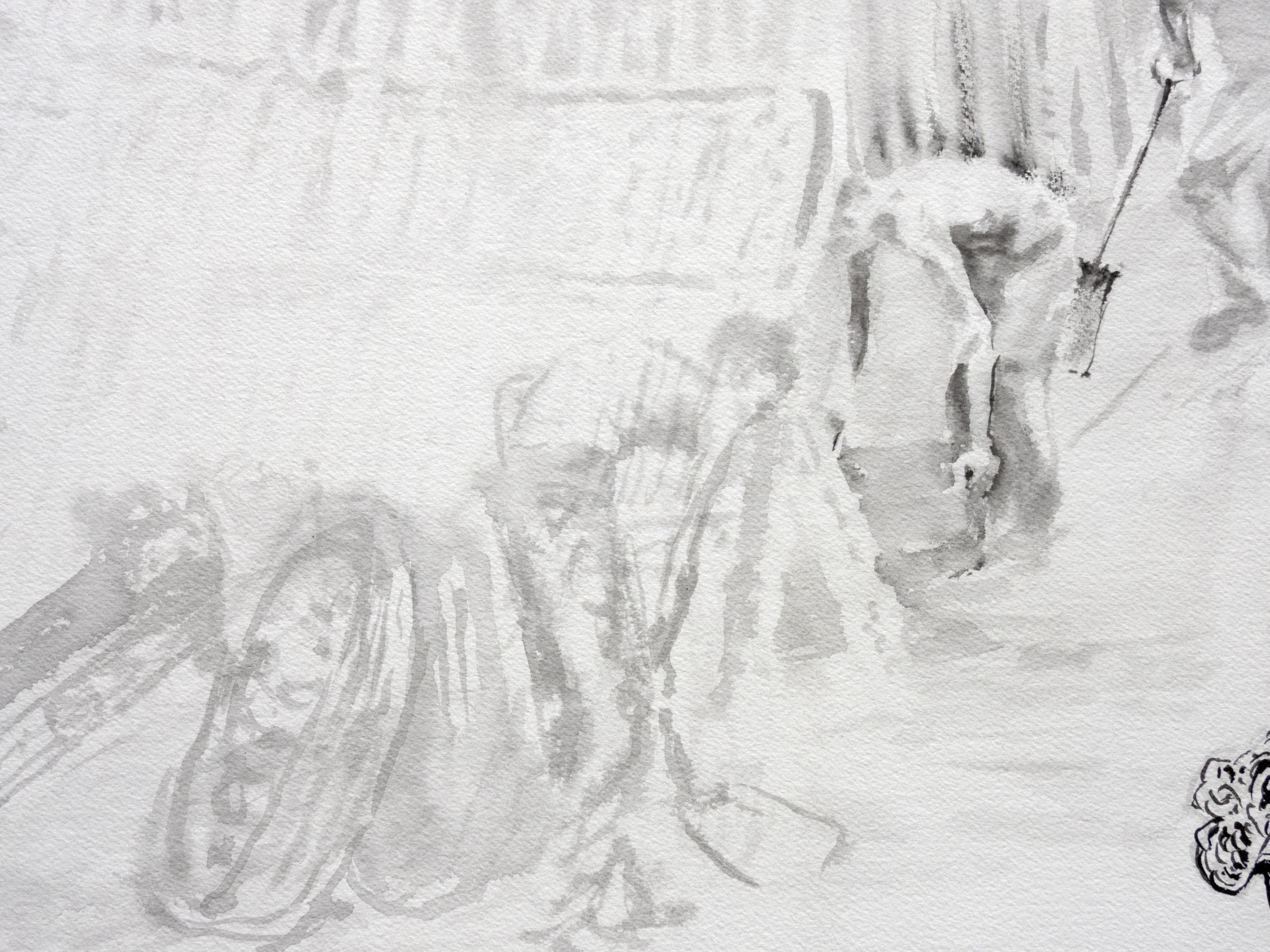
Detail: JEFFERSON SAVES SOME FOR THE CHARCOAL KILNS, 2023
Charcoal Kiln Laborers
Ink and gouache on paper, 50 x 56 inches
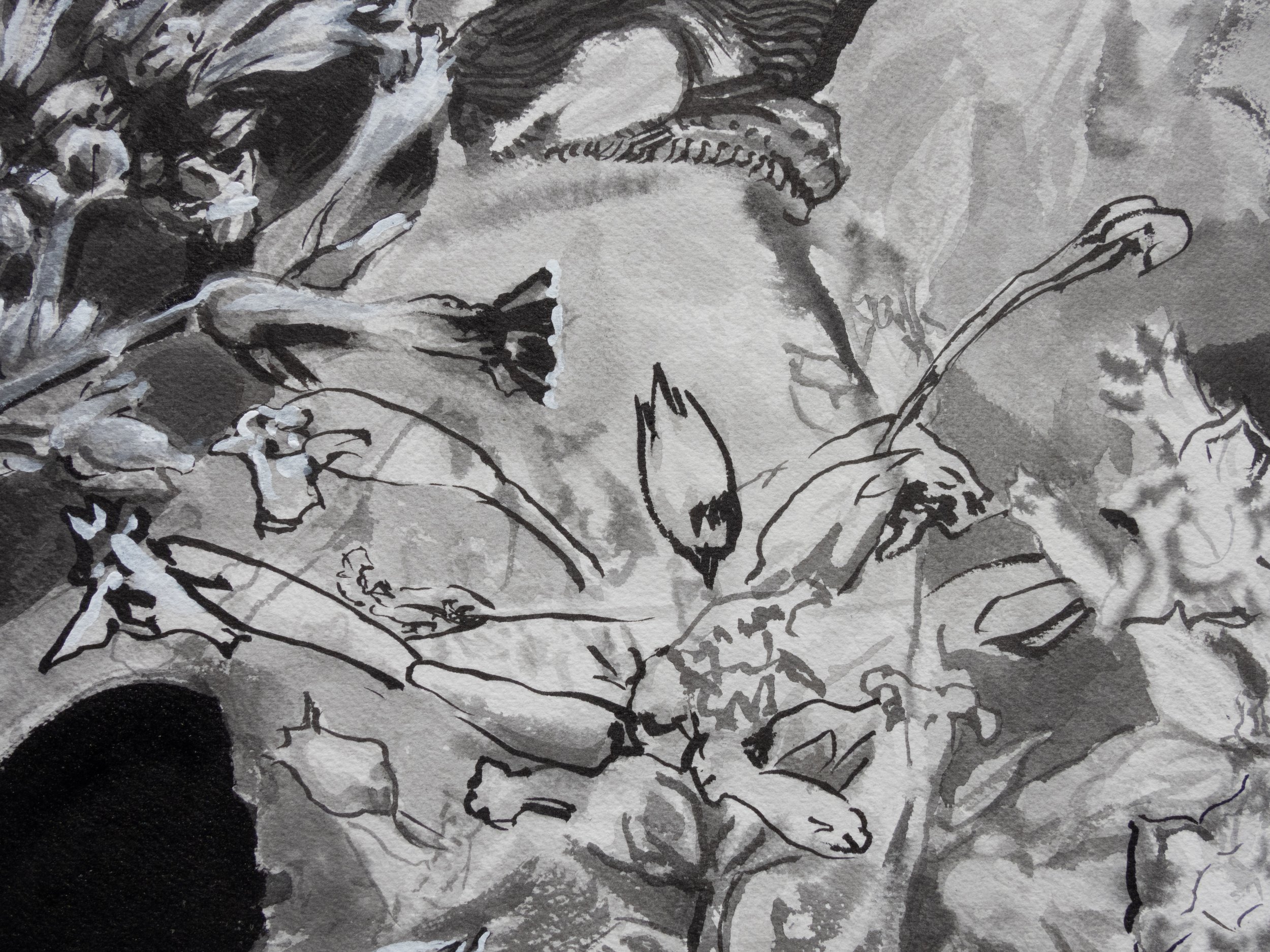
Detail: JEFFERSON SAVES SOME FOR THE CHARCOAL KILN
Flower season
Ink and gouache on paper, 50 x 56 inches
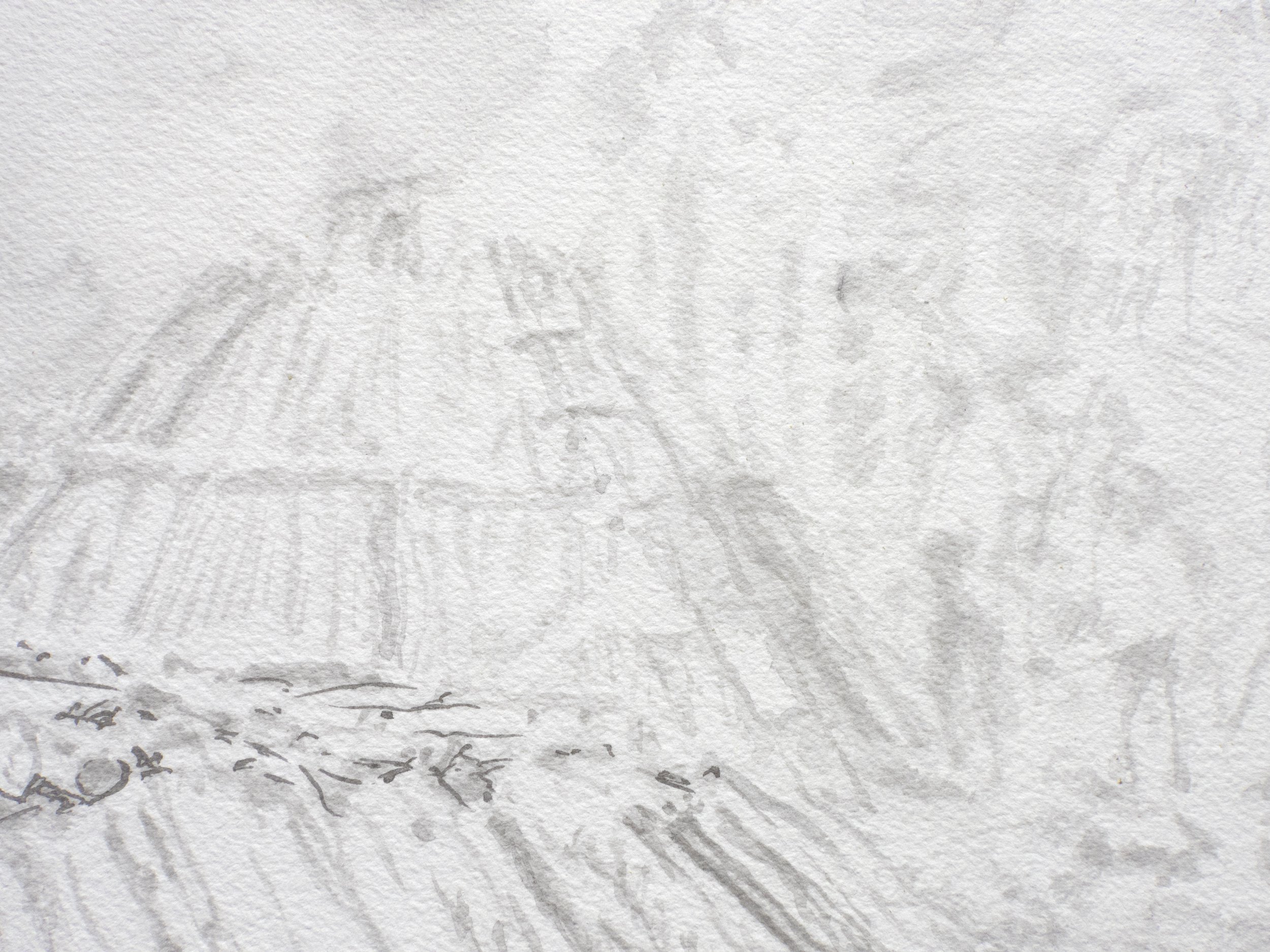
Detail: JEFFERSON SAVES SOME FOR THE CHARCOAL KILNS, 2023
Charcoal kiln labor
Ink and gouache on paper, 50 x 56 inches
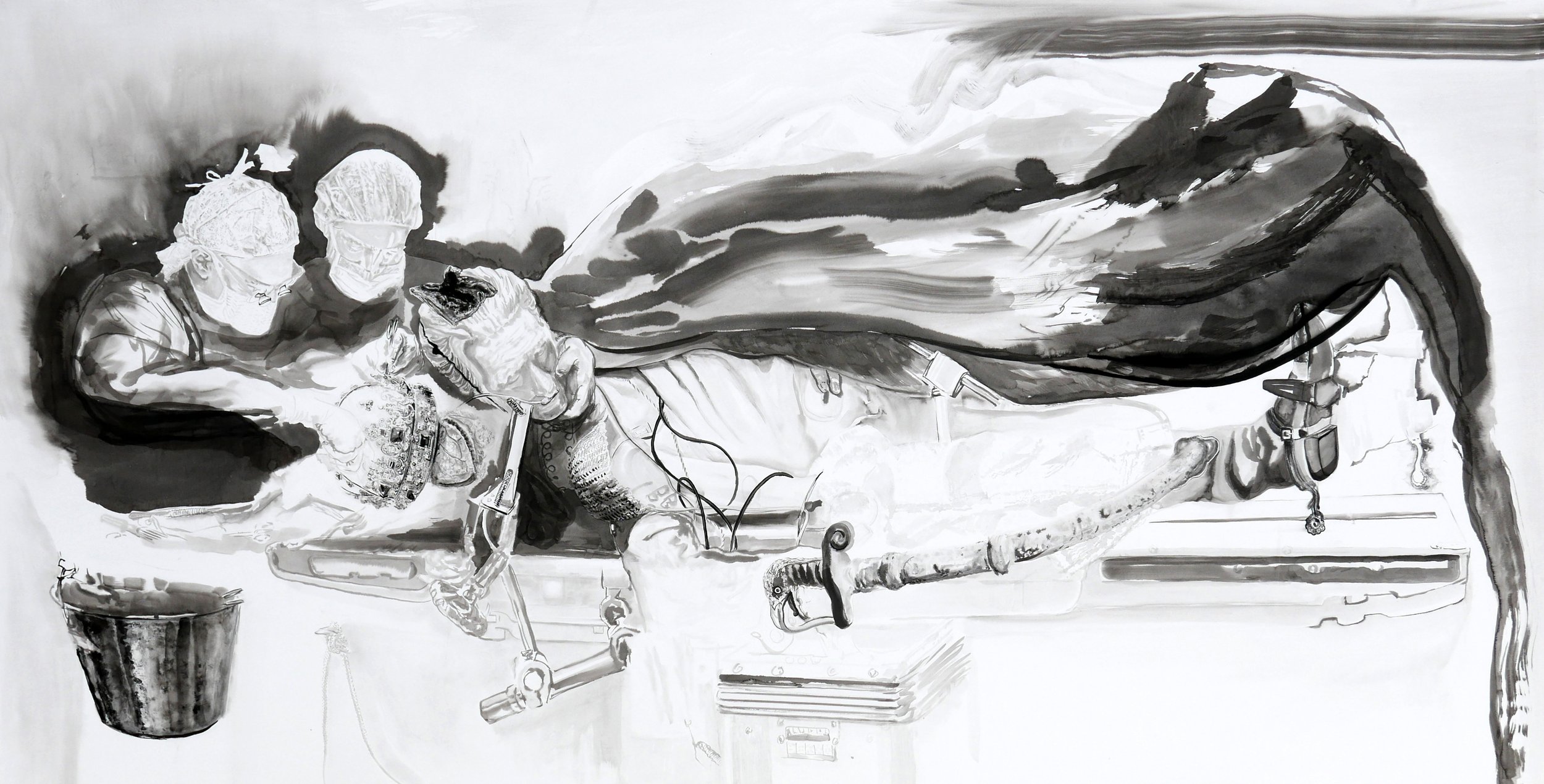
THE EXTRACTION OF ANDREW JACKSON’S CROWN 2020
Ink on paper, 57 x 113.5 inches
Jackson lays on a medical bed with his spurs still on, as surgeons exorcize his crown.
The slop bucket contains either his cranial contents or the spoils of atrocities committed in his name — take your pick.
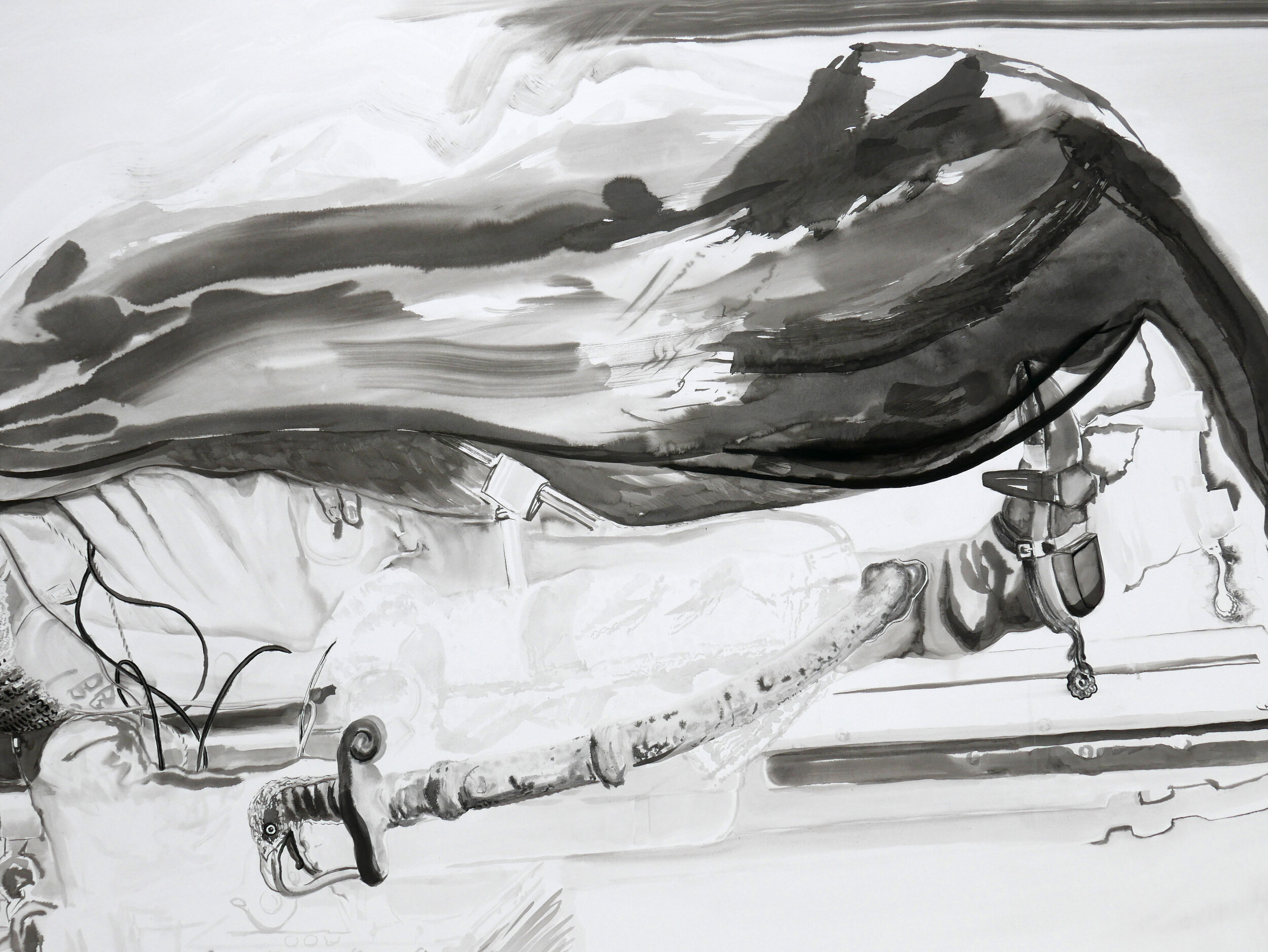
EXTRACTION (ANDREW JACKSON) 2020
Detail of Jackson’s boots and sword

EXTRACTION (ANDREW JACKSON)
Detail of Jackson’s crown
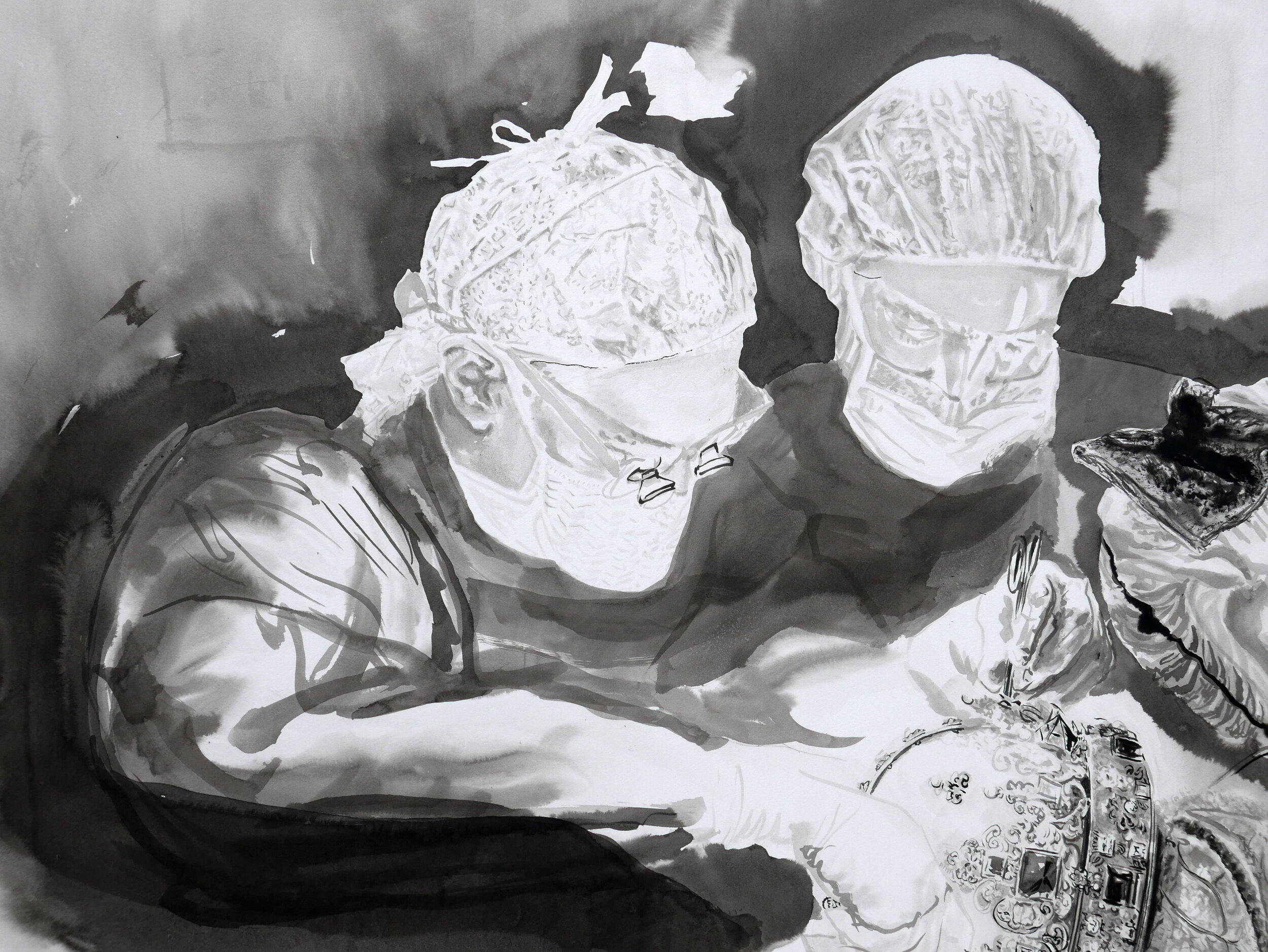
EXTRACTION (ANDREW JACKSON) 2020
Detail of extracting jewels from the crown of a would-be-king
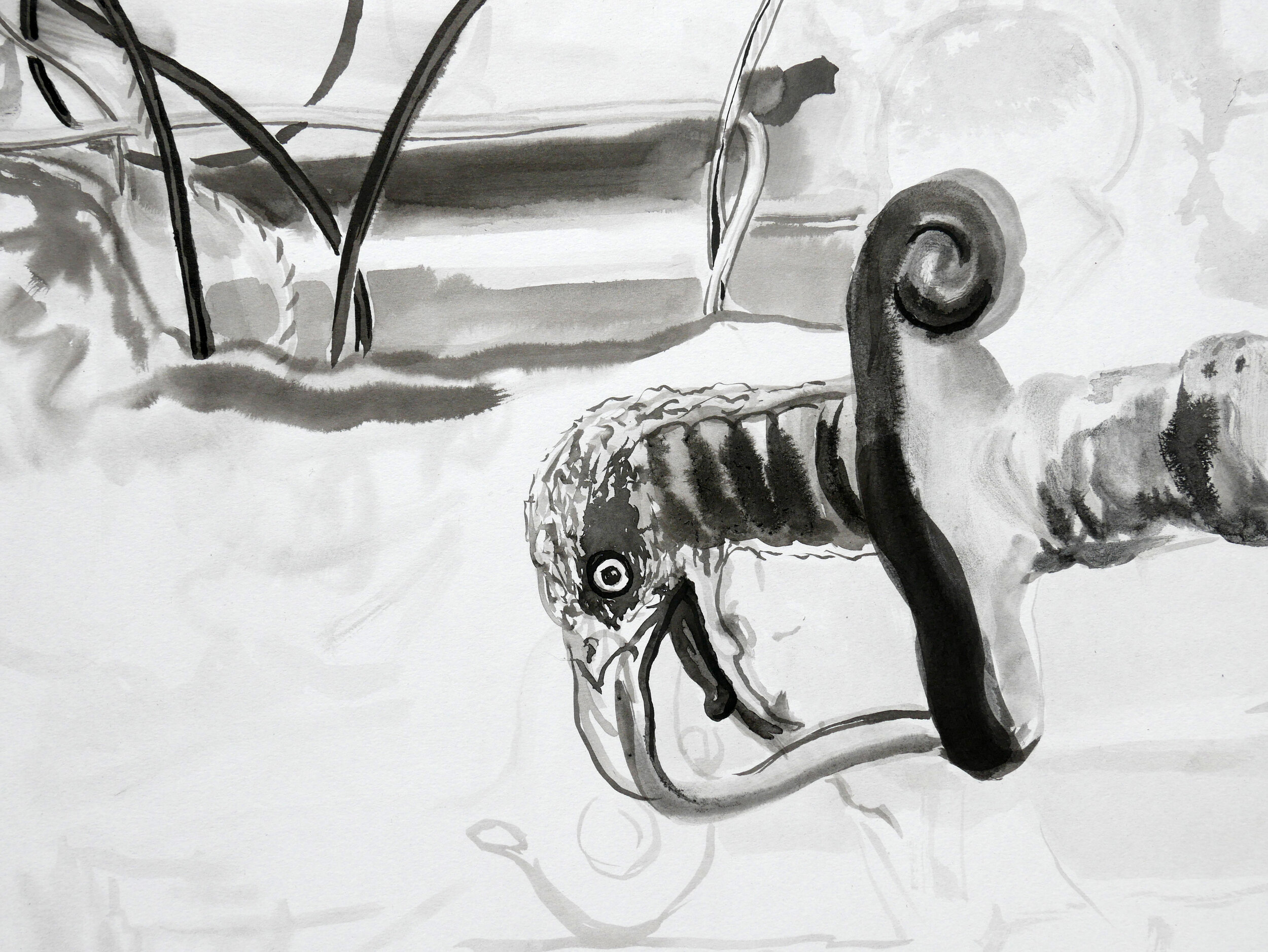
EXTRACTION (ANDREW JACKSON) 2020
Detail of eagle hilt of Jackson’s sword
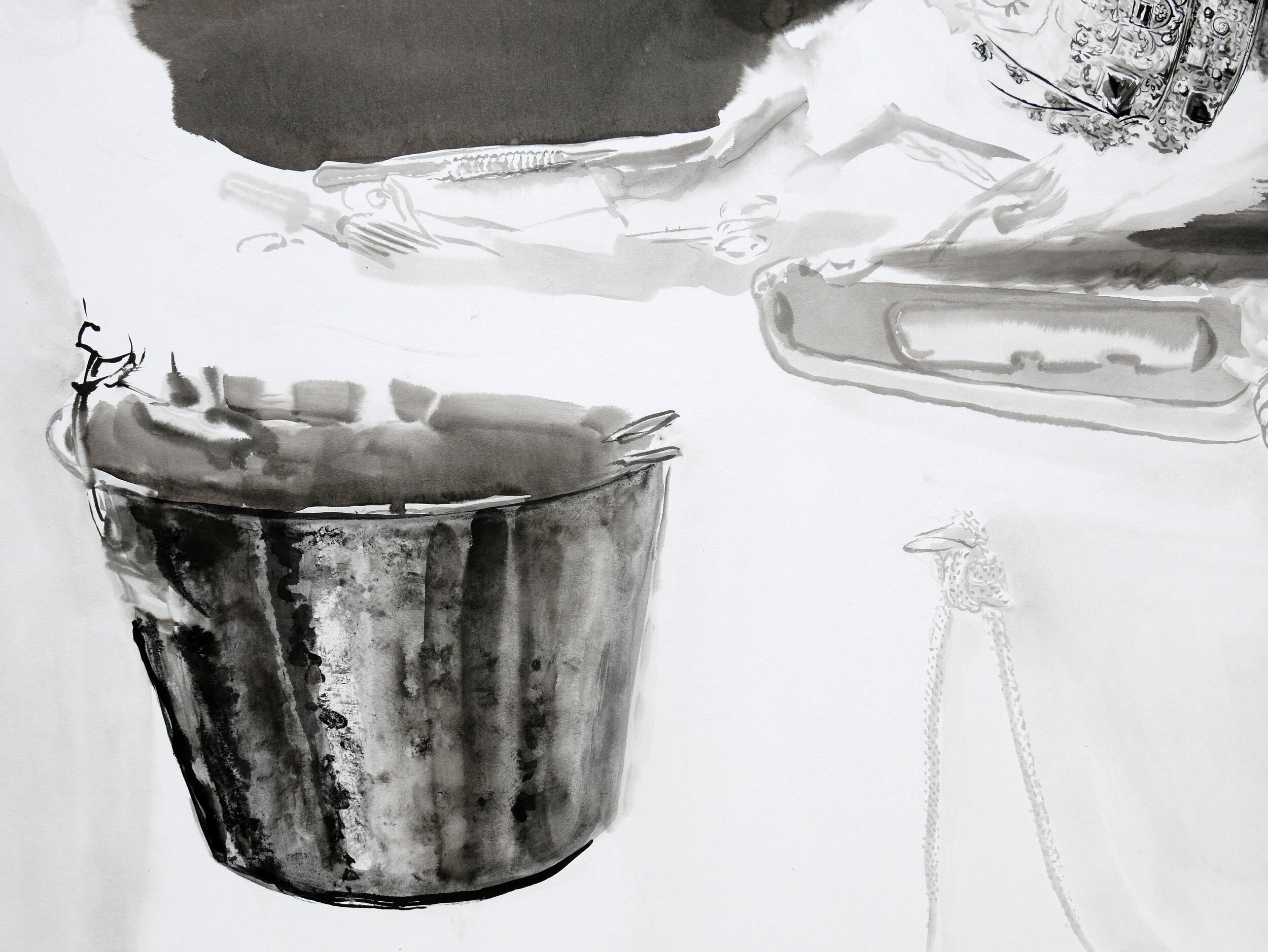
EXTRACTION (ANdREW JACKSON) 2020
Detail of pail
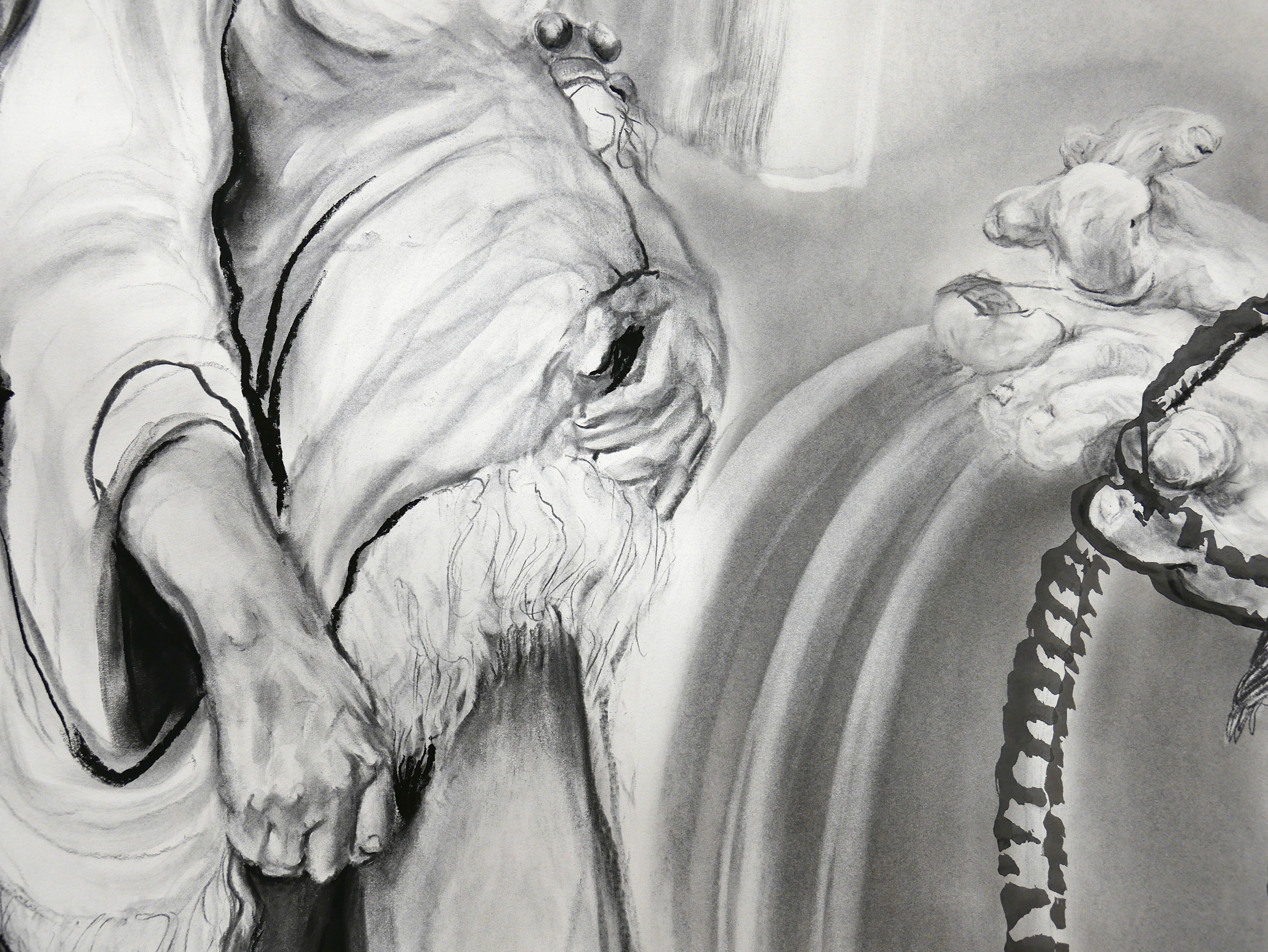
Detail of JEFFERSON MARSYAS (oven to fireplace)
A detail from one of the three depictions of Sally Hemings who appears in this work. Here she is pregnant with one of at least six children she bore by Jefferson.
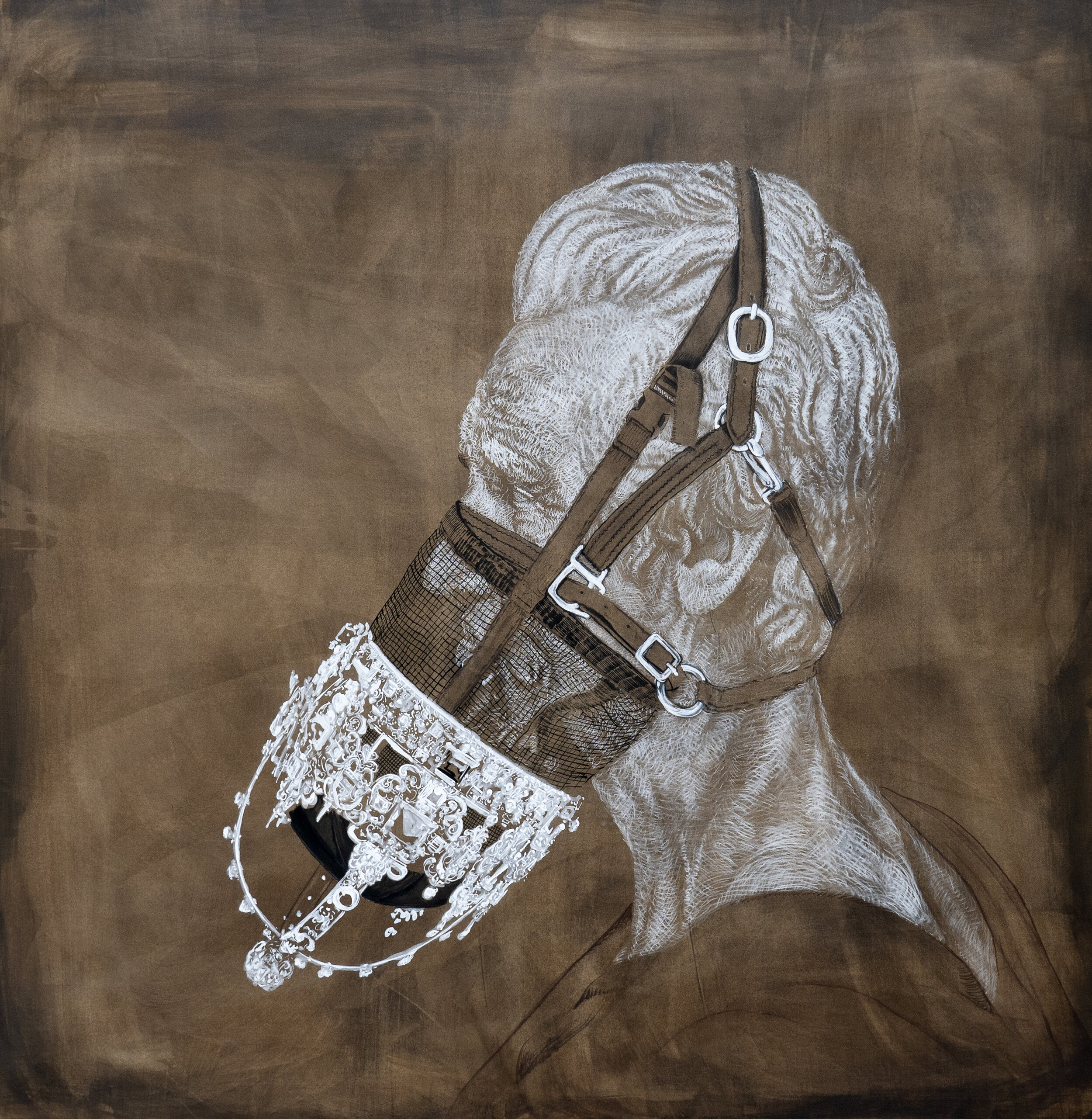
LYING MOUTH 2020
Portrait of Andrew Jackson
Distemper, gouache, conte and ink on paper,55.5 x 55.5 inches
In LYING MOUTH, Jackson is being harnessed. The crown he aspired to is converted into a horse’s feed bag. W.J.T. Mitchell’s essay, Cloning Terror, comes to mind as he writes about the “hooding of the head, and especially of the ‘head of state’ as an ideal strategy for humiliating the enemy in a war of images.” We might remember the once-powerful tyrant Saddam Hussein who was paraded before the cameras in a humiliating scene of abjection, and subjected to a public dental inspection, ostensibly to check for cyanide pills.
Jackson’s feedbag is another kind of humiliation—a just retribution.
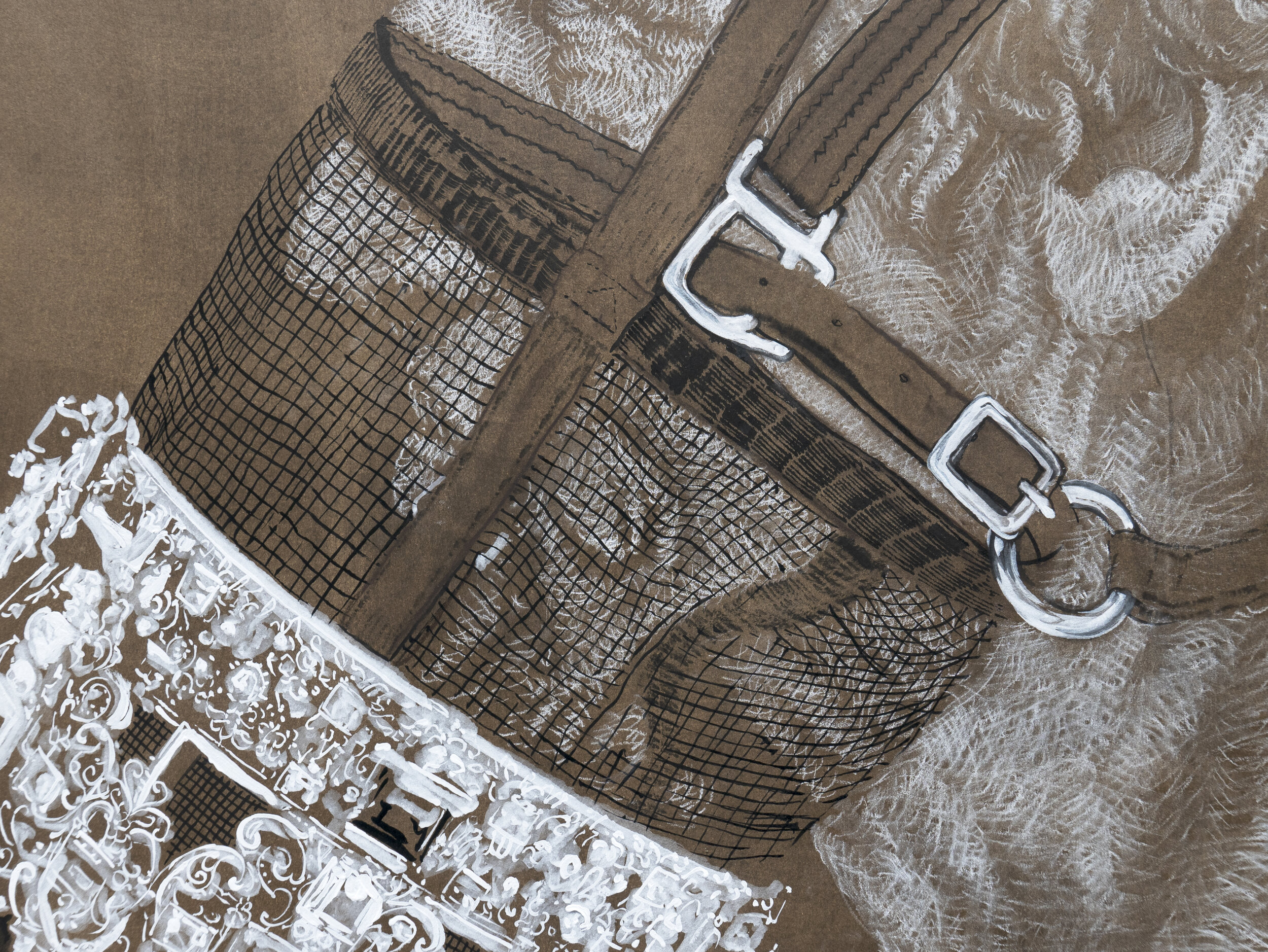
LYING MOUTH 2020
Detail of Andrew Jackson’s crown-as-feedbag
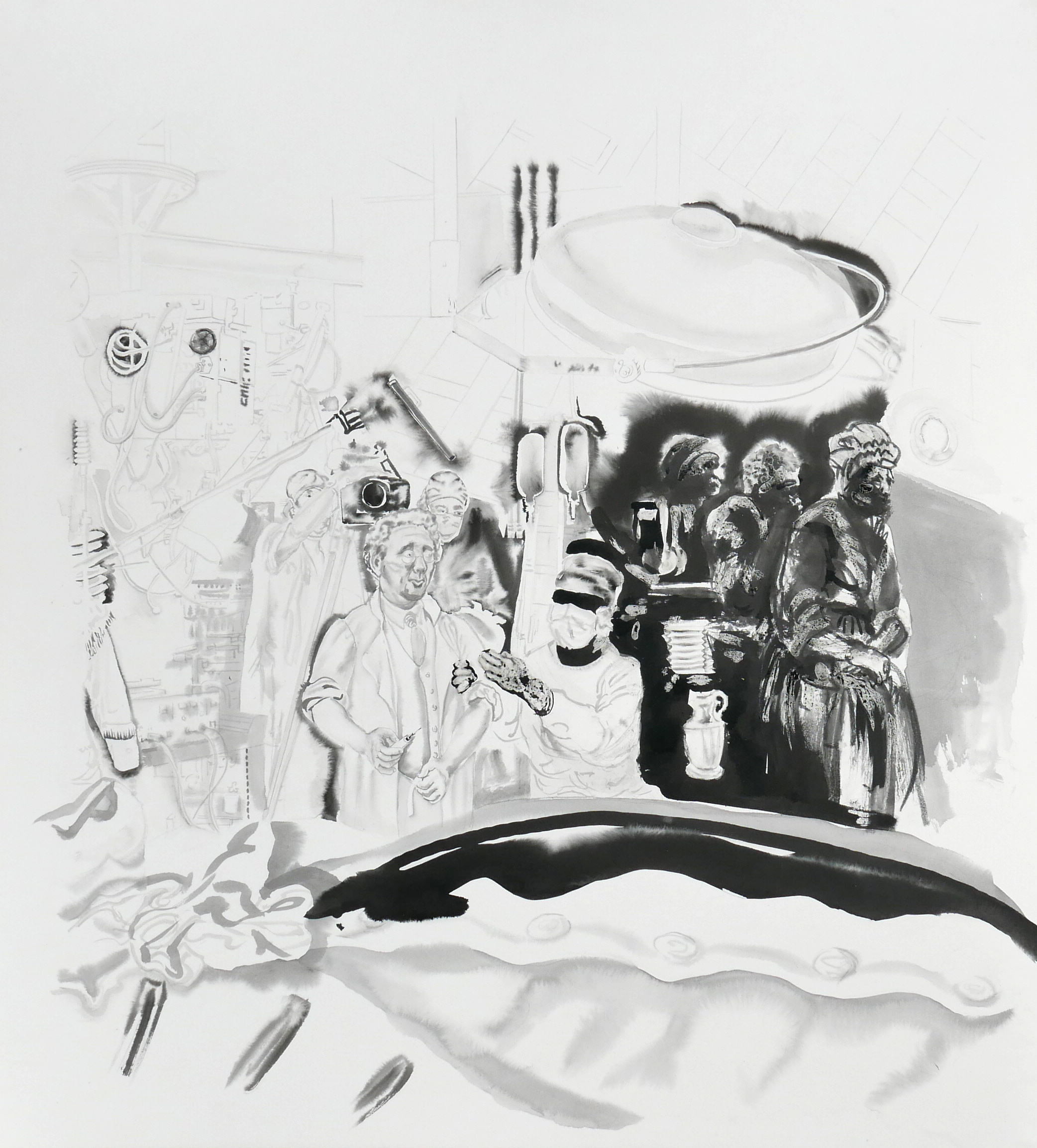
SURGEONS AND SHADES SEARCH FOR THE HEART OF GEORGE WASHINGTON 2018
Ink on paper, 38 x 42 inches
This is a study of a group of surgeons under a high intensity lamp shining on a high tech operating theater, with a news crew anxiously awaiting results while they search for George Washington’s heart.
Urologist Dr. Hans Koch, from Otto Dix’s Weimar portrait, is also attending.
Mock wailers in the background anticipate that its discovery will reveal the same payload as Bush’s search for Saddam Hussein’s weapons of mass destruction. Namely, as we all knew then, as well as now—nothing.
Celebrants here are NOT beneath Washington’s stirruped boot. One tests his reflexes or taps musically with a gavel of justice on his knee.
This study is one of several might be considered allegorical autopsies on the body of American history, myth and policy.
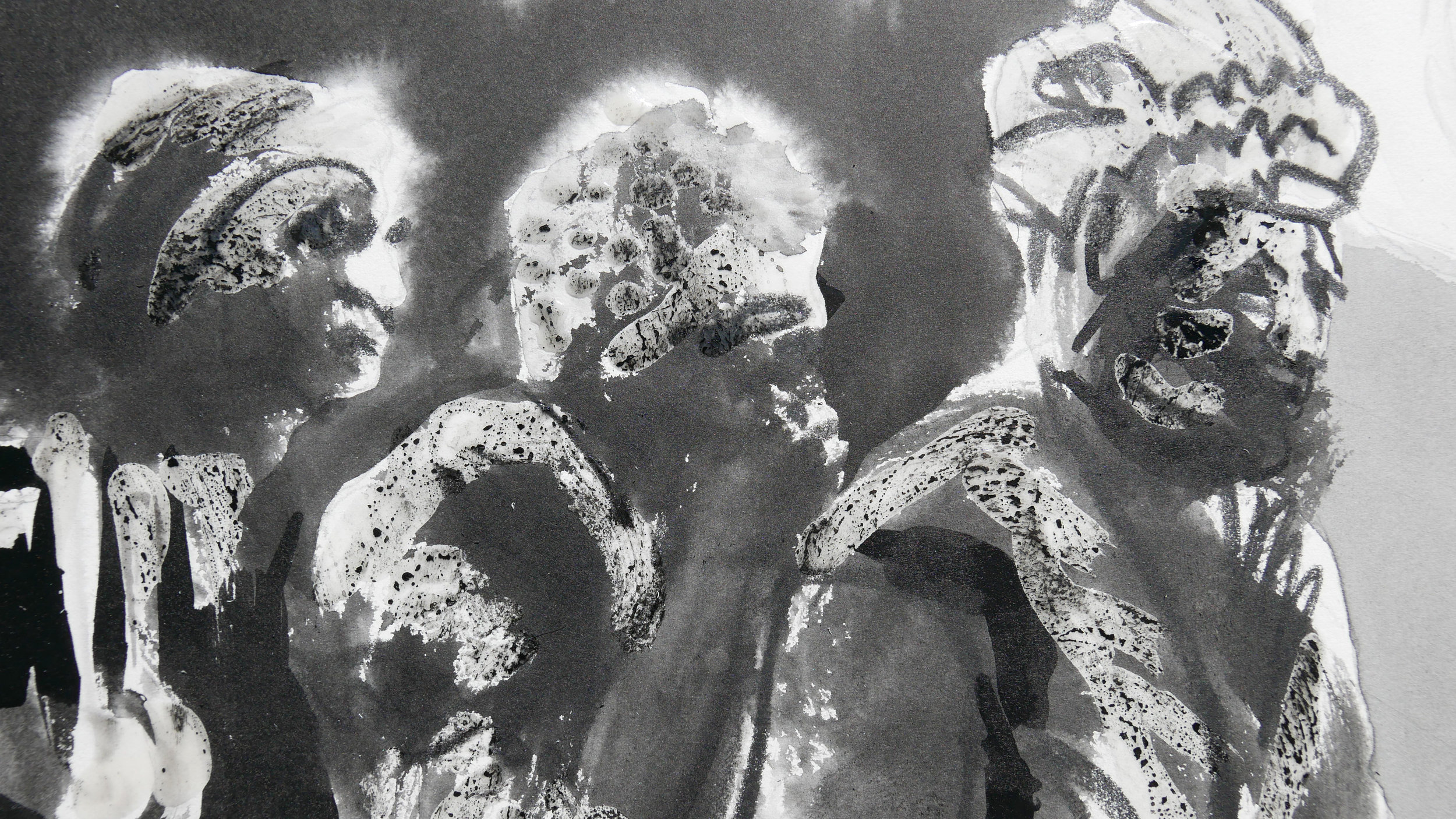
Detail SURGEONS AND SHADES SEARCH FOR THE HEART OF GEORGE WASHINGTON 2018
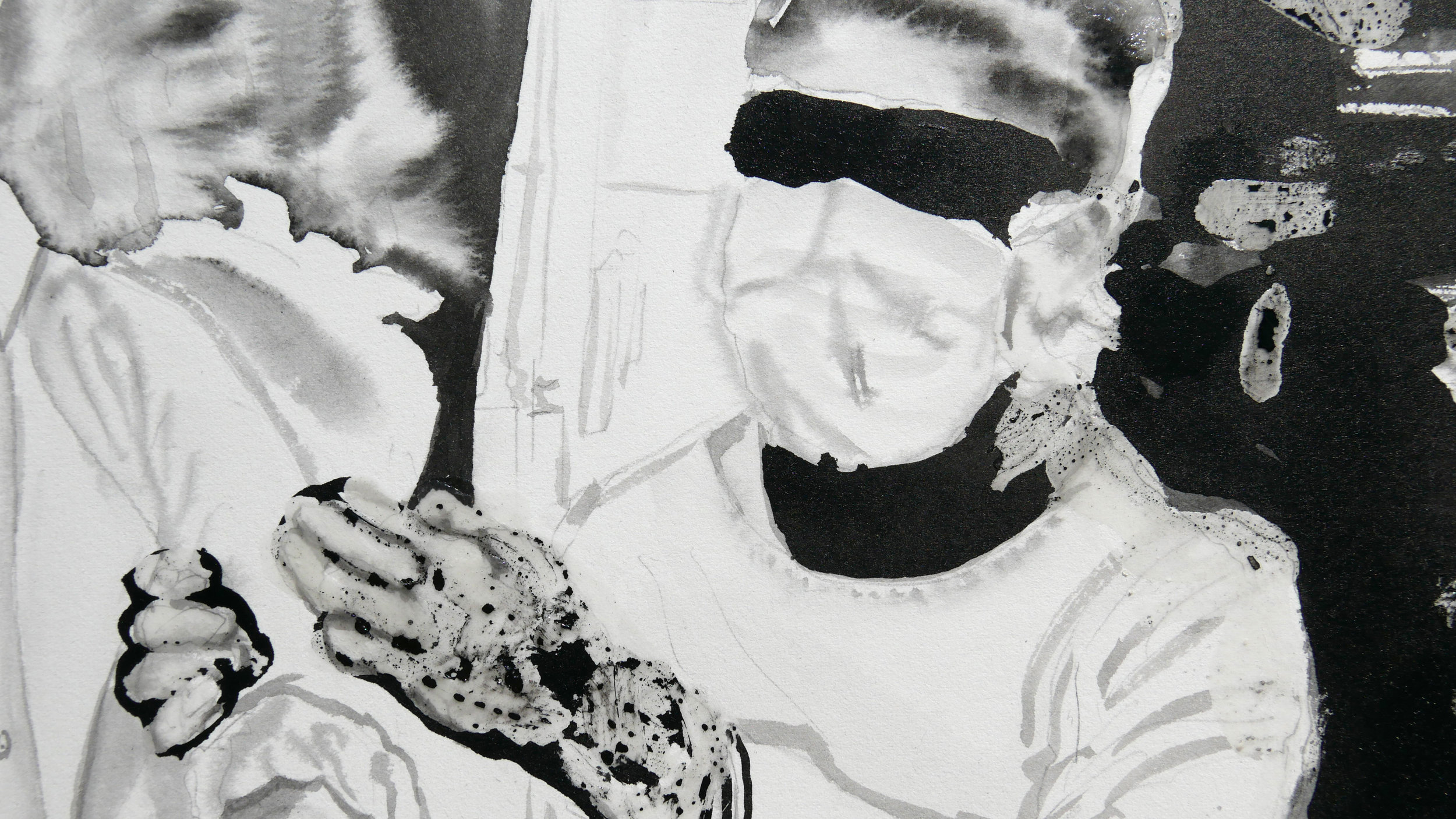
Detail SURGEONS AND SHADES SEARCH FOR THE HEART OF GEORGE WASHINGTON 2018
Detail of preparatory drawing for Flaying Father: George Washington Cardiff
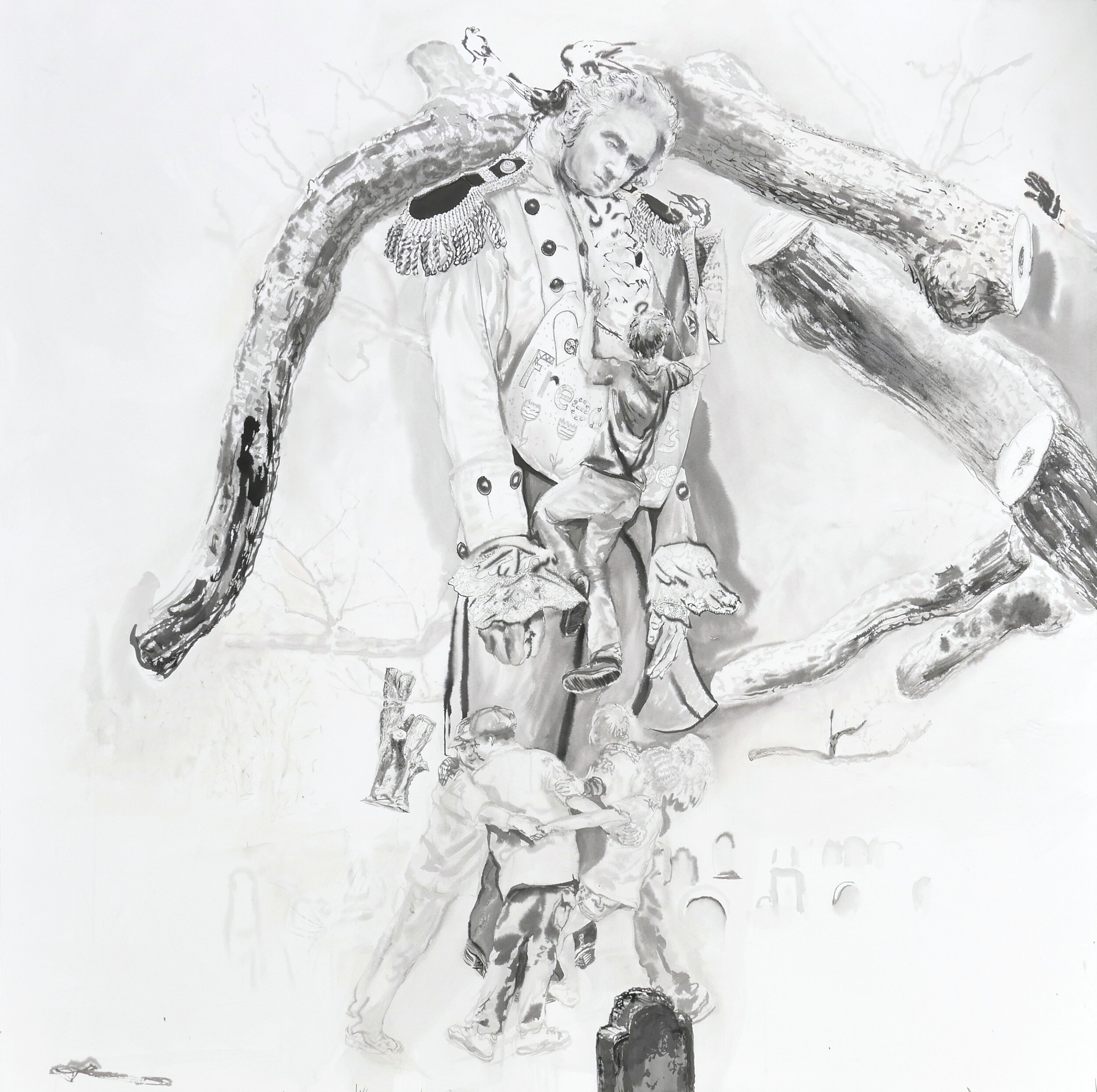
George Washington and Cherry Tree 2019
Ink on paper, 55.5 x 55.5 inches

George Washington and Cherry Tree 2019
Detail
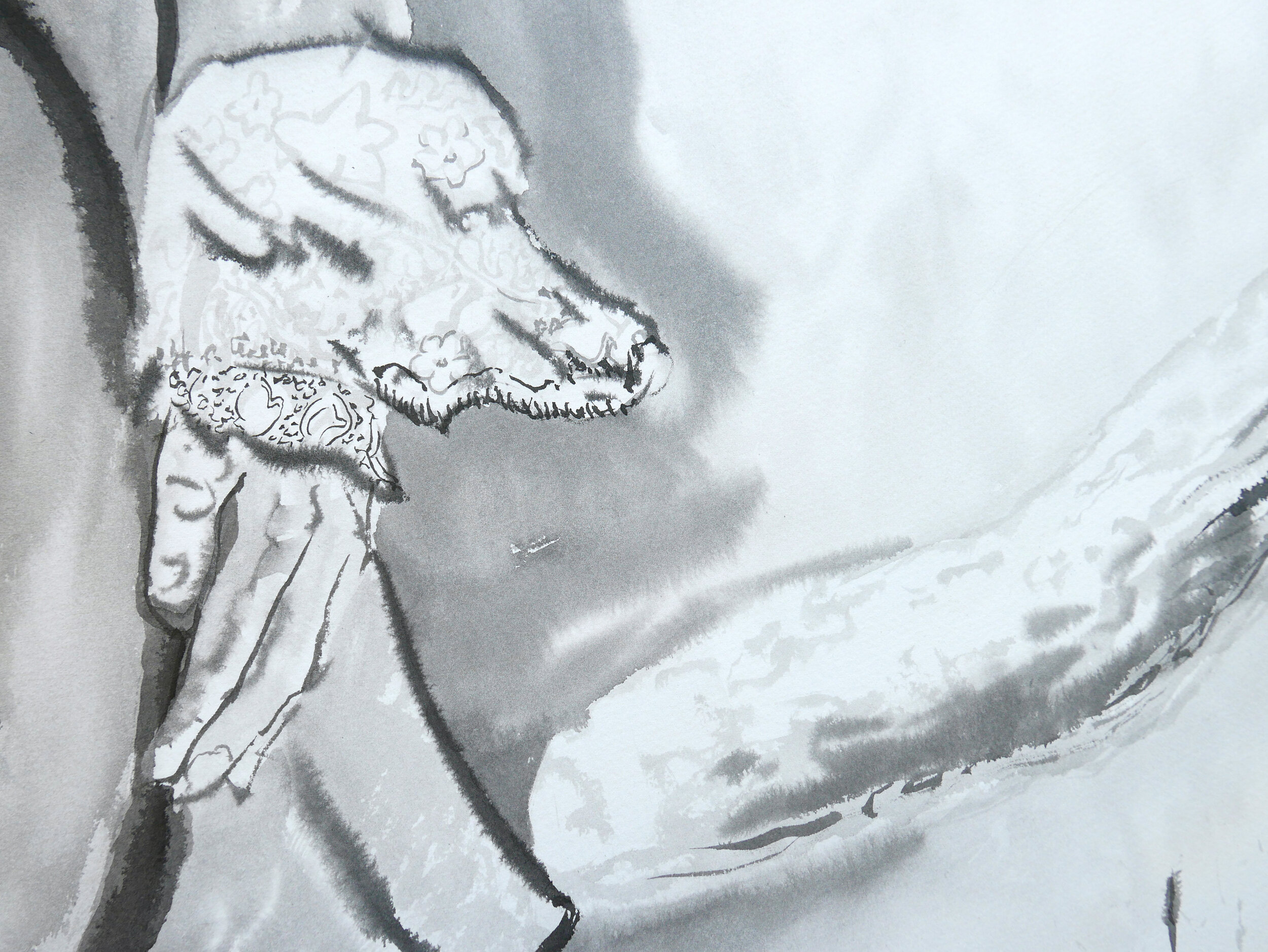
George Washington and Cherry Tree 2019
Detail
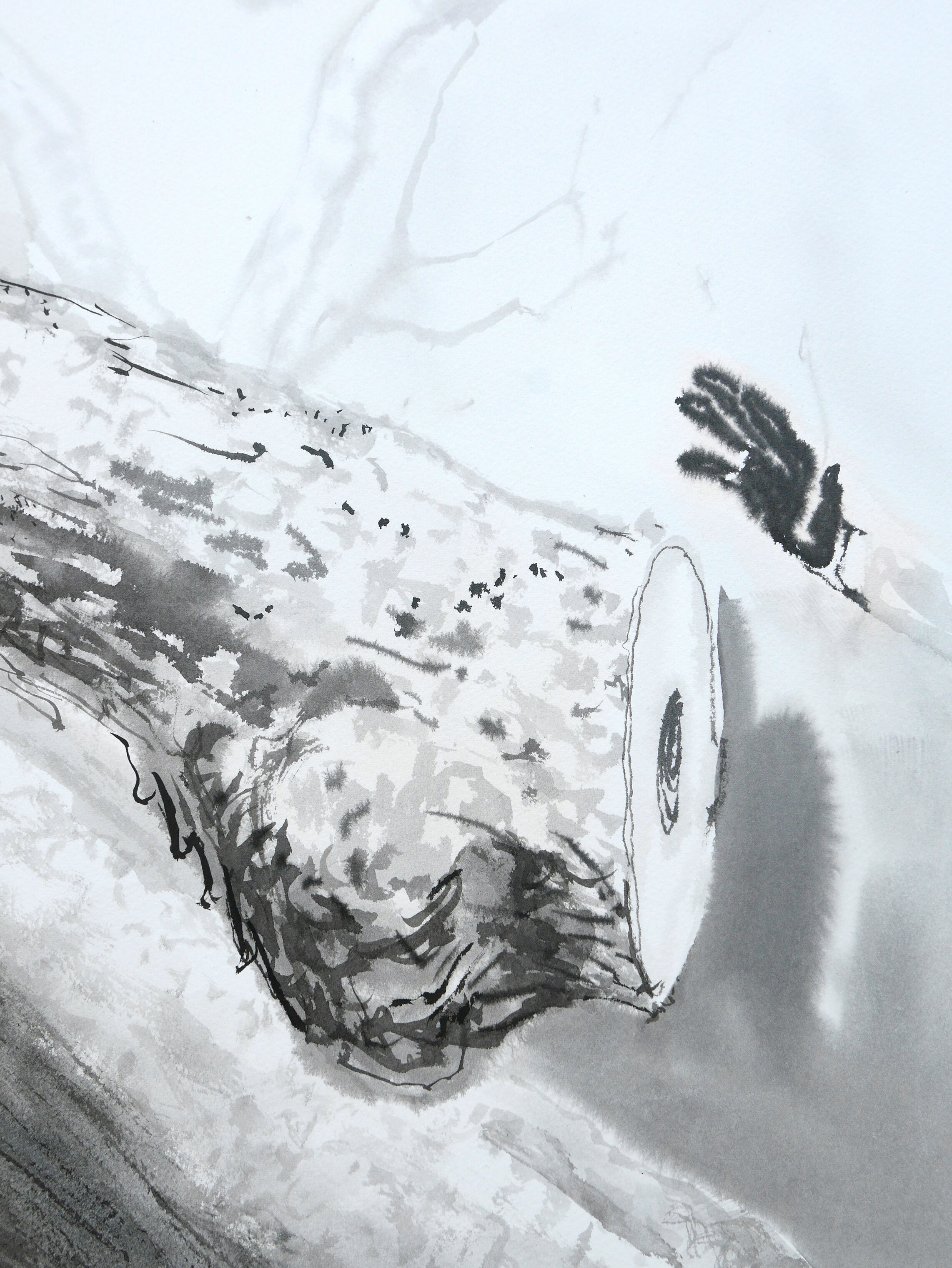
George Washington and Cherry Tree 2019
Detail

CANDLES WANT SNUFFING 2021
Ink on paper, 50 x 55 inches
Thomas Jefferson as Nosferatu
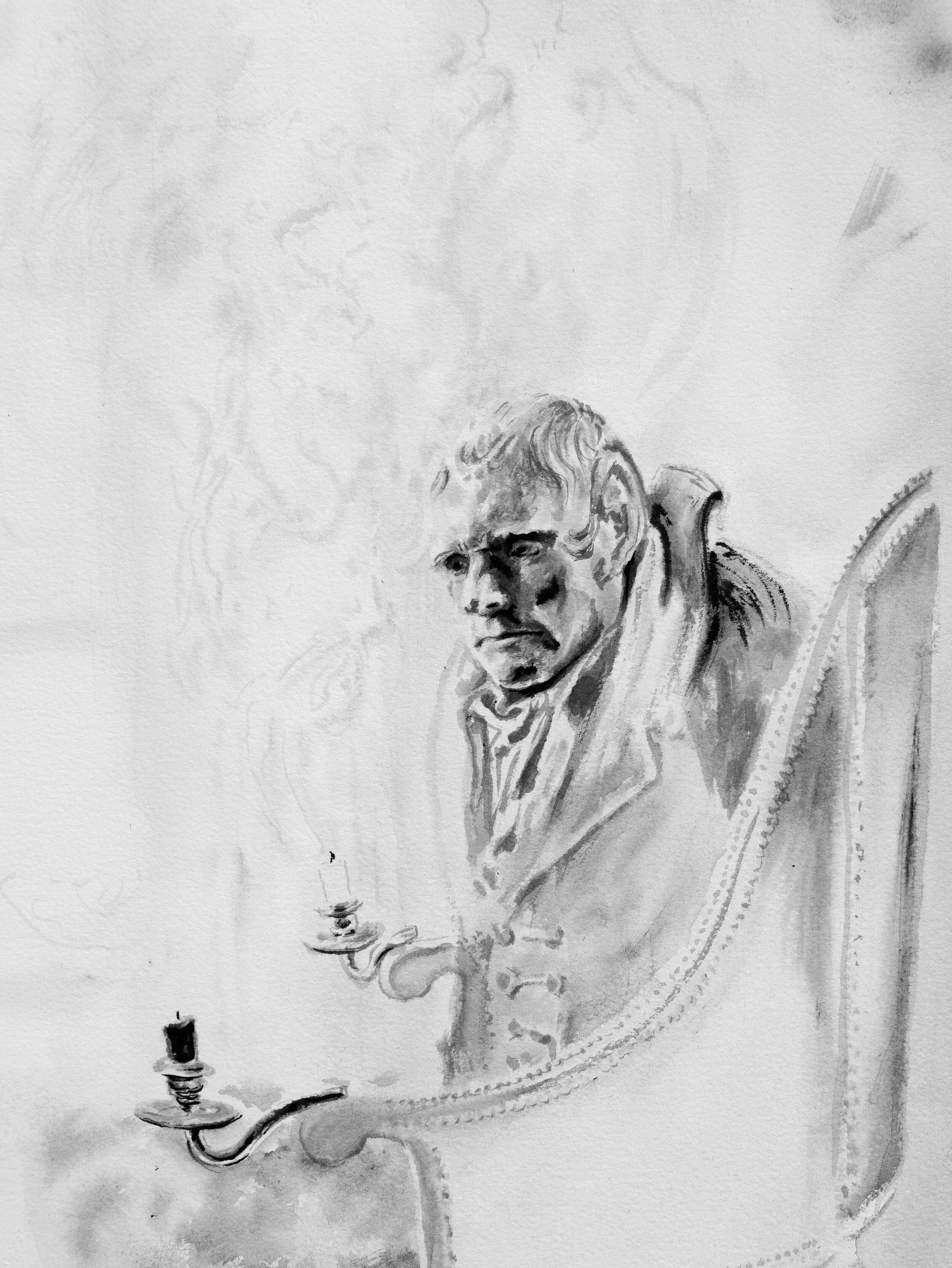
CANDLES WANT SNUFFING 2021
Detail of Thomas Jefferson as Nosferatu
Ink on paper, 50 x 55 inches
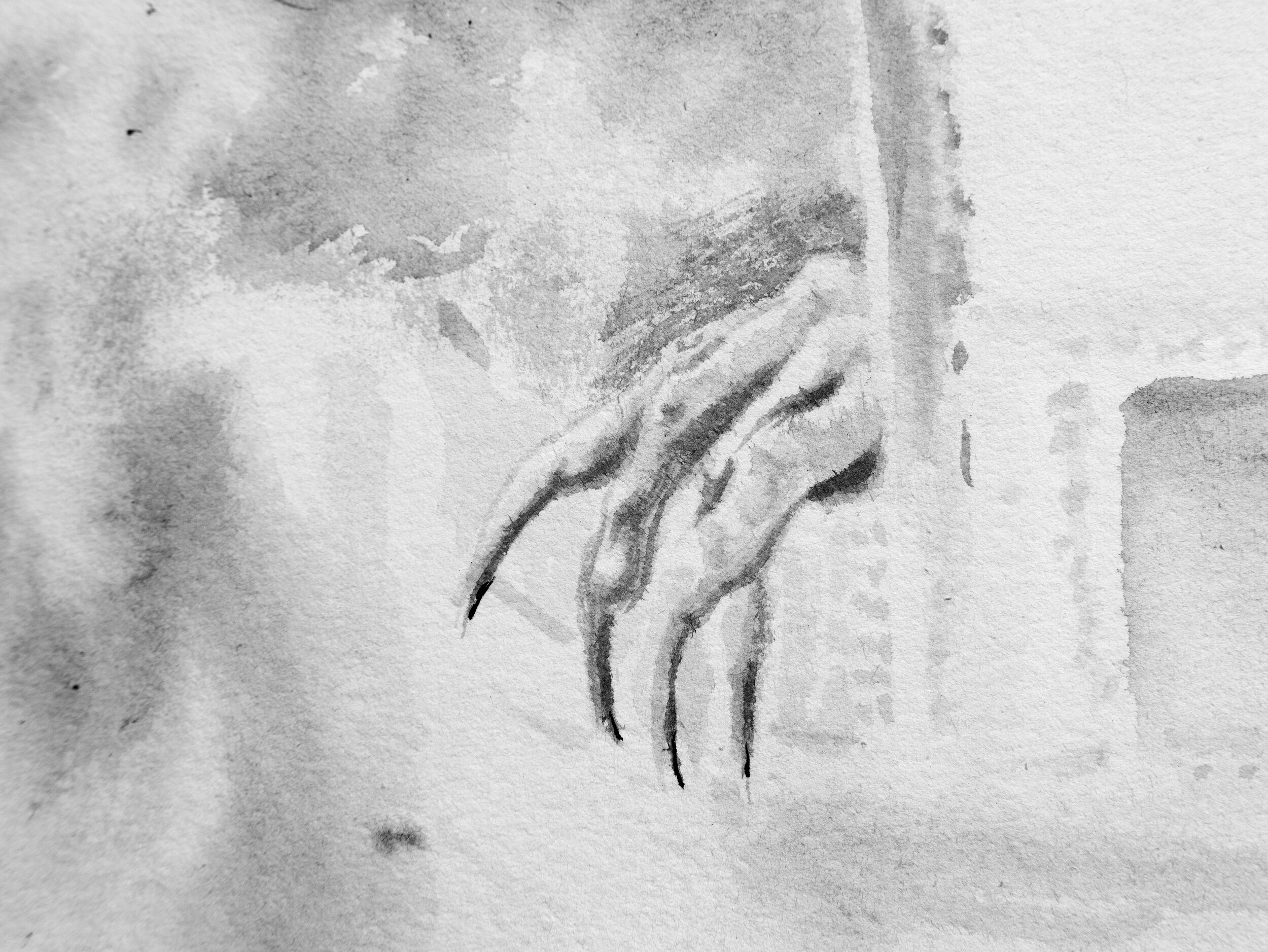
CANDLES WANT SNUFFING 2021
Ink on paper, 50 x 33 inches
Detail of Jefferson/Nosferatu hand on Burling chair
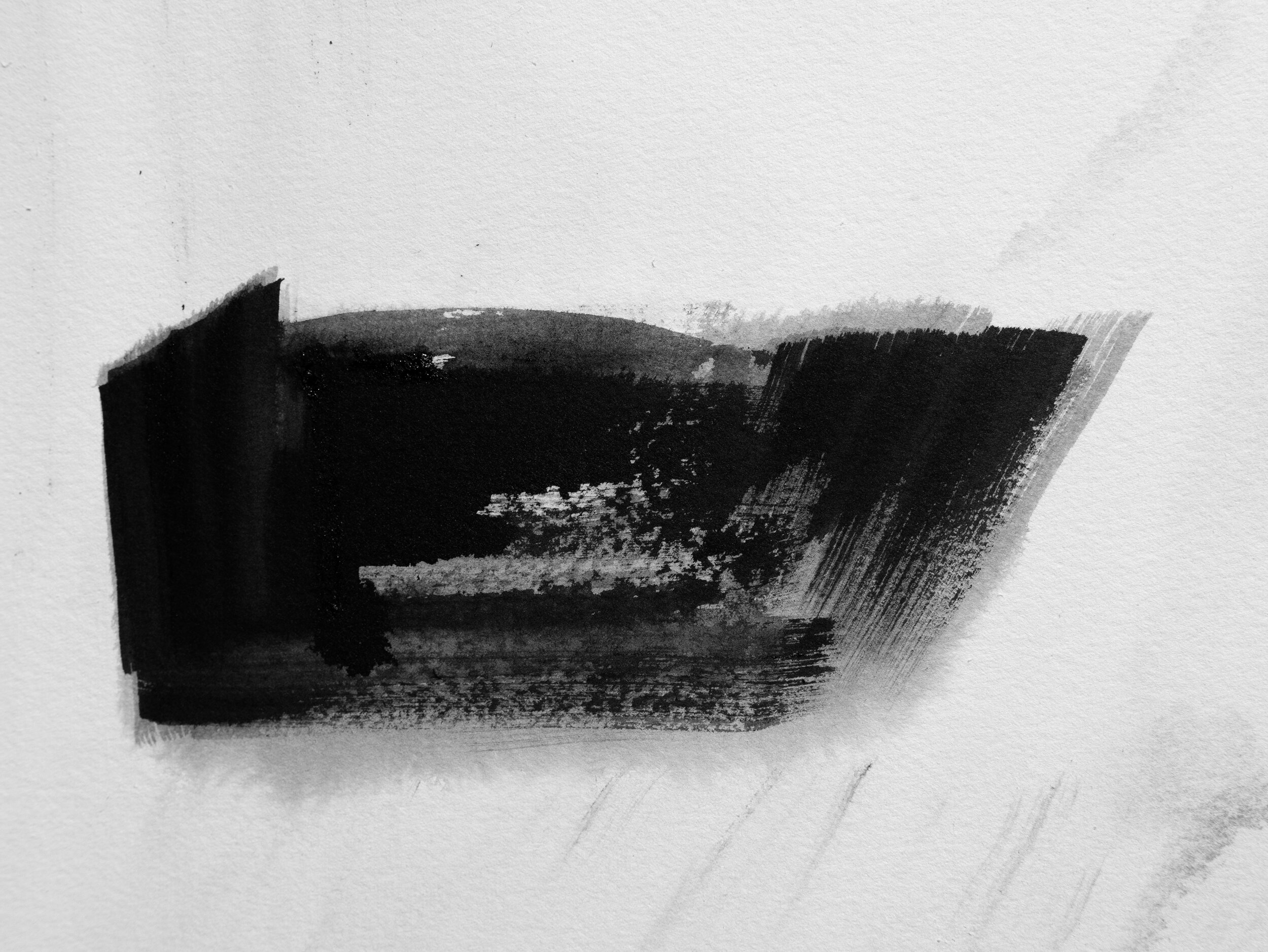
CANDLES WANT SNUFFING 2021
Detail, Ink on paper, 50 x 55 inches
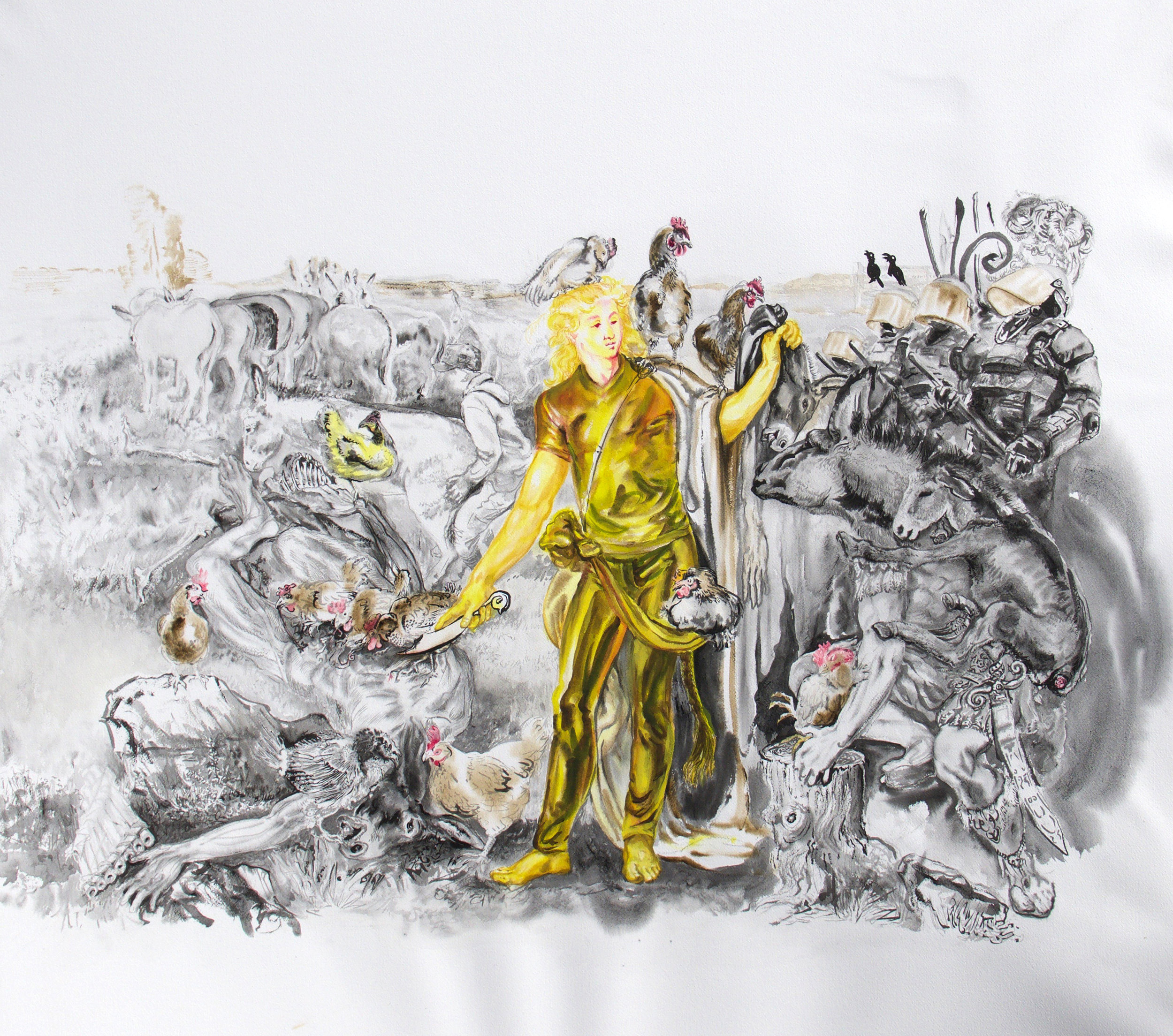
GOLDEN BOY 2018
Ink and gouache on paper
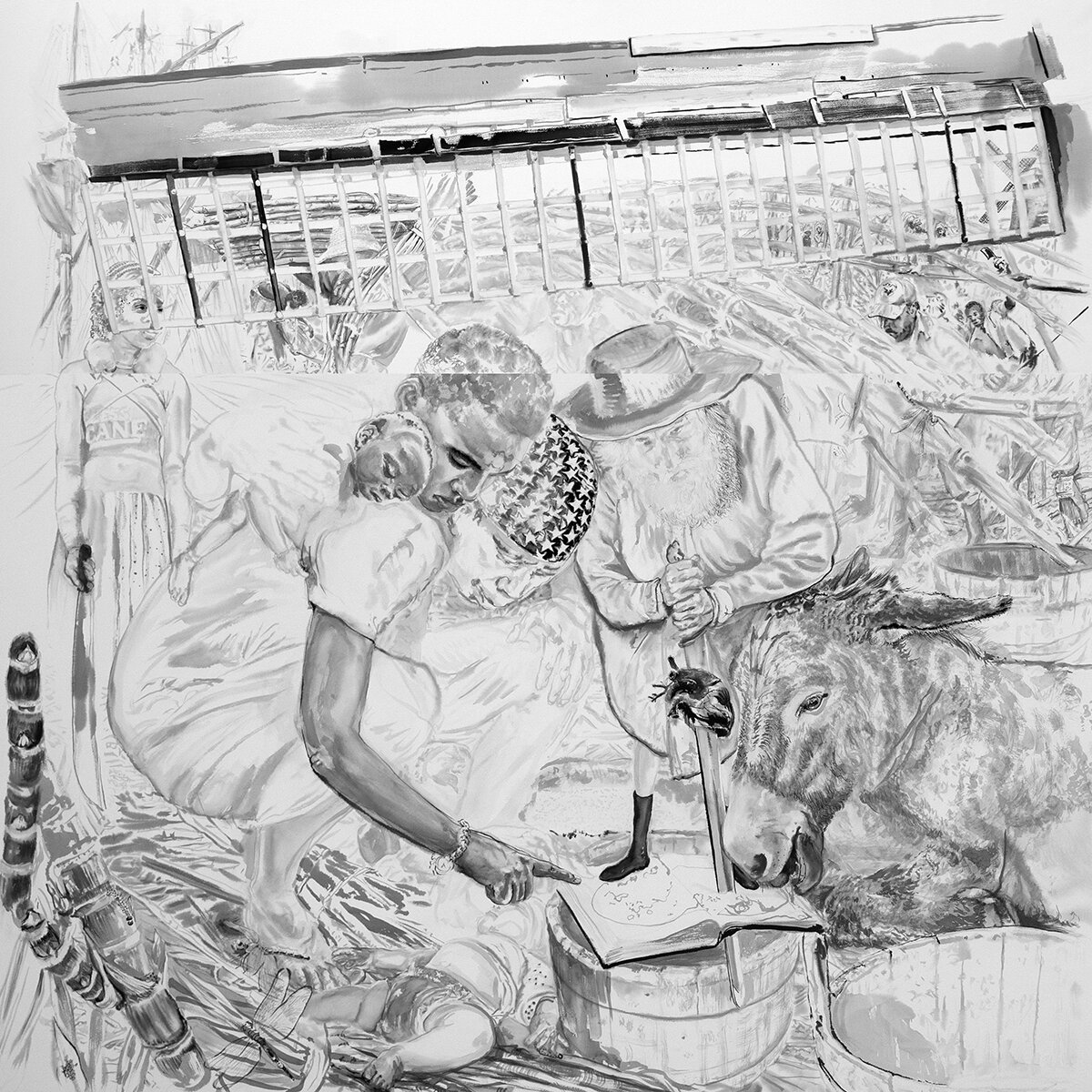
THE EDUCATION OF BENJAMIN LAY
2021, Ink on Arches, 74 x 74 inches
Benjamin Lay, a mercurial, hunchbacked, radical abolitionist dwarf, was ‘the first person to boycott slave-produced commodities. Living in Barbados, he witnessed the brutality of Britain’s first ‘black-slave society,’ and proselytized against it. Fearing the system’s corrosive influence, he left for Philadelphia where he theatrically castigated his fellow Quakers. By plunging a hidden (and forbidden) sword through a book prop to spatter fake blood, he publicly indicted their own violence as slave holders.
This work responds to the National Gallery’s portrait of Lay by Williams and West, who show an isolated hermit before his cave dwelling, living in concord with nature as an agrarian vegetarian. This historical allegory firmly placed in the present reframes its subject amidst conditions of both solidarity and resistance. Details from contemporary Barbadian sugarcane festivals mix with quotations of exploited field laborers, pointing to their origins in a pierced atlas.
Reference: Marcus Rediker, The Fearless Benjamin Lay
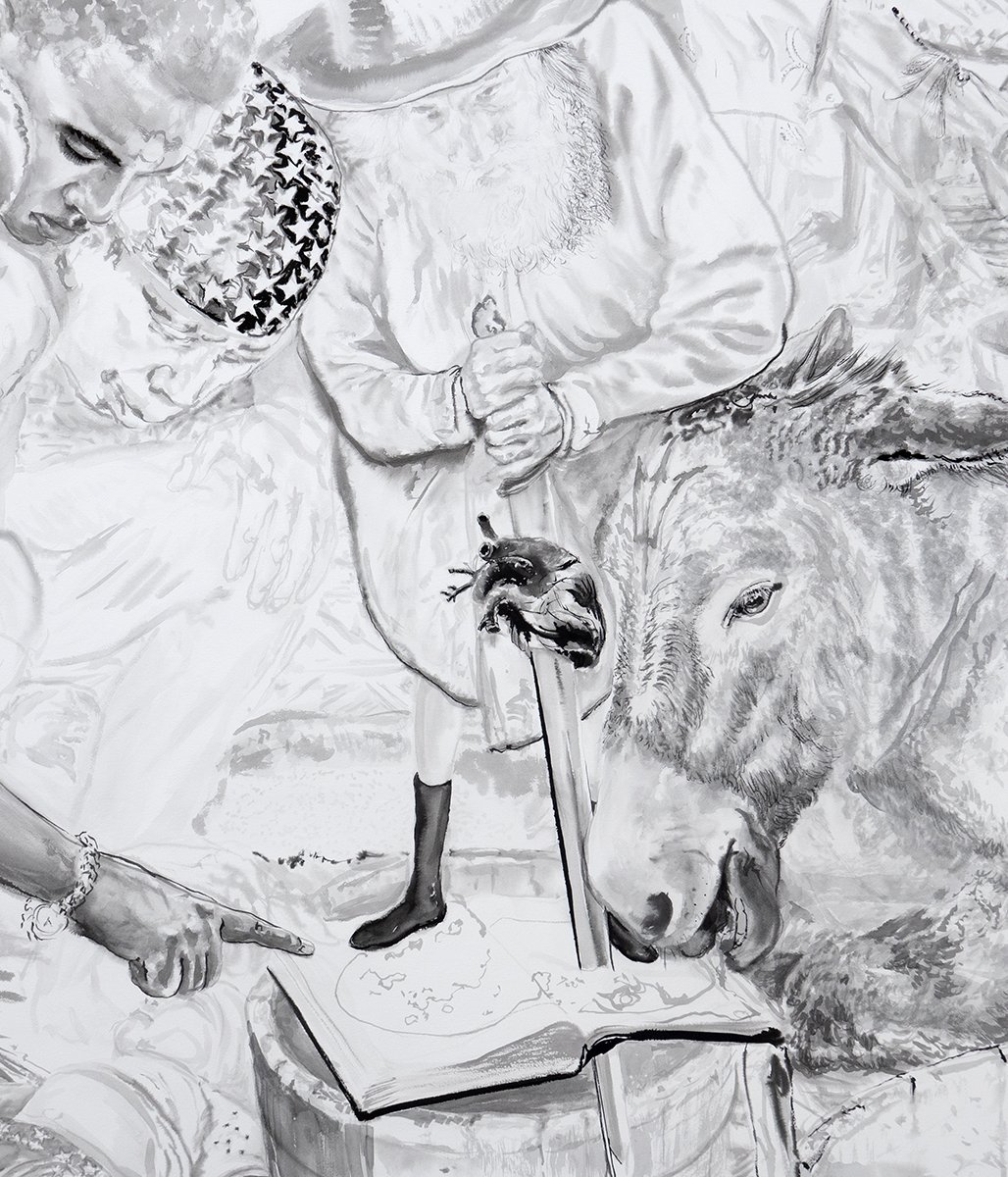
THE EDUCATION OF BENJAMIN LAY 2021
Detail of central heart
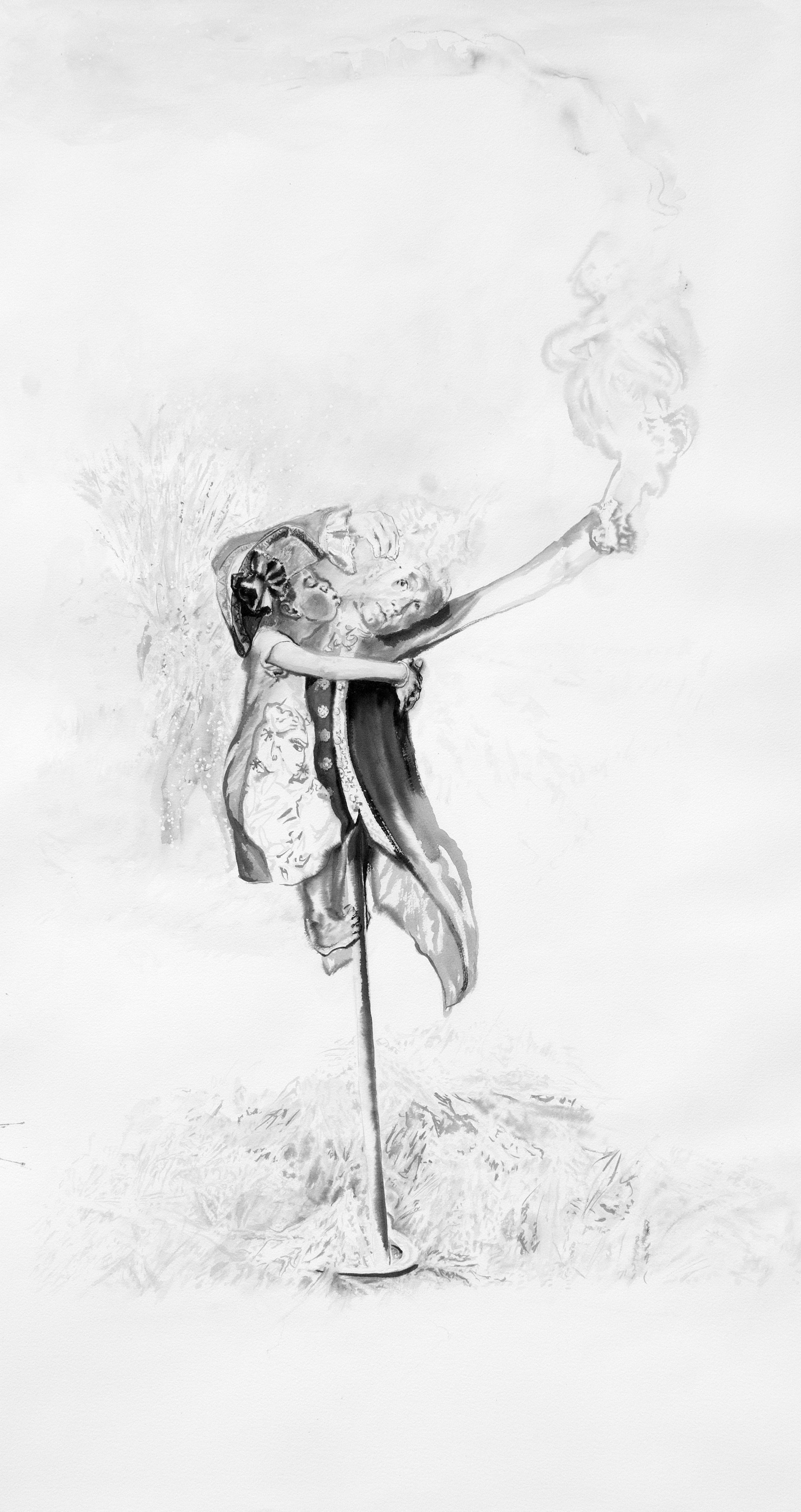
A PERFECT MATCH 2021
Ink on paper, 49.25 x 26.25 inches
James Monroe as a burning effigy with allusions to the Scarecrow from The Wizard of Oz.
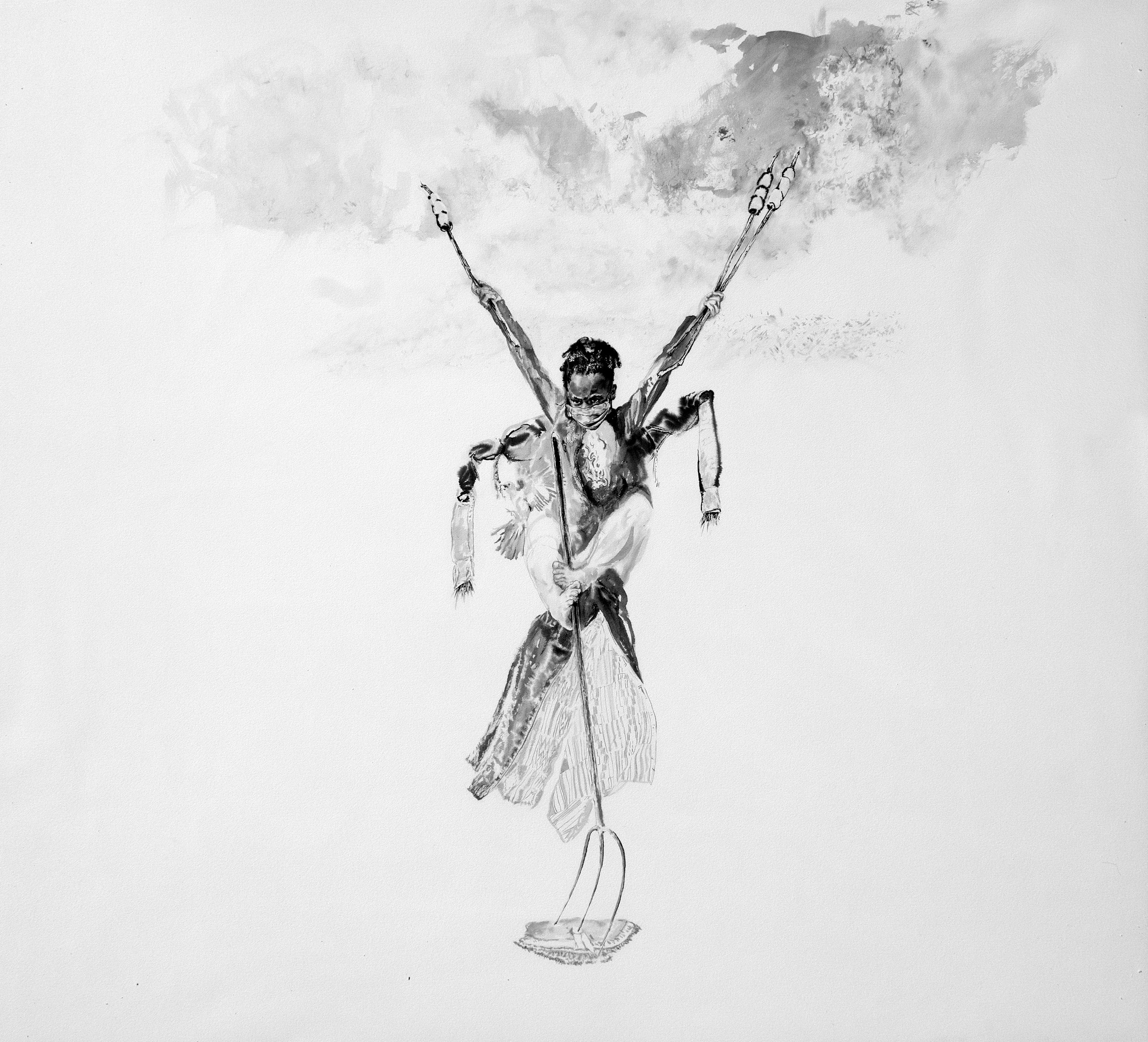
HARBINGER 2021
Ink on paper, 50.25 x 53.25 inches
James Monroe, with allusions to the Scarecrow from The Wizard of Oz.